Planetary scientists have published a detailed follow-up on the debris from their historic 2022 asteroid impact experiment in outer space. What they found challenges their understanding of the asteroid's behavior since the impact. Two tight clusters of boulders have veered off from the main zone of debris at very high velocities.
Those boulders have escaped the asteroid system and are now orbiting the Sun. It's unclear where on the asteroid they came from, why they're moving so differently from the rest of the debris, or what they mean for the long-term course of the asteroid.
A historic asteroid deflection test
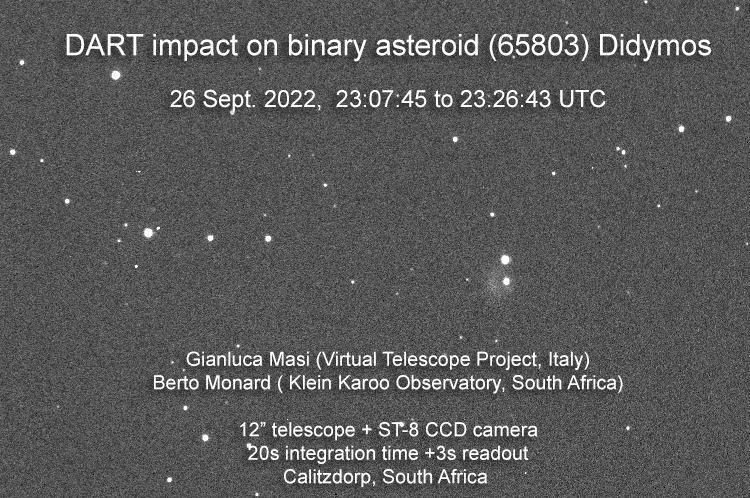
In 2022, NASA live-streamed one of the most daring missions in its history. The Double Asteroid Redirection Test, or DART, sought to change the orbit of an asteroid by slamming into it with a spacecraft. The challenge was enormous. The size of the target asteroid -- named Dimorphos -- in the night sky is akin to a single atom held at arm's length.
The team behind DART knew they might be live-streaming their spacecraft missing the asteroid. But in an era of misinformation, conspiracy theories, and apocalyptic panic, they wanted the public to have transparency every step of the way.
Their gamble paid off. The DART spacecraft knocked smack into Dimorphos. NASA proved that in the event that a killer asteroid is heading towards Earth, we can knock it out of the way.
Strange boulders

DART was proof to the public that planetary scientists can keep them safe, but first and foremost, it was a scientific experiment. Simulating asteroid impacts on a computer doesn't compare to the real thing, especially when there are so many things about asteroids we don't know. They can be as chemically and topologically variable as terrestrial geology, and their tiny size makes observing them challenging.
So, to protect Earth from a hazardous asteroid, planetary scientists have mined every aspect of the DART mission for pieces of the puzzle. The new boulder tracking study, published this month in the Planetary Science Journal, uses images taken by an ESA spacecraft called LICIACube that accompanied DART.
The researchers found that two main groups of boulders veered off from Dimorphos in the minutes after impact. Many of them aren't following the main cloud of debris, and have such high velocities that they can escape the asteroid system.
The team's top theory is that these boulders are the fractured remnants of larger rock formations right next to the impact site. Since they were already loose, the spacecraft easily dislodged them before reducing them to smithereens.
Boulders mean orbital calculations might be off
None of these boulders is anywhere near large enough to threaten life on Earth. If they happened to head towards us, they would vaporize upon atmospheric entry, treating us to a spectacular meteor shower. But they are massive enough that, without accounting for them, planetary scientists may have been miscalculating Dimorphos' new orbit.
The theory of rubble and impacts has to catch up to the observations. How can we predict what kinds of debris will form from striking an asteroid? How much momentum do boulders account for? How do we figure out how boulder-prone an asteroid is before we get there? We need to understand all of this so we don't miscalculate how to strike an asteroid.
DART means that we get to figure this out now, rather than when the Earth is on the line.
The international team of astrophysicists behind the world's three gravitational wave detectors just submitted a paper analyzing a uniquely strong gravitational wave from 2023. Caused by merging black holes, this gravitational wave is unusual for more than just its strength. The team's best models suggest that at least one, if not both, of the black holes shouldn't exist.

The black hole "mass gap"
Most large black holes are created when massive stars jettison their outer layers. The iron core, no longer supported against gravity, collapses in on itself and forms a black hole. But this kind of supernova only works for stars up to about 130 times the mass of the Sun.
Above that, astronomers theorize that a new type of supernova takes over. The light the star generates in its core doesn't manage to exit the star itself. Instead, many of the photons are so energetic that they create extra particles when they hit atoms at the right angle. That means that the pressure of light holding up the star vanishes. With its only defense against gravity gone, the star begins to collapse, triggering a massive thermonuclear explosion that vaporizes it entirely. Nothing remains, not even a black hole.
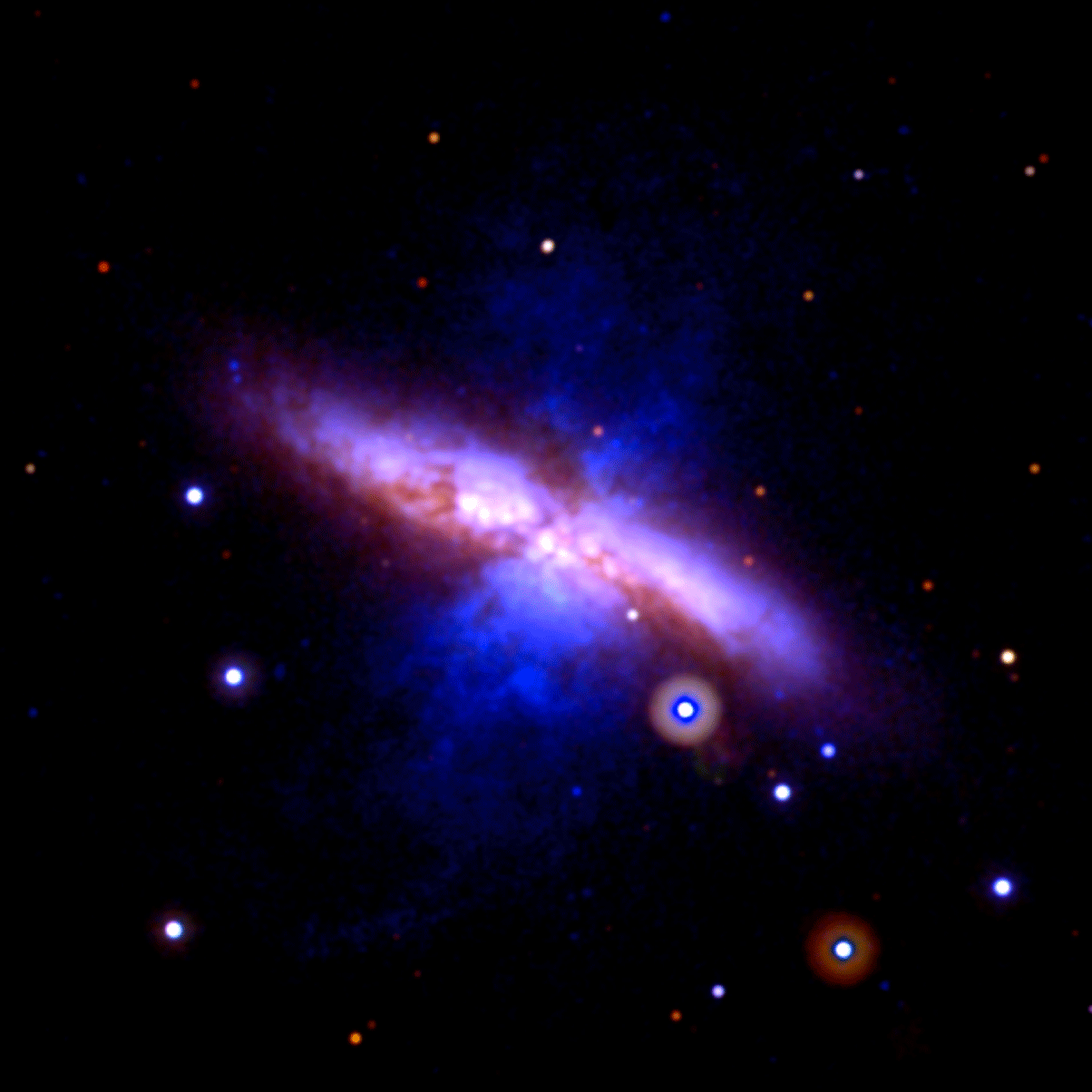
Astronomers have yet to confirm this kind of "pair instability supernova" actually exists, although simulations suggest it does. There are also several candidate pair instability supernovae observations, but further study is needed to confirm them. On balance, though, pair instability supernovae are a well-supported theory of stellar evolution. They imply that stars can't create black holes above 64 times the mass of the Sun and below about 130 times the mass of the Sun. After that, a new kind of supernova takes over and can produce black holes once more.
But the best models of the 2023 gravitational wave predict two black holes of 103 and 137 times the mass of the sun. The error bars on these measurements are sizable, but still place the lighter black hole firmly in the mass gap, while the heavier one is either in or above it.
These are also the heaviest reliable black hole measurements to come out of the LIGO collaboration.
Spinning black holes create gravitational waves
Gravitational waves occur when massive objects accelerate, rippling spacetime in their path. Black holes spinning together in the final moments before their collision create the most powerful gravitational waves.
Earth-bound systems of lasers, able to detect changes in distance of only 1/10,000th the size of a proton, go after this class. The Laser Interferometer Gravitational-Wave Observatory (LIGO) detected its first gravitational wave in 2015, finally confirming their existence.

The many possibilities for formation
The research team found one other clue to the history of this strange black hole system. Each of the black holes is spinning much faster than usual. Any explanation for how this system formed has to explain that as well.
It's possible that there are toggles on stellar evolution, such as exact nuclear reaction rates at high densities, that change the range of the mass gap. But that doesn't explain the high spin rates. The theory of two stars combining to create each black hole has the same issue.
One explanation that accounts for the spin rates is that one or both of the black holes are the remnants of previous black hole mergers, rather than a collapsing star. Although this requires exotic star cluster conditions, the universe is filled with those. (The research team favors this explanation.)
The colliding objects could also be primordial black holes, a predicted population of black holes formed during the dense stages of the early universe. Primordial black holes don't have any mass gaps, but they are also far more theoretical than pair instability supernovae.
In 2035, the European Space Agency plans to launch the Laser Interferometer Space Antenna, or LISA. LISA will probe a different regime of gravitational waves from the Earth-based detectors like LIGO. In doing so, it will add a host of strange new black holes to the canon.

An otherworldly treasure is heading to the auction house this month. A massive piece of Martian rock will be sold at Sotheby’s, and experts think it will fetch millions.
Officially named Northwest Africa 16788 (or NWA 16788), it is the largest Martian meteorite ever discovered on Earth. We have only found 400 meteorites from Mars, and most are just small fragments. This weighs in at nearly 25 kilograms, which is 70% larger than the next biggest piece of Mars that has landed on our planet.
Researchers are unsure when it crashed into Earth, but it was found in the Agadez region of Niger, in the Sahara Desert in November 2023. It is believed to have broken off the Martian surface in a violent asteroid impact before drifting through space and eventually crashing onto our planet.

Research shows that the meteorite contains a large amount of magnesium and iron-rich crystals, and that some minerals within it have turned into glass. This is likely due to the original force of the asteroid impact and its subsequent journey through our atmosphere.
A $4 million rock?
Sotheby’s in New York will auction the meteorite on July 16, and it could make history. Experts estimate that it could sell for between $2 million and $4 million, potentially setting a new world record for a meteorite sold at auction.
“NWA 16788 is a discovery of extraordinary significance — the largest Martian meteorite ever found on Earth, and the most valuable of its kind ever offered at auction,” said Cassandra Hatton, vice chairman of science and natural history at Sotheby’s. "Weathered by its journey through space and time, its immense size and unmistakable red color set it apart as a once-in-a-generation find. This remarkable meteorite provides a tangible connection to the red planet."
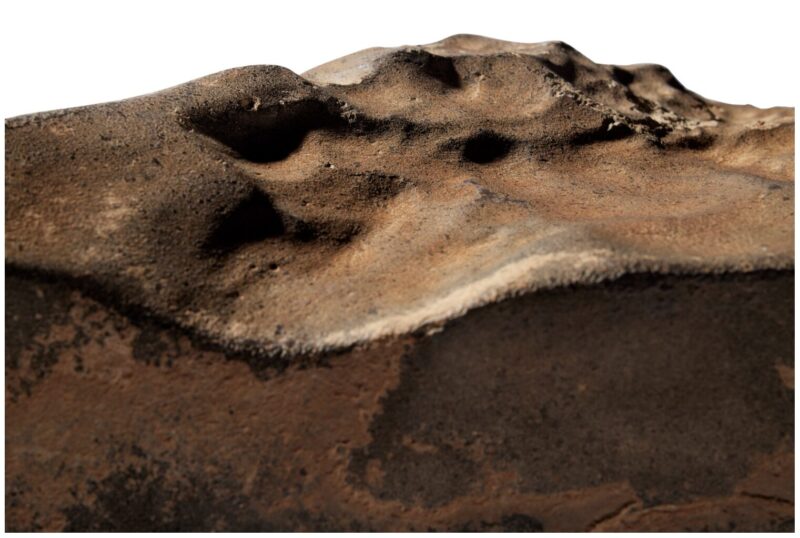
The auction has also sparked debate. Some scientists worry that if the rock ends up in a private collection, its scientific value will be lost. Paleontologist Steve Brusatte expressed disappointment over the prospect, saying it would be a shame if the meteorite “disappeared into the vault of an oligarch” rather than being preserved in a public museum.
On the other hand, some experts are hopeful that a new owner could collaborate with researchers to unlock more secrets from Mars. Julia Cartwright, a planetary scientist at the University of Leicester, noted that “the scientific interest will remain,” regardless of who ends up buying it.
Before it’s sold to the highest bidder, NWA 16788 will be on public display at Sotheby’s from July 8 to July 15, giving space lovers and curious onlookers a rare chance to stand face to face with a real piece of Mars.
Yesterday, the ATLAS telescope identified a potential interstellar interloper. The memorably named A11pl3Z (kidding) is currently zooming toward the Sun. Right now, it's about the same distance from the Sun as Jupiter is. But the strange angle of its approach suggests it may be coming from interstellar space.
If confirmed, it would be only the third identified interstellar small body.
Small bodies encompass everything from dwarf planets like Eris to comets and asteroids. Only in the last decade have astronomers gotten good enough at tracking small bodies to find interstellar ones. Each new visitor tells us something about other solar systems, from the chemistry of their small bodies to their orbital conditions.
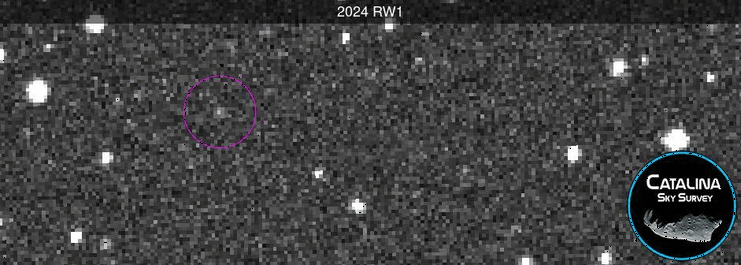
The first two interstellar visitors
In 2017, astronomers at the University of Hawaii found an asteroid that behaved oddly. It didn't come from any of the normal directions for asteroids or comets passing by the Sun. Moreover, it wasn't on a bound orbit at all. It was traveling so quickly that after half a loop around the Sun, it zoomed back off into interstellar space.
They called it 'Oumuamua, meaning "scout." It was the first known visitor from beyond our solar system. Planetary scientists jumped at the chance to study an asteroid from the great beyond. More excitable astronomers theorized it was actually a spaceship. 'Oumuamua entranced the world for a few months, stirred up controversy, and then disappeared into the blackness of space, beyond the reach of our telescopes.
Then, in 2019, an amateur astronomer and telescope-maker in the Crimea found a comet (a rocky body that contains large amounts of ice, unlike asteroids) on a similarly unusual trajectory. Like 'Oumuamua, Comet Borisov darted through our neighborhood only long enough to vaporize some of its ice in the heat of our Sun. Then it, too, was gone.
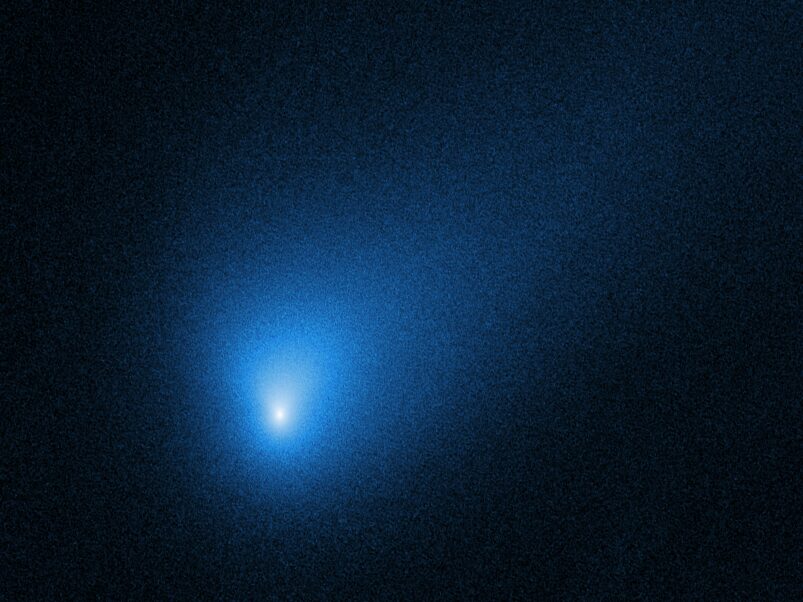
What we know about A11pl3Z
Astronomers have only just discovered A11pl3Z, and it's very faint. Since it doesn't generate its own light, we can only see it via reflected sunlight. At its current distance, that only gives it a brightness equivalent to that of galaxies about one billion light-years away.
This obfuscates exactly how fast A11pl3Z is traveling, and in what direction. While it's still possible that A11pl3Z is just a very odd object from our solar system, it looks very interstellar. Not only is it entering the solar system from a strange angle, it's also orbiting in the opposite direction from solar system bodies.
Right now, it seems less perturbed by the Sun's gravity than Oumuamua or Borisov. That means it came from outer space with a much higher velocity.
The study of small bodies moves very quickly. Every night, planetary scientists get a plethora of new information on interesting objects. Soon, we should know whether A11pl3Z is an unusual member of our own solar system or something from much further abroad.
A team of astronomers in Australia searching for radio flashes from distant galaxies has found something a lot closer to home. The defunct communications satellite Relay 2, out of commission since 1965, is chirping at the Earth in radio frequencies.
A mysterious burst from nearby
The Australian Square Kilometer Array Pathfinder (ASKAP) searches the radio sky for sudden, unexpected flashes. These can come from supernovae or more exotic sources like rotating white dwarfs. But ASKAP is particularly talented at finding Fast Radio Bursts, brief outbursts of radio waves coming from galaxies millions or even billions of light years away.
In a preprint paper released this month, a team at ASKAP reported a signal that looked like a startlingly bright Fast Radio Burst. It lasted the same general amount of time (only 30 billionths of a second) and emitted a broad range of radio frequencies. But unlike Fast Radio Bursts, it seemed to come from right outside the Earth's ionosphere.
When radio waves travel from faraway galaxies, they interact with electrons floating around in interstellar space. Those electrons slow down low-frequency waves more than the high-frequency waves, causing them to arrive at the telescope after the high-frequency ones. Astronomers call this effect "dispersion," and it works as a rough proxy for distance. Since we know about how many free electrons there are in every direction, we can calculate how far radio waves must have traveled through those electrons to be delayed a certain amount.

But for the recent ASKAP burst, there was barely any delay between the high- and low-frequency parts of the wave. The burst came from our own neighborhood.
Radio astronomers have a touchy history with things that look like Fast Radio Bursts but come from nearby. For a long time, mysterious signals called perytons showed up all over the place, until a group realized it was actually the microwave oven in the observatory break room.
Needless to say, microwaves are now kept under strict control at radio telescopes. So what was this new signal?
Tracking down an undead satellite
Reasoning that the only things floating around in nearby space that might release radio waves are satellites, the ASKAP team started searching. They compared the point of origin of the burst to maps of satellites. But the only matching satellite, Relay 2, hasn't been in operation since 1965.
Relay 2 was a NASA telecommunications satellite with a handful of physics experiments onboard, all long since defunct. According to NASA reports, it's been more than 50 years since anyone has purposefully used Relay 2.
While it's possible NASA is using Relay 2 secretly, the ASKAP team doesn't think this is likely. The plans for the satellite are publicly available, and nothing onboard is capable of producing such a short, bright burst.
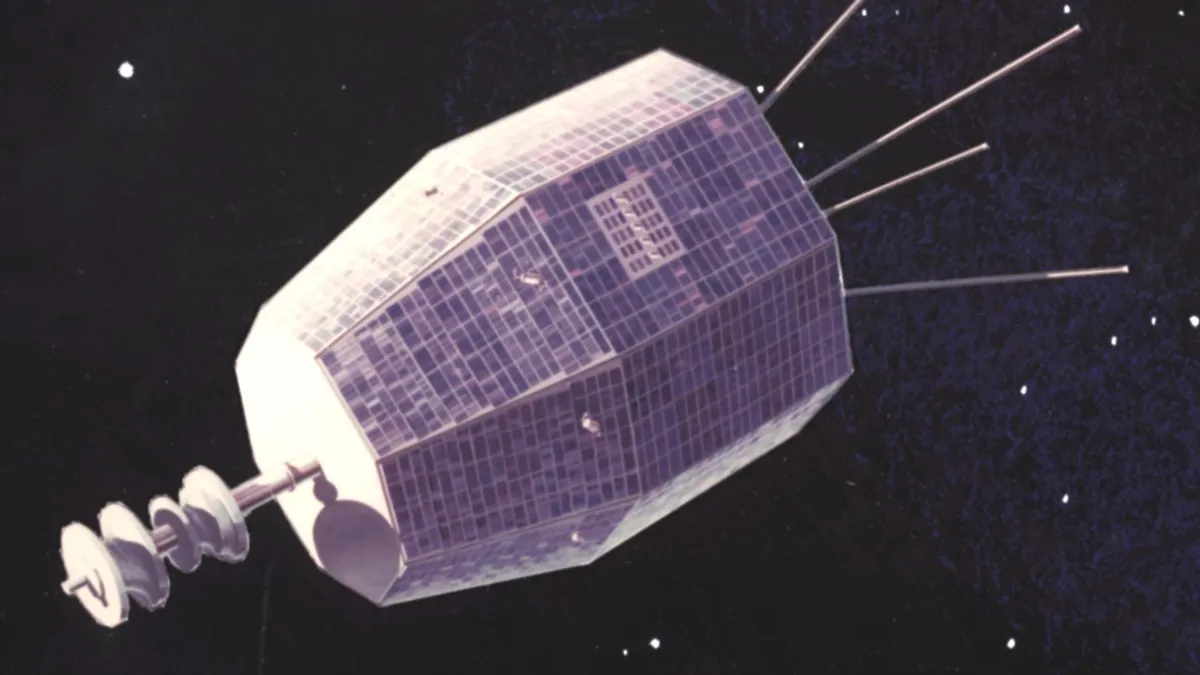
The explanation
The team proposes two possible explanations for this strange emission. In the first, solar winds slam into Relay 2, building up charge against one plate of the satellite like rocks by the ocean build up salt. When the charge becomes so strong that the scant gas molecules between one plate and another can't take it anymore, the gas ionizes, releasing a sudden burst of visible light and radio waves. This is called electrostatic discharge. It's like lightning for satellites.
The other option is that micrometeoroids are slamming into the satellite, creating a cloud of dust and plasma right around the satellite. Then electrostatic discharge can happen even more easily.
It will be hard to tell which of these options is at play without observing Relay 2 over a long period of time. If the radio bursts happen at regular intervals, then they likely come from electrostatic discharge after a buildup. Micrometeoroids, on the other hand, wouldn't stick to a schedule.
Either way, observing short radio bursts from satellites may be a new way to probe the electric composition of space right outside the ionosphere.
Last February, a remote research station in the Canadian High Arctic captured a striking image of the night sky. It showed a dense network of bright streaks against the blackness. Those streaks were satellites, hundreds of them.
Western University in Ontario and Defence Research and Development Canada collaborated to install 14 cameras at the tiny research station of Eureka on Ellesmere Island. Typically used to track meteors, these cameras monitor satellite activity over Canada. Each camera takes tens of images a second throughout the night. Together, the 14 cameras capture the full night sky.
Taking so many photos so quickly allows them to track anything over 30cm wide passing overhead, including satellites. By combining all of the frames into one composite, the team created a long-exposure image that shows the trajectory of every satellite that passed over the region in one night. The result is both beautiful and startling. The trails of manmade objects in low orbit fill the sky like a woven fabric.
The launch of thousands of new satellites in recent years, especially mega-clusters such as Starlink, has transformed the sky by creating this visual clutter. The average person doesn't notice it, but it's become increasingly difficult for astronomers to observe the natural night sky. Satellite trails interfere with long-exposure images of stars and galaxies. It is vital that we can continue to observe the universe from Earth without peering through a haze of artificial lights.
Four similar stations exist elsewhere in Canada, in central British Columbia and in Saskatchewan. Over one year, the sites have collected nearly half a billion satellite observations, tracking more than 17,000 objects in orbit.
In Chile, a monumental telescope has opened its eyes. The telescope at Vera C. Rubin Observatory is the largest digital camera ever built, with a resolution of 3200 megapixels. It will photograph the entire southern sky every three nights.
Today, the team behind this ambitious project released the telescope's first images of the sky, which astronomers call "first light."
Over 10 years, the Vera C. Rubin Observatory (VRO) will create a time-lapse movie of the changing universe. Explosions from massive stars in other galaxies, pulsating stars, and asteroids make up most of the VRO's targets. Objects like these, called transients, change on timescales observable to humans. By contrast, most things in space look the same today as they would a thousand years from now.
Unprecedented scale
The VRO will acquire astronomical data at an unprecedented scale. It will rapidly outpace the combined data of every single other telescope in history, both on Earth and in orbit. As a consequence, it will blow open the door on transient astronomy. Before the VRO, astronomers discovered thousands of supernovae every year. With it, they will discover thousands every night.
But the VRO won't just focus on the distant universe. The camera also picks up nearby objects like asteroids and comets darting across the field of view. Today, we know of about one million of these rocky bodies in our solar system. The VRO will find five million more, dramatically improving our understanding of the danger Earth faces from medium-sized asteroids.
More than 40 international organizations contributed to the telescope, which sits on the 2,682m summit of Cerro Pachón in Chile. The telescope's main mirror, which is the size of a small car, journeyed to Chile from the Mirror Lab at the University of Arizona.
At the press conference announcing the first light images, Chilean ambassador Juan Gabriel Valdes discussed the key role Chile plays in astronomy.
"Astronomy is part of our identity and our heritage," he said, noting that protecting their dark skies is crucial for the world's space science. "Today, more than 40% of the world's astronomical observations take place in Chile."

The mother of dark matter
Vera C. Rubin -- the woman, not the observatory -- made a name for herself in the mid-20th century as a determined scientist in the face of entrenched sexism. Rubin found the first evidence for dark matter when she observed that galaxies rotate faster than their visible matter explains. There must be, she reasoned, additional invisible matter holding them together.
Nowadays, dark matter is a household term, even if no one (including astronomers) knows what it is. But Rubin, like many other female scientists responsible for key discoveries, never received the Nobel Prize.
Although the bread and butter of the VRO is transients, it can also probe how light bends around distant galaxies. The amount it bends depends on how massive galaxies are -- another clue to how much dark matter exists in the universe.
Harriet Kung, director of science at the Department of Energy, summarized the questions on dark matter and dark energy that the VRO will help answer.
"How can we better understand the matter and energy that make up 95% of our universe? Why is our universe expanding quickly, and how does that change over time? What role does dark matter play in how our universe evolved?"
First light
"The movie is starting," announced Kenneth Wright, director of development for the Office of Science and Technology Policy. "The camera is running. And we're gonna see our universe unfold before us."
The first image revealed in today's press conference showed two Milky Way-like spirals whirling against a background of more distant, yellower galaxies. This image comprises only 2% of the telescope's full field of view.
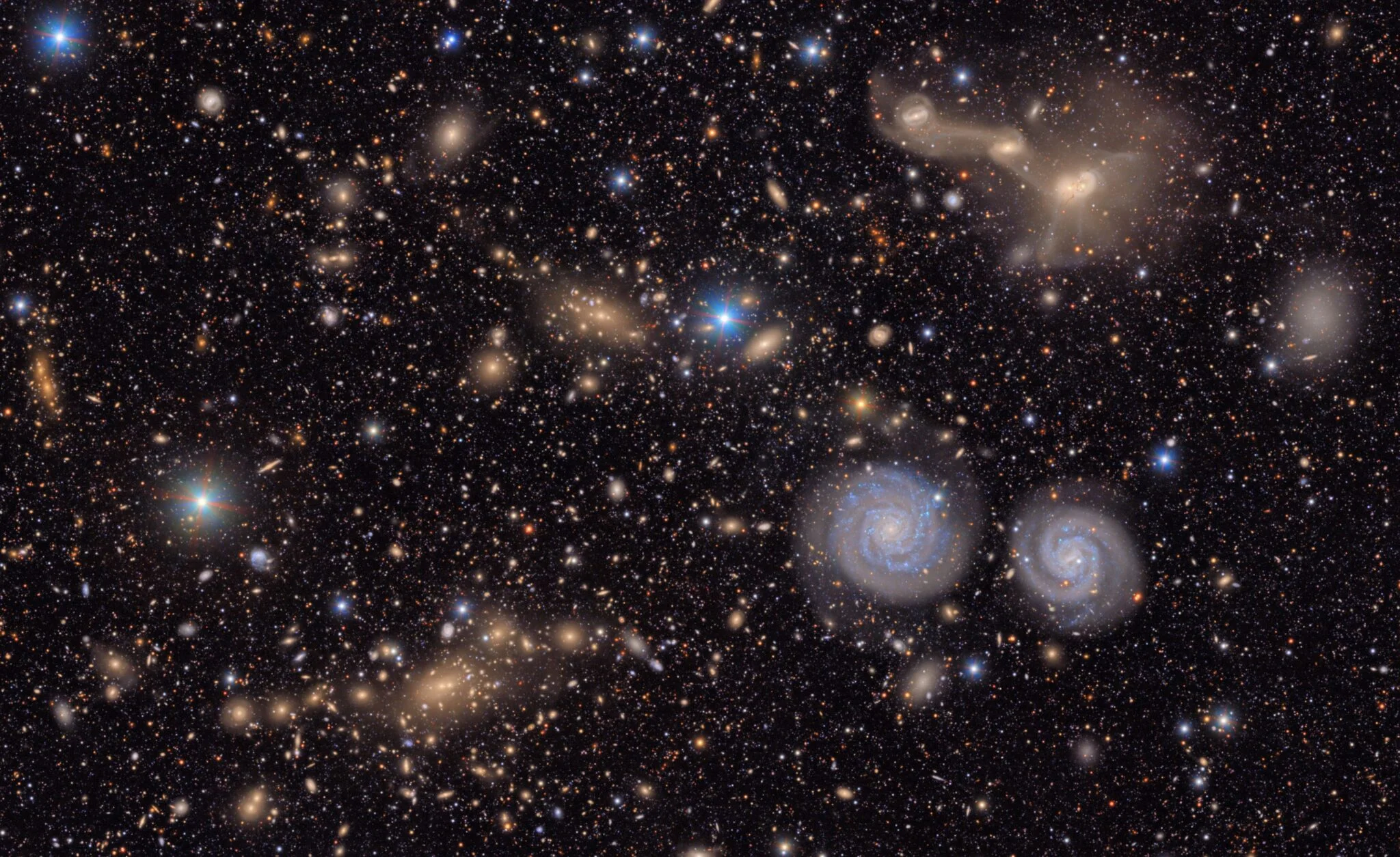
Since the camera can photograph light from the near-ultraviolet to the near-infrared, the colors in this photograph are more dramatic than what the naked eye would see. Galaxies that look blue emit strongly in the ultraviolet, while reddish-yellow galaxies shine in the infrared.
Red galaxies tend to be older, made up of aging stars that don't spit out the violet ultraviolet radiation of young blue ones. They also lose their defined spiral arms, as in the large elliptical galaxy in the first light image below. Many of the galaxies here comprise the Virgo Supercluster, a massive family of galaxies about 65 million light years away.

Moving asteroids
In a sneak peek of the VRO's time-lapse power, the observatory's director released a video of asteroids moving against the static background of stars. Every asteroid in this video, shown with a turquoise dot, was previously unknown. None of them are on an interception course with Earth.
In just one week, the VRO found 2,100 previously unknown asteroids.
Unparalleled resolution
The final first light image released shows the nearby Trifid and Lagoon Nebulae, yet another strength of this versatile telescope. Dark streaks against clouds of glowing dust and gas show regions of high density where baby stars are forming. Because the telescope was designed to see things very far away, turning it on such close objects allows it to zoom in with the resolution of 400 ultra-high definition TVs stacked next to each other.
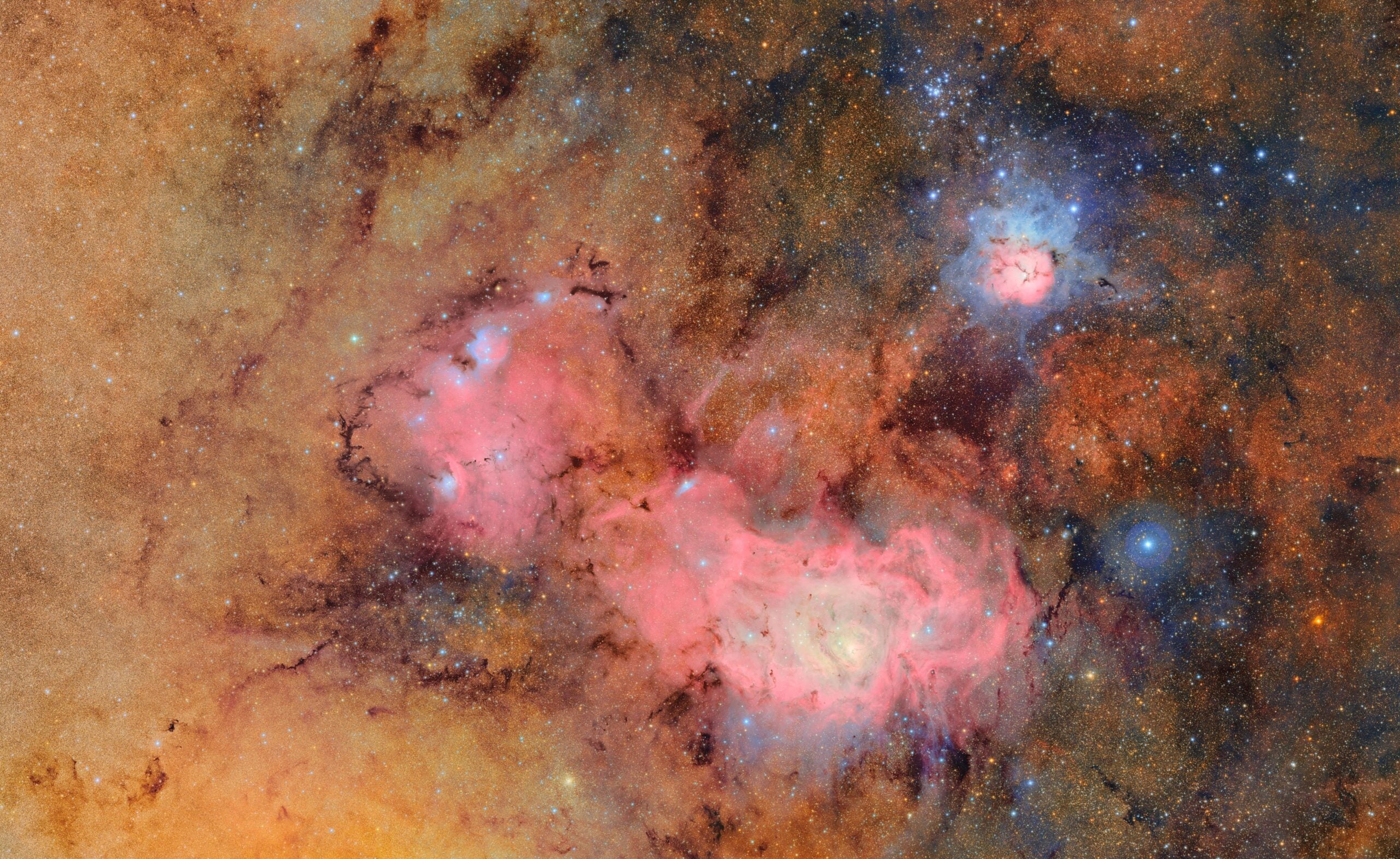
A new view on the universe
Maryam Modjaz, a professor of astronomy at the University of Virginia and a member of the VRO science collaboration, explains that the VRO will transform how she does research.
"I’m particularly interested in very young supernovae, right after the explosion," she says.
Right now, astronomers have to be lucky to find these objects. More often, they don't catch them until days after they've exploded, missing crucial early information. That won't be an issue with the VRO, says Modjaz. "We can study the stars that gave rise to those explosions in what I call a 'stellar forensics' investigation."
The VRO is open to more than just astronomers. The observatory has just released its Skyviewer app, where anyone around the world can explore this project, which it calls the Legacy Survey of Space and Time.
In recent years, we have shown many spectacular images from the James Webb Space Telescope. The difference between them is that the JWST looks at very fine detail, while the Vera Rubin Observatory focuses on the big picture. After the VRO finds something new, the JWST can follow up for a more precise study.
Astronomers have filmed what seems to be the birth of a new planet within a swirling disk of dust and gas around a young star. On June 9, researchers photographed the cosmic event through the European Southern Observatory’s Very Large Telescope in Chile.
The star, RIK 113, sits within the Scorpius constellation, 431 light years away. A large, rotating protoplanetary disk of dust and gas left over from the star’s formation surrounds it. In theory, the disk should eventually condense under the star's gravitational pressure to create a new planet. Some atmospheric emissions between the gas ring and the young star are also consistent with those that would be released from a planet in formation.
The images reveal complex structures within the disk, which extends out 130 astronomical units (19.5 billion kilometers) from the star it surrounds. Within this, there is also a bright ring that sits 50 astronomical units (7.5 billion kilometers) from its parent star. By comparison, Earth sits just one astronomical unit away from our sun.
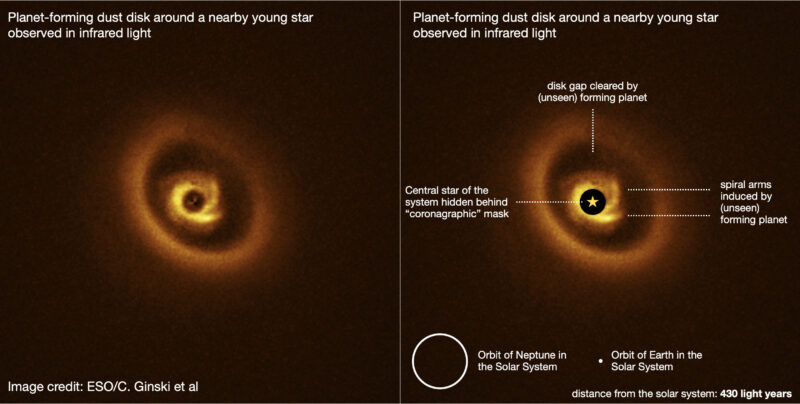
The images show spiral arms extending out from the inner ring, and this part of the image has most excited astronomers.
“One rarely finds a system with both rings and spiral arms in a configuration that almost perfectly fits the predictions of how a forming planet is supposed to shape its parent disk according to theoretical models,” said the research team.
If the presence of a planet is confirmed, this would be one of the clearest examples of planetary birth that astronomers have ever observed. To confirm their theory, the team has secured valuable observation time on the James Webb Space Telescope, which should give even sharper views of the region.
It took millions of years of being a species before humans took the first picture of our own Earth's southernmost point. Now, after less than a century in space, we've photographed the Sun's south pole.
The European Space Agency's Solar Orbiter's images aren't just groundbreaking. Learning more about our star's polar regions will help scientists understand and predict the Sun's effects on Earth.
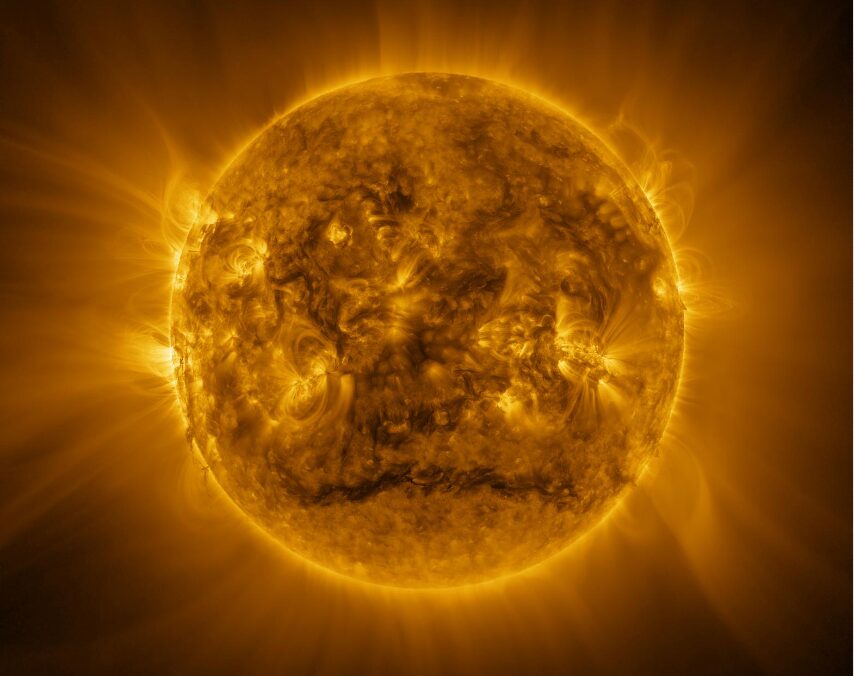
A new point of view
For all human history, we have had only one angle on the Sun. The view was straight on. This is because the planets and their spacecraft rotate around the Sun on a flat circle called the ecliptic plane. Picture a CD playing. Or don't, I'm not your boss. At any rate, that flat-on angle prevented us from seeing either pole.
Escaping the ecliptic plane takes some doing, by which I mean a lot of very expensive rocket fuel. The Solar Orbiter used Venus's gravity to help pull it out of the usual equatorial orbit around the Sun. Every time it passes Venus, the planet's massive gravitational force shoves it out of the ecliptic plane. As it keeps looping around Venus, it gets pushed further and further out of alignment with that plane.
In January 2027, it should come around the Sun again at a more tilted angle, giving us an even better view.
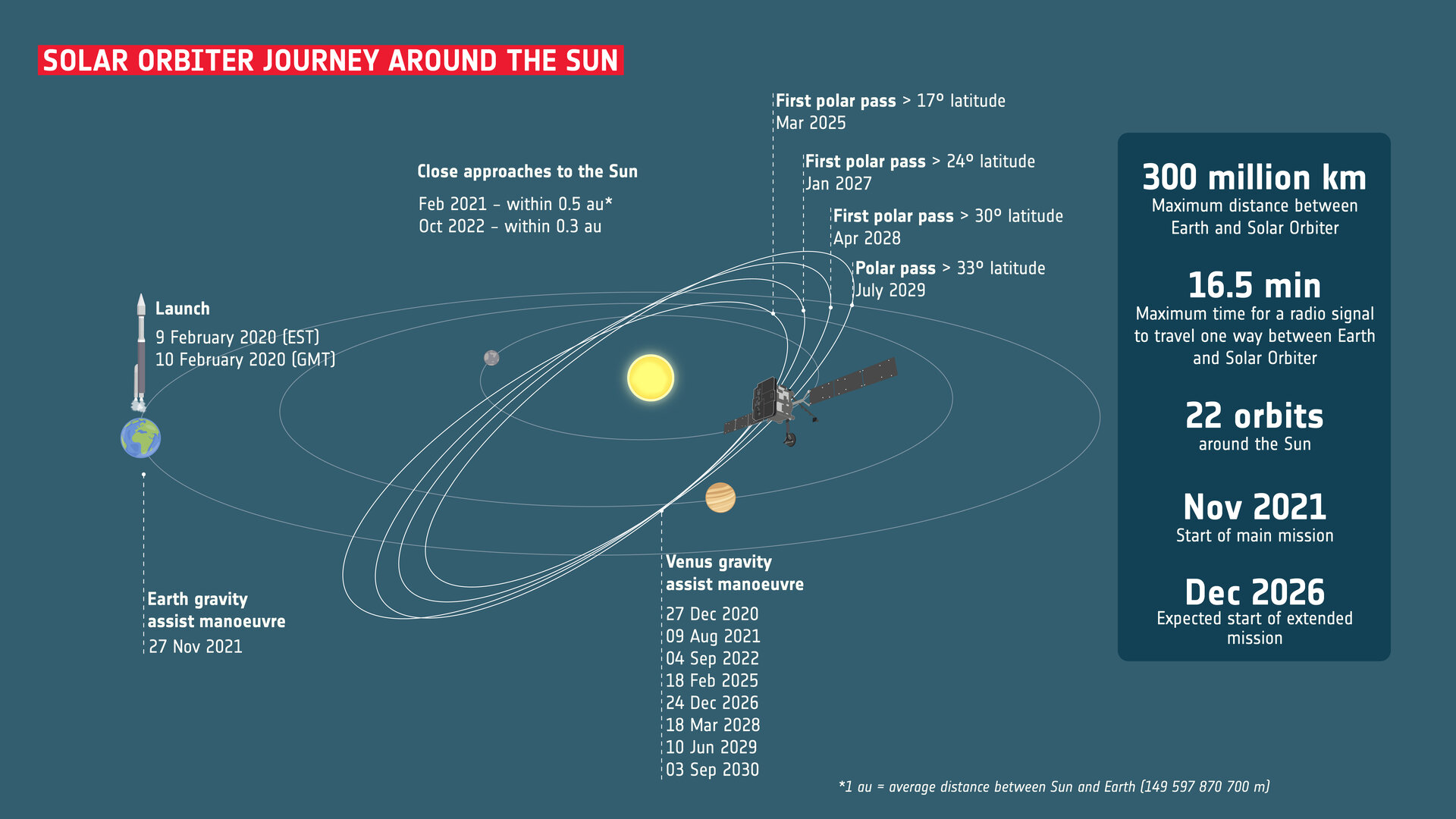
Weird magnetic fields at the sun's south pole
The Sun's polar regions are pretty busy and chaotic places, it turns out. The ESA's press release about their findings goes so far as to call the Sun’s magnetic field "a mess." The Sun's magnetic north and south poles switch places every 11 years, and it's a somewhat sloppy process.
During the transition period, called the "Solar Maximum," the magnetic field becomes a confused tangle, with no clear north or south pole. These magnetic upsets can cause a variety of startling and unpleasant effects on Earth, as seen in the history of solar superstorms. Look forward to power outages, satellite communication breakdowns, and particularly striking auroral displays until the sun settles down again and decides which end is which.
The images and readings from the Solar Orbiter give scientists a better idea of what's going on with the Sun's magnetic fields. This, in turn, will allow them to predict future solar activity more accurately. We aren't there yet, but this is a massive step toward building accurate computer models of solar magnetic behavior.
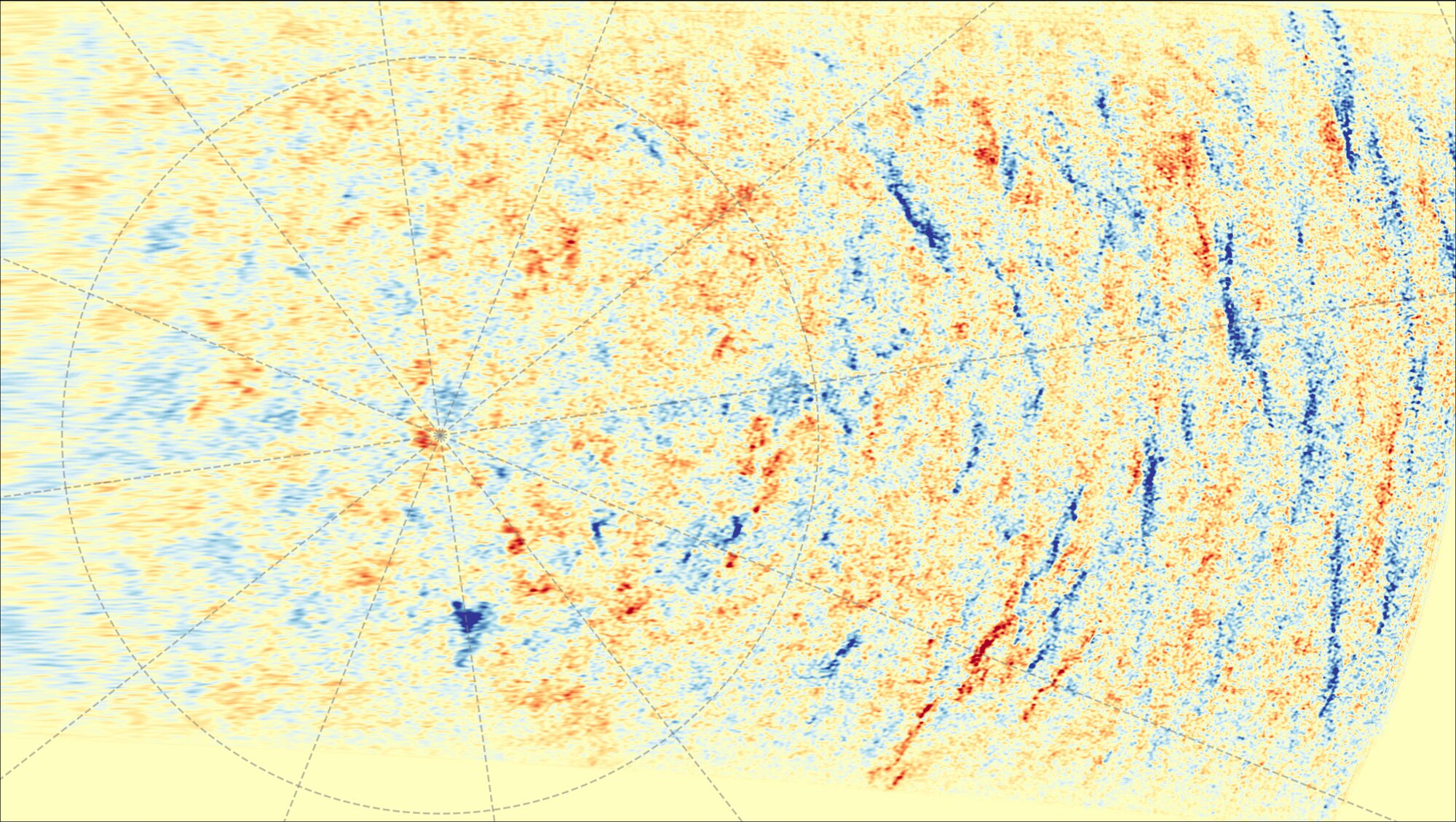
Specialists at Australia's Square Kilometer Array (SKA) released a report this week showing Starlink's unexpected impact on radio astronomy. Despite national and international protections against radio emissions in certain bands, Starlink is clogging the skies with electromagnetic pollution.
A crowded spectrum

Light pollution stretches far beyond the hazy glow of a city on the horizon. Down in the radio portion of the electromagnetic spectrum, governments barter sections of light. Large portions of bandwidth stay reserved for the military, while others get auctioned off (sometimes literally) to communications companies. Squeezed in between these chunks of spectrum lie bands for public broadcasting, HAM radio, and science.
Governments, corporations, and private citizens are supposed to stay away from protected bands so that radio telescopes can observe in peace. When the Starlink satellites launched, SpaceX collaborated with key radio astronomy observatories to avoid broadcasting while transiting above telescopes. Strategies include turning off Starlink WiFi services completely in certain regions of the sky.
The resulting disruptions to Starlink operations are not insignificant. Spectrum management, especially in the United States, involves give-and-take on both sides. But American observatories have the benefit of observing at mid- to high-frequencies, at least by radio standards. Those frequency bands are less polluted than low frequencies, because emitting at low frequencies takes less energy and so costs less.
'Unintended electromagnetic radiation'
If corporations and the military ignored protected bands, it would cause serious problems for radio astronomy. But a new study by engineers at the SKA suggests unintended electromagnetic radiation, or UEMR, may be a bigger issue than intended radiation.
The SKA is still under construction. When completed, it will be the most powerful radio telescope in the world. The low-frequency part of the telescope (SKA-Low) is designed to go after trace echoes from when matter began to coalesce 13 billion years ago. SKA-Low looks odd even by the standards of radio telescopes. A thick forest of metallic Christmas trees in the Australian desert maximizes sensitivity to faint signals.
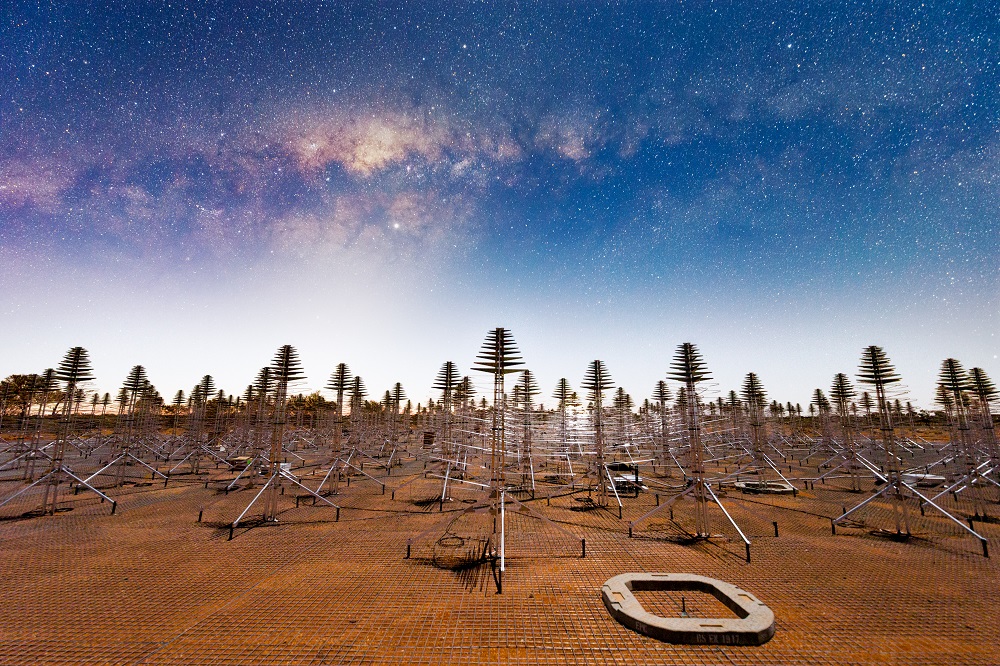
But the new era of radio telescopes is butting up against a new era of satellites. There are more satellites in orbit than ever before, including massive networks of related satellites called constellations. With 7,000 satellites in Low Earth Orbit, Starlink is the biggest constellation.
As they transit above SKA-Low, Starlink satellites release radio emissions through multiple protected bands. In a pre-print of their study, the SKA-Low team reports 112,534 intrusions of Starlink satellites in their radio images. Their month-long study showed that 30% of all Starlink satellites in the sky at the time appear in their data.
Most of this emission seems to be accidental. UEMR from Starlink interfering with radio astronomy isn't unprecedented. During the initial launch phase, radio astronomers found that the propulsion system on the satellites emitted at unexpectedly low frequencies, decreasing the quality of astronomical data in an already polluted band. But the satellites had all been launched at the time of this new study. So where is all this radio pollution coming from?
No answers, and no regulation
We don't know the various origins of the UEMR the SKA-Low team observed, except for one feature at 99.7 MHz. If that sounds like an FM radio band, it's no coincidence. Starlink satellites bounce FM radio shows back down to the Earth. For telescopes carefully located in radio-quiet zones, that's not ideal.
Fixing this issue is particularly crucial to the success of SKA-Low, which seeks to look further back in time than any telescopes in a similar radio band. Signals from the early universe are very faint, and Starlink satellites are not.
Unfortunately, the codes governing spectrum use only ban intended radio emission in protected bands. Consider a hyperbolic analogy: Imagine if murder were illegal, but manslaughter wasn't. Spectrum experts and regulators are currently discussing how to address this issue. For now, though, as long as Starlink is here, so are the unintended radio emissions.
Last week, the Trump administration released a presidential budget request that would cancel almost all NASA science missions in order to focus on putting humans on Mars. It's mainly a showy, we-can-do-it project.
Mere weeks before, the CEO of a small San Francisco non-profit argued in a new paper that we need to start seriously considering terraforming Mars. The priorities of the two groups could not be more different.
The lead author of the paper, Erika DeBenedictis, received the prestigious Astera Fellowship to found Pioneer Labs, a small startup dedicated to designing microbes for terraforming. In The Case for Mars Terraforming Research, published last month in Nature Astronomy, she and her co-authors explain why terraforming studies are important. They also address how little we still know about potentially terraforming Mars. The main takeaway: Mars is not ready for humans, and humans are not ready for Mars.
Why bother with all this, anyway?
For some readers, the question of colonizing Mars isn't why, but how. If that's you, feel free to skip ahead. But others might approach the matter with more skepticism.
Space colonization has become a political byword, but opposition is far from new. Perhaps most famously (at least among us science geeks), Gil Scott-Heron's 1970 poem Whitey on the Moon contrasted the poverty conditions of many Black Americans with the perceived excess of the Apollo missions.
"I can't pay no doctor bill (but Whitey's on the Moon)," he wrote. "Ten years from now, I'll be paying still (while Whitey's on the Moon)."
From this vantage point, is spending billions on terraforming research anything more than a nationalist vanity project? DeBenedictis and her team argue that it is important.
"Technologies developed for Mars habitation, such as desiccation-resistant crops...will probably benefit Earth," they write.
In an older interview with the Astera Institute, DeBenedictis summed up this aspect of the paper's argument.
"Researching the possibility of a green Mars involves an infinite number of steps, all of which are in the right direction. How do we make human presence net-positive for the surrounding environment, rather than net-negative?"
Unlike the Trump administration, the study doesn't advocate for current human spaceflight to Mars. Instead, it proposes taking the questions of colonization seriously, starting from first principles. Should we? How would we? What would the future of Mars look like?
Not just science fiction
You'd be forgiven for assuming terraforming is just science fiction. But unlike faster-than-light travel, this staple of space adventure has a real scientific basis behind it.
The new study lays out a timeline for terraforming Mars, and it's a lot more rapid than you might expect. They propose that careful bioengineering can accelerate the formation of an ecosystem. Instead of the billions of years it took Earth to turn green, Mars could achieve it in a few decades.
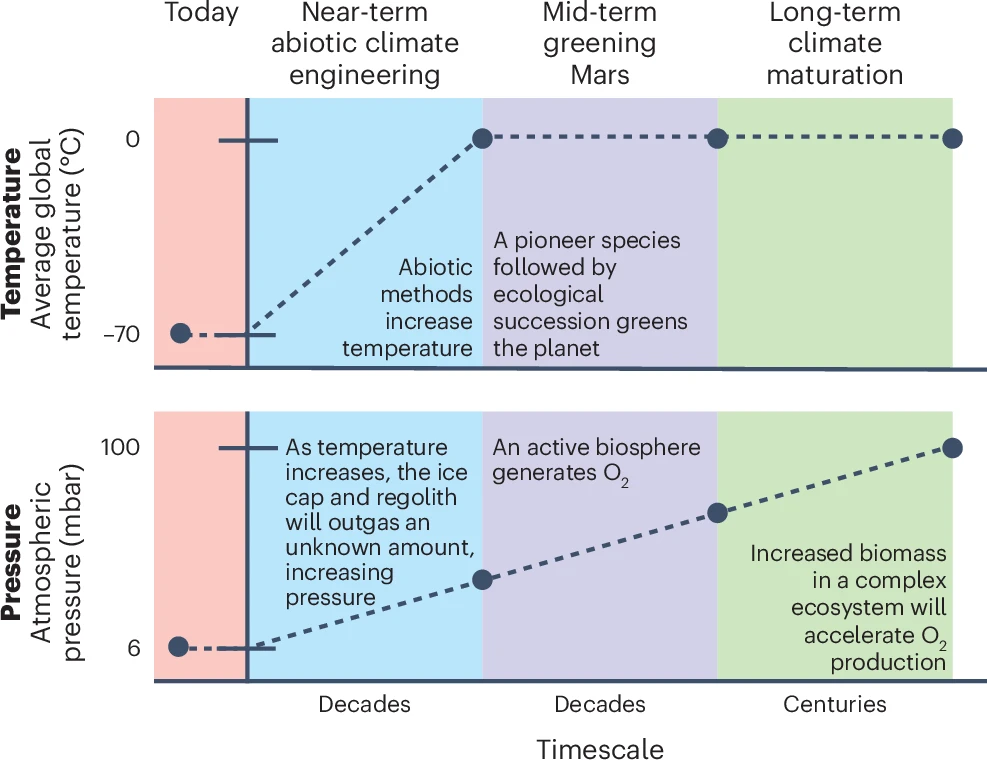
The key to this rapid progression would be the development of microbes that thrive on Mars. Bypassing the labyrinth of evolution, humans could combine traits of Earth-based microbes such as temperature tolerance (surface temperature on Mars swings from -150°C to +20°C), invulnerability to fierce radiation and toxic gas, and no preference for atmospheric pressure. Such species could lead to an algae-covered Mars within decades.
How scientists would prevent such hardy microbes from disrupting ecosystems on Earth, the team doesn't address.
The natural advantages of Mars
According to their estimates, if all the water ice on Mars melted, it could form 10,000,000 km2 of ocean at a depth of 300m. That's far less than the amount of liquid water on Earth, but it's enough to support long-term life on Mars.
In turn, the melting of Martian ice caps, which include both water and carbon dioxide ice, would increase atmospheric pressure. A thicker atmosphere would lessen the dramatic temperature swings between Martian night and day, in turn allowing the proliferation of life.
Martian soil also includes the necessary components for agriculture. Science fiction author Andy Weir exploited this so his marooned protagonist could grow potatoes in the hit 2017 science-fiction novel The Martian.
Such calculations have led planetary scientists to scour Mars for evidence of past life, mostly through remote sensing. (Soil samples are notoriously difficult to return to Earth for testing.) So far, they haven't found any evidence of life, only evidence of conditions necessary for life at some point in the distant past.
So, are we missing something?

The big unknowns
This is where DeBenedictis and Pioneer Labs' vision of Mars colonization research differs most dramatically from that of Elon Musk and SpaceX. The gist of the new paper is not that terraforming should happen now, but that scientists from different disciplines need to consider terraforming when designing future projects.
In planetary science, for example, the paper argues for continued research on everything we don't know about Mars. For instance, ice covers one-third of the planet. What's under it? More ice? Networks of caves? Liquid water? The answer could portend wildly different visions of a bioactive Mars.
They also call for extensive simulations of dust storms, a notable feature of Martian weather. Right now, planetary scientists understand dust storms on Mars fairly well. But how would dust change the atmosphere in a warmer, wetter Mars? How would the new climate alter the strength of the dust storms?
But perhaps the biggest open question for terraforming is whether Mars has enough electron acceptors to support life. Electron acceptors are molecules capable of transferring electrons -- and thereby energy -- down a chemical chain. They include carbon dioxide and nitrates, and are vital not only for photosynthesis, but also for human respiration.

Where to go from here
Despite their affiliation with Pioneer Labs, which focuses on microbe engineering, the authors don't call for the scientific community to jump on the terraforming bandwagon.
"While the possibilities are exciting, anything as big as modification of a planetary climate has major consequences and would require careful thought," they write. "But until we do more research, we do not even know what is physically or biologically possible."
In other words: research now, decide later.
"Priorities include quantifying H2O, N2, and CO2 reserves...soil sample return, test missions for proof of concept of warming methods, and climate feedback studies," they explain, linking various NASA science directives with terraforming questions.
Current NASA goals for Mars already support human exploration, they add. "No abrupt change of course is needed."
But an abrupt change of course is in store for NASA. The presidential budget request cancels all Mars research missions except for the Martian Moons eXploration, which is mostly funded by the Japan Aerospace Exploration Agency. It still wants to put colonists on Mars, but without laying the scientific groundwork first. If science takes up Mars terraforming research, it will be without the United States.
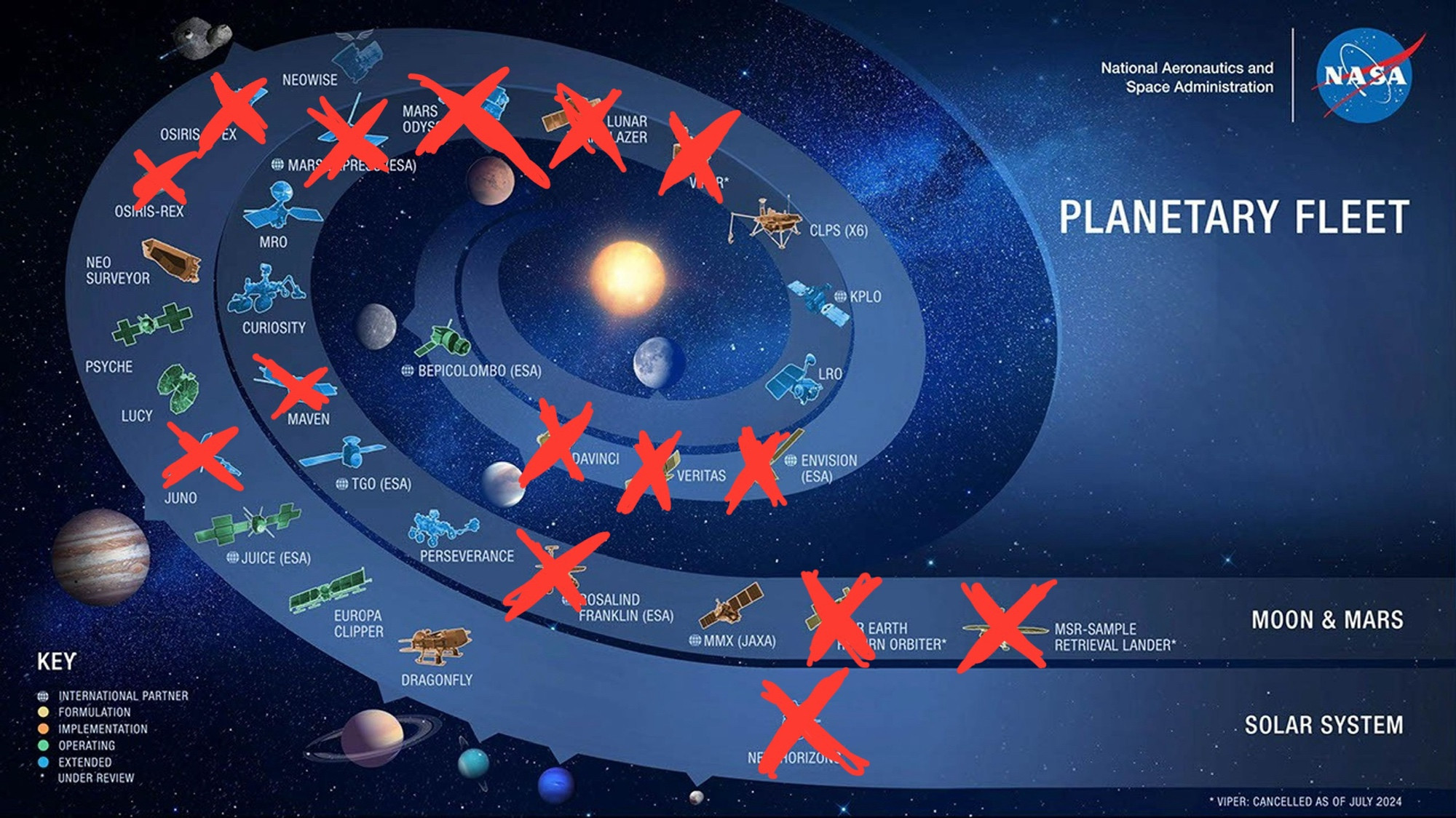
A new dwarf planet named 2017 OF201 has been discovered far beyond Neptune. It sits in a region previously thought to be empty. Its existence raises questions about the structure of our solar system and the hypothetical Planet Nine -- a hidden, massive planet hiding somewhere out there in the outer reaches.
The dwarf planet's orbit is such an elongated ellipse that it takes around 25,000 years to make one orbit of our sun. At its closest, it sits approximately 6.66 billion kilometers away from the sun. At its furthest, it is a staggering 244 billion kilometers, about 54 times further away than Neptune. This giant orbit suggests that gravity from other massive bodies could be influencing it, possibly even a mysterious Planet Nine.
This theory suggests that a large, unseen planet, about 5 to 10 times the mass of the Earth, lurks in the distant regions of the solar system. Its advocates believe that it is large enough to influence the orbit of objects beyond Neptune. The problem is that the orbit of 2017 OF201 does not align with the gravitational patterns predicted by the Planet Nine hypothesis. It orbits in a different direction from one that would be influenced by Planet Nine. However, some researchers pointed out that the study of 2017 OF201 only considers one specific orbit of Planet Nine in its calculations.
The size of Pluto
Astronomers estimate that 2017 OF201 is about 700 kilometers in diameter, similar to Pluto, the former planet reassigned to dwarf planet status in 2006. Because of its elongated orbit, it is visible from Earth for only brief periods, making further observations challenging.
Planet Nine aside, the existence of this dwarf planet challenges the idea that the outer solar system has few sizeable objects in it. It is now likely that many more distant objects are out there, still detected. This would reshape our understanding of the solar system's architecture.
Back in the prehistoric days of theoretical astrophysics (1985), in a mystical and exotic corner of planet Earth (Fresno, California), a man sat in the back of a car and tried to break the spacetime continuum. His name was Kip Thorne: future scientific consultant on the movie Interstellar, future Nobel Prize winner, and all-around geek.
While he was a respected and innovative theoretical physicist, Thorne had not yet garnered a reputation as the mathematical mind behind some of science fiction's trickiest plot points. He was, instead, known for his deft familiarity with Einstein's equations of general relativity, a flexible set of conditions for how space and time interact. His friend Carl Sagan had called him up for help in solving a problem in his in-progress novel Contact, about radio astronomers who connect with interstellar beings.
Sagan, a science communicator by trade but an astrobiologist by training, needed Thorne's expert eye for the finer points of general relativity. He needed his heroine to get from the Earth to Vega, a journey of 26 light-years. And he needed her to get there fast.

Hyperspace
His initial treatment featured her plunging into a black hole, which carried her on a shortcut through hyperspace to Vega. Hyperspace isn't just a convenient term for hand-wavy science fiction authors. It's a real geometric concept describing space that occupies more than three dimensions. In short, Sagan's protagonist might travel through a fourth dimension, along a route where the distance from Earth to Vega is much less than 26 light-years.
Thorne wasn't having it. After all, all the matter and light that crossed the event horizon of the black hole would congregate at the singularity, accelerated to ultrarelativistic speeds.

"The calculations were unequivocal," Thorne wrote in Black Holes and Time Warps. "Any vehicle for hyperspace travel gets destroyed by the explosive 'rain' before the trip can be launched. Carl's novel had to be changed."
He proposed something even spacier than black holes: wormholes.
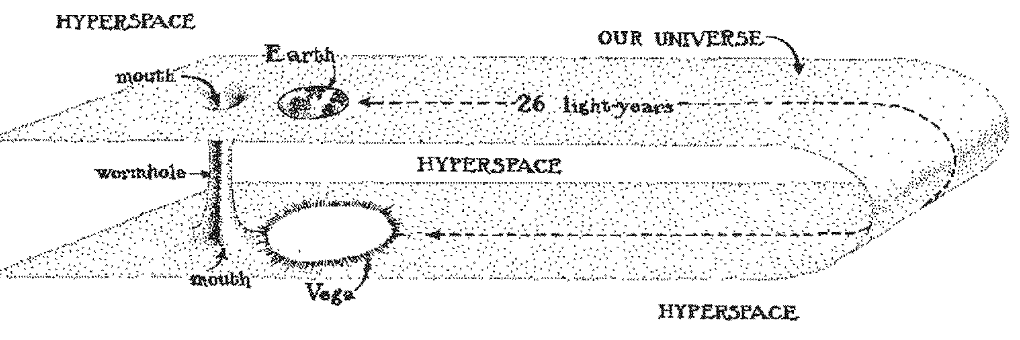
The temptation of wormholes
"If this FTL drive isn't fixed soon, we're dead!"
That's Captain Lee Adama on Battlestar Galactica, and as much as they reference it, the show never explained exactly how their faster-than-lightspeed (FTL) drive actually worked. They're not the only ones. Most science fiction properties lean on an implication of hyperspace tunnels, or wormholes.
In Hitchhiker's Guide to the Galaxy, most ships travel via hyperspace expressways. In Martha Wells' Murderbot series, the sardonic main character hitches rides through wormholes, although how these wormholes form or operate is left up to the imagination. Other authors, like CJ Cherryh, try to throw in a bit more of a theoretical physics vibe, with phrases like "Einstein-Rosen bridge." That's just a fancy name for a wormhole.

The truth is that although FTL travel is the backbone of science fiction, no one has figured out how it might actually work. Kip Thorne's proposition of wormholes, though, shaped the genre for decades.
The tempting thing about wormholes is that they are, in fact, a mathematically sound solution to Einstein's equations. It is absolutely possible for a tunnel to exist between two points in space such that the distance inside the tunnel is shorter than outside. What's not so clear is how such an object could form, or how it could stay open if it did.
The problem with wormholes, Part I
What Thorne struggled with in the backseat of a car in 1985, trying to fix Carl Sagan's plot, is that wormholes don't want to be used for interstellar travel. Previous physicists found that they have a fatal flaw. All the matter that passes through a wormhole causes it to gravitationally contract. Right after forming, it closes. Nothing gets all the way through.
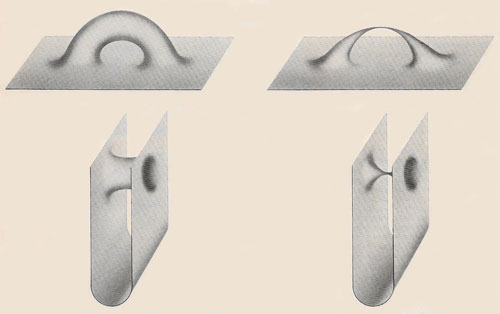
This is called pinching, and Thorne needed to avoid it for Carl Sagan's sake. He calculated that the only way around pinching is to coat the inside of the wormhole with "exotic matter." Exotic matter has a negative energy density from the perspective of light passing through the wormhole.
When traveling at light speed, Einstein's equations result in strange effects, and one of those is that negative energy density isn't technically forbidden.
Thorne's conjectures inspired a flurry of papers on exotic matter and whether it could coat a wormhole. The results, to this day, are inconclusive. We do know that exotic matter actually exists, at least near black holes, where the event horizon disrupts energy fluctuations in a way that favors negative energy density. The same occurs when two uncharged plates approach one another. But we don't know whether such matter would stay exotic on the inside of a wormhole.
For Contact, Thorne was content to skip over the finer details of how the Vega aliens coat their wormhole with exotic matter. But academically, he and his collaborators were only getting started.
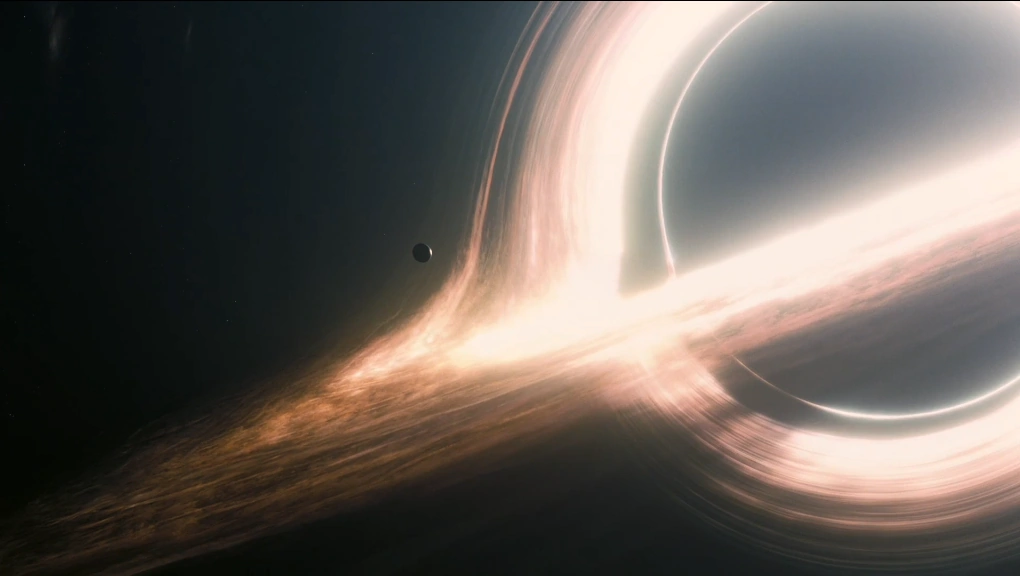
The problem with wormholes, Part II
Say we have exotic matter. Say we can use it to coat the insides of a wormhole so that the sides repel each other and stay open. How do we go about finding a wormhole?
As bizarre as black holes seem, they have a perfectly reasonable origin story. When massive stars get very heavy and can no longer hold themselves up against their own gravity, they collapse into an infinitesimally small point. That's a black hole.
But there's no similar mechanism for the formation of wormholes. At least, not for those large enough to allow travel. At the quantum level, Kip Thorne's graduate advisor, John Wheeler, laid the groundwork for wormhole formation back in the 1960s. He predicted that at very, very small scales, all spacetime should froth and bubble. Based on a fundamental theorem of quantum physics called the Heisenberg Uncertainty Principle, this "quantum foam" might form very small wormholes every second and annihilate them the next.

So can one forcibly enlarge a wormhole from the quantum to the classical regime? The answer lies in the realm of quantum gravity -- an enduring and unobtained Holy Grail in theoretical physics.
That's a no-go.
How wormholes imply time travel
Let us create a wormhole through unspecified quantum mechanical processes. Despite its immaculate conception, free of the bizarre time effects plaguing other proposed creation mechanisms, it will still succumb to the temptation of time travel.
The classic example, first conceptualized by Kip Thorne shortly after his contact with Contact, banks on an effect called time dilation. When objects move very close to the speed of light, the time that the object experiences flows more slowly than the time of a stationary observer. Think of Ender's Game, in which the protagonist skips forward 2000 years between the first two books because of how much time he's spent on very fast spaceships.
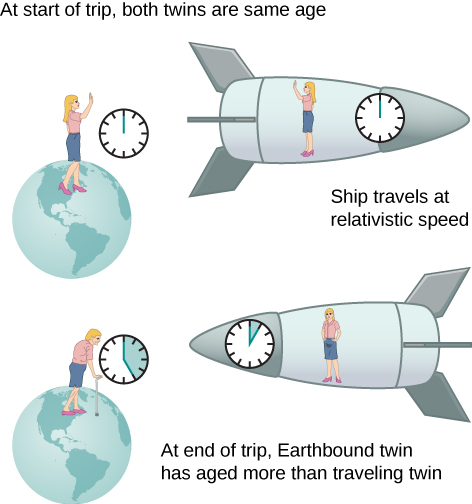
If Ender takes one end of a wormhole with him on his spaceship and leaves the other end on Earth with his sister Valentine, the wormhole will connect his sister to his time frame. Say he spends 10 months on a round-trip voyage and winds up back on Earth where he started. Then 10 months after his departure, Valentine can look through the wormhole and see him back on Earth.
But say that thanks to time dilation, from Valentine's perspective on Earth, Ender's trip takes 10 years. When he finally returns to Earth, entering his side of the wormhole will return her to her side, 9 years and 2 months before.
More paradoxes
This is where all sorts of paradoxes come into play. What if, for instance, Ender uses this setup to journey 50 years into the past and kill his own grandfather? The world misses out on one very enjoyable novel and quite a number of mediocre ones (sorry, Speaker for the Dead fans). Then no Ender would exist to go kill his grandfather, so his grandfather would live, and Ender would be born once more.
Bizarrely, that scenario actually makes perfect sense in a quantum mechanical world. The laws of quantum mechanics don't predict outcomes, just the probability of different outcomes. Attempting to understand what that actually means is an entire branch of physics called quantum foundations. It leads to elegant but unsettling theories such as Hugh Everett's "many-worlds" theory of splitting timelines. Each time a quantum mechanical system is tested, Everett proposes, the universe settles into one of many possible timelines, branching constantly.

This fits in nicely with the grandfather paradox. There is some probability that a man arrives out of nowhere and murders Grandfather Wiggin in his youth. There exists some other probability that Grandfather Wiggin carries on happily, eventually allowing Ender to be born and travel backward in time. When the moment comes for him to die, the universe makes a choice. We lift the lid and peer in on Schrodinger's grandfather: either he's alive or dead, but a second ago, he was both.
Why time travel (probably) can't exist
So, as far as we can tell, under the basic principles of quantum mechanics, time travel isn't as obviously a no-go as one might assume.
Yet we know of at least one mechanism by which any wormhole acting as a time machine might destroy itself. Kip Thorne, his graduate student Sung-Won Kim, and Stephen Hawking calculated that the same kind of quantum foam present in all space might build up inside a wormhole, destroying everything inside it and causing it to pinch shut.
The keyword here is might. We don't know enough about quantum gravity to say whether it would.
Hawking hypothesized that the universe would protect itself from time travel to avoid the manifestation of quantum phenomena on a human scale. More importantly, he wrote, this would "make the universe safe for historians."
He tested his theory in 2008 by hosting a party for time travelers. The day after the party, he sent out the invitations. No one showed up.
A majority of physicists agree with his conjecture. But to this day, no one can conclusively resolve it. That would require a working theory of quantum gravity. We're a long way away from that -- unless anyone from the future wants to help us out.

How do you speed up something that only interacts regularly with itself?
That's the question gripping astrophysicists at the Cubic Kilometer Neutrino Telescope (KM3NeT). In 2023, before the telescope was even completed, a high-energy neutrino shot through the Earth's atmosphere and into the detection zone of KM3NeT. Since KM3NeT looks for neutrinos, finding one wasn't a huge surprise. But this was the most energetic neutrino ever detected. So energetic, in fact, that it crashed their computer.
Where did it come from?
A telescope at the bottom of the ocean
KM3NeT looks about as much like a traditional telescope as, say, a rhinoceros does. It consists of indented spheres of metal standing guard over smaller glass spheres hanging from strings. The whole contraption sits 3,500m underwater at the bottom of the Mediterranean Sea.
Its strange design comes from its purpose: to hunt some of the most elusive particles in the universe. Neutrinos are omnipresent, with over a billion of them flowing through each square centimeter of space every second. But they barely interact with matter, and not at all with light or magnetic fields.
Still, some dramatic events create ultrarelativistic neutrinos that move at almost the speed of light. Both cosmic rays hitting the upper atmosphere and supernovae create neutrinos observable from Earth. Astrophysicists try to detect these energetic neutrinos.
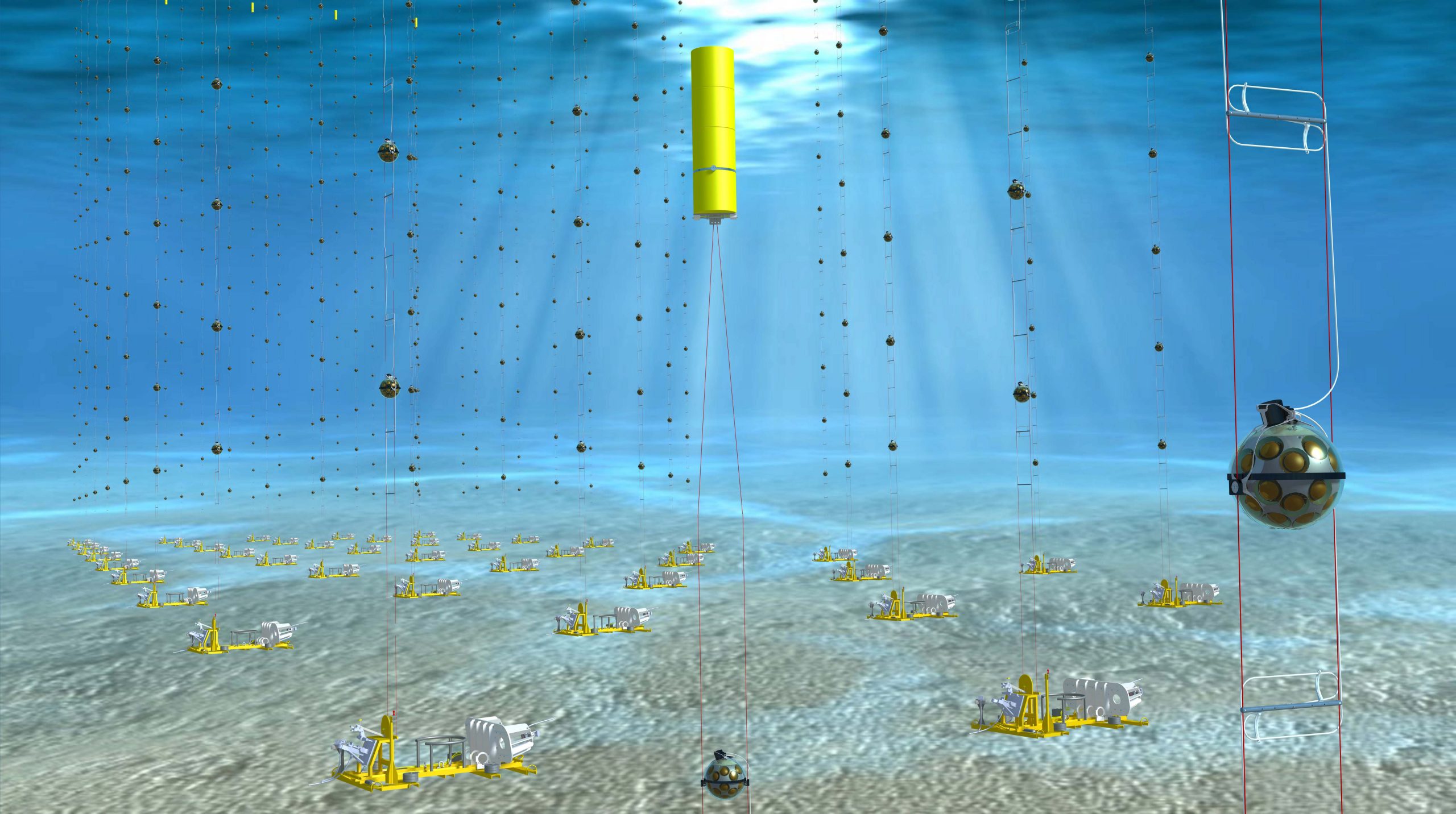
But detecting something that doesn't interact with light, magnetism, or most matter is mildly challenging, to say the least. The most famous neutrino detector in the world, IceCube, uses the Antarctic ice sheet to do so. KM3NeT opts for the salty waters of the Mediterranean Sea.
In water, light travels at only 75% of its speed in air, but neutrinos keep speeding along at the same velocity they always have. But even for a weakly interacting particle, 3,500m of water is a lot of water. Very occasionally, neutrinos collide with a proton or electron in the water with exactly the right angle and momentum to interact via the weak nuclear force.
These interactions can produce charged particles, including muons, which are more susceptible to interactions with matter. When the muons hit water molecules at velocities higher than the speed of light in water, they create a shock wave akin to a sonic boom. That, in turn, releases blue light called Cherenkov radiation.
The suspended spheres of glass and metal in KM3NeT are optical detectors searching for this Cherenkov glow. When they detect it, they use its strength and direction to trace back where the muon-molecule collision happened and what the muon's energy was. From there, they can work out the energy of its parent neutrino.
The neutrino that crashed the computer
Lowering precious optical devices to the sea floor takes a lot of time. By February 13, 2023, only 6% of KM3NeT detectors were in place. They had been detecting a few neutrinos here and there, but that day, something strange came in.
"When I first tried looking at this event, my program crashed,” KM3NeT physicist Paschal Coyle told New Scientist.
It was a neutrino unlike anything seen before. Hundreds of times more energetic than the previous record-holder, it defied traditional astrophysical origins like supernovae, gamma ray bursts, or black hole accretion.

When they looked in the region of the sky from which the neutrino came, they found nothing. No signs of supernovae, energetic distant galaxies, or stellar collisions. Just empty space.
Empty space does have its own background field of neutrinos, but high-energy neutrinos are exceedingly rare.
The team's paper on the event came out earlier this year in Nature. In it, they calculate the rate at which we should be observing such neutrinos and find that about one should show up every 70 years. The chances that such a neutrino would show up one year into the run of a telescope that was only 6% completed are stunningly low.
The KM3NeT team has another hypothesis. Particle physicists have long theorized that high-energy cosmic rays (protons and electrons traveling near the speed of light) could interact with the background light of the universe and produce massively energetic neutrinos. This event would be exceedingly rare and has never previously been observed.
At least, as far as we know. It's possible that KM3NeT observed it in 2023. But astrophysicists have a lot of work to do before the identity of the mysterious neutrino is anywhere close to resolved.
For three and a half days earlier this month, Eric Philips, 62, was in an environment that made his familiar Antarctic plateau seem almost hospitable. Sardined in a tiny capsule with three other amateur astronauts, he orbited our blue marble at 7.6km/sec. Outside, the blackness of space, with its microgravity and zero air and unseen perils of radiation and micrometeorites.
"What never gets old is Zero G," Philips told ExplorersWeb. "It's like being a child all over again."
Previously, we explained how Philips' late-career adventure came about. Two years ago, he guided a ski tour on the Norwegian Arctic Islands of Svalbard. One of his clients, Chinese-born Maltese citizen Chun Wang, was interested in talking about space travel. Not uncommon: Simple environments often appeal to polar types.
But in this case, Chun had the resources to do more than talk. He had made a fortune in bitcoin mining and wanted to buy a commercial flight on SpaceX. A few months later, he invited Philips, Rabea Rogge (a German robotics engineer and fellow skier on the tour), and cinematographer Jannicke Mikkelsen, based in Longyearbyen on Svalbard, to join him. Chun would cover expenses, in the range of $200 million.

A year of training
For a year, Philips and his three partners trained for the mission, which they dubbed Fram2 after the famous Norwegian polar ship. Most of the training took place at SpaceX's headquarters in Los Angeles. The Dragon capsule flew on its own, but they had to learn what to do in case something went wrong. Among the things Philips had to practice as the designated medical officer was inserting a catheter in case of an emergency. However, all went well.
"In the end, we used maybe one percent of our training," said Philips.
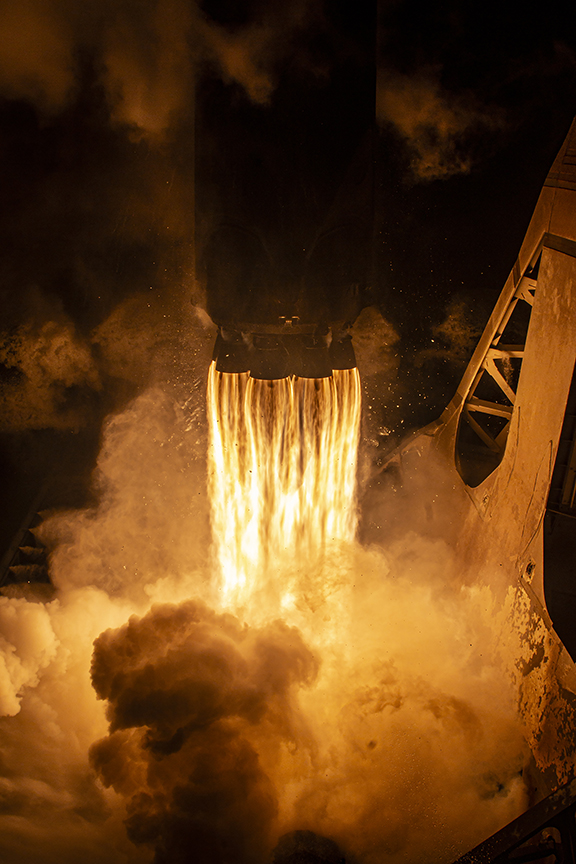
On March 31, after several days in quarantine near Cape Canaveral in Florida to avoid catching a bug before the flight, it was time to launch.
Centrifuge training had given some practice with the tremendous G-forces of a rocket tearing itself free of Earth's gravity, but even that didn't compare to the 4.6 Gs of the real thing. It was enough for them to feel their organs compress, said Philips. But it didn't last long.
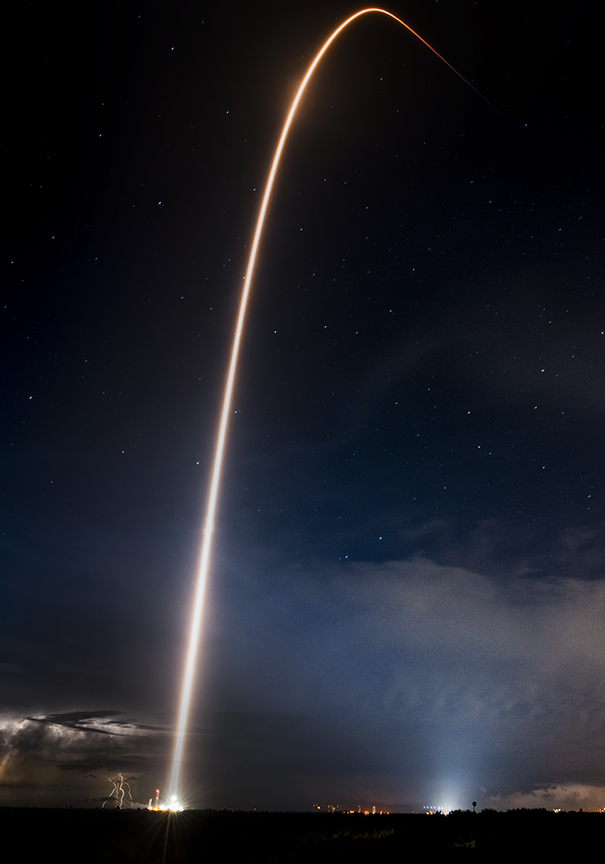
Kármán line
They cleared what is called the Kármán line, 100km above the Earth, at which point they were officially astronauts. Soon, the main engine expended its propellant and fell away. Almost immediately, the second engine kicked in, propelling them to an altitude of 200km. From there, onboard thrusters lifted the capsule into orbit, some 450km above the Earth.
The first sign of microgravity Philips noticed was the loose ends of his restraint straps beginning to float. At the same time, a mascot that astronauts call the Zero G Indicator began to float around the 2.5-meter-wide capsule. For this mission, their Zero G Indicator was a stuffed polar bear wearing an emperor penguin necklace.

This wasn't just a nod to Philips' background or where they met. This was the first time a spacecraft was planned to orbit the Earth via the Poles. From the 1957 launch of Sputnik until now, they have all been, from our perspective, "horizontal" orbits, not vertical.
"Because of our polar orbit, the Earth rotated beneath us, so we passed over every part of it," Philips told ExplorersWeb. "We're told this is a blue planet, because of all the oceans. But we were often over whiteness."
Pure silence
In orbit, Philips noticed how quiet it was. Freed from gravity and without the friction of the atmosphere to slow them, they flew (or rather, fell) around the Earth with only occasional need for the booster to kick in, to keep their orbit from deteriorating. When it fired, sparks appeared outside the window, like a little fireworks show.
SpaceX broadcast the launch on its website, and a program called Zero Six Zero showed the Earth in more or less real time, with a simulated version of the capsule moving above it. In almost no time, they made their first pass over the South Pole. Forty-five minutes later, they flew over the North Pole. Orbiting at 27,000kph, it took them just three-quarters of an hour to travel halfway around the world.
Every day, they went through multiple phases of darkness and light. They made 55 orbits in all. Always, Philips delighted in "the sheer joy of microgravity."

"What surprised me is how quickly I adapted," said Philips. "I'm sensitive to motion sickness, and I was likely to get terribly space sick. But the first day was great. On the second day, we all experienced a little nausea but quickly recovered."
A warm capsule
The interior temperature of the capsule ranged from 24˚ to 28˚C -- warm for polar travelers. When they needed to sleep, they climbed into thin sleeping bags and just floated around above their seats, bumping lightly into one another as they slept.
During the day, drifting around in the cramped space, they were often "a tangle of limbs," said Philips. His experience of being stuck in a small tent in Antarctic blizzards for three or four days at a time came in handy here.
Besides the otherworldly sensation of microgravity, everyone's favorite experience was their time in the Plexiglas cupola — a clear dome atop the capsule, just big enough for one person at a time. From there, they could take turns looking at both the blackness of space and our amazing planet below. The Plexiglas was solid enough to repel radiation and any micrometeorites that might strike it. During launch and splashdown, a protective nosecone covers the cupola.
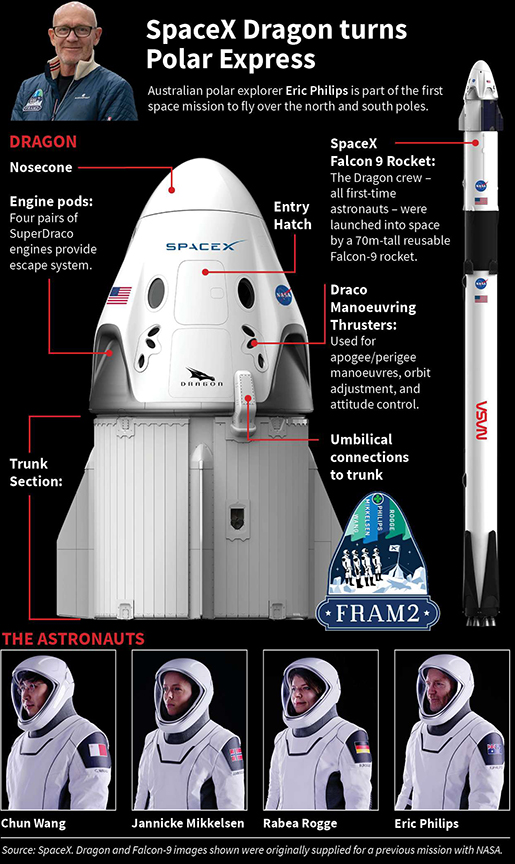
Philips knew from his prior reading that, contrary to the old myth, the Great Wall of China is not visible from space -- and sure enough, it isn't. But he did notice at night how bright China was with artificial lights, "far more than any other country."
What he saw
He also identified other areas, both natural and manmade: their launch site at Cape Canaveral, the mountains of Alaska, and Svalbard, the archipelago that brought them all together. Philips also made out parts of Queen Maud Land in Antarctica, although at this time of year, darkness or twilight had settled over much of the White Continent.
The crew had 11 large satchels tucked away in a cargo section, containing food and water for five days. "It was like packing a sled," recalled Philips. The Australian was even able to enjoy coffee in space, although it probably didn't measure up to the typically excellent coffee in his own country.
For unclear reasons, SpaceX has always been shy about its onboard toilet facilities, and Philips and the others had to sign an NDA not to discuss it. Some space aficionados have pieced together information about it, however. Philips admitted that on such a short-duration flight, astronauts are administered enemas before launch to simplify the first couple of days.
700 astronauts
Since Yuri Gagarin, there have been almost 700 astronauts, but counting these four, there have only been 11 tourists who have gone beyond suborbital experiences and into outer space. As part of their program, they performed some 22 experiments, including taking the first X-ray in space and growing mushrooms. Cinematographer Jannicke Mikkelsen filmed. But largely, it was about soaking up an out-of-the-world experience.
When it came time to descend, they packed everything away -- including the Zero G Indicator -- put on their suits and strapped themselves in. "It was like being in a sailboat and preparing for an impending storm," said Philips. "You do your best to prevent items from flying around."
Their reentry also generated 4.6 Gs, but their brief time in weightlessness made it feel even more forceful than during the launch. Meanwhile, the temperature outside the capsule rose to 2,000˚C from friction in the atmosphere.

Two drogue parachutes deployed at about 5,500m in altitude while Dragon was moving at approximately 560kph. At about 1,800m, the drogues pulled out the four main parachutes. The Dragon hit the water at about 25kph off Oceanside, California -- the Dragon's first Pacific splashdown.
A ship waiting five kilometers away then came and winched the capsule on board. All the astronauts were able to exit the hatch by themselves, although one was a little shaky walking to the medical bay.
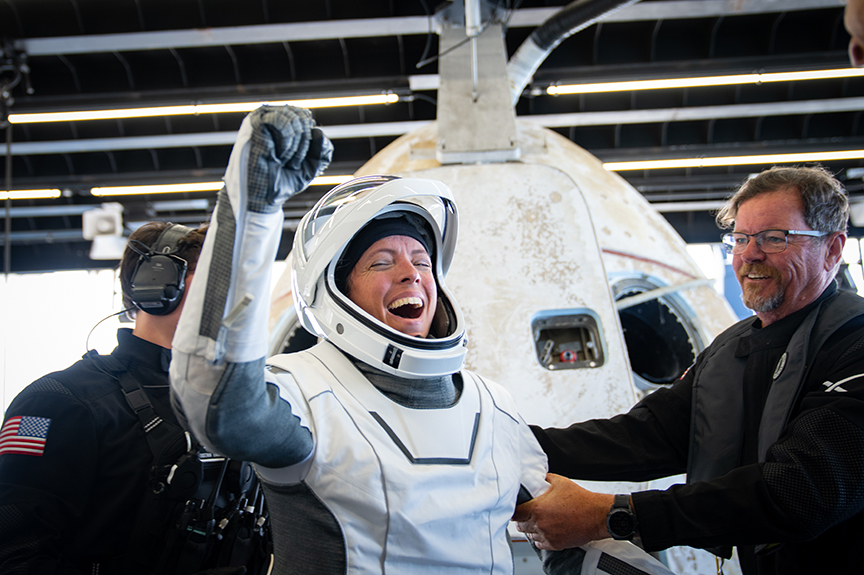

'A hurricane raged in my mind'
But after such an intense, at times ecstatic experience -- microgravity, seeing our planet for the first time from space -- there was bound to be a hangover. Philips recalled:
At the medical bay, my body went into shutdown. It was difficult to communicate with people in any meaningful way. A hurricane was raging in my mind. I could answer questions like, 'Are you in pain?' with no problem, but for two or three days, I couldn't describe the experience.
Days later, they still experienced floating sensations. Once at breakfast, Philips imagined he could float over to the buffet to get his food.
While their extraterrestrial experience made some past astronauts a little "spacey" in their afterlife on Earth, Philips isn't concerned.
"I'll remain the staunch skeptic I've always been," he says.

The year is 2021. On Earth, COVID-19 rages. NASA is finally about to launch the James Webb Space Telescope (JWST), prophesied to usher in a new era of astrophysics. And a Cambridge professor named Nikku Madhusudhan writes the unobtrusive first entry in his to-be trilogy of papers on nearby exoplanet K2-18b.
Madhusudhan and his two collaborators propose a new category of planet, which they dub a "Hycean" world. Much larger than Earth but smaller than Neptune, Hycean worlds would boast water oceans under a hydrogen-rich atmosphere. In terms of habitability, they would be more flexible than rocky worlds like Earth. Their atmospheres would keep their temperatures stable. They might even have plentiful aquatic life.
Flash forward to 2025, and astronomers have yet to confirm the existence of Hycean planets. But last week, Madhusudhan's team at Cambridge claimed the discovery of potential biosignatures on K2-18b, one of their candidate Hycean worlds. The biosignature in question is the molecule dimethyl sulfide, largely produced on Earth by phytoplankton.
Headlines around the world have run rampant with this sign that we might not be alone. However, what many outlets leave out is the history of the claims in question and the concerns raised by a host of astronomers, many of whom are deeply enthusiastic about the search for extraterrestrial life. The first "hints" of possible life, reported by the Cambridge team in 2023, met with widespread derision among the astronomical community. The same is true for this new evidence in 2025.
That's not to say that the new results are obviously false, or even that aliens are definitively not involved. But the story of dimethyl sulfide on K2-18b isn't a simple one.
JWST is the best in the game, but the game is a hard one
Sitting at 1.5 million kilometers from Earth, JWST is the premier instrument in the solar system for observing exoplanetary atmospheres.
Under irradiation from their host star, atoms and molecules tense up, absorbing light at specific wavelengths. When they relax again, they emit that light. Observing patterns of missing or surplus light allows astronomers to identify the chemistry of the universe.
Much of the field of astrochemistry focuses on either the diffuse gas in interstellar space or the dusty rings around protostars. While not simple, these systems don't hold a candle to the complexity of exoplanet atmospheres. Planets have so much gas, such turbulent atmospheres, and are so irradiated by their host star that their light signatures are a blurry mess. Different atoms and molecules all jockey with one another for space. If astrochemists typically deal with barcodes, exoplanet atmospheres are like identifiers from the 17th century, stored in a damp warehouse, half-eaten by moths.
Oh, and if you want to take a photo of it, you have to do it while it's on the hood of a car with its brights on. The light from stars overwhelms anything from the planet. Astronomers use JWST to analyze the light coming from the star while the planet is in front of it, and compare that to the light coming from the star while the planet is behind it. This technique, called transit spectroscopy, separates the light from the star and the light from the planet. It's also very, very difficult.

'Possible' biological activity
In October of 2023, Nikku Madhusudhan and his team published the results of their JWST observations of K2-18b. Their paper, entitled Carbon-bearing Molecules in a Possible Hycean Atmosphere, drew less attention for its carbon-bearing molecules and more for its discussion of dimethyl sulfide.
Unlike many other kinds of spectra, astronomers can only parse exoplanet spectra using complex models. These models run through different options -- more methane, less methane, more ammonia, less ammonia but at a higher temperature, etc. -- to find the best fit. But the models require educated guesses on what molecules might be in the atmosphere. The chosen molecules can greatly affect the model's conclusions.
So when the Cambridge team ran their models on their JWST spectra of K2-18b, they limited the options to typical molecules found in exoplanet atmospheres: water, methane, carbon dioxide, and so on. And then, building off their 2021 work on Hycean worlds, they added five molecules they identified as biosignatures. These included dimethyl sulfide.
The best-fit model incorporated dimethyl sulfide at low confidence. According to their model, there was a 66% chance they had detected dimethyl sulfide, and a 33% chance it was random noise. Further muddying the issue was the fact that the JWST instrument used has a gap in the region where dimethyl sulfide is strongest.
The authors theorized that the dimethyl sulfide might originate from an ocean filled with algae-like life, despite the lack of other chemical byproducts associated with phytoplankton. They admitted, however, that future observations were required.
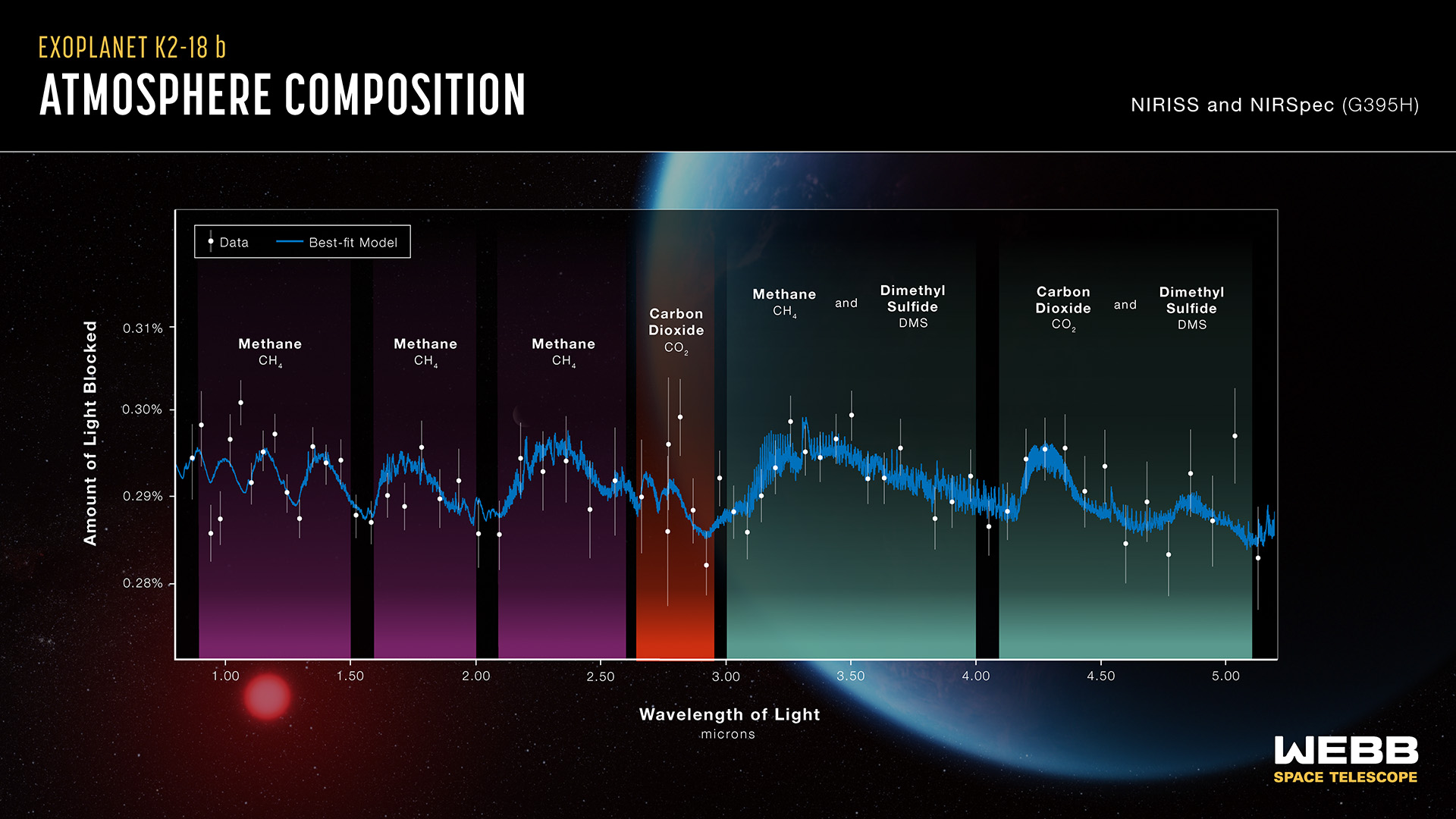
Follow-up observations on dimethyl sulfide
“This is a revolutionary moment,” Nikku Madhusudhan told The New York Times in an article published last Thursday. His new results were soon to be published in The Astrophysical Journal Letters. A deluge of comments on the NYT piece asked to read the actual paper, to no avail until the following day, when the press embargo lifted before the actual paper came out. “It’s the first time humanity has seen potential biosignatures on a habitable planet,” the author enthused.
The Cambridge team's new paper reports on follow-up observations using a different instrument on JWST, this time without a gap in the region of interest. Their models came back with higher confidence this time. They also returned a hit for dimethyl disulfide, a relative of dimethyl sulfide and another potential biosignature.
Many astronomers noted the results were tentative, including Madhusudhan himself. "It is in no one’s interest to claim prematurely that we have detected life," he told The New York Times. But that didn't temper his enthusiasm. “Given everything we know about this planet, a Hycean world with an ocean that is teeming with life is the scenario that best fits the data we have."

The pushback
Not everyone is as thrilled as Madusudhan.
ExplorersWeb spoke with Anthony Remijan, an astrochemist and interim director of Green Bank Observatory.
"There are probably dozens of molecules that can fit the extremely low resolution, low sensitivity of the 'features' seen in the JWST spectrum," said Remijan. "To claim they can be attributed to a singular, unique molecule such as DMS [dimethyl sulfide] is an extraordinary claim. As such, it should be reinforced by extraordinary data, which is not what we have here."
In fact, the new paper doesn't address a recent reanalysis of the 2023 data by a separate team that didn't find any evidence of DMS or even that K2-18b actually has an ocean. Some work has suggested K2-18b might be covered in magma rather than water, and therefore not a prime candidate for phytoplankton. Perhaps most crushingly, several recent papers show that dimethyl sulfide doesn't even need life to exist. It's also found on comets, which are not notable hotbeds of algae.
Remijan is particularly concerned about the validity of dimethyl sulfide as a biomarker.
"Over the past decade, interstellar urea was confirmed in the [interstellar medium] where at one point, urea was thought only to be formed by biological processes," he pointed out. Urea is the main component of urine. "Obviously, this is not the case in the [interstellar medium]."
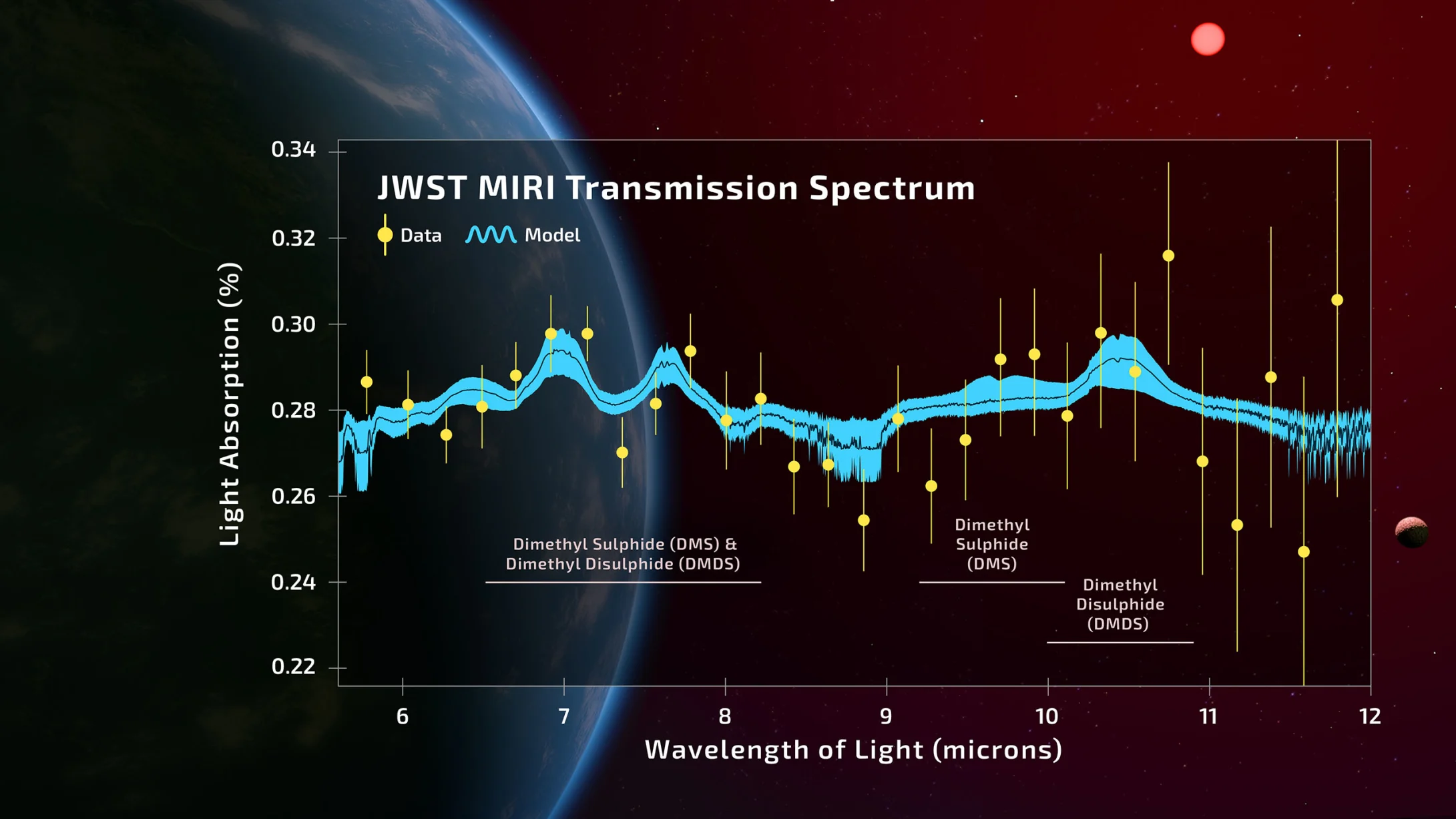
'Practitioner vs commentator'
The Cambridge team acknowledges the uncertainties, but stand by their conclusions. When an interviewer brought up the biosignature issue on BBC Radio 4, Madhusudhan said, "This is the difference between a practitioner and a commentator. From a practitioner's point of view, this is as good as it gets in science, and you just have to recognize it. But for that, you have to be in the field, not outside."
As it happened, the interviewer questioning him was Chris Lintott, a published exoplanet astronomer.
In the press, too, some skeptical voices have tempered the hope for aliens. A scathing article in The Atlantic noted that "the word possible is doing load-bearing — if not Atlas-like work -- in these headlines."
Scientific American, meanwhile, interviewed Chris Lintott before his conversation with Madhusudhan on BBC Radio 4. "Dimethyl sulfide should exist in a chemical network," he told them. "If it’s produced by biology, it should break down, and the raw materials such as H2S [hydrogen sulfide] used to make it should be visible in the spectrum, too. They aren’t."
A blind search for life
The day after the Cambridge team's press release, Nikku Madhusudhan's former graduate advisor, MIT astrophysicist Sara Seager, published a paper of her own. Along with her collaborators, she analyzed the sensitivity and precision of JWST's instruments in relation to exoplanet atmospheres. What she found wasn't hopeful.
In a world racked by insecurity, political strife, and environmental degradation, it's no surprise that so many of us want to believe in life on another planet. But according to Seager, we'll have to wait.
She writes, "With JWST, we may never be able to definitively claim the discovery of a biosignature gas in an exoplanet atmosphere."
And Anthony Remijan adds:
"To invoke a biological origin suggests there is no abiologic way to form these molecules, which is simply not the case. We are just beginning to scratch the surface on how molecules can form in these extreme environments, where [it was] once believed that no molecule should ever exist in space, except for hydrogen. So even if DMS was found in space, there is likely an abiogenic process we haven't thought of yet that formed it."
Everything that falls into a black hole falls in at the same time. Perhaps in the distant past, some unfortunate alien astronaut was sent past the event horizon to explore what lies beyond. From our perspective, he is still falling across the threshold. He has been since he first fell in, back before his civilization crumbled, before his home planet tumbled into its sun, and that sun collapsed into a white dwarf.
From his perspective, he only just crossed it. What will he find on the other side? As of right now, physics only has guesses. In this week's Great Mystery of Outer Space, we cover the uncertain insides of black holes.

Black holes might be mysterious, but they're real
Albert Einstein believed black holes to be a grand mistake. They were a natural extension of his theory of general relativity, a set of otherwise airtight formulations of how gravity and light behave, but they could not possibly be real. After all, how could anything have mass if it was infinitely small? How could it trap light within it, thereby removing information from the universe?
He set out to disprove their existence in a 1939 paper, and while his conclusions were correct, he started from a set of assumptions that were not.
Unfortunately for Einstein, the existence of black holes has now been proven over and over again. First, by strange X-rays from a star being shredded apart by something massive. Then came the ultra-bright radio emission in the center of galaxies from disks of matter orbiting an invisible center. Strange orbits, things lurking at the heart of supernovae remnants, and huge jets of plasma in distant galaxies all added evidence.
In 2015, the Laser Interferometer Gravitational-Wave Observatory (LIGO) detected gravitational waves from a pair of distant black holes colliding. And finally, in 2019, the Event Horizon Telescope (EHT) succeeded in directly imaging the center of nearby galaxy M87. Black holes don't emit light, and the shadow they leave is visible against the bright plasma around them. The EHT images of M87's black hole shadow are the closest we can get to photos of a black hole itself.
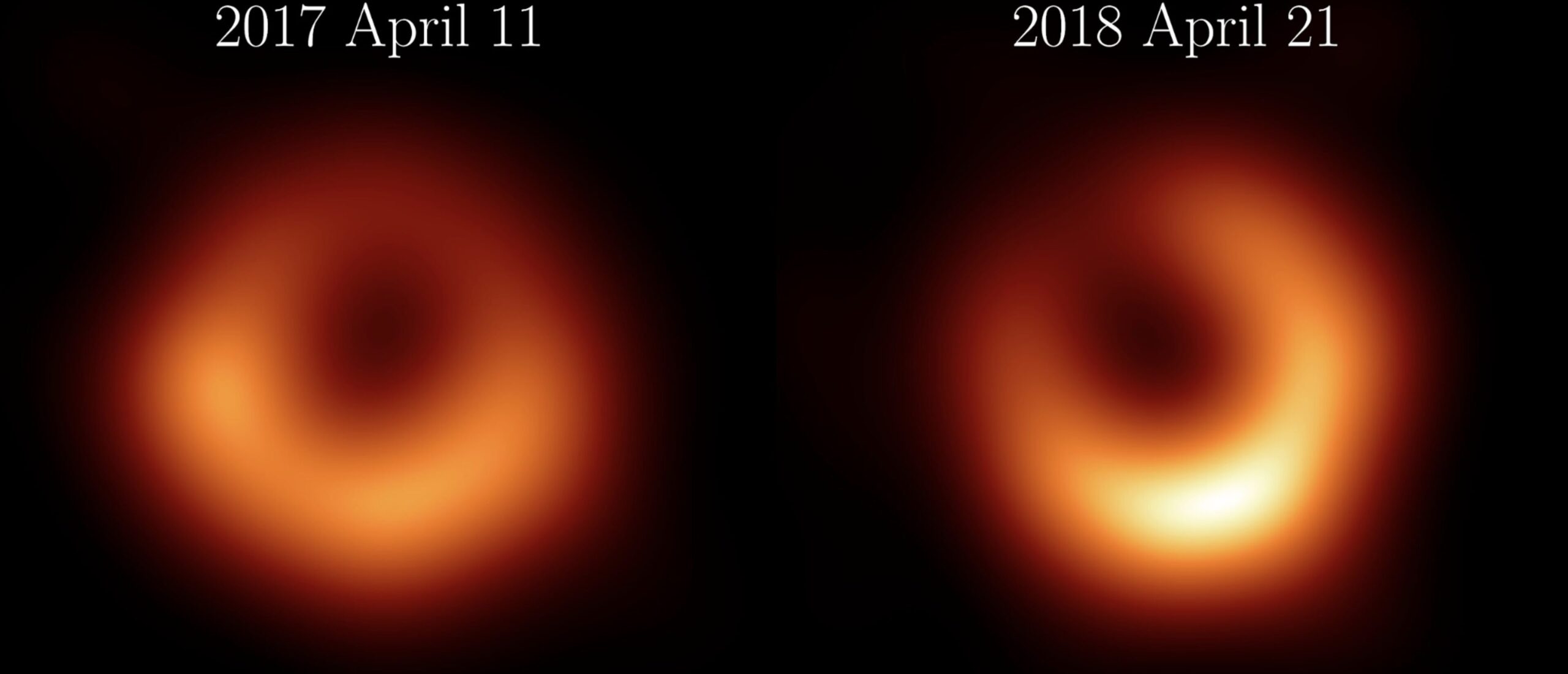
The anatomy of a black hole
Hear me out: black holes are the simplest objects in the universe. No, really, I promise. They only have two features of note.
The first is the event horizon, which isn't technically part of the black hole itself. Instead, it's the distance from the black hole where gravity becomes so strong that nothing, not even light, can escape the inexorable pull toward the center. Material caught in the black hole's orbit circles around the event horizon, disrupted by the strong gravity and by colliding with other matter. This is what causes the bright rings known as accretion disks and the flares called, in various different circumstances, quasars or active galactic nuclei.
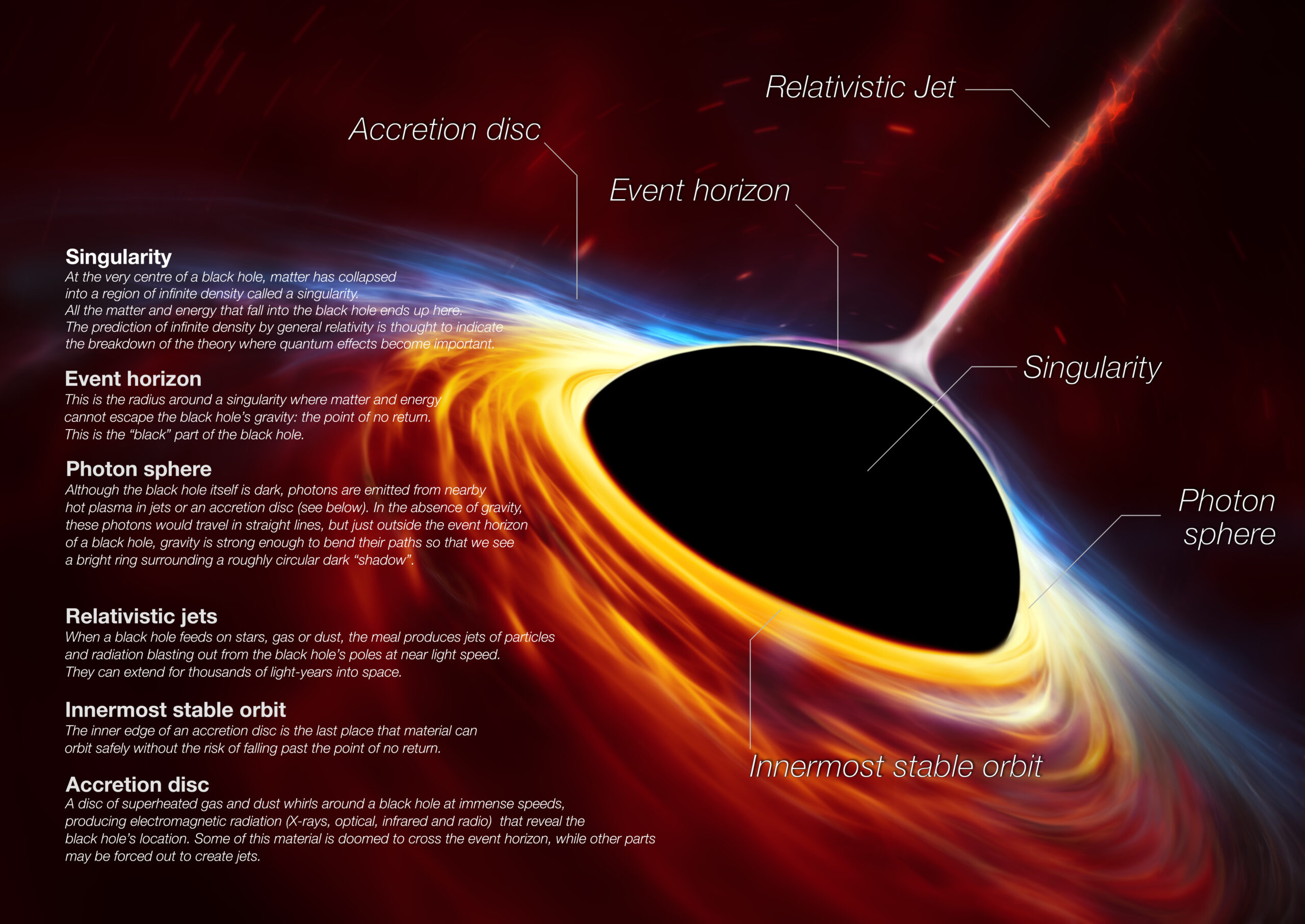
Right at the event horizon is where things get very, very strange, but it's a known kind of strange. The laws of general relativity predict that everything that crosses the event horizon crosses it at the same time, and to an outside observer, things crossing it freeze. In fact, before physicist John Wheeler coined the term "black holes," most physicists referred to them as "frozen stars." (Personally, I find the original name much more evocative.)
Far below, at the center, lurks the singularity. It is an infinitely small point or, in certain peculiar cases, an infinitely thin ring. It can weigh up to 1011 times the mass of the Sun. It has no dimensions, no volume, no time. But it has a lot of mass.
Just what is a singularity?
In the clumsiest terms, a singularity is a place that's very weird compared to everything else around it. The usual laws don't seem to behave so well around singularities; that's what makes them so singular. The idea of a point with infinite density makes sense on paper. It falls right out of Einstein's equations, much to the consternation of Einstein himself. But elsewhere in physics, the presence of singularities tends to indicate the theoretical models are missing a few components.
That's what many physicists believe is happening with the black hole singularity. The infinitely small point might not physically exist, but general relativity can't quite grapple with the true nature of black holes.
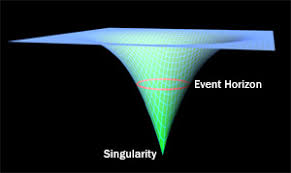
If the singularity is quite small but not infinitely so, then it's the purview of the theory known as quantum gravity. Unfortunately, quantum gravity barely exists.
The world of physics needs a mathematical formulation of how gravity behaves at small scales. It needs something revelatory and revolutionary, the quantum gravity equivalent of general relativity. That's a hard ask. The only widely popular framework to attempt it is string theory, an astoundingly beautiful theory of nature that, after more than 60 years of development, has yet to predict anything testable.
So the nature of the singularity remains, for now, a mystery.
Okay, but what would the 'singularity' actually do?
We don't know what a singularity is. Do we know what it does?
The answer is maybe. General relativity is a set of laws, not a recipe. Mathematically, there are many recipes for how space works that obey the laws of general relativity. Among these recipes (obscurely called "metrics" in physics lingo), several are more pertinent to our lived reality than the others.
The Schwarzschild metric, for instance, describes spacetime around spherically symmetric points, black holes included, as long as those points aren't spinning. The Kerr metric takes it a step further and describes spacetime around points that are spinning, which adds in a slew of bizarre effects with intimidating names like "frame dragging."
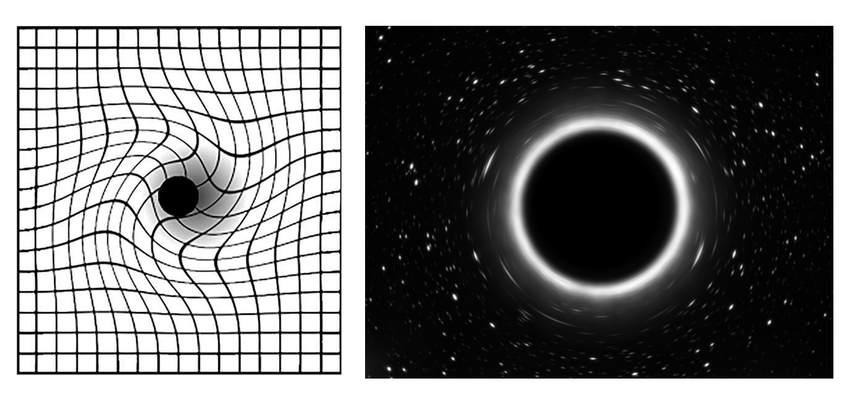
Buried in some of these distinct metrics are places where Einstein's equations give out. With well-understood metrics there as guide rails, physicists can fill in some of the blanks.
Currently, common thought is that the unknowable singularity at the center of a black hole probably devolves into three marginally more knowable ones as the black hole ages.
Singularities to watch out for
Three singularities in particular might haunt the insides of an aging black hole. We'll start with the worst news first: the BKL singularity. Formally named the Belinski–Khalatnikov–Lifshitz singularity after its discoverers, the BKL singularity is also known as the chaotic or oscillatory singularity. That's because as an observer approaches it, their body is subject to increasingly violent tidal forces that alternately stretch and compress them. If anything in a black hole is most out to get humans, it's the BKL singularity.
Then there's the ingoing singularity. All of the matter and light that falls into the black hole gathers together, falling for infinity. The gravity of this region can be so strong that it forms its own singularity. Good news, though: the region where matter congregates might be so thin that other objects can actually pass through it undeterred.
Similarly, the outgoing singularity arises from the light that bounces off things inside the event horizon and then travels backward, colliding with the ingoing singularity. What happens then is unclear, but once again, it might be avoidable.
The predictions above have serious mathematical credentials, but at the end of the day, the nature of the singularities are still unknown. So, too, is the state of matter inside a black hole. Can matter survive the event horizon? Where is it located? Is it converted to light or even gravitational waves?
We can only hope that a new theory of quantum gravity will illuminate the insides of a black hole.
High school student Matteo Paz has stunned the scientific community by identifying 1.5 million previously unknown objects in space.
By creating an artificial intelligence algorithm, Paz found a way to sift through vast amounts of space data and uncover millions of cosmic objects hiding in plain sight. His work didn’t just impress scientists; it earned him the top prize at the 2025 Regeneron Science Talent Search — a $250,000 award that goes to the most promising young scientists in the U.S.
It all started during Caltech’s Planet Finder Academy in 2022. The summer outreach program is designed to give high schoolers hands-on experience in astronomy, and Paz was hooked. The following year, he signed up for a six-week Caltech program that pairs students with campus mentors. Paz was assigned to Davy Kirkpatrick.
"The first day I talked to him, I said that I was considering working on a paper to come out of this, which is a much larger goal than six weeks," said Paz. "He didn't discourage me. He said, ‘OK, so let's talk about that.' He has allowed an unbridled learning experience. I think that's why I've grown so much as a scientist.”
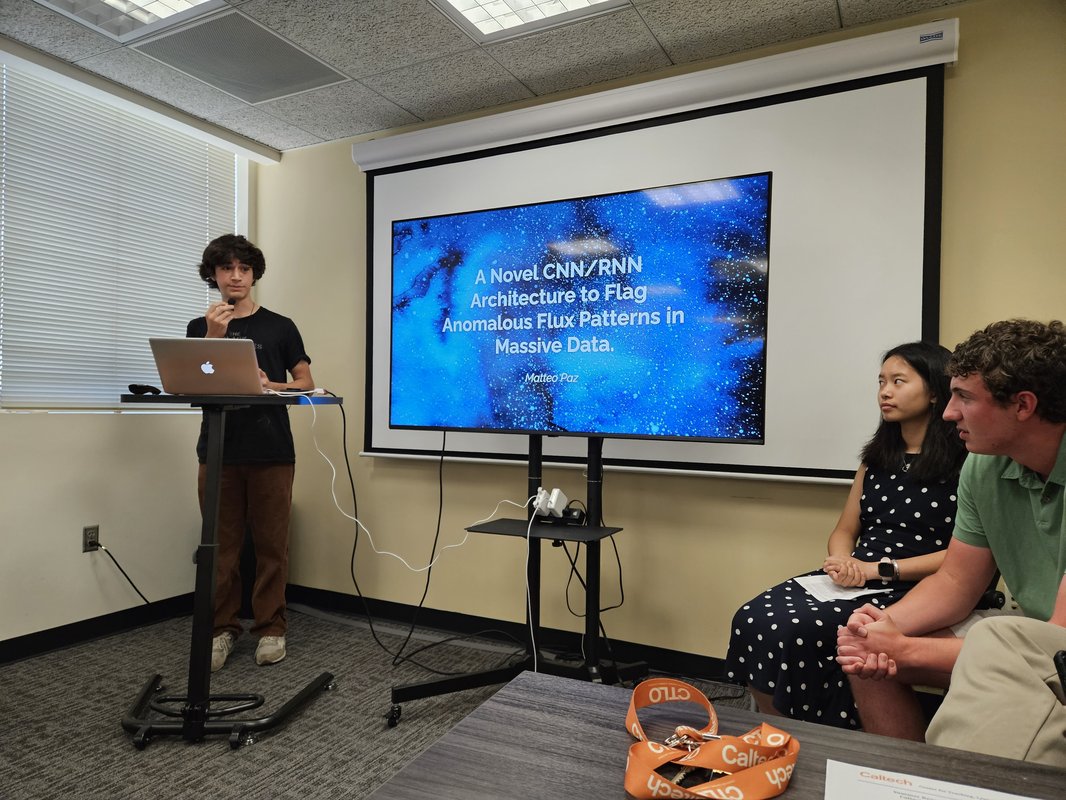
How do you make sense of so much information?
With encouragement from Kirkpatrick, Paz tasked himself with a daunting challenge: How do you process and make sense of nearly 200 terabytes of space data gathered by NASA’s NEOWISE (Near-Earth Object Wide-field Infrared Survey Explorer) telescope?
NEOWISE has been scanning the sky for asteroids for over a decade. At the same time, it has captured data on other variable objects. According to Caltech, these are “hard-to-catch phenomena like quasars, exploding stars, and paired stars eclipsing each other.” The NASA telescope was able to detect the varying heat of these objects, but the sheer size of the dataset made it impossible for human astronomers to comb through them.
With almost 200 billion rows of data, going through it by hand was never an option, and Paz never considered it. The 18-year-old had a knack for AI, coding, and computer science. Combining this with his substantial math knowledge (he has been studying advanced undergraduate math for the last few years), he created an AI model to sift through the data for him.
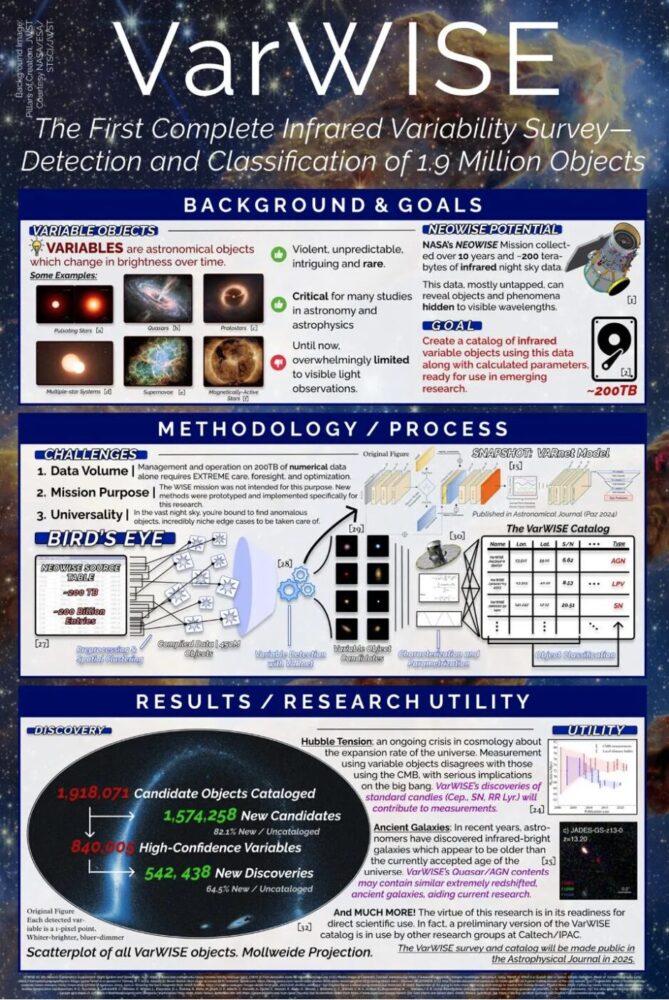
Matteo Paz/Society for Science
Machine learning
In the short six-week program, he began using machine learning to make an AI model that could recognize patterns in the infrared data — subtle signals that might indicate the presence of cosmic objects. Kirkpatrick acted as an astronomy consultant and helped him interpret the data.
The duo kept working on the project after the six weeks were up. By 2024, Paz was mentoring other high school students on the subject. Now the model can tear through the raw data from the NEOWISE telescope. They have made a jaw-dropping 1.5 million discoveries, each a potential new clue about the structure and history of our universe.
Since winning the 2025 Regeneron Science Talent Search, Paz hasn’t slowed down. He and Kirkpatrick hope to publish the complete catalog of newly found objects this year. Paz has also secured his first paid job. He is working at Caltech, continuing his research and collaborating with astrophysicists on how to scale his AI system for even bigger projects.
Imagine drifting alone in space, with no cord connecting you to anything. It’s the stuff of nightmares or the freedom of dreams, depending on how you look at it.
In 1984, four astronauts did just that, and footage from their untethered flights is again making the rounds, reminding everybody of how incredible -- and frightening -- the emptiness of space can be.

NASA astronaut Bruce McCandless II stepped away from the Space Shuttle Challenger on Feb. 7, 1984, using a jet-powered backpack called the Manned Manoeuvring Unit (MMU). He was the first human to float untethered in space. The image of him drifting alone above the Earth is considered the most terrifying space photo ever taken.
His spacewalk was not a stunt. It was the first demonstration of a cutting-edge tool designed to help satellite repair and space station construction. Drifting 90 meters away from the shuttle, he showed that astronauts could operate freely in space. Until then, the idea had been purely theoretical.
Two days later, fellow astronaut Bob Stewart also donned an MMU, and both men leaped from the shuttle into space.
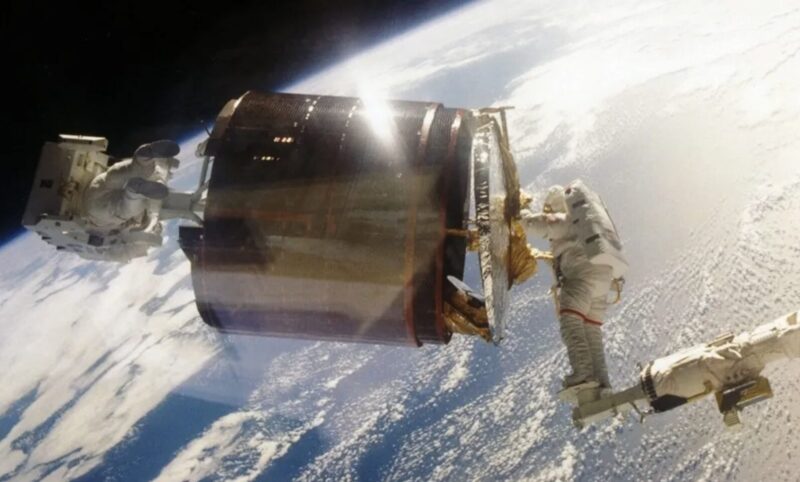
A complicated mission
Just months later, NASA would put the MMU to an even greater test. During a November 1984 mission, astronauts Dale Gardner and Joseph Allen donned MMUs for a space salvage mission. Two communications satellites had failed to reach their intended orbit. Rather than letting them become space junk, NASA decided to try and retrieve them.
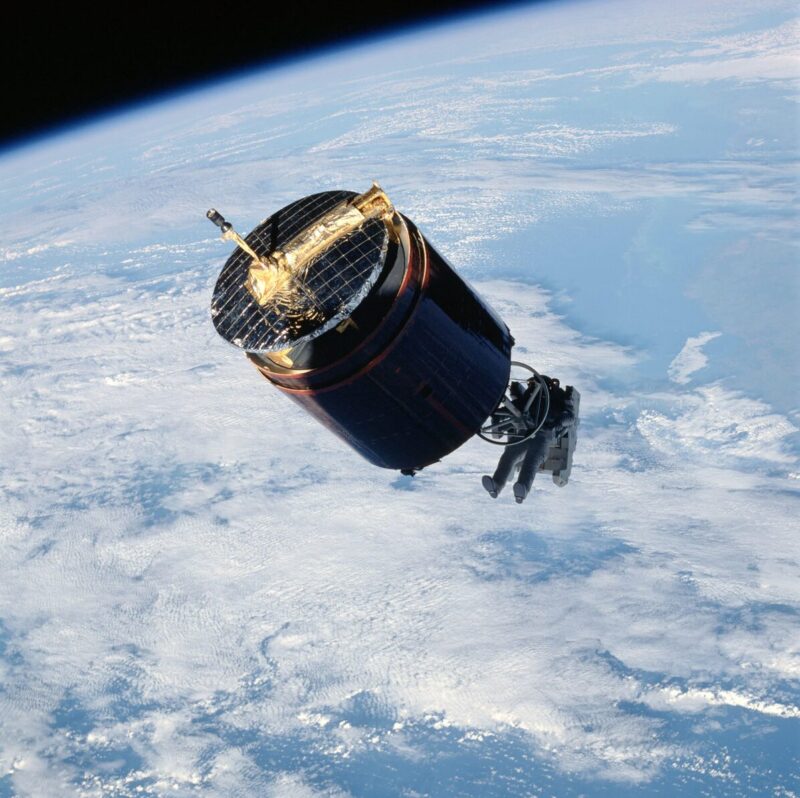
Once their space shuttle was within nine meters of each satellite, they began their untethered spacewalk. Allen went first. He flew out to the satellite and attached a capture device that secured it for transport back to Earth. Then Gardner did the same with the second satellite. Footage of the maneuvers looks straight out of a sci-fi thriller.
Despite its success, the MMU was short-lived. After just three missions, NASA retired it in favor of robotic arms and safer, tethered spacewalks. The risk of an astronaut being lost in the void was just too great.
In the summer of 1950, four men sat down for lunch together at Los Alamos. It was, at the time, the center of American physics, and these men were respected contributors to their field. Among them was Enrico Fermi, a giant in the fields of quantum mechanics and thermodynamics.
But the men were relaxing over lunch, and the conversation was not erudite. Nuclear physicist Emil Konopinski brought up a cartoon he had recently seen in The New Yorker, explaining why public trash cans were disappearing from the streets of New York City. The cartoon showed what was evidently a flying saucer with little green men filing toward it with the spirited-away trash cans.
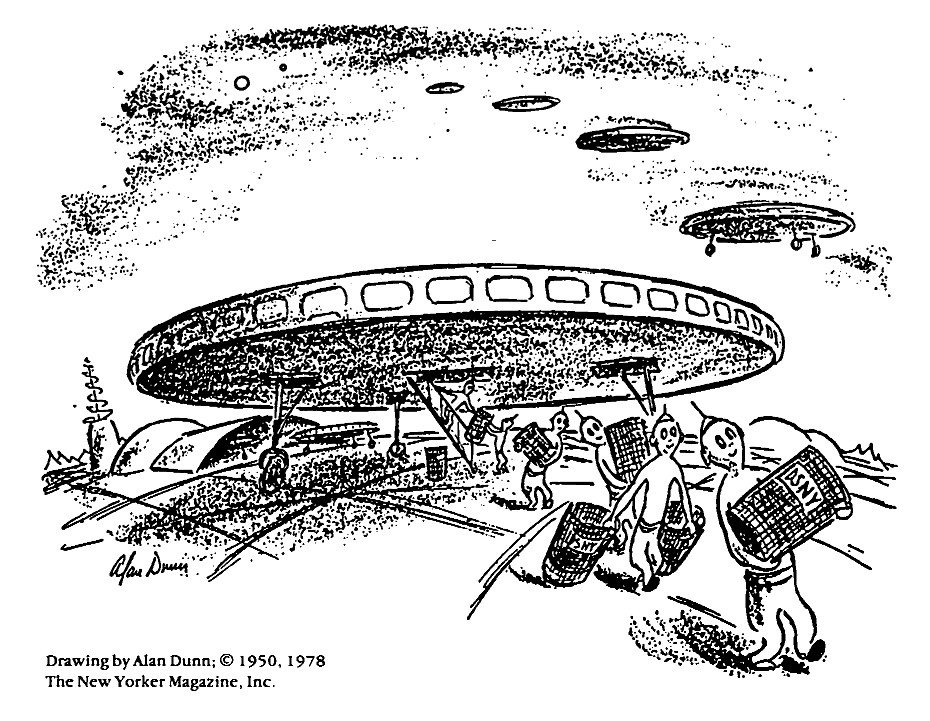
Well, Fermi pointed out, this was a very logical hypothesis. It explained both the regularity of UFO sightings and the strange disappearance of New York trash cans.
The group laughed and moved on. They finished lunch. Then, out of nowhere, Fermi exclaimed, "But where is everybody?"
He was talking about extraterrestrial life, and everyone at the table knew it. They tossed about some ideas but largely treated the matter as a joke.
"As far as our galaxy is concerned, we are living somewhere in the sticks, far removed from the metropolitan area of the galactic center," said physicist Edward Teller.
But the question stuck. It became known as Fermi's Paradox: if the Earth isn't special, and the Universe is so very big with so many stars, where is everybody?

The search for alien life begins
A decade passed. The Cold War kicked into high gear, driving scientific competition. Radio astronomy historian Rebecca Charbonneau told ExplorersWeb that the Cold War's technological advances spurred the search for extraterrestrial life.
"The launch of Sputnik in 1957 and the subsequent proliferation of artificial satellites — including early signals-intelligence platforms — made detecting non-human technosignatures suddenly plausible," she explained.
The thought of aliens began to captivate a fringe group of astronomers, notably Frank Drake. He convened a meeting on the subject at the National Radio Astronomy Observatory site in Green Bank, West Virginia.
"Drake had invited everyone he could think of with an interest in the scientific search for E.T. — all 12 of them — to the meeting," wrote Nadia Drake, his daughter.
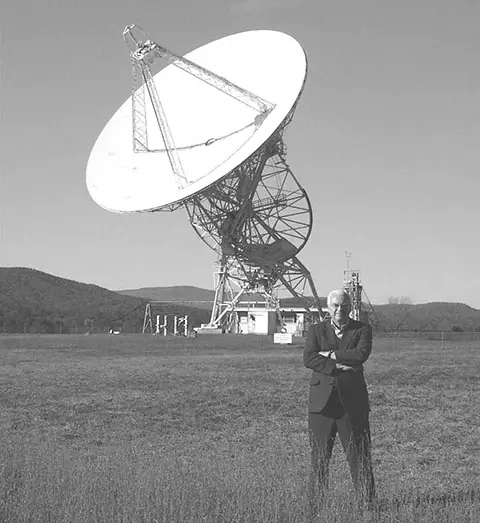
The Drake Equation
In order to guide the discussion, Frank Drake sat down and estimated the number of civilizations in the galaxy with whom Earth could communicate. It was a very simple estimation. The number of civilizations would be equal to the rate of star formation, times the fraction of stars with planets, times the number of habitable planets per solar system, times the fraction of habitable planets that actually lead to life, times the fraction of life-bearing planets with intelligent life, times the fraction of intelligent civilizations that develop a means to communicate in outer space, times how long those civilizations actually release signals.
At the time, astronomers had begun to understand the rate of star formation in the Milky Way. Everything else in the equation was a complete mystery.

When Drake formulated his estimate, astronomers had no confirmation that planets even existed around other stars. All logic suggested they would, but they were far too faint to detect with contemporary telescopes. So the field theorized, argued, and waited.
Astronomers took another two decades to confirm that extrasolar planets, or exoplanets, existed. That confirmation didn't come from any of the famous modern methods of exoplanet detection, such as light fluctuations or watching a star wobble back and forth. Instead, it came from a previous candidate for extraterrestrial communication: the strange dead stars known as pulsars.
Little Green Man 1
The discovery of pulsars dates back to 1967 when graduate student Jocelyn Bell Burnell noticed a strange repeating radio signal in her telescope data. She had no idea what to make of it and dubbed it "Little Green Man 1."

Unfortunately for the little green men, it eventually became clear that the signal came from a rapidly rotating object known as a neutron star. Neutron stars are incredibly dense and incredibly small, with a mass greater than that of the Sun but a radius the size of San Francisco. Every time they spin around, their off-kilter magnetic fields fling out regular radio emissions.
Jocelyn Bell Burnell had discovered the first example of one of the most exotic objects in the known Universe. (The Nobel Prize, of course, went to her advisor.)
The study of pulsars blossomed into a flourishing subfield. In general, pulsars are near-perfect clocks. While different pulsars have different periods, every radio pulse arrives at the Earth perfectly on time.
Not so for the pulsar that Aleksander Wolszczan and Dale Frail observed in 1992. The arrival time of each pulse wobbled up and down: now just before expected, now just after.

First step: finding exoplanets
Wolszczan and Frail tried modeling the noise as a companion star to the pulsar. It didn't work. Every time they succeeded in getting rid of one part of the wobble, another part stepped forward to dominate.
They began thinking outside the box. The best solution was for not one but two companions to the pulsar: planets just a little bit more massive than the Earth. The varying pulse time of arrival came from the pulsar moving back and forth very slightly in its orbit such that each pulse had to travel a subtly different distance to reach the Earth.
Exoplanets existed. Grappling with the first two terms in the Drake Equation was suddenly far more tractable. Onto the next step: How many of the planetary systems out there had habitable planets?
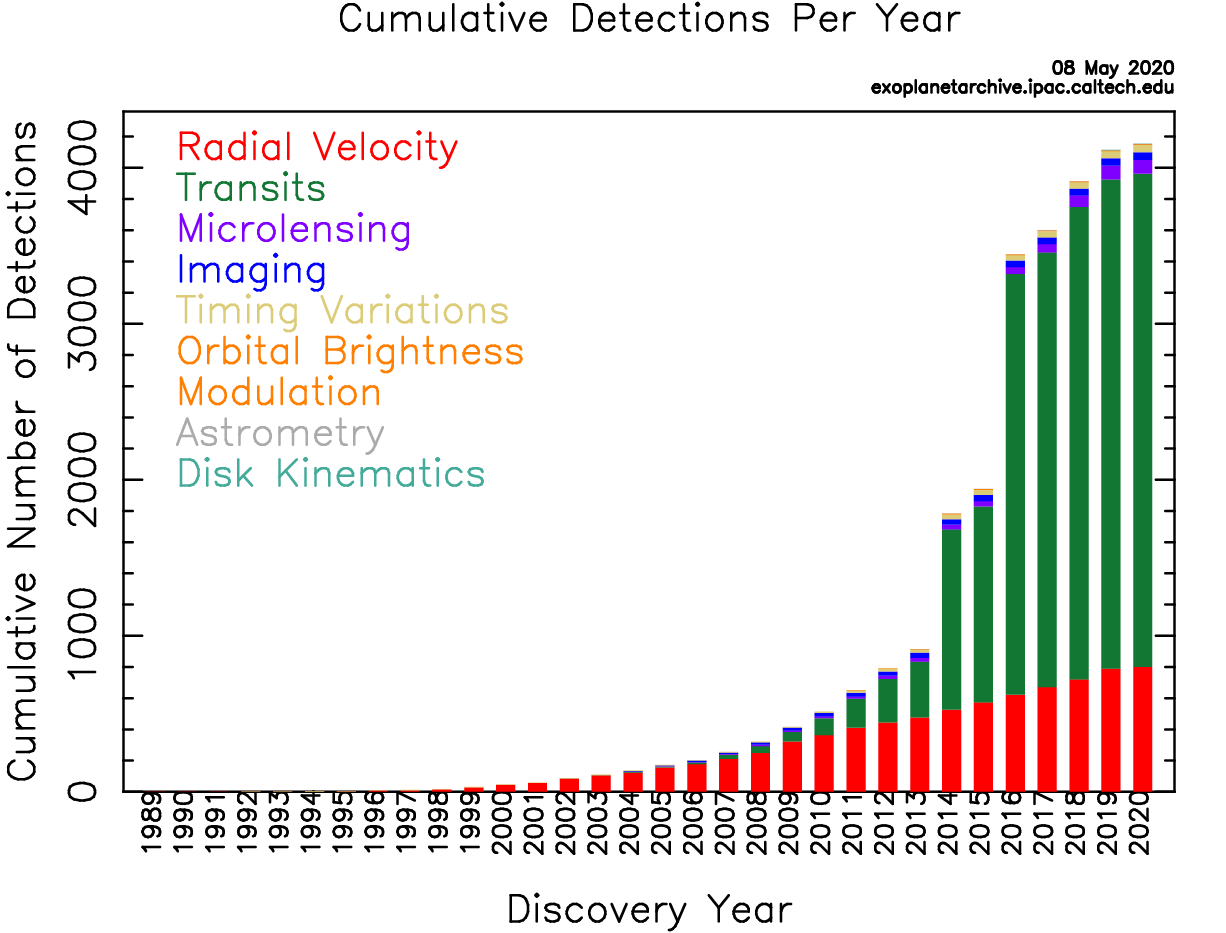
Exoplanets were no longer the domain of the theorists. As the 21st century rolled ahead, new high-sensitivity telescopes allowed the detection of exoplanets around all kinds of stars. Today, we know of almost 6,000.
It took until 2014 for the Kepler satellite telescope to detect anything that looked like Earth. The first such exoplanet is the memorably named Kepler-186f, an Earth-sized planet orbiting at a habitable distance from a red dwarf star. The atmosphere and climate of Kepler-186f differs dramatically from that of Earth, but it's not a stretch to imagine other lifeforms might thrive there.
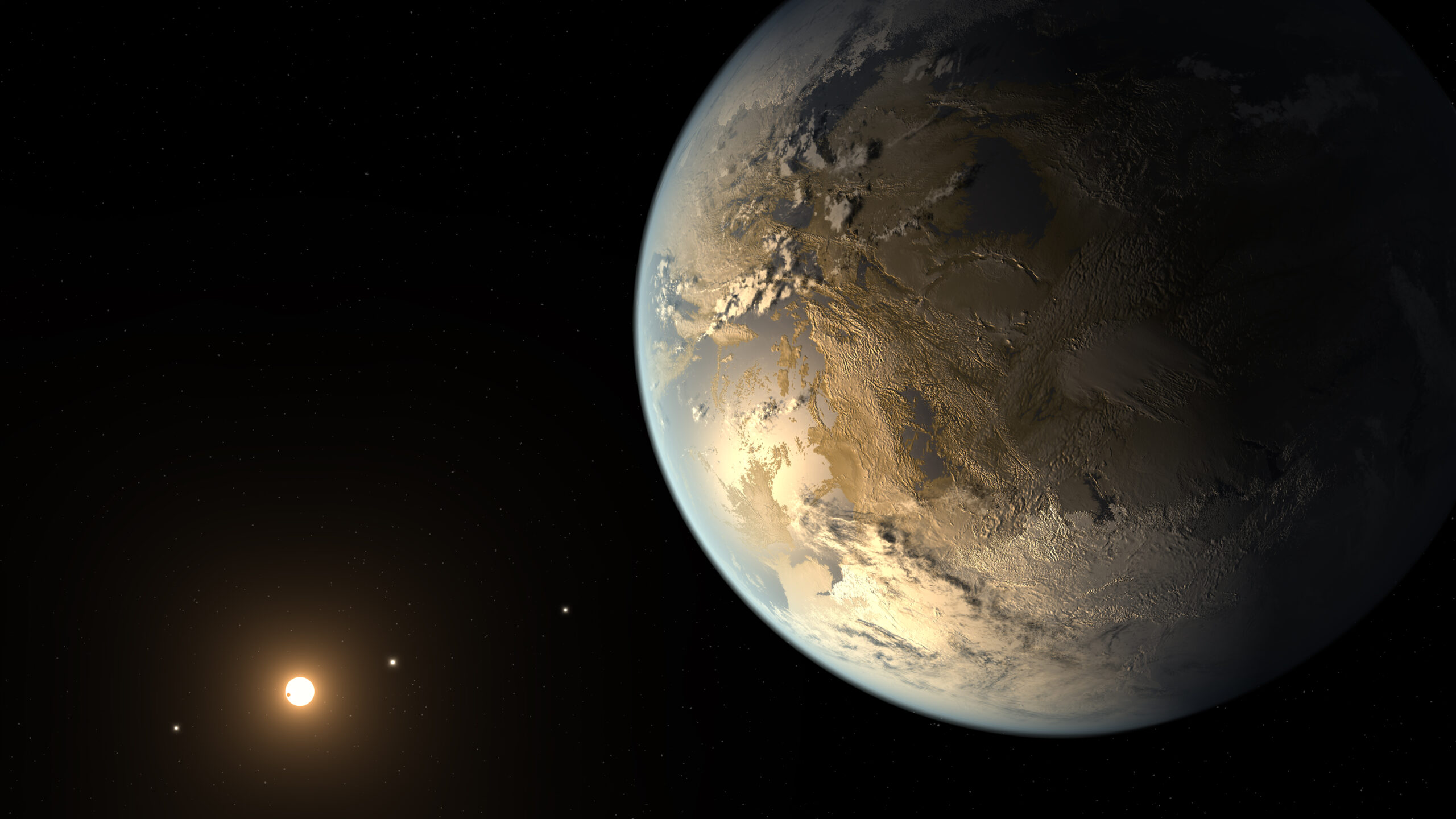
Nowadays, terrestrial-style exoplanets are so numerous that they comprise an entire subfield. The NASA Exoplanet Encyclopedia tracks all of them, including their mass and how habitable they seem. Statistics of exoplanet habitability are no longer a mystery.
So where's the life?
When Drake formulated his equation in 1961, astronomers had only pinned a value on the first term. Now, the first three are well-understood and understood to be high. In short, there are a lot of stars out there, a lot of those stars have planets, and a lot of those planets are habitable. So where's the life?
For the fourth term (the regularity with which life emerges on habitable planets), astronomers must turn to theoretical estimates by paleobiologists and geochemists. For the fifth (the fraction of intelligent life), evolutionary biologists. The sixth and seventh terms are the realm of theorists doing work that is important but so fringe that they don't have a field to call their own.
The fact remains that, as far as we know, we have never been contacted by any extraterrestrial species. So one of those terms must be exceedingly low, or else something stranger is going on.
Possible answers
Perhaps the simplest way to answer the Fermi Paradox is that life rarely forms in the universe. With the fourth term in the Drake Equation close to zero, humans could expect never to get a call from any nearby neighbors. The nearest extraterrestrial life might be across the Milky Way or in another galaxy entirely. This was the interpretation favored by paleobiologist Stephen J. Gould.
Other biologists posit that the fifth term is the blockade. In this scenario, life abounds nearby, but we're the smartest kids on the block. Astrobiologist Charles Lineweaver points out, "Dolphins have had about 20 million years to build a radio telescope and have not done so."
It's also possible that the sixth term is practically zero. Other intelligent life might exist, but can't communicate with us. Still on about dolphins, Lineweaver adds, "If you live underwater and have no hands, no matter how high your E.Q., you may not be able to build, or be interested in building, a radio telescope."
Those three solutions posit a universe where humans are special. They are also the happiest possibilities. Another common hypothesis is that the seventh term in the Drake Equation -- the length of time for which civilizations communicate -- is very short because natural catastrophes regularly cause the extinction of intelligent life. Asteroids, gamma-ray bursts, and volcanoes are all potential culprits.
A darker theory
The darker version of that theory is that intelligent life inevitably eradicates itself through nuclear war, climate change, or other disasters. Carl Sagan argued that self-destruction was common, but civilizations that avoided it would endure for eons.
"Perhaps there is a waiting time before contact is considered appropriate," he wrote, "so as to give us a fair opportunity to destroy ourselves first, if we are so inclined."
The Dark Forest Theory, named after the book by science fiction writer Cixin Liu, posits that intelligent life wouldn't destroy itself but others. Other science fiction writers such as Dennis Taylor have also flirted with this idea, painting a galaxy in which one species of alien has eradicated most other intelligent life. Stephen Webb suggested that since humans are superpredators, successful alien life would be as well.
It's also possible intelligent alien life exists, but we can't begin to comprehend it. It might not appear as life to us, or as intelligent. It might choose not to communicate for reasons that would baffle us. It might not want to leave its homeworld.
It might, in other words, be alien.
The official "10, 9, 8..." countdown has not quite begun, but later this morning, at 9:46 am ET, Australian polar guide Eric Philips and his three fellow astronauts will blast off into space from Florida's Cape Canaveral aboard SpaceX's Falcon 9 rocket. For the next three-and-a-half days, they will orbit the Earth via the North and South Poles -- an orbital track never done before.
For the 62-year-old Philips, this late-career opportunity came out of the blue. He was guiding a ski tour on Svalbard. One of the participants, Chun Wang, was interested in talking about space. It turned out that Wang had made a fortune in the early years of bitcoin mining and wanted to buy a commercial space flight from SpaceX. He invited Philips to join him, along with two other Svalbard acquaintances, Rabea Rogge and Jannicke Mikkelsen. The cost of the flight is undisclosed, but previous private missions on SpaceX cost around $200 million.
The four of them have been training at SpaceX headquarters near Los Angeles for the past several months. Now, weather permitting, the big day has arrived.
Among their many new experiences, Philips, who wears glasses, has learned to wear contacts for the first time so his glasses won't fog up inside the space suit. However, sometimes myopia temporarily clears up in zero gravity, so he might find that he no longer needs them -- at least for those three-and-a-half days.
You can watch the launch live and follow what they call the Fram2 mission, named after the famous Norwegian polar ship, here.
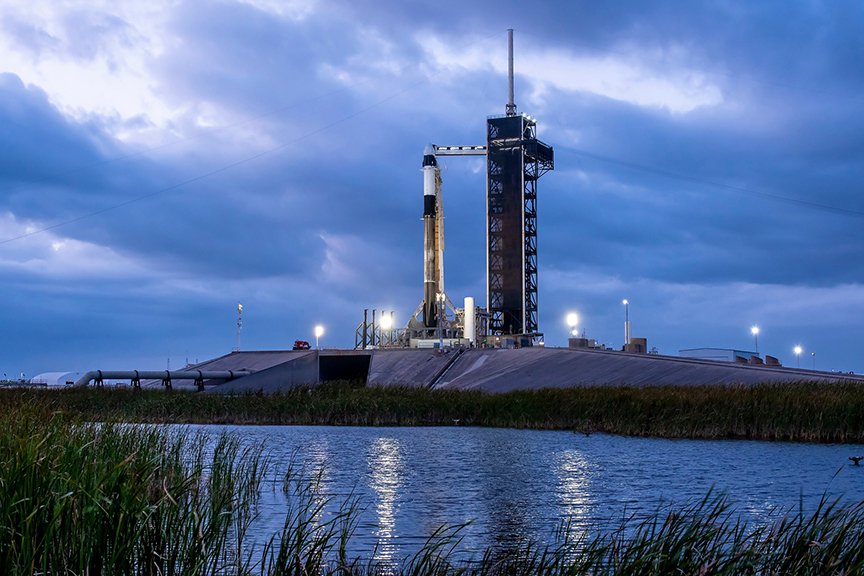
Before it shut down in 2022, a telescope in Chile captured one final gift for the world that has just been released: the universe's baby photos, just 380,000 years after the Big Bang.
These freckled photos of the early universe, at an instant known as the Cosmic Microwave Background (CMB), are the farthest back in time we can look. Observing the Big Bang or immediately after is not possible, and not just because of technical limitations.
Before the epoch shown in these images, the universe was so dense with plasma that light couldn't travel for more than a fraction of a millimeter without scattering off a proton or an electron. Everything just looked like a dense fog. Then the universe cooled enough to allow those charged particles to fuse into hydrogen and helium. Space opened up and became visible. The last photons from those first visible moments were preserved.
The photons set off through space. All of them were stretched by the expansion of space around them. Some became further stretched out by gravitational wells around galaxy clusters. Others received an energy boost. The patterns of the evolving universe imprinted themselves on these ancient photons.
Almost 14 billion years after their liberation, some of them hit the smooth white surface of a radio telescope located in the Atacama Desert of northern Chile.

Last observations
The Atacama Cosmology Telescope (ACT) is now closed for business. After 15 years of productive data releases, it saw its final light in 2022. However, the ACT team only recently released the polished versions of the telescope's last observations.
These images not only show the most precise, high-resolution observations of the Cosmic Microwave Background but they also cover more of the sky than ever before. The red and blue speckles represent regions of over- and under-densities -- places where, 14 billion years ago, the universe had just a little more or less plasma.
The new images confirm previous observations that the structure in the early universe maps onto its modern structure. Where there were slightly more photons in the primordial plasma now sit the most massive galaxy clusters. Fewer, and there's empty space.
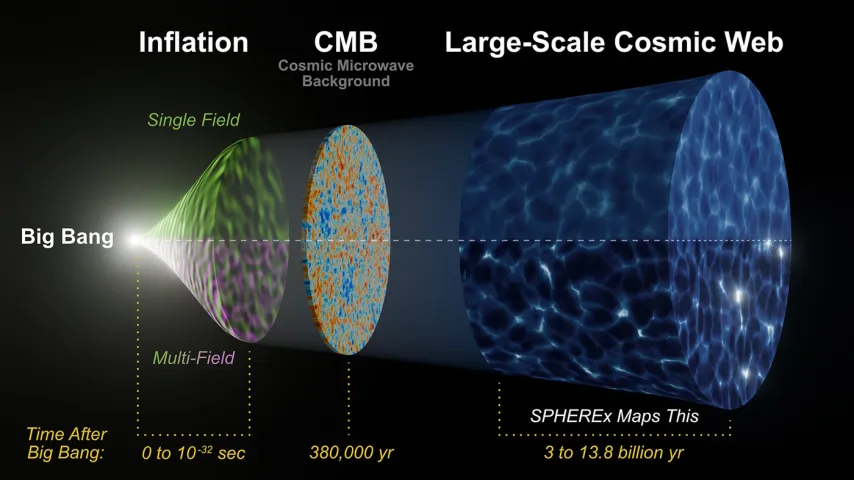
So far, general relativity holds up
Einstein's theory of general relativity, which predicts how matter and light interact with one another at large scales, is one of the best substantiated theories in modern physics. It also causes problems.
There appear to be four fundamental forces in nature: gravity, electromagnetism, weak, and strong. One set of physical laws known as the Standard model cohesively describes electromagnetism, the strong force, and the weak force. Gravity, though, has proven hard to mesh with the others.
Discovering that general relativity isn't quite accurate is the grand hope of those searching for one theory of physics that unites all four forces. Perhaps then, a new model of gravity will appear out of the cracks, one that slots nicely into the Standard model.
But general relativity has triumphed repeatedly so far, and the latest images from the ACT are no exception.
"The amount by which light bends around dark matter structures is just as predicted by Einstein’s theory of gravity," cosmologist Mathew Madhavacheril told Penn Today.
How polarized light fits in the early universe
Perhaps the most important part of these new observations is the detailed polarimetry. Polarimetry describes the measurement not just of how much light there is, or how much energy that light has, but in what direction the light is vibrating. Natural light is unpolarized, meaning that light waves traveling toward us may vibrate in any direction perpendicular to the line of travel.
It's easy to change that by sticking a thin grating in front of the light, only allowing one vibrational direction through. That's how polarized sunglasses work.
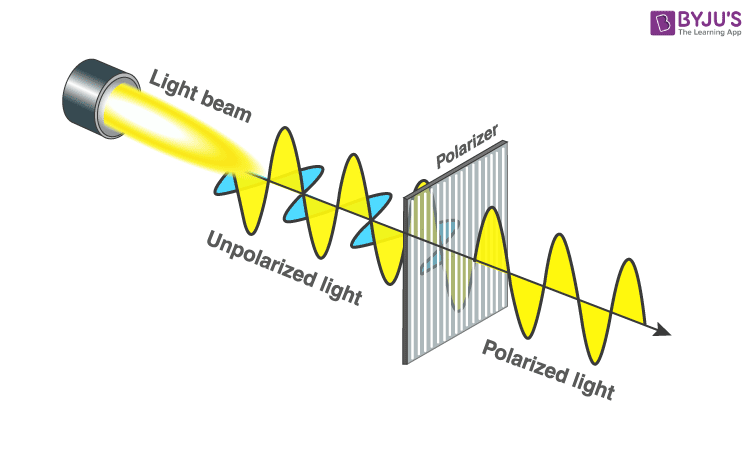
The polarization signal in the CMB sits at barely detectable thresholds. But ACT's new observations push past that threshold, and unlike the handful of other telescopes in the polarization game, they cover most of the sky.
Polarization goes beyond the effects of gravity from massive structures like galaxies. Microscopic quantum density fluctuations can alter the polarization of light.
Einstein's formulation of general relativity does not describe the quantum world. In fact, Einstein was uncomfortable with quantum mechanics and encouraged its proponents to better address its many peculiarities. While this leaves room for future physicists to etch their name in history, it would be a lot simpler if Einstein had just figured out everything for us.
He didn't. General relativity on the quantum (read: atomic) scale continues to confound us, not least because testing it in the lab is fiendishly difficult.
Fortunately, the new ACT data release is precise enough to contain clues about quantum gravity in its polarimetry. We just have to decode them.
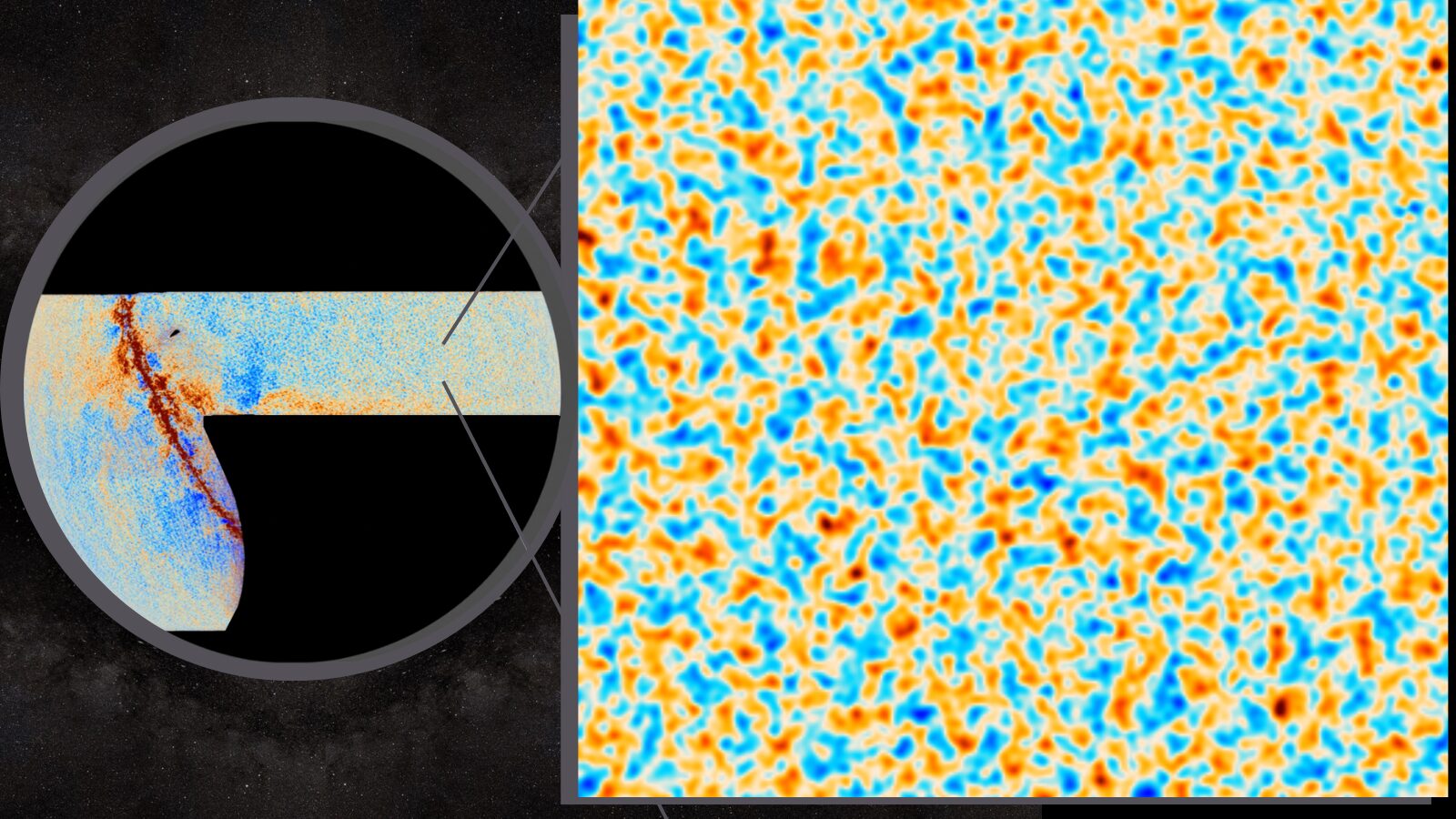
A team using the telescope atop Mauna Kea in Hawaii has just discovered 128 new moons orbiting Saturn.
Saturn, the sixth planet from the sun, was already the reigning champion of moon-having. A 2023 discovery of 62 new Saturnian moons put it ahead of Jupiter, which takes the silver medal with 95 recorded satellite objects.
Its new count of 274 means Saturn has more moons than every other planet in our solar system combined. This seems rather greedy and possibly bad form.
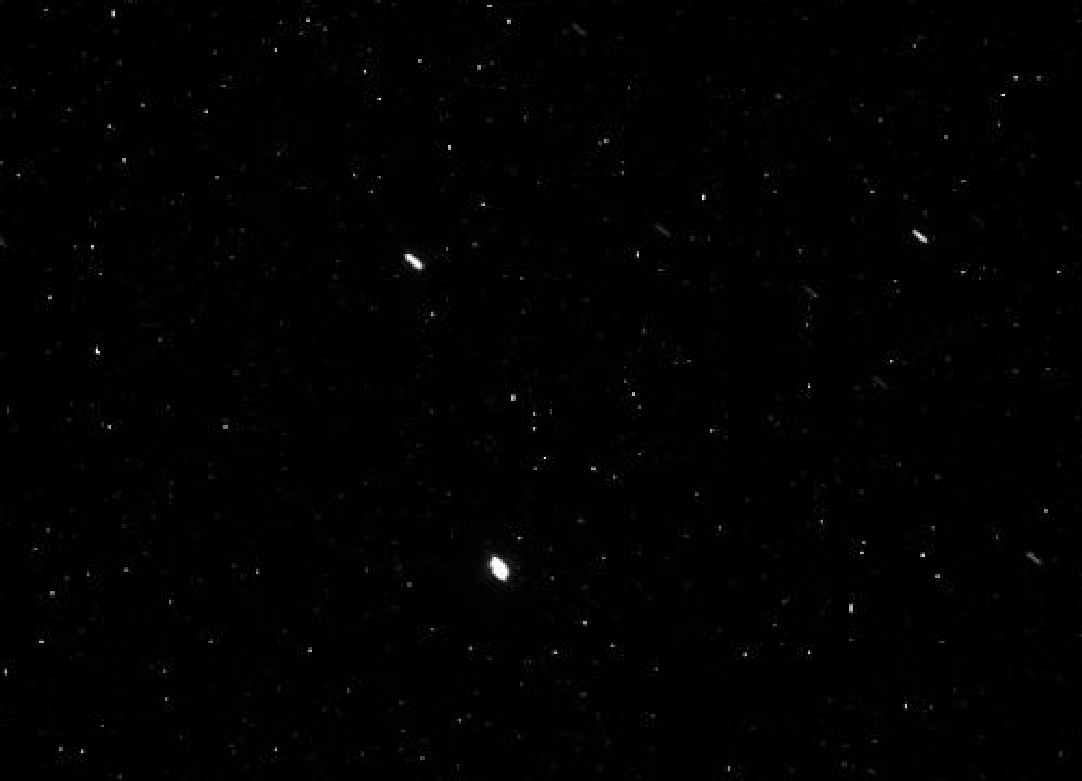
The wreckage of older moons
The moons were discovered by layering hours of footage of Saturn and adjusting for the planet's own movement. The images showed just enough to know an object was there. The moons themselves are not particularly spectacular, at least not in the pictures we have.
They're blurry chunks of rock of no definite shape or particularly striking colors. These are called "irregular moons" because they aren't neatly spherical like our moon.
But they were born in dramatic circumstances. The little moons are grouped cliquishly together, suggesting that they used to be part of larger moons that split apart. Violent collisions with each other or with passing comets likely broke them into their current small, irregular clumps. In earlier days of our solar system, when orbits were less stable and arrangements less settled, collisions were common.
The destruction of a large moon probably caused the formation of Saturn's other claim to fame — its rings. The rings formed between 100 and 200 million years ago, around the same time that scientists estimate the newly discovered irregular moons were formed.
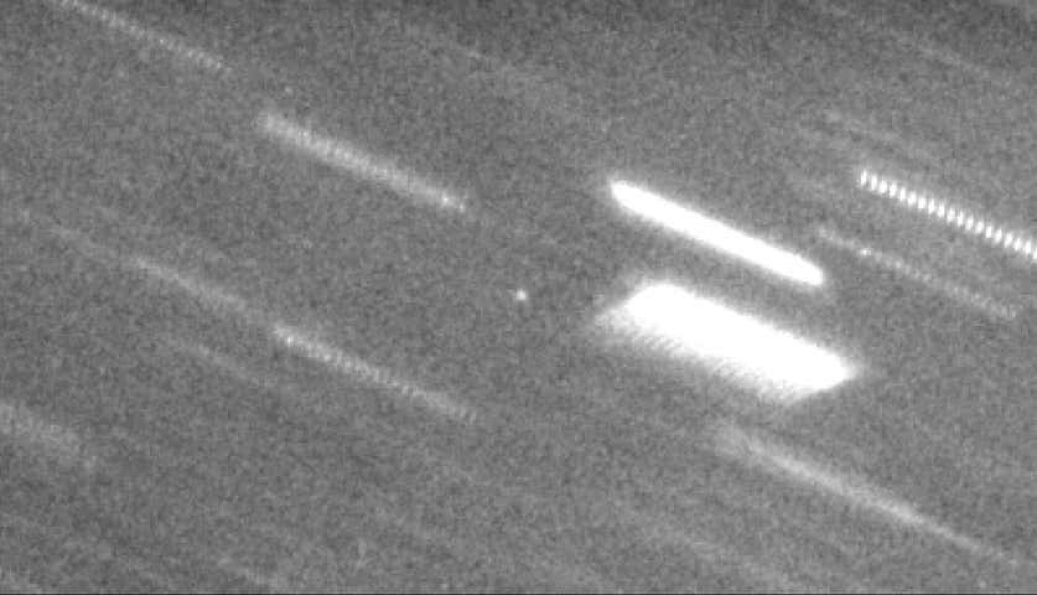
When is a moon just a big rock?
These small, irregular moons herald coming debates. Telescopes are becoming more powerful, and scientists are developing better methods to analyze images. As this trend continues, smaller and smaller orbital satellites will be found. Are they all moons? How big does a rock have to be before it can be a moon?
The lead researcher, Edward Ashton, anticipates the moon question. "I don’t think there’s a proper definition for what is classed as a moon. There should be."
It will probably be up to the International Astronomical Union to make the call on moon identity. Mike Alexandersen, from the IAU's Minor Planet Center, says that the decision will probably be controversial, like the earlier What is a Planet? debate that led to Pluto's demotion to a mere "dwarf planet."
Naming priority for Saturn's moons will, in the future, go to the largest bodies and those on which craft have landed. For now, none of the 128 new Saturnian moons have names. Most fall within the "Norse cluster," the section of Saturn's orbit with objects named from Norse mythology. The rest, following earlier conventions, will be named for Irish and Inuit mythology. With so many left to name and only so many Norse mythological figures, scientists might have to be flexible.
For now, though, Ashton believes they've found all the moons of Saturn, Neptune, and Uranus, which can be seen with existing telescopes.
This doesn't mean that Jupiter will have a chance to catch up, though. Currently, estimates suggest that Saturn has even more small moons to be discovered with better technology in the future. Jupiter may be the biggest planet in our system, but it will have to be satisfied with second place in the moon department.
Have you ever wanted to see Earth through the eyes of the astronauts? NASA’s Gateway to Astronaut Photography of Earth is an incredible catalogue of images that allows you to do just that. It offers a new perspective on our planet, captured by astronauts aboard the International Space Station (ISS) and on past space missions.

This searchable online archive features over 1.8 million photos of the Earth taken over the last seven decades.
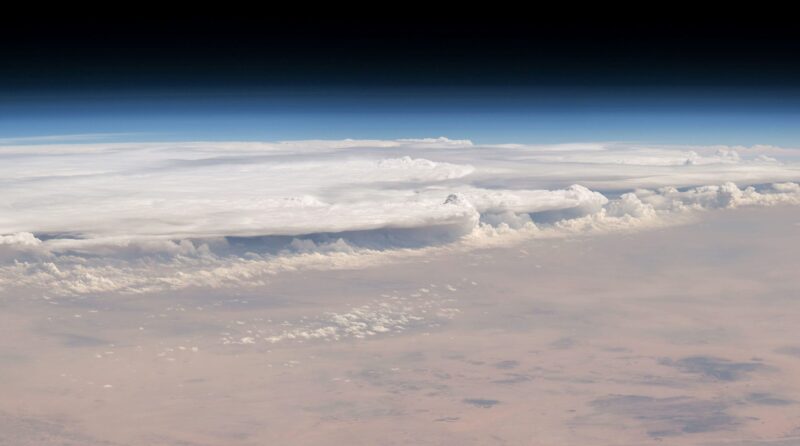
Search image categories
Using the search tool, you can explore images by location, mission, or collection. For example, you can look up high-altitude overviews of your city or your favorite landmarks. You can choose specific categories such as Volcanoes, Earth Art, Mission Highlights, or watch time-lapse videos.
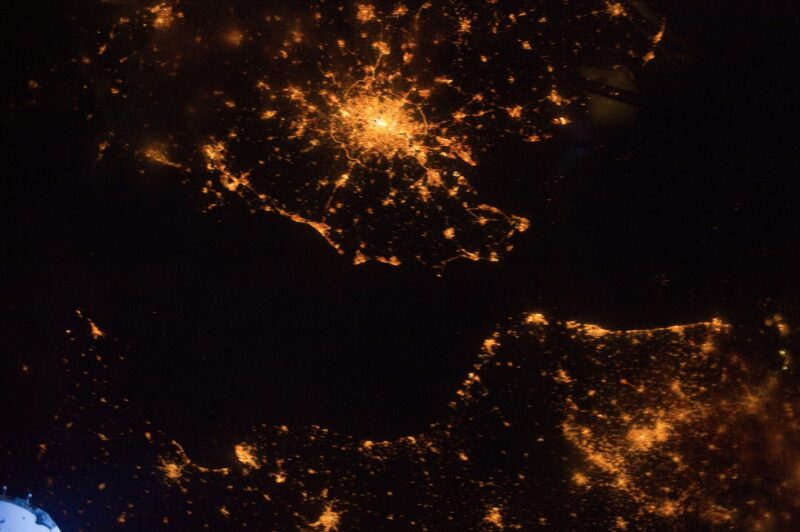
This is so much more than a collection of amazing photos. Astronauts are trained to capture images for scientific studies, and the Crew Earth Observations (CEO) track environmental changes, monitor natural disasters, and study how human activity affects the planet.

Astronauts on the ISS work with land-based scientists to target key regions. Orbiting at 354km to 460km above our planet, the ISS offers an unparalleled platform. Every image includes location details and camera information and is free to download.

Space is full of surprises, and the most recent of these is: Spirals are the solar system's favorite shape. Astronomers have uncovered a surprising spiral structure at the edge of our solar system that closely resembles the distinctive shape of our Milky Way.
The discovery was made using NASA's Pleiades supercomputer. It simulated the behavior of the Oort Cloud — a vast, spherical shell of icy bodies at the edge of our solar system, beyond view. It is so remote that even NASA's Voyager 1 spacecraft, traveling at about 1.6 million kilometers per day, won't reach it for another 300 years.
The Oort Cloud is home to countless frozen bodies that occasionally get knocked toward the inner solar system, becoming the comets we see streaking through the sky. But until now, no one suspected these objects sit in a spiral pattern. Astronomers have generally thought of the Oort Cloud as a random collection of icy bodies.
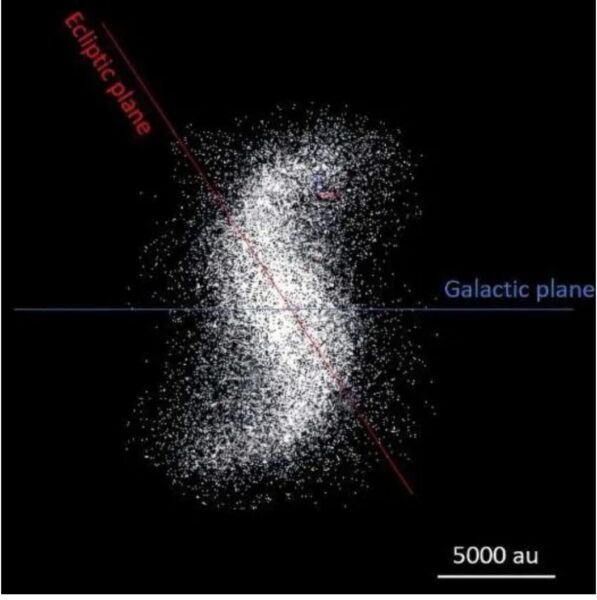
Unfathomably huge
The simulations indicate that the inner region of the Oort Cloud forms the spiral structure, much like the spiral arms of the Milky Way. This spiral spans approximately 15,000 astronomical units (au) in length. One au equals 150 million kilometers, the distance between our planet and the Sun. So 15,000 of those is unfathomably large.
"We found that some comets in the inner Oort Cloud, found between 1,000 au to 10,000 au, form a long-lasting spiral structure," Luke Dones, a co-author of the new study, told Space.com. "We were quite surprised. Spirals are seen in Saturn's rings, disks around young stars and galaxies. The universe seems to like spirals! Only a small fraction of comets in the Oort Cloud are in this spiral, but that's still billions of comets."
Why the solar system favors spirals is a mystery. Scientists believe the structure could be due to the complex gravitational influences of the galaxy, passing stars, and even the movement of the solar system itself as it orbits the Milky Way. However, we're a long way from understanding all the forces at play well enough to explain the tendency for spirals to form.
It came from the Oort Cloud, a giant web of floating miniature planets lying just beyond the edges of the solar system. It dazzled the skies above Chile for a handful of weeks. Now it's gone for the next 600,000 years.
The Oort Cloud
The Oort Cloud, technically, isn't a confirmed place. It's a theoretical location. Some comets orbit the Sun over hundreds of thousands or even millions of years. They must, therefore, call somewhere home. That place is the Oort Cloud, a massive reservoir of icy comets lying outside the boundary of the solar wind, too far for telescopes to see.
Many famous comets return within a generation. Halley's Comet, for instance, will visit again in 2061. But when comets head in from the Oort Cloud, they won't be back anytime soon.
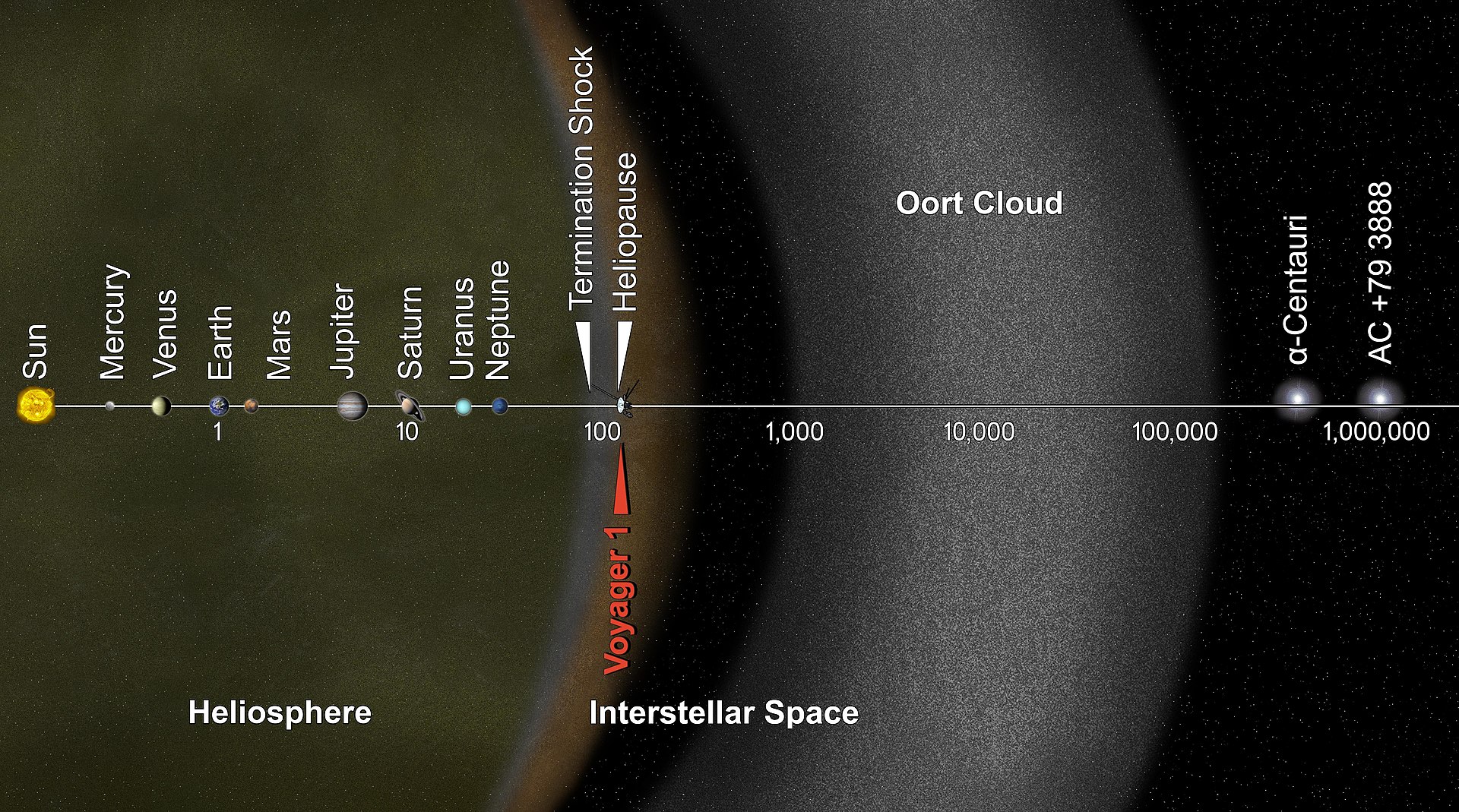
Early observations of the comet
Way back in April of 2024, observers at a small telescope in Chile reported a very faint speck hurtling toward the Sun. It was a comet, the icy siblings of asteroids, and it was 655 million kilometers away but approaching rapidly.
It took the name of the observatory that discovered it -- ATLAS. And as 2024 turned to 2025, amateur astronomers started reporting that ATLAS was visible with the naked eye at night. Instead of a little dot barely visible with a telescope, it was now as bright as Polaris, the North Star.
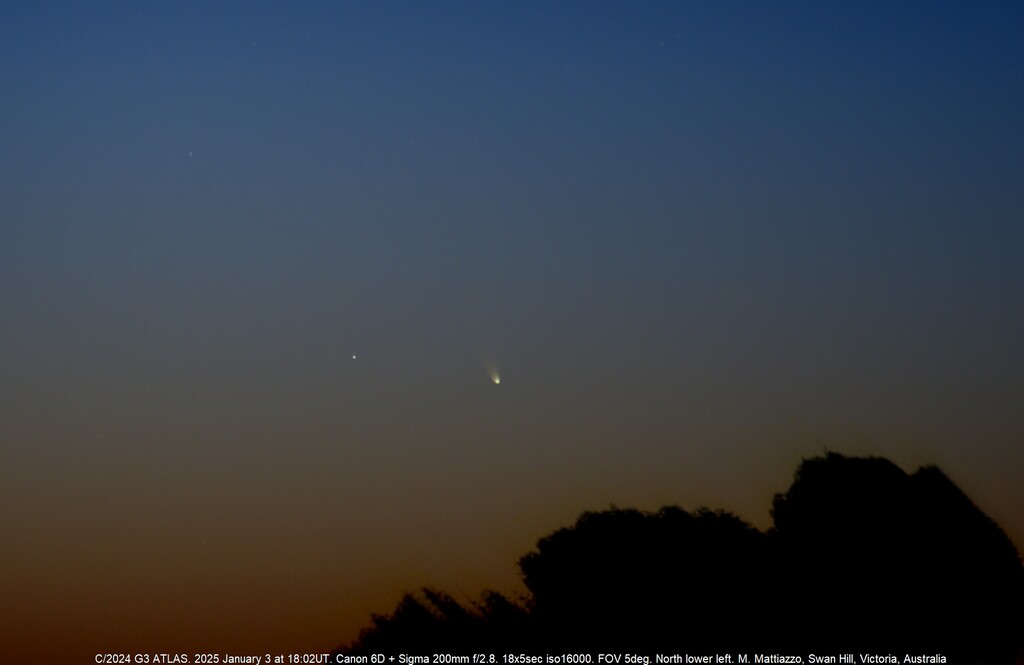
This sudden increase in brightness was caused by the disintegration of the comet's surface. As the comet sped towards the Sun, the temperature increase evaporated large chunks of ice from its surface, feeding its outgassing tail and the hazy glow around its nucleus. But in early January of 2025, it hadn't yet reached its full glory.
The Great Comet of 2025
On January 13, ATLAS entered an exclusive club: the list of comets within the last century that were visible to the naked eye during the day. At the time, it was passing through perihelion, the closest approach to the Sun. It was brighter than anything else in the southern sky, including the planets.
Astrophotographers snapped stunning photos of its tails, one comprised of heavy particles and the other of light gases. An astronaut on the ISS snapped a photo of it through the space station windows. And NASA used a telescope device called a coronagraph to block out the Sun's light, allowing sensitive cameras to observe the comet without being blinded.
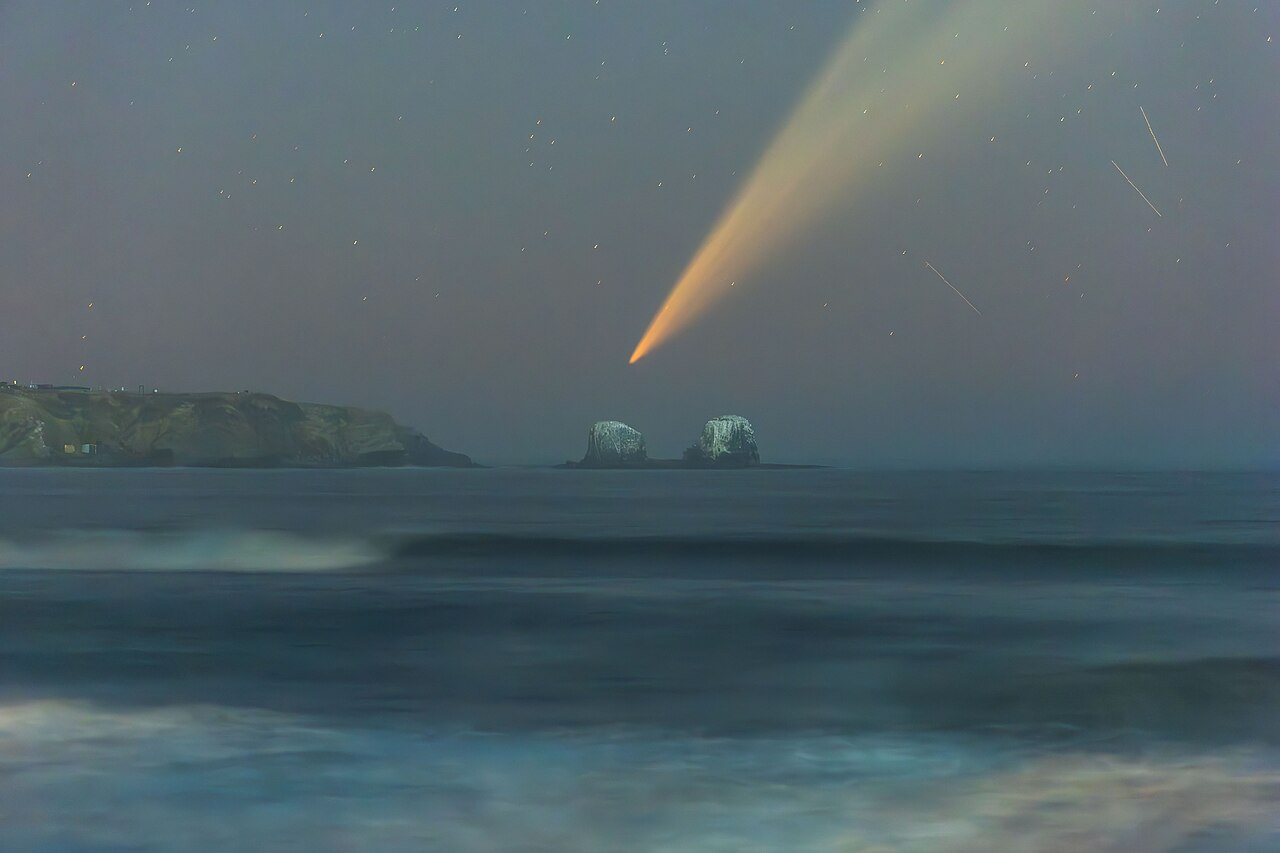
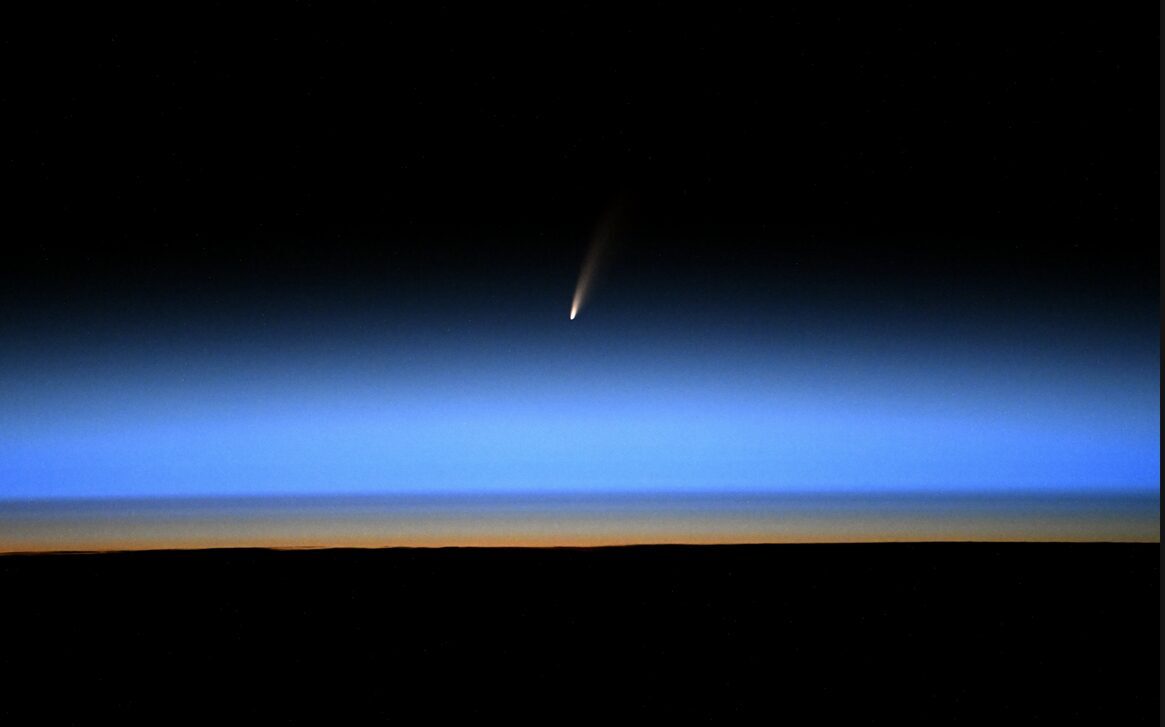
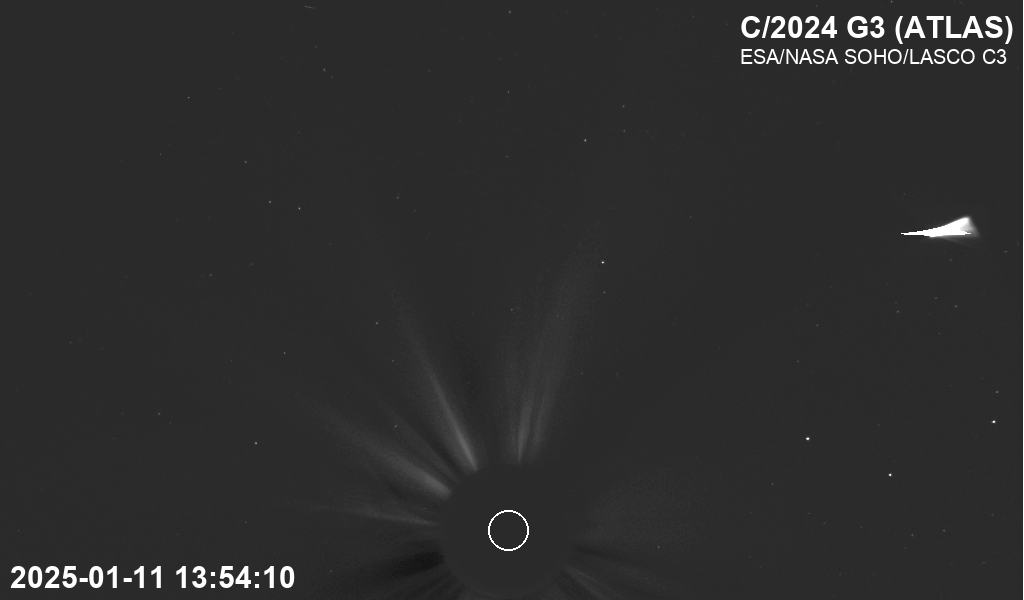
Goodbye, ATLAS
ATLAS is heading away from us, but not unscathed. On January 19, the bright little speck of its nucleus vanished, suggesting that the comet fragmented after its passage around the Sun. What's left is a ghost: tails still streaming across the sky in the wake of debris that soon may disintegrate entirely. We'll have to wait half a million years to see if any part of it survived its vacation to the center of the solar system.
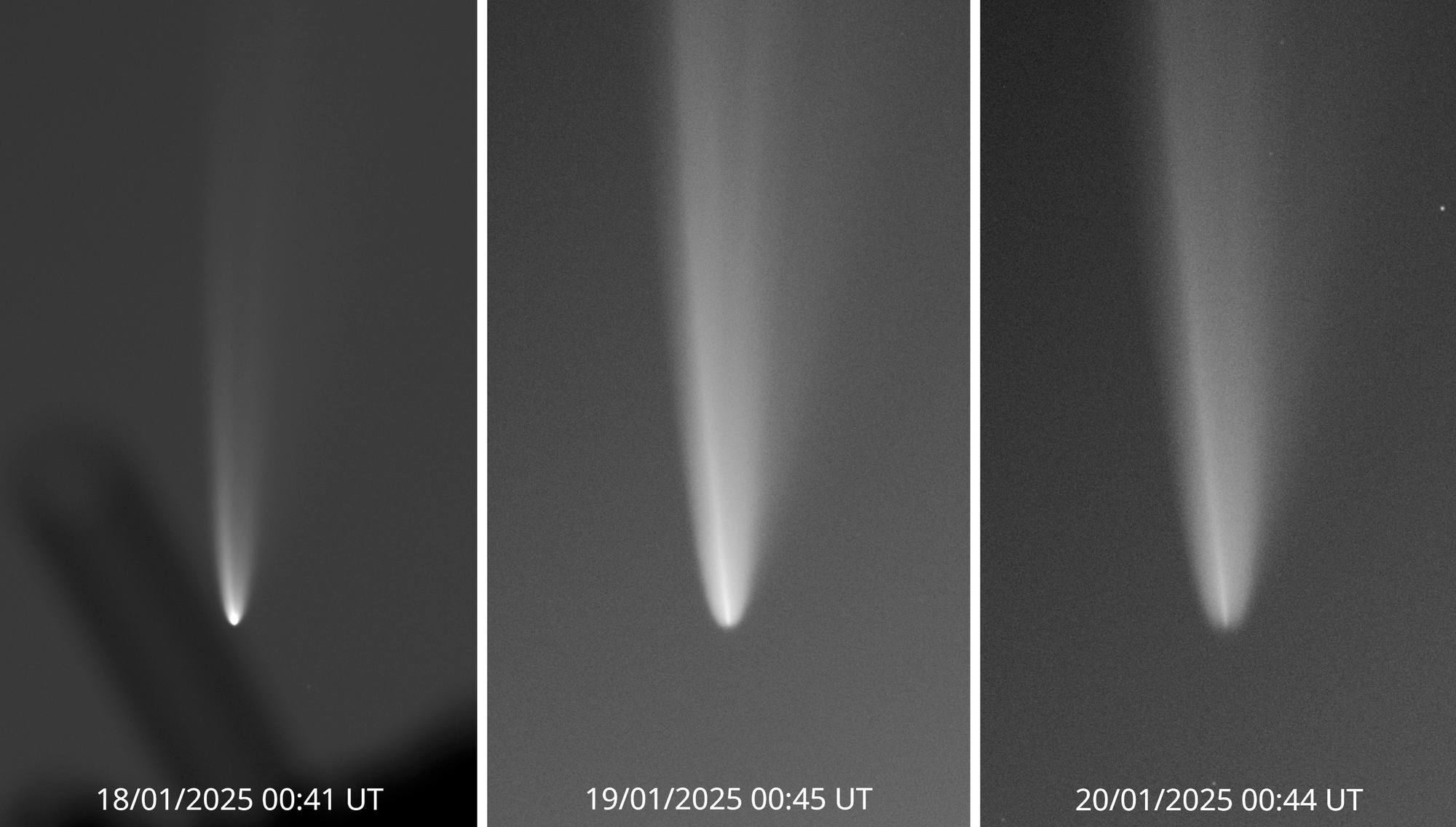


For the fourth year in a row, NASA's Curiosity rover has photographed iridescent clouds drifting across the Martian sky. The clouds appear in the same place, at the same time of year.
On January 17, during the early Martian autumn, Curiosity's Mastcam recorded these noctilucent, or "night-shining," clouds for 16 minutes. The Sun's rays scatter against the clouds, creating colorful, "mother-of-pearl" clouds tinged with red and green.
Cloudgazing... on Mars!
@MarsCuriosity captured these colorful clouds drifting across the Martian sky. The iridescent, carbon dioxide ice formations offer clues about Mars' atmosphere and weather: https://t.co/HAp2FDFjhk pic.twitter.com/DEWV477X01— NASA (@NASA) February 11, 2025
Dry ice clouds
Regular Martian clouds are composed of water ice, but researchers believe that frozen carbon dioxide, or dry ice, makes up the noctilucent clouds. They float 60 to 80 kilometers above the surface of the Red Planet, where frigid temperatures cause the carbon dioxide to condense into colorful, wispy clouds. Some plumes descend to 50 kilometers before evaporating in the rising temperatures.
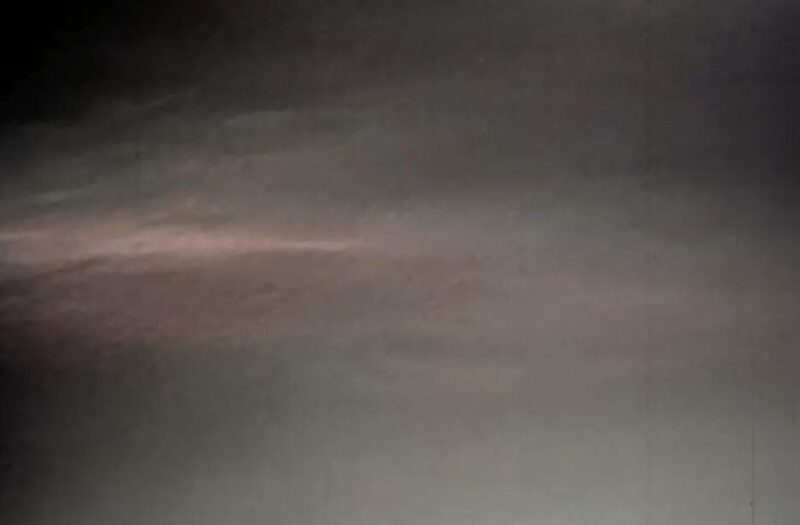
Twilight clouds on Mars were first observed during NASA's Pathfinder mission in 1997. Curiosity's recent observations mark the fourth time that these iridescent clouds have appeared over the Gale Crater in the planet's southern hemisphere. They seem to come at the same time each year.
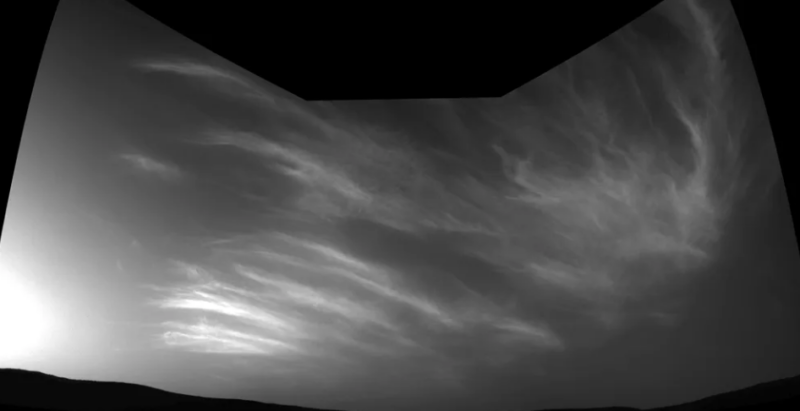
This predictability has allowed scientists to plan their observations meticulously. Mark Lemmon, an atmospheric scientist at the Space Science Institute, recalls his initial encounter with these clouds: "At first, [I was sure] it was some color artifact…Now it's become so predictable that we can plan our shots in advance."

Strangely, the twilight clouds do not seem to form anywhere else on the planet. One hypothesis is that atmospheric gravity waves help generate the clouds. The waves cool the atmosphere and create cool enough conditions for the clouds to form.
This is, however, just a theory. “Martian gravity waves are not fully understood and we're not entirely sure what is causing twilight clouds to form in one place but not another," says Lemmon.
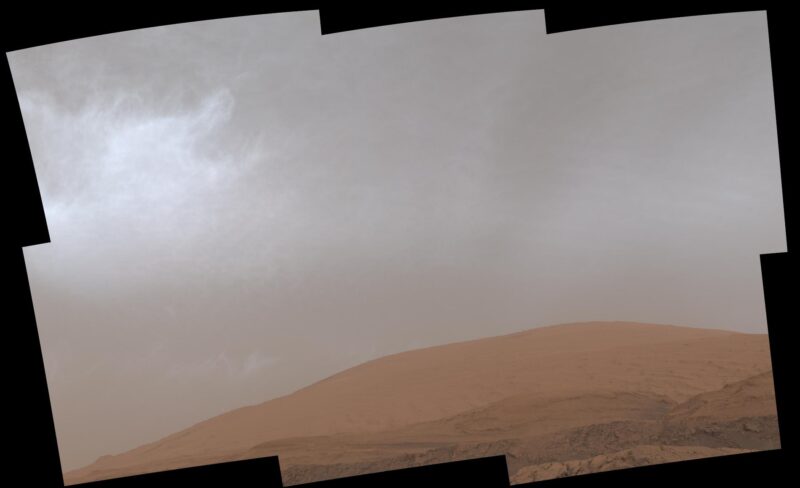
Last week, the world was obsessed with an asteroid that had a 3% probability of hitting us in 2032. Now NASA says it doesn't have a chance in 50,000. What happened?
How are impact probabilities calculated?

I wrote last year about how potentially hazardous asteroids are detected. One aspect I neglected is what that "impact probability" actually means. In the wake of the news about 2024 YR4 and its rapid upgrading and downgrading of threat, I've gotten a lot of questions about how reliable our asteroid observations actually are.
The answer: very. When asteroid hunters first detect that little moving dot against a stationary sky, they have only a handful of data points. Uncertainty will mar any measurements they make of the asteroid's position and velocity.
It's that uncertainty that defines impact probability. Astronomers calculate the trajectory of the observed asteroid, allowing room for error. If that trajectory passes anywhere near the Earth, then as long as the error bars are substantial, the impact probability is as well.
Why did the impact probability go up first?

Once asteroid hunters spot a potentially hazardous asteroid, telescopes around the world jump to observe it, reducing the uncertainty about its trajectory.
But if the asteroid is still heading anywhere near the Earth, the smaller error bars increase the probability of an impact. That's what brought YR4 into the public eye.
This is a pattern with asteroid impact probabilities. An asteroid starts with a moderate possibility of impact. Astronomers jump to observe it, decreasing the uncertainty but not yet ruling out a collision with the Earth. The impact probability jumps up.
Then the error bars on the orbit shrink even further, and suddenly they no longer encompass the Earth. The impact probability drops to pretty much zero.
Asteroid 2024 YR4 hasn't suddenly started behaving less chaotically. We just understand it better, and know exactly where it's going to go. And that's not the Earth.
Intuitive Machines, which became the first private company to land on the moon in February of 2024, is planning its second landing. This time, they will bring something new: a 4G LTE wireless network.
Working with Nokia, with funding from NASA, the mission will feature a “network in a box” attached to the side of Athena, the mission lander. Athena will land in the south polar region of the moon, near the Shackleton Crater. Then, it will deploy several rover vehicles to explore the surface and take samples. The rovers will connect to Athena’s wifi and relay data back in real time.
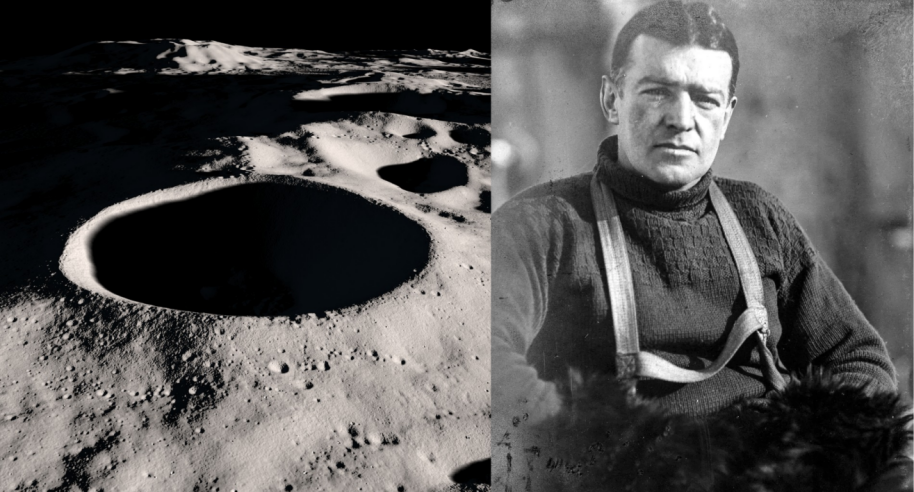
Connectivity issues
I can’t get reliable internet in my flat in Dublin. How much more difficult will it be to set those systems up on the moon?
Temperature extremes on either end can damage equipment and degrade performance. The lunar surface can be as hot as 121˚C in daylight and plummets to -246˚C inside the Shackleton Crater. Even for the polar explorer after whom the crater is named, that is excessively cold. The lunar soil is also rough, with small jagged pieces which can scratch and damage materials.
The challenges of the lunar surface are only relevant if the equipment can even make it to the Moon. Athena faces a 385,000km journey, and the jostling and extreme forces involved in launching, flying, and landing will put the toughest materials to the test.
The upside is that the advancements made for Moon wifi might in turn improve our Earth wifi, possibly allowing me to stream video at a higher resolution than 144p.
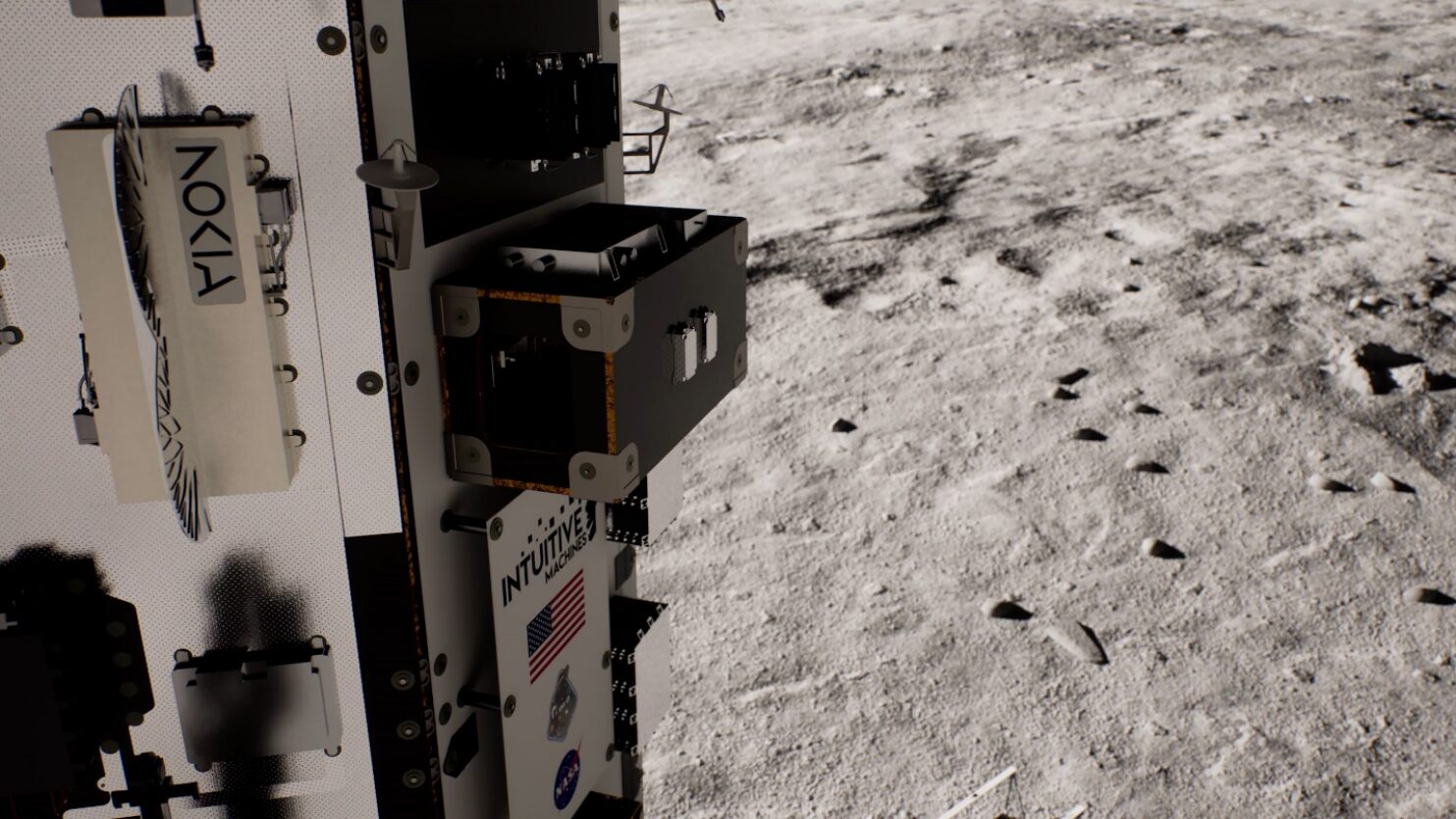
The LSCS
The box Athena will carry is Nokia’s Lunar Surface Communication System (LSCS). Nokia designed the technology specifically for space travel and for Athena. Fourteen separate thermally isolated mounting points should protect the delicate machine from the extreme temperatures of space and keep it snugly attached.
The rovers that will connect to the LSCS wifi are called Mobile Autonomous Prospecting Platform (MAPP). Another one is called Grace -- that team had more fun with it, I guess. MAPP will travel the south polar regions, mapping and collecting images and environmental data.
Meanwhile the mission will use Grace (also known as Intuitive Machine’s Micro-Nova Hopper) along with the LSCS to test new sensory systems while exploring the permanently dark, cold craters.
The company aims to launch the Athena lander from NASA’s Kennedy Space Center at the end of February. It will land in the same neighborhood targeted by NASA’s upcoming manned Artemis mission. No word yet on whether the Artemis astronauts will be given the wifi password when they get up there.
Around 13.7 billion years ago, something collapsed. It fell outward into the nothingness that stretched in every direction, leaving something behind. A dense plasma, made of fundamental particles called quarks and gluons. For one tiny moment, the plasma collapsed outward unimaginably fast. Then, reigned in by the quarks coalescing into matter, the collapse began to coast.
The universe cooled. Small clumps of matter, set by random chance in the first moments of its existence, attracted more matter through gravity. They became gas clouds, and then galaxies. Galaxies formed galaxy clusters. And empty space continued to expand.
This was the Big Bang, and it set off the expansion of the universe. Today, we'll look at the strange forces that drive the acceleration of its expansion, as well as one of the most tantalizing open questions in modern astronomy: Exactly how fast is it expanding today? And why can't we figure that out?
The expanding universe
In 1929, an astronomer named Edwin Hubble found that every single galaxy outside of the Local Group -- our neighbors -- was speeding away from us. Galaxies like Andromeda, our nearest large neighbor, had stars that looked more or less the same color as the ones in the Milky Way. But beyond that, every galaxy looked red.
This, Hubble reasoned, was because of the Doppler effect. When a fire truck is driving away, its siren sounds like a decrescendo because the outgoing velocity stretches out the sound waves. The chances of every galaxy outside our local sphere of the universe being naturally red were small. Hubble concluded the simplest explanation was that every galaxy was moving away from us.
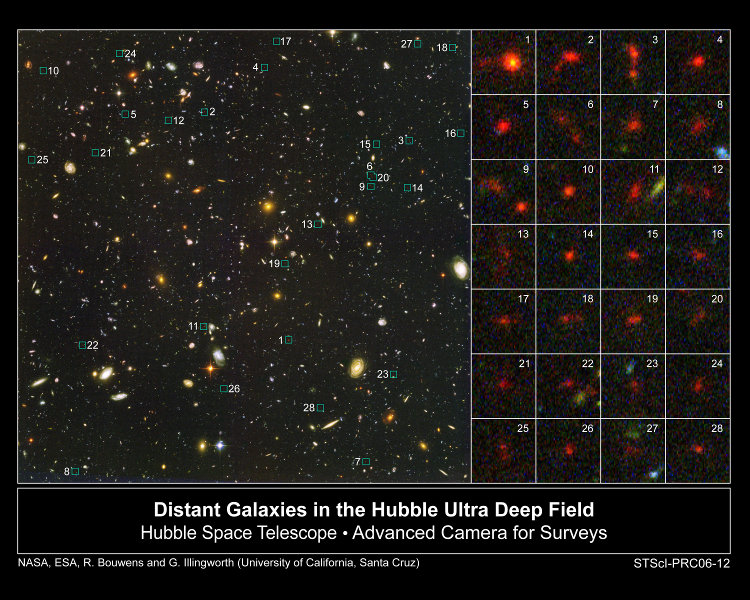
At first glance, this implies there is something special about the Earth. But one of the principles of cosmology, the study of the birth, death, and overall structure of the universe, is that there are no special locations. Any galaxy perceives all distant galaxies as moving away. This is because the space in between galaxies is expanding with every passing second.
In 1998, a team of cosmologists observed the recession velocities of distant galaxies and noticed something strange. At very high distances, galaxies were even further away than they should have been if the velocity was constant. That meant the universe hadn't expanded at a constant rate.
Instead, it's accelerating over time.
Introducing dark energy
According to Newton's first law, objects in motion will stay in motion unless acted on by an outside force. Once galaxies were moving apart from one another due to the Big Bang, therefore, it made sense for them to continue on their trajectories. But for the universe to be accelerating meant that a force was driving that acceleration.
Astronomers dubbed this new factor dark energy, because they didn't know what it was. It's still perplexing, but in the decades since, dark energy has become accepted as part of the universe's source code. Mass attracts mass, like-magnets repel one another, and empty space naturally expands.
Dark energy says: you can't have a true vacuum. Seemingly empty space actually has natural energy, and it wants to get out. It expands -- and if it's already expanding, that expansion accelerates.
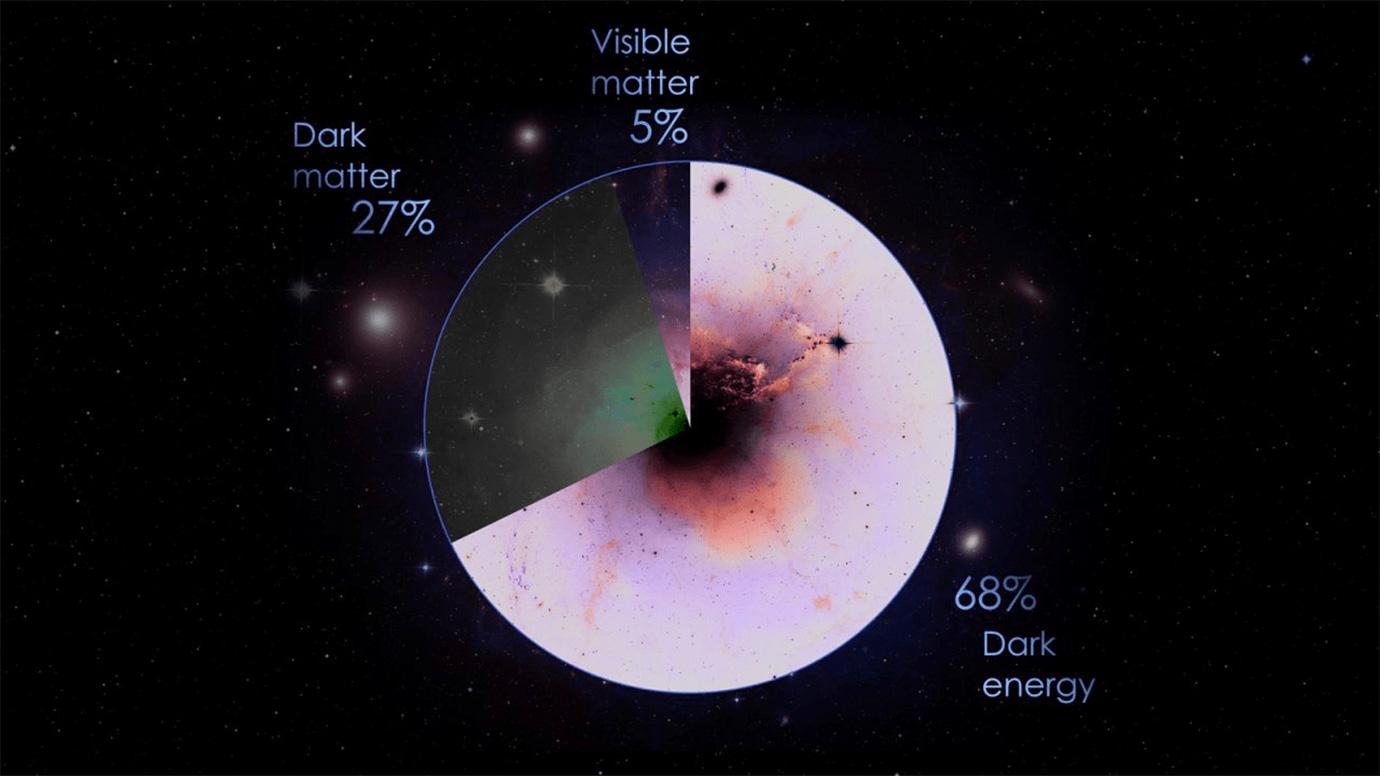
The Hubble Tension
So if the expansion velocity of the universe isn't always the same, what is its present value?
For modern cosmologists, the answer to that question is a Holy Grail. It's not that we have no idea. We have too many ideas. Over and over again, the same two values keep cropping up: 67 km/s and 73 km/s.
In the past, astronomers like Edwin Hubble didn't realize the expansion was accelerating because their observations didn't reach far enough, and when they did, they weren't very precise. But over the last two decades, astronomers have developed very sophisticated techniques for measuring the expansion of the universe. About half of those techniques give a modern expansion velocity of 67 km/s, and the other half give 73 km/s.
At first, cosmologists assumed the values differed because the measurements weren't precise enough. The error bars covered the whole range of values between the two limits, so there was nothing to worry about.
Then the measurements got better and better, the error bars shrank, and still the two values stayed separate. Why?
Cosmic Microwave Background
The further away we look, the further back in time we look. That's because light takes time to travel toward us, so the light from very distant parts of the universe reaches us billions of years after it was emitted. As we look back, we see modern galaxies, then middle-aged ones, and then the strange clumpy squiggles of very ancient galaxies. Then we see the wall.
It's not a physical wall. Instead, it's the image of a time when everything in the universe was on fire. It's called the Cosmic Microwave Background, or CMB. It formed when protons and electrons merged into atoms, suddenly releasing the photons from ricocheting around the primordial plasma. Those photons have been traveling ever since, and are reaching us every day. Part of the static on any radio station or television screen comes from the earliest observable light in the universe.
The CMB isn't perfectly identical in every direction. It has clumps and divots, and those ancient clumps and divots laid the blueprint for the distribution of galaxies in the modern universe.
Cosmologists plug the attributes of those clumps into a general relativity model of the universe starting at the Big Bang. When the clock reaches the present day, the universe is expanding at about 67 km/s.

Wobbling Cepheids
So far, general relativity has withstood every test that's come its way. Why is it, then, that its predictions for the current expansion velocity from the CMB don't match our observations from galaxies?
Figuring out the current velocity from galaxies requires knowing how far away those galaxies actually are. Astronomers use something called the cosmic distance ladder to connect observations within our own galaxy to observations in other galaxies.
First, they observe nearby stars called Cepheids. Cepheids don't have a constant brightness. Instead, they get periodically dimmer before brightening again. The brighter a Cepheid is, the faster its light fluctuates. By observing how fast they fluctuate, astronomers can calculate how bright a Cepheid in another galaxy really is, instead of just how bright it looks when viewed from far away. That gives the distance to the galaxy.
Every so often, two orbiting white dwarfs in these galaxies collide, leading to a massive explosion called a Type 1a supernova (supernova astronomers are infamous for their opaque naming conventions).
Using the known distance of the galaxies, astronomers figured out that the peak brightness of these supernovae controls how fast the light fades. So if a Type 1a supernova goes off in a distant galaxy, we know from the light decay speed how bright it should appear. Once again, we can extrapolate the distance of the galaxy based off how bright its most exotic stars actually appear.
Finally, the Doppler effect allows us to calculate recession velocity of those galaxies. It's always about 73 km/s.
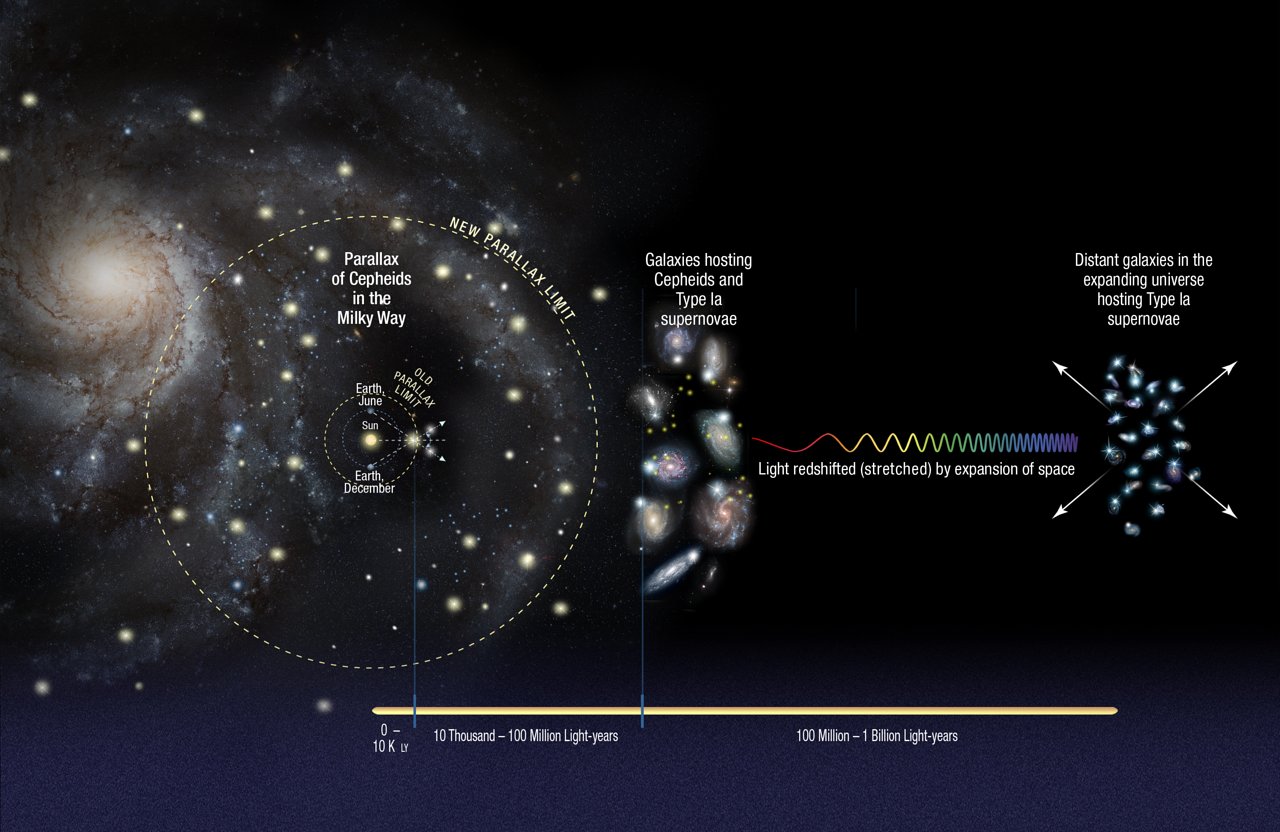
What causes the Hubble Tension?

The discrepancy between these two measurements is called the Hubble Tension, and it doesn't seem to be going away. Other methods of calculating distance from galaxies -- microwave lasers and neutron star mergers, for instance -- give the same result as the supernovae of 73 km/s. Meanwhile, no matter what methods are used to calculate the expansion velocity from the CMB, they all give 67 km/s. A handful of measurements fall somewhere in between, but the vast majority pick a side and stick to it even as their error bars shrink.
It's not clear what's going on. The universe can't be expanding at both 67 km/s and 73 km/s at the same time, so we're going wrong somewhere. Is there some recurring error in how astronomers are calculating distance of galaxies? Are the CMB measurements not as accurate as we think?
Why don't observations in the recent, galaxy-inhabited universe give us the same answers as observations from the very beginnings of the universe. And which of the answers is correct?
Anyone who can answer that question is practically guaranteed a Nobel Prize. But right now, cosmologists have no idea.
The dominant theory is that dark energy was stronger in the early universe in a way the models don't take into account. That would mean that no matter how precise our CMB measurements are, our models aren't correctly extrapolating that information to the present day. But if that were the case, why would dark energy change over time? Isn't it supposed to be a constant of the universe?
There are other, more outlandish theories involving strange "dark" photons that have pushed the modern universe into an increased expansion velocity. But the most disconcerting prospect is not the existence of yet another strange physical substance with "dark" in its name: it's the idea that our model of gravity itself is somehow fundamentally flawed. If so, the story of the universe will have to be rewritten.
At the end of January, scientists gave Asteroid 2024 YR4 a 1 in 83 chance of colliding with Earth in 2032. Those odds have now almost doubled to a 1 in 43 chance.
To learn more, the James Webb Space Telescope has been tasked to observe the space rock before it disappears from view for several years.
The chances of the asteroid colliding with Earth are still incredibly low -- just 2.3%. However, that still marks the biggest asteroid threat in over two decades. Based on ground telescope data, scientists estimate its size at 55 meters in diameter. That's big enough to take out a city. However, it is possible that the asteroid is much larger.
"In general, the brighter the asteroid, the larger it is, but this strongly depends on how reflective the asteroid's surface is. 2024 YR4 could be 40m across and very reflective, or 90m across and not very reflective," European Space Agency (ESA) officials pointed out recently.
To better estimate its size, which is the key metric of how much damage a collision might cause, the JWST will analyze the heat coming from the asteroid using infrared technology. Researchers will also study its route and surface composition.
Even with the JWST, astronomers can view the asteroid only at two points in its trajectory — in March and May. After that, it slips out of view until 2028.
However, that is not the only limiting factor. The team can use the space telescope for just four hours in total. The telescope is in high demand, and every minute on it is stringently scheduled and budgeted for, even for important uses like this one.
Albert Einstein predicted in 1912 that massive objects should bend light as it passes through their gravitational field. He published his theory of general relativity four years later, and the curvature of light seemed a minor point at the time.
When Russian physicist Orest Khvolson posited that in rare cases, the bending of light would create a halo effect, Einstein acknowledged this but wrote, "Of course, there is no hope of observing this phenomenon directly."
Einstein, for once, was wrong. This week, a team from the European Space Agency's dark energy survey telescope Euclid published a high-resolution photo of a halo effect called an Einstein ring. And unlike previously observed Einstein rings, this one is from a nearby galaxy.
Einstein rings show distant galaxies
While the math of Einstein's theory of general relativity may be complex, the core principle is not. Gravity, Einstein argues, is best described as the warping of space around massive objects. There's a common analogy demonstrated in science museums, where guests can roll a penny (or other undesired coinage) down the sides of a funnel and watch as it orbits inexorably downwards. Planets perform the same dance in space distorted by the Sun's gravity.

In this framework, light bending around massive objects is a logical outcome. The space around those objects warps like a funnel, and light curves in an arc around the center.
This effect is called gravitational lensing. Einstein rings appear when the lensed image lies right behind the object that's doing the lensing. Because nothing on Earth or even in the Milky Way is massive enough, all the Einstein rings we observe are formed when the light from distant galaxies contorts around more nearby galaxies.
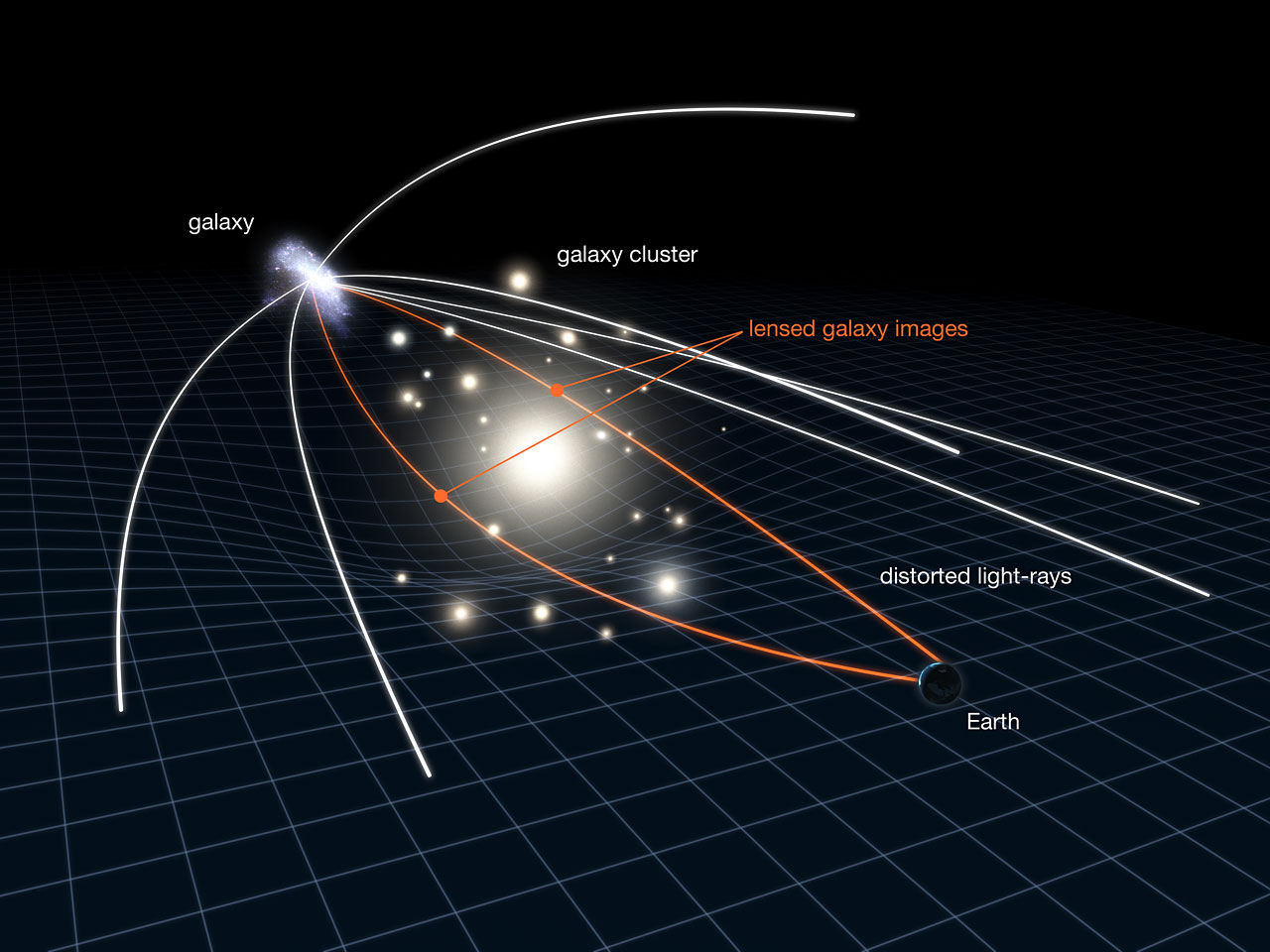
A uniquely nearby Einstein ring
The Einstein ring imaged by Euclid is one of the closest to home ever found. The lensing galaxy is only 590 million light-years away, or just over 200 times as distant as the Milky Way's nearest galactic neighbor Andromeda. In fact, astronomers have known of this galaxy's existence since 1884, before they even knew that galaxies lay outside the Milky Way. Meanwhile, the galaxy that's being lensed is a lot further -- a whopping 4.42 billion light-years away.
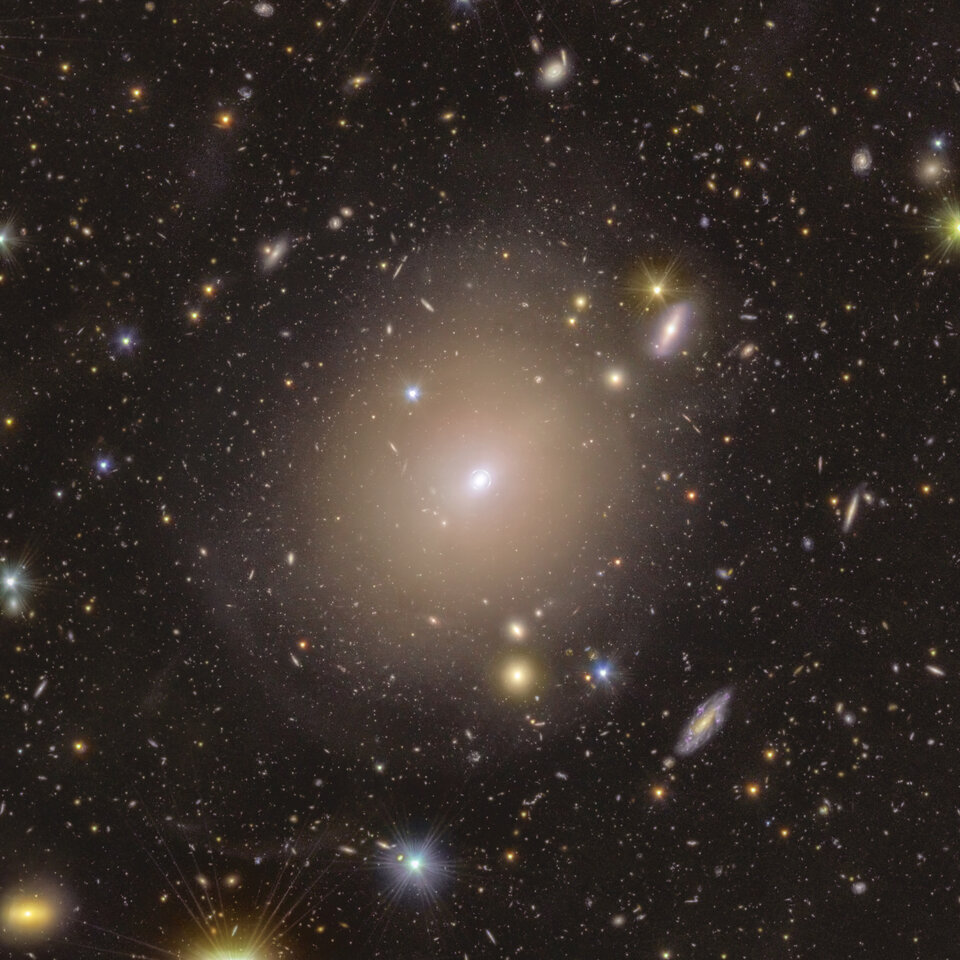
The clues hidden in Einstein rings
Previously, Einstein rings have given cosmologists -- astronomers who study the evolution of the universe -- key information on early galaxies. Our telescopes have a long way to go before they can detect the earliest galaxies whose light is reaching us. But when that light passes through a gravitational lens, more of it focuses on us. If we're an ant on the sidewalk, then the lensing galaxy is a kid with a magnifying glass.
That means that our only direct observations of very early galaxies come from lenses like Einstein rings. Cosmologists use them to understand what kind of stars existed in the early universe.
But Einstein rings also provide a lot of information about the galaxy doing the lensing. How massive are they? How is that mass distributed? And how much of it comes from dark matter versus ordinary stars and gas?
In this case, the Euclid team found that the lensing galaxy has more massive stars at its center than the Milky Way does. Massive stars are the rarest, numbering 1 for every 25,000 Sun-like stars. Astronomers still don't understand all the factors that lead galaxies to form certain types of stars. This Einstein ring adds another piece to the puzzle.
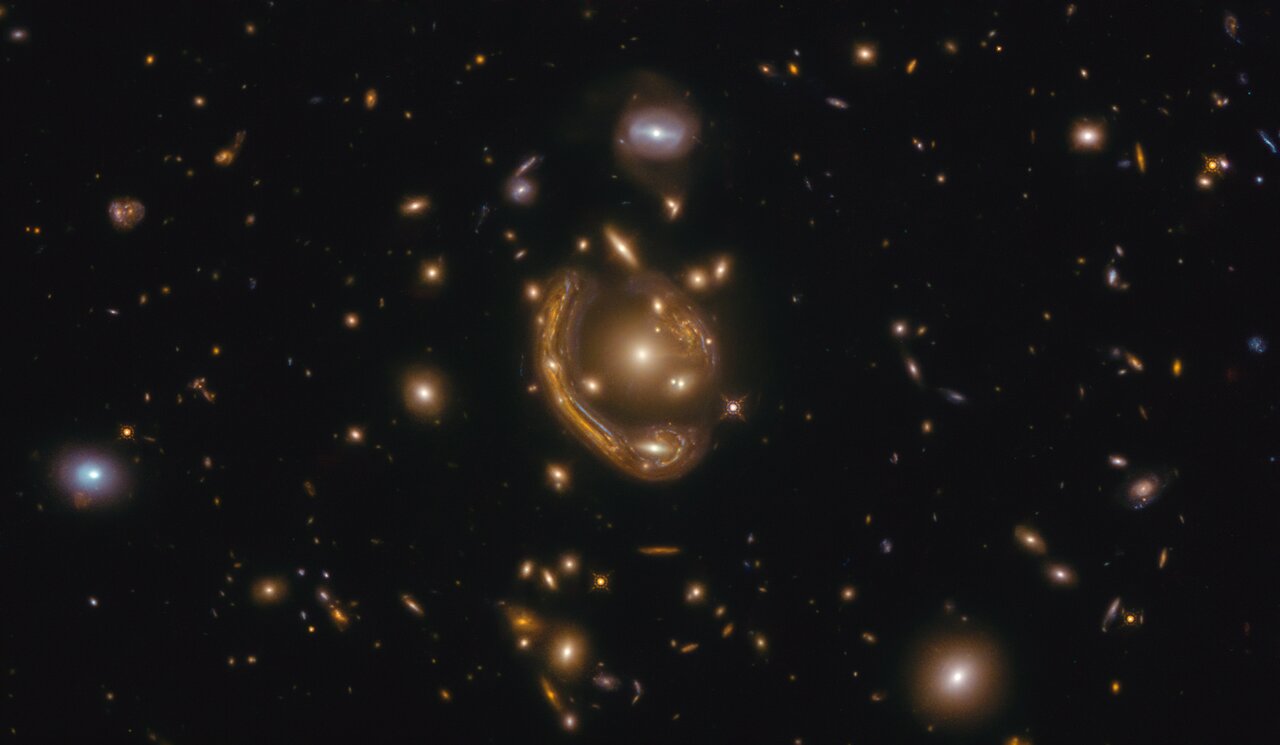
If an alien civilization exists and has technology similar to ours, could it detect human life on Earth from a distance? If so, how close would it need to be?
Recent studies from the SETI (Search for Extraterrestrial Intelligence) Institute explore these questions in the hope that they may in turn help us detect alien life.
Researchers, led by Sofia Sheikh, have been examining various "technosignatures" -- indicators of advanced technology -- to understand how visible our planet might be to alien observers. They believe radio transmissions, particularly those from planetary radar systems, are the most detectable.
The powerful radio wave could be observed up to 12,000 light-years away. This means that a distant alien civilization with technology like ours would be able to identify Earth as a planet with an advanced civilization.
"Our goal with this project was to bring SETI back 'down to Earth' for a moment and think about where we really are today with Earth's technosignatures and detection capabilities,” said co-author of the study, Macy Huston. “In SETI, we should never assume other life and technology would be just like ours, but quantifying what 'ours' means can help put SETI searches into perspective."
Pollution is the 2nd most visible sign of humanity
Ironically, the next most detectable technosignature after radio waves is atmospheric pollutants. Markers of industrial activity, such as nitrogen dioxide (NO₂), are emitted from our atmosphere and can be detected up to 5.7 light-years away. To pick up such emissions, extraterrestrial civilizations would need telescopes as powerful as the James Webb Space Telescope and the upcoming Habitable World Observatory.
As the hypothetical alien observers approach closer to Earth, more and more signs of life would be detectable. City lights from urban areas and the thermal signatures of cities become visible. Advanced extraterrestrial telescopes could even detect satellites and space debris orbiting the Earth.
These many signals make Earth's civilization fairly visible to anything out there that is looking for signs of life.
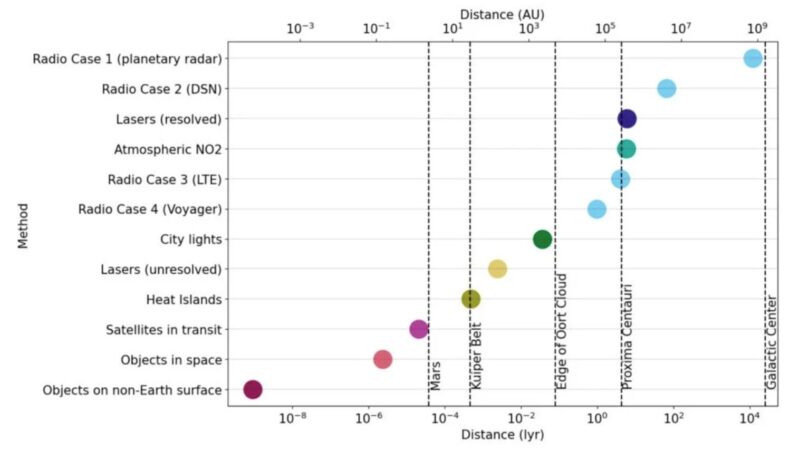
Understanding Earth's technosignatures also guides our own search for extra-terrestrial life. By identifying which signals are most detectable, researchers can better anticipate what to look for on exoplanets. This approach enhances the strategies employed in SETI, potentially bringing us closer to discovering intelligent life beyond our planet.
Space agencies have spotted an asteroid that could collide with Earth on December 22, 2032. An automated telescope in Chile discovered the asteroid named 2024 YR4 this past December.
It is now at the top of the impact risk list, but the odds of an actual collision remain fairly low. According to astronomers' calculations, it has a 1 in 83 chance of actually hitting us.
At 55 meters wide, 2024 YR4 is relatively small. For comparison, the asteroid that wiped out the dinosaurs was nearly 15 kilometers in diameter. But despite its modest size, it could still pack a punch if it defied the odds and struck the Earth. The rock's speed and mass would unleash eight megatons of energy -- 500 times more than the atomic bomb dropped on Hiroshima. It wouldn’t wipe out all humanity, but it could destroy a major city.
'Merits attention'
Currently, the asteroid has been ranked a three on the Torino Impact Hazard Scale, which measures the risk of space objects colliding with Earth. A rating of three “merits attention” in astronomer-speak. According to this scale, “Current calculations give a 1% or greater chance of collision capable of regional devastation.”
2/ The clip below shows ESO’s VLT recent observations of asteroid 2024 YR4, which have helped refine its trajectory. It is estimated to be 40-100 m wide, but more data and analysis are needed to confirm the size, and to refine its trajectory.

ESO/O. Hainaut et al.
— ESO (@eso.org) 29 January 2025 at 17:01
Astronomers will closely track 2024 YR4 over the next few years. The asteroid is currently moving away from us, and it won’t be observable again until 2028. Until then, it’s likely to remain at Level 3. When it comes back into view, more precise measurements will help scientists determine whether it poses any real danger.
While a 1 in 83 chance of impact sounds alarming, history has shown that such odds for asteroids often change as more observations refine their trajectories. Though most expect its risk level to drop to Level 0, asteroid response groups have been alerted and will keep tabs on it.
Astronomer Colin Snodgrass told The Guardian, “The first step in the planetary defense response is...further observations. If these don’t rule out an impact, the next steps will be more detailed measurements using telescopes and discussion of what space agencies could do in terms of more detailed reconnaissance and eventually mitigation missions."
If the space rock is making a beeline for Earth, for example, one possible strategy is to nudge it off its course with a spacecraft. This technique was successfully tested in 2022 with NASA’s DART mission.
For now, scientists stress that there is no cause for worry. The chances of an eventual collision remain low, for now.
NASA's Curiosity Rover has discovered that the Martian surface was once mild enough for liquid water. In 2022, it found ripples in rock in the Gale Crater that resemble the wave patterns on a sandy lake bed on Earth.
We already know that ice exists at the planet's poles and that its thin atmosphere contains water vapor. We even know of ancient frozen lakes. Last year, NASA’s Insight lander discovered reservoirs of liquid water ten kilometers deep inside the Martian crust.
But never before have we seen that surface liquid water once existed on Mars.
“The shape of the ripples could only have been formed under water that was open to the atmosphere and acted upon by wind,” said Claire Mondro, lead author of the new study.
Around 3.7 million years ago, the climate on Mars was above freezing. The Rover discovered two sets of ripples, which are just six millimeters high and four to five centimeters apart. To learn more about the ancient lake, researchers combined the ripple measurements with computer modeling. It turns out that the lake was quite shallow, around two meters at its deepest point.
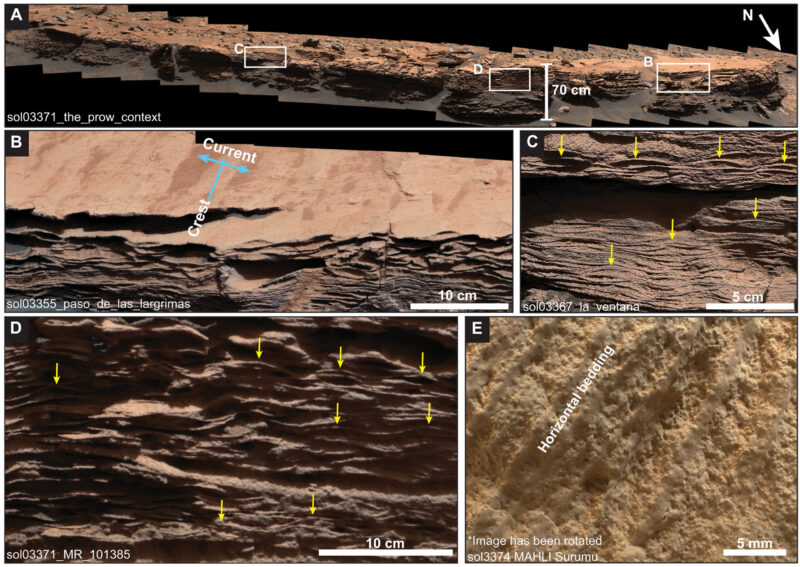
Did life exist, too?
This discovery contradicts the assumption that the planet was cold and arid during that era. It also means that Mars once had a much thicker atmosphere, capable of retaining heat. This means Mars also had more scope to harbor microbial life.
The ripples happened when the planet was becoming drier, and the two sets also formed at different times. This means that either the planet was warm enough to have liquid water for far longer than expected or that a denser atmosphere existed more than once in the planet's history.
"Extending the length of time that liquid water was present extends the possibilities for microbial habitability later into Mars history," Mondro said.
Understanding the planet's climatic history and the role of liquid water is crucial for assessing Mars's habitability and guiding the ongoing search for past life
We know more about the universe than many people think.
Space mysteries are usually quite mundane to all but obsessive researchers. The most compelling open question in astrochemistry, for instance, is how often molecules are recycled during star formation before depositing onto the surface of planets. It's a key gap in our understanding of outer space environments, but it's not going to intrigue any first dates.
But there are a few tantalizing questions that are so big we can't even tackle them head-on. Questions that most astronomers hope against hope will be answered in our lifetime -- but deep down don't believe ever will be.
In this new series, we'll cover some open questions in astronomy, starting relatively small and working our way up. This week: the mysterious, sometimes-repeating extragalactic signals known as Fast Radio Bursts.
An accidental discovery
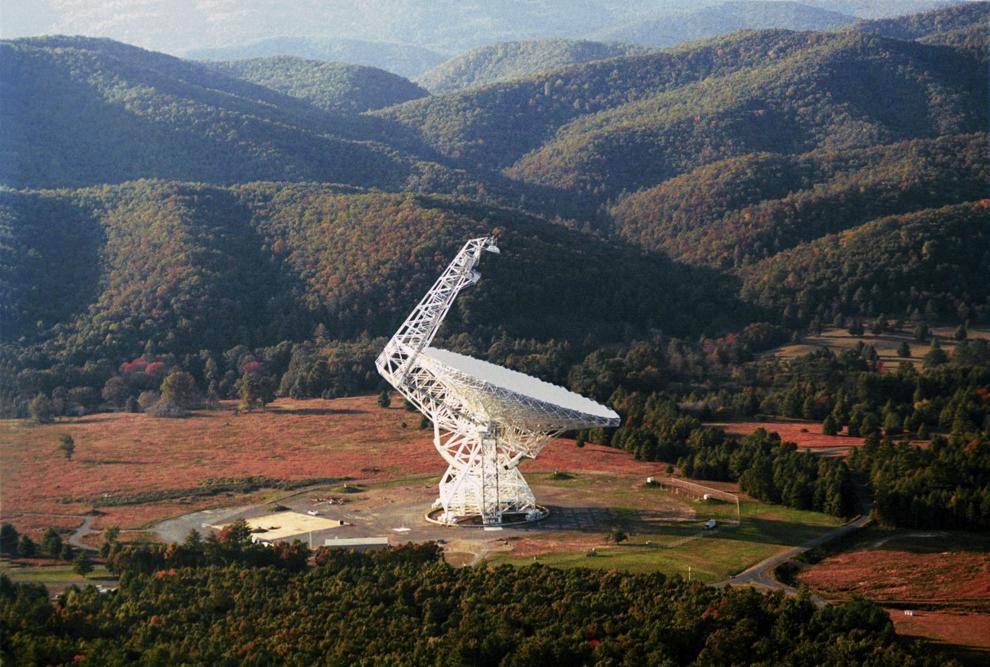
In 2007, a grad student at West Virginia University -- arguably the center of American radio astronomy -- found a strange whooping signal in old telescope observations. It started at high radio frequencies and, over the course of half a second, swept down to low. Then it disappeared.
The high-to-low-frequency aspect wasn't a mystery. That sweeping pattern appears all over radio astronomy because the free electrons floating around interstellar space slow down low-frequency light more than high-frequency light. Since it gets delayed more, it shows up at the telescope a moment after the high-frequency parts of the signal.
We see this all the time in radio signals from within the Milky Way. We know about how many free electrons there are floating around in our galaxy and how much they delay different frequencies of light. Therefore, the degree of delay from electrons is often used as a rough measure of the distance of an object.
The signal that grad student Ash Narkevic had just found was so delayed that it could only have come from another galaxy.
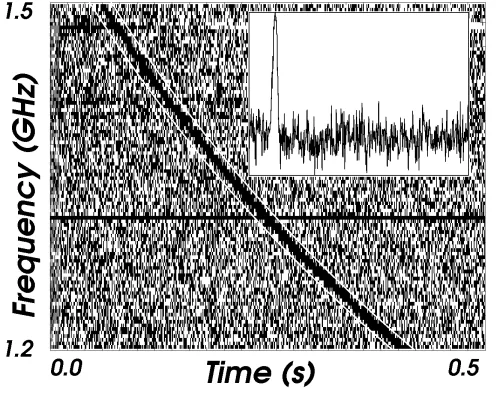
The Lorimer Burst
Narkevic's advisor was an up-and-coming professor of transient radio astronomy named Duncan Lorimer. He and Narkevic wrote a paper about their discovery, submitted it to the prestigious journal Science, and were soundly rejected.
They resubmitted. This time, their paper was accepted. The world of radio astronomy collectively lost its mind and began pouring over archival data, searching for similar bursts.
They found nothing. In fact, they found worse than nothing. In 2011, after four years of radio silence, a graduate student at WVU named Sarah Burke-Spolaor found a signal that looked uncannily like Lorimer's burst. She called it a peryton. The trouble was, it was so bright that it could only have been produced on Earth. Had the Lorimer burst, fainter though it was, also been created on Earth?
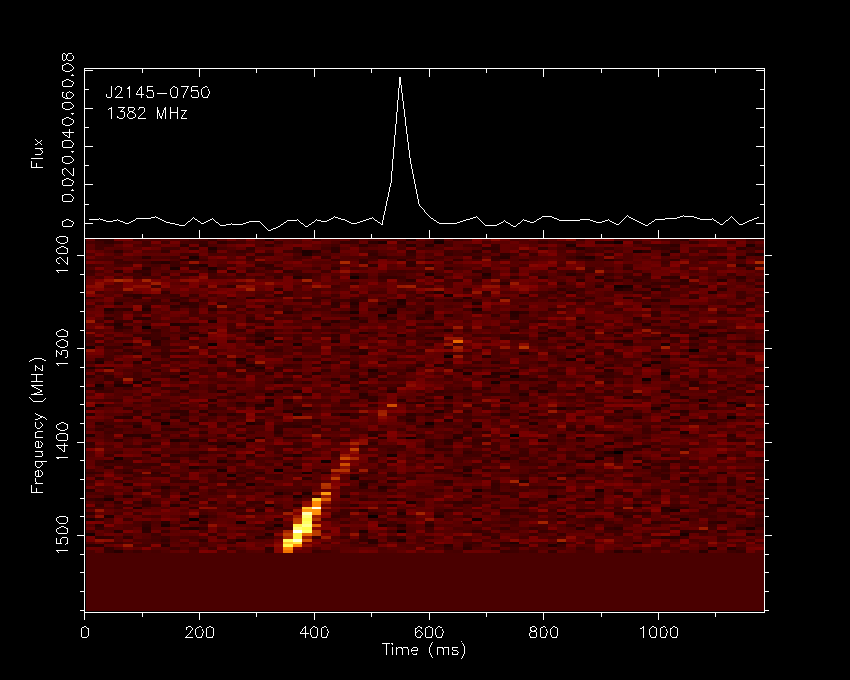
Furbies
The mystery remained for another two years until a PhD student at the University of Manchester named Dan Thornton turned his eye to a set of data with very precise time information. His search found four more bursts just like Lorimer's. The bursts were real, and at the suggestion of the Manchester team, they earned a name: fast radio bursts, or FRBs.
There was some early discussion on whether this should be pronounced "furbies," but the consensus was that this would make radio astronomers look silly. And FRBs are very serious indeed.
Microwave oven?
With new advances in observing using very precise time-processing software, the FRBs started pouring in. The one found by Ash Narkevic in 2007 hadn't traveled far compared to some of the new FRBs. One of them seemed to have been created 7 billion years ago.
But a specter hung over FRBs. The too-bright peryton signal found by Sarah Burke-Spolaor still lurked in the backs of everyone's mind, taunting them with the question: If these things look so similar, and some of them are definitely terrestrial, are all of them?
Then, in 2015, an experiment at the Murriyang radio telescope in Australia vindicated FRBs. Swinburne University graduate student Emily Petroff, long obsessed by the puzzle of perytons and FRBs, published the solution in probably the funniest non-joke paper ever written in radio astronomy.
The existence of obviously terrestrial perytons "had previously cast a shadow over the interpretation of [FRBs], which otherwise appear to be of extragalactic origin," she wrote. "We have identified strong out-of-band emission at 2.3–2.5 GHz associated with several peryton events. Subsequent tests revealed that a peryton can be generated at 1.4 GHz when a microwave oven door is opened prematurely, and the telescope is at an appropriate relative angle."
FRBs had nothing to fear: "We furthermore demonstrate that the microwave ovens on site could not have caused [the Lorimer Burst]."
The identity of perytons is a continued point of amusement among radio astronomers, and was even parodied in an xkcd panel.
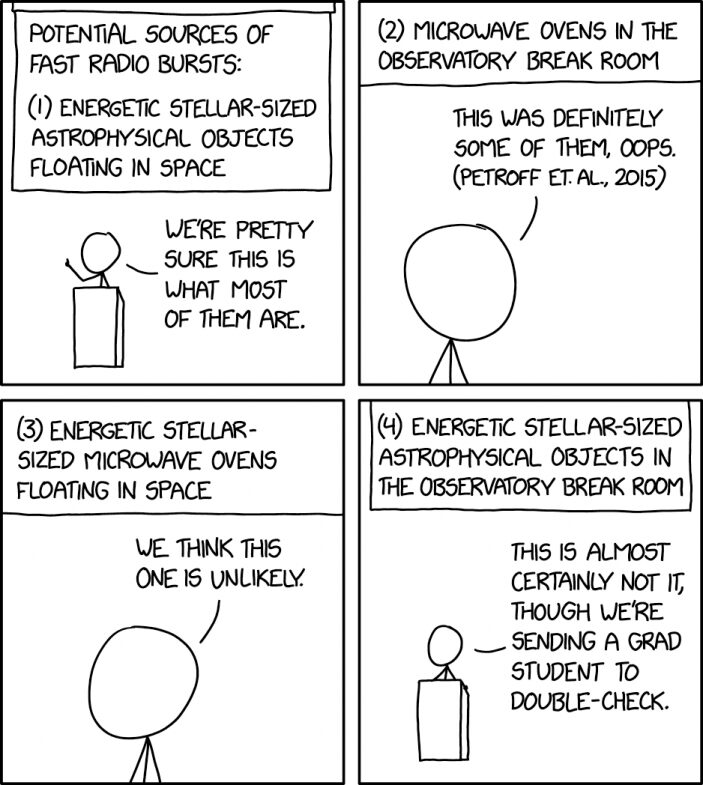
The clues
For once, xkcd made a science mistake. In the comic strip, they describe the origin of FRBs as "stellar-sized objects." We know this can't be true. The time between the start and the end of many bursts is so short that light could only travel a distance of ten or so kilometers during them. Since light is the fastest thing in the universe, points not connected by light wouldn't know to emit at the same time. The bursts, therefore, are created within roughly the distance from Everest to Makalu.
Stars are a lot bigger than that.
Another clue in the FRB toolbox, discovered in 2015: Some of them repeat. The pulses look different every time, but they're very clearly coming from the same location and the same distance. Many more have only ever been seen once. So unless there is more than one mechanism creating FRBs, they aren't produced by one-off events like supernovae or two stars merging.
The magnetar explanation
And then there's the final clue. In 2020, independent teams at Caltech and at the CHIME telescope in Canada both found what looked like an FRB coming from an exotic object within the Milky Way called a magnetar. It was 30 times fainter than the faintest FRB but offered a tantalizing explanation.
Magnetars (Lead image) are the corpses of stars that can no longer support their own weight. Gravity crushes them until their protons and electrons squeeze together to form neutrons. They have massive magnetic fields and regularly send out brilliant flashes of gamma rays and X-rays -- high-energy photons that often go hand in hand with radio waves. In fact, the Caltech team found that the magnetar released X-rays at the same time as the FRB-lite.
The mystery
So magnetars produce FRBs somewhere on their surface via hijinks in their magnetic fields. Mystery solved.
Except that picture doesn't explain many extragalactic FRBs. Gamma-ray and X-ray bursts from magnetars are very rare, so how could so many FRBs repeat monthly or even weekly? And why do some FRBs come from galaxies where we don't expect to find any magnetars? After all, magnetars are all born early in a galaxy's life span. They only stay magnetized for about 10,000 years. Meanwhile, an FRB reported just this month came from a galaxy that's been around for 11 billion years.
At this point, astronomers know only one thing for sure: FRBs aren't coming from microwave ovens.
Anymore.
New research backs up the old hypothesis that the key ingredients for life may have come to Earth on an asteroid billions of years ago. A modern case in point: The asteroid Bennu contains all the materials needed for life.
The OSIRIS-REx mission launched in 2016. Its main aim was to study Bennu and retrieve samples to bring back to Earth. The spacecraft reached Bennu in 2018 after traveling 320 million kilometers from Earth. It spent two years mapping its surface, then collected a 120g sample before landing back on Earth in 2023. Since then, scientists around the world have been unraveling its secrets.
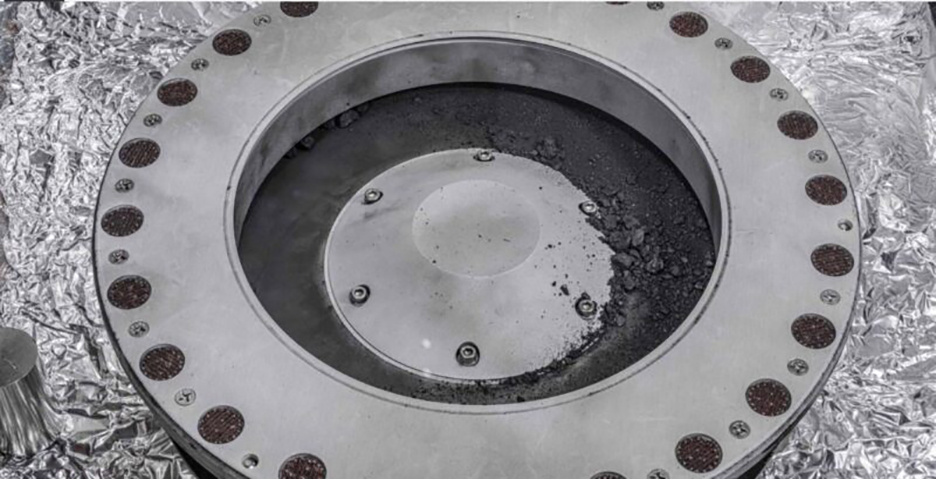
Asteroids like Bennu are essentially time capsules, revealing the chemical makeup of the early solar system. Meteorites undergo significant changes when they enter the Earth’s atmosphere before crashing into its surface, but the material from Bennu is completely uncontaminated. Researchers have never seen anything like it before.
“There were things in the samples that completely blew us away,” said Sara Russell, co-author of the study. "The combination of the molecules and minerals preserved are unlike any extraterrestrial samples studied before."
Bennu’s samples contain amino acids, minerals containing water, and complex carbon structures. The presence of hydrated minerals suggests that Bennu once even had liquid water. Scientists have identified 14 out of the 20 amino acids used by organisms on Earth to build proteins and the four nucleotide bases that we see in DNA.
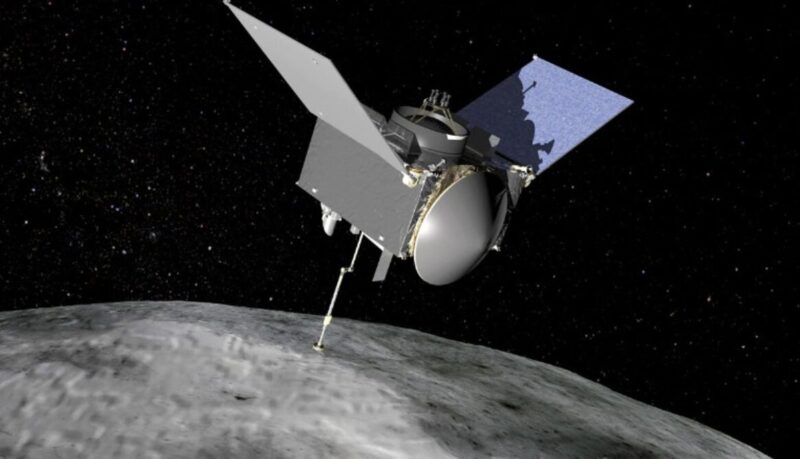
Far-reaching implications
“What we’re seeing in these samples is a unique combination of minerals and organic molecules that are unlike anything we’ve encountered in previous meteorites," says Russell. "This suggests Bennu and similar asteroids played a crucial role in delivering materials that could have supported the origin of life.”
The discovery of life’s essential ingredients in Bennu’s material has far-reaching implications. It is likely that similar asteroids also delivered these building blocks of life to other planets and moons within our solar system. Mars, Europa, and Enceladus, in particular, have water and organic molecules.
"The early Solar System was really turbulent, and there were millions of asteroids like Bennu flying about," said co-author Ashley King.
Cell phone dead zones in the U.S. took another step toward oblivion yesterday. T-Mobile and Starlink are now beta-testing their direct-to-cell satellite texting capability for iPhones.
The T-Mobile Starlink system uses some 300 Starlink satellites to provide coverage across parts of North America that have historically been empty of cell signals. Essentially, the Starlink satellites function as mobile, orbiting cell towers.
The Federal Communications Commission (FCC) approved the partnership in November of last year, and T-Mobile announced shortly thereafter that iPhone-using customers could register for the test. Earlier in the fall, the FCC had granted temporary approval for Starlink and T-Mobile to put the system into action when parts of Western North Carolina lost cell signal during Hurricane Helene.
According to T-Mobile's website, voice and data capability will soon follow. The direct-to-cell beta-test capability rolled out with the iOS 18.3 software update.
It's big news for the adventure world. Currently, outdoor aficionados who want to stay in contact via their phones have to use third-party satellite messaging devices or dedicated satellite phones. One less gadget to carry around is always a good thing, assuming you are the type of person who likes to stay in contact.
While the initial Beta test is only taking place in the U.S., it's just a matter of time before the program expands to other countries.
Of course, there is a downside. The increasing number of Starlink satellites streaking across the night sky is a serious bother for astronomers and scientists attempting to learn more about our cosmos.
Few of us are lucky enough to catch a glimpse of the Northern Lights from below. Seeing them from the other side around — that is, from orbit — well, that's a rare treat reserved for space farers.
NASA astronaut Don Pettit got a chance to do just that on January 6 as the International Space Station flew above the Aurora Borealis on January 6. Luckily for you and me, he recorded the display and posted the video to X.
The ISS orbits the Earth at an altitude of about 412 kilometers. Meanwhile, the green shades seen in the video are the result of discharged solar particles interacting with oxygen hovering 120 to 180 kilometers above the planet's surface.
It's just a nine-second clip, but you'll probably watch it six or seven times. I know I did.
Flying over aurora; intensely green. pic.twitter.com/leUufKFnBB
— Don Pettit (@astro_Pettit) January 6, 2025
Gaia has completed the mapping phase of its mission. Since its launch in 2013, the European Space Agency’s Gaia spacecraft has been charting our galaxy one star at a time. In those years, Gaia achieved a monumental feat, creating a three-dimensional map of over two billion stars across the Milky Way.
Now, the top-hat-shaped spacecraft is nearing the end of its journey. After 10 years, Gaia’s fuel tank is almost empty. It has been using 12 grams of cold gas fuel daily to keep it spinning. According to the ESA, “This amounts to 55kg of cold gas for 15,300 spacecraft ‘pirouettes’.”
Over the last decade, the ESA spacecraft has recorded an astonishing three trillion observations. This includes detailed information on the positions, distances, and motions of stars, as well as insights into their compositions and temperatures. Its constant scan of the galaxy has also detailed the orbits of over 150,000 asteroids and discovered a new type of black hole and several exoplanets.

A revolutionary mission
Gaia's data has transformed astrophysics. By accurately pinpointing the positions of stars, Gaia has allowed scientists to measure the Milky Way’s size and shape more precisely than ever before.
Not only has Gaia allowed us to map the Milky Way and learn about its evolution, but it has also enabled astronomers to model how the galaxy might look to an outsider.
“Even basic ideas have been revised, such as the rotation of our galaxy’s central bar, the warp of the disc, the detailed structure of spiral arms, and interstellar dust near the Sun,” says Stefan Payne-Wardenaar of the Haus der Astronomie in Germany.
Since 2016, various researchers have accessed Gaia’s data over 580 million times, and it is the basis of over 13,000 scientific papers. However, just one-third of Gaia’s data has been published so far, and there remain years more information to be released to the scientific community.
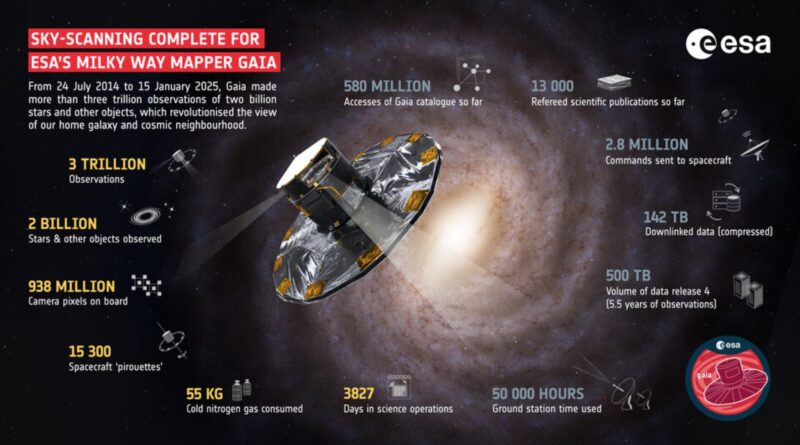
Retirement years
On January 15, Gaia made its final starlight observations. But its mission is not quite over. The spacecraft will release two enormous data streams over the coming months before retiring to become a test vehicle.
On March 27, Gaia will leave its current orbit at the second Lagrange point (L2). It will move into an orbit further away from Earth so that it does not interfere with other spacecraft. Until then, scientists will use it to learn more about how technology behaves after a decade in space.
For a short period, amateur astronomers will be able to see Gaia before its final goodbye. The ESA has created a guide on how to spot the spacecraft.
"It landed right between my legs, where I [had been standing]."
That's never a comfortable sentence to say out loud. But when the "it" in question is a meteorite traveling at 100 to 200 meters per second, it's doubly uncomfortable.
That's exactly what happened to Prince Edward Island resident Joe Velaidum in July 2024. Velaidum and partner Laura Kelly took their dogs on a walk, and when they returned, they noticed a strange pile of debris on the walkway outside their home. A glance at their security system revealed something amazing — video (complete with sound) of a meteorite landing just outside their front door.
“It sounded like a loud, crashing, gunshot bang,” Velaidum told CTV news earlier this week. Velaidum had been standing in that exact spot, bending over to pick up his dog's leash, two minutes earlier.
Check out the vid for yourself:
The couple submitted the footage to the University of Alberta's meteorite reporting system. Two weeks later, Chris Herd, the University of Alberta’s meteorite collection curator, was knocking on the door. Herd had been planning a family vacation on the island, so the meteorite strike was a unique chance to mix business and pleasure.
“My wife and I went over; we actually took our son and his girlfriend to help,” Herd noted. "We used a kitchen scale [to measure the sample) and documented everything...The whole thing was really cool."
A unique event
Although meteorites hit the ground all the time, this is the first time a video has caught the actual moment of impact, including the sound. The space rock is also the first meteorite strike recorded on Prince Edward Island.
And while Velaidum is happy scientists will be able to learn from the footage and the sample, he's mostly just relieved he doesn't have a meteorite-shaped hole in his torso.
“I have been thinking about it a lot because, you know, when you have a near-death experience, it kind of shocks you," he said.
The BepiColombo spacecraft has captured stunning new photos of Mercury's alien surface, from its icy craters to its sun-baked plains.
A low flyby
On January 8, the spacecraft passed the tiny planet for the sixth time. Flying just 295km above Mercury’s North Pole, its close-up images gave us an unprecedented perspective of the planet's surface.
BepiColombo initially flew over Mercury's night side before passing above the North Pole and the "terminator" -- the boundary between day and night. Here, elevated crater rims cast even dark shadows across the craters' shaded floors. These are some of the coldest places in our solar system despite how close Mercury is to the Sun.
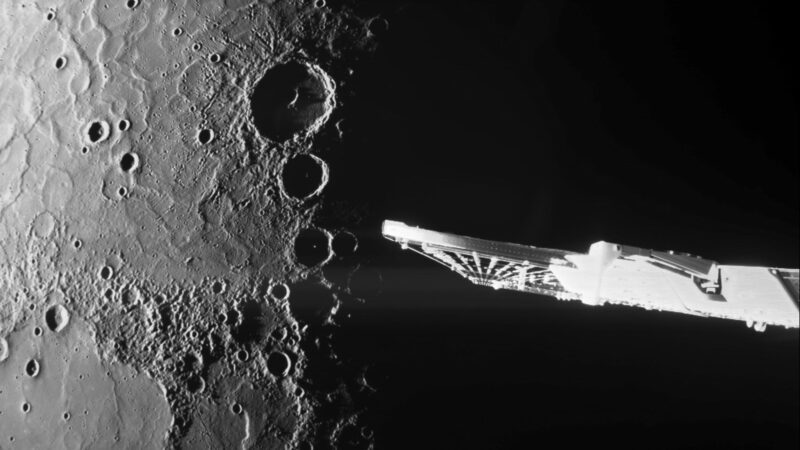
Other images show the vast volcanic plains known as the Borealis Plantia. Billions of years ago, lava flowed across the surface during volcanic eruptions, creating these smooth plains.
Young features
The spacecraft also filmed some of the Mecury's younger features, including Nathair Facula, a 40km wide volcanic vent. Deposits 300km in diameter reveal what the European Space Agency (ESA) called "the aftermath of the largest volcanic explosion on Mercury."
Another "young" feature is the Fonteyn Crater, formed a relatively recent 300 million years ago.
It is easy to spot younger features on Mercury because they look bright on the otherwise dark planet.
"Scientists don't yet know what exactly Mercury is made of, but it is clear that material brought up from beneath the outer surface gradually becomes darker with age," the ESA said.
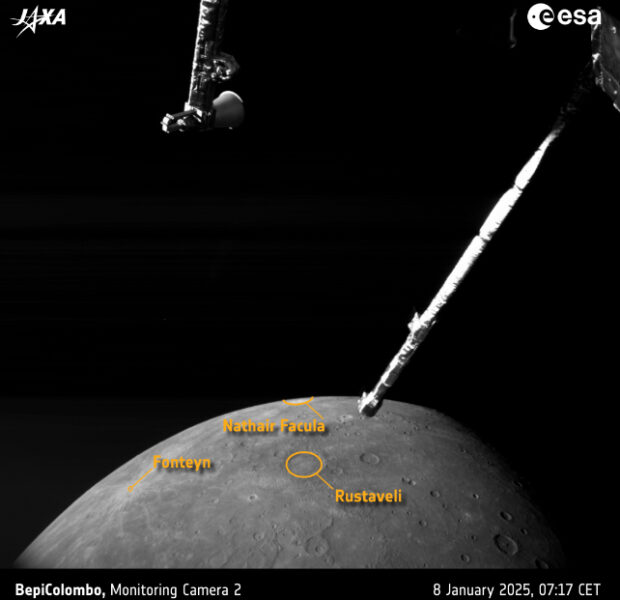
A joint mission
BepiColombo is a joint mission by the ESA and the Japan Aerospace Exploration Agency (JAXA). Scientists built the spacecraft in the UK, and it launched in October 2018.
This flyby marked the final "gravity assist maneuver" needed to steer BepiColombo into Mercury's orbit, where it should arrive in late 2026.
This is the last time the spacecraft will capture close-up images of the planet's surface. When it arrives at Mercury two years from now, it will separate and deploy two orbiters. The Mercury Planetary Orbiter from ESA and the Mercury Magnetospheric Orbiter from JAXA will maneuver into polar orbits but will not come within 480km of the surface.
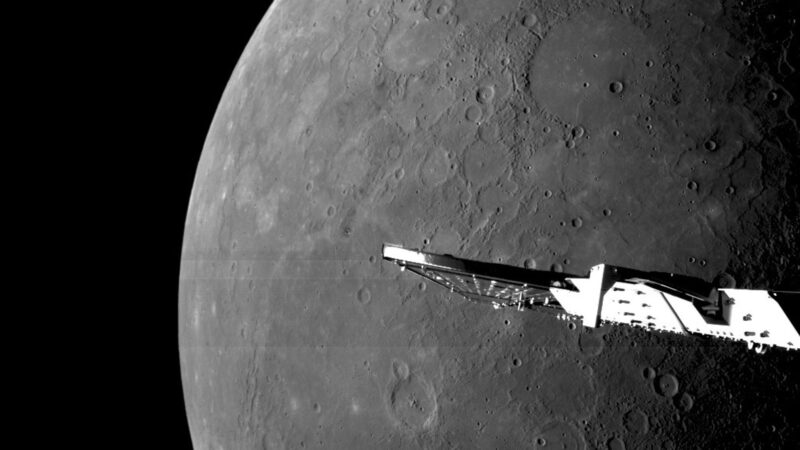
"BepiColombo's main mission phase may only start two years from now, but all six of its flybys of Mercury have given us invaluable new information about the little-explored planet," Geraint Jones, BepiColombo's ESA Project Scientist, explained.
My grandfather and I had a daily ritual when I came home from school. I breezed through my homework so we could watch National Geographic, the History Channel, or the Discovery Channel. I called it the Educational Trinity. Those afternoons shaped my fascination with all the strange things in our world.
Glued to the TV one day, I came across a program about UFOs. One particular story stuck with me. In 1998, a photograph was taken from the International Space Station. It was of a black, oddly shaped object hovering in the eerie, pale glow of Earth’s orbit. What was this object? Was it watching us? Where did it come from? Years later, I may finally have answers.
What happened in 1998?
In December 1998, the Space Shuttle Endeavour flew to the International Space Station. The STS-88 mission was critical for the expansion of the ISS, and the astronauts were supposed to connect the first American module (Node 1) to the station.
While some astronauts worked outside, those inside took photos of Earth. To their surprise, a mysterious object was floating a short distance away. When NASA released the images, the object became a topic of debate on Earth.
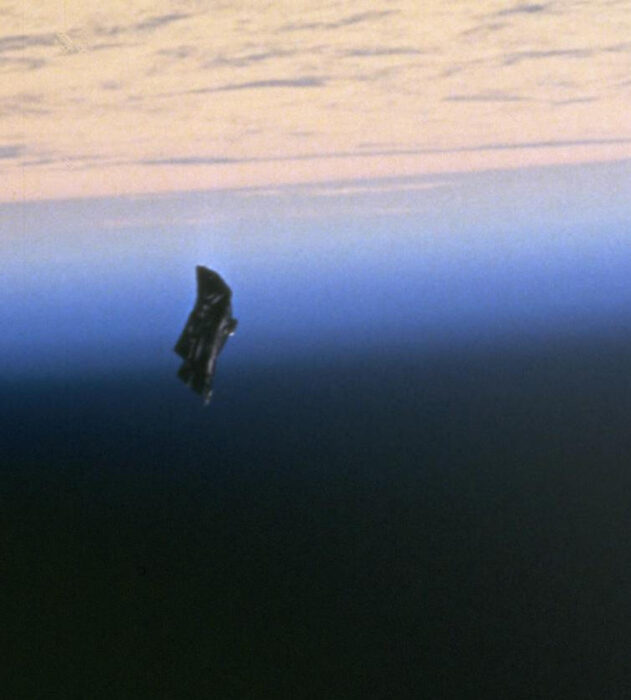
Some people assumed it was a UFO monitoring our planet. The dark, angular object was unlike any human-made satellite. It lacked the usual circular or cylindrical shape with panels at the sides. Rather, this one had odd edges, curves, and no identifiers like flags or model numbers. In certain images, the object appeared to change shape.
The object became known as the Black Knight Satellite. Some conspiracy theorists believe it dates back to Nikola Tesla's experiments with electricity and radio signals.
Nikola Tesla
Black Knight conspiracy theorists link the object to 1899 when Nikola Tesla conducted experiments in Colorado Springs. Tesla built the Tesla Experimental Station, where he aimed to study electricity, wireless telegraphy, and the role of air pressure. While conducting these tests, his receiver picked up on some peculiar signals. In 1899, he reported:
We’re getting messages from the clouds one hundred miles away, possibly many times that distance…
Later on, in 1935, he stated:
In 1899, while experimenting with a wireless receiver of extraordinary sensitivity, I detected faint signals from Mars, our brother planet. I could not interpret the signals, but they seemed to suggest a numerical code, one–two–three–four.
As interesting as these signals sounded, Tesla ran into financial trouble and did not pursue the matter further.

Decades later, in 1927, Norwegian amateur radio operator Jorgen Hals was playing around with his radio equipment. Upon turning the radio to a certain frequency, the signals bounced back slower than usual (15 seconds as opposed to one-seventh of a second). Why the delay? Had Hals picked up on something lurking above the Earth? This odd phenomenon is cited as early evidence of the satellite's existence.
The UFO craze
In the 1950s and 1960s, reports of a satellite of unknown origin circulated. In a 1954 newspaper report titled Artificial Satellites Circling Earth Now, says Ex-Marine, ufologist and former Marine Donald Keyhoe said there were:
At least one, and possibly two, artificial satellites circling the earth.
Another report stated that unusual radio signals had been detected in Earth's ionosphere. Supposedly, the signals didn’t match patterns from human-made transmissions.
The U.S. military initially attributed the signals to the Soviet Union or natural space phenomena. However, the Soviets only launched Sputnik 1, their first satellite, in 1957. This led some researchers to suggest an alien satellite was responsible.
In 1958, amateur astronomer Steven Slayton spotted an anomaly close to the Moon. Through his telescope, Slayton saw a fast-moving dark object that he estimated was 10m long and 1,000km from Earth. He saw this object more than once during his night sky observations.
In the 1960s, when the Space Race heated up, reports of strange objects increased. Astronaut John Glenn's account of three spacecraft following his ship during his first orbital flight is well documented.
In March 1960, several newspapers reported strange activity in Earth's polar orbit; again, an object of unknown origin. Years later, this was revealed to be a U.S. satellite designed to spy on the Russians.
Observing Earth for 13,000 years
It wasn't until the 1970s that the object finally got its name. 'Black Knight' comes from a novel by Russian author Alexander Kazantsev. In his book, The Destruction of Faena, an alien civilization sent a satellite to observe the human race. The satellite had the code name, Black Prince.
One of the most prominent figures associated with the Black Knight theory is Duncan Lunan, a Scottish researcher and writer. In 1973, Lunan published an article in the Fortean Times, a magazine dedicated to anomalous phenomena. In this article, Lunan analyzed radio signals recorded in 1928 and 1950.
Lunan theorized that the signals were not random. Rather, they were a coded message sent from a satellite orbiting Earth. He suggested that the signals could be of extraterrestrial origin, although he was careful to point out that they might not necessarily be linked to the Black Knight. In fact, Lunan distanced himself from the Black Knight conspiracy, saying it had "nothing to do with me."
Lunan studied Long Delayed Echoes (LDEs) and believed they created "star charts and diagrams," according to an article published by Armagh Observatory and Planetarium. On his website, Lunan states:
When I tried graphing the signals to see if that would work, to my astonishment I found what appeared to be a readable message, giving Epsilon Boötis (Izar) as the origin star of the spacecraft, and its arrival date as 11,000 BC.
Let's debunk
Circling back to Tesla and Hals, there could be a natural explanation for their mysterious findings. They could have picked up signals coming from deep-space pulsars. Pulsars are a type of neutron star, remnants of massive stars that have exploded as supernovas. A pulsar rotates rapidly, often several times per second, and its strong magnetic field generates beams of electromagnetic radiation (radio waves, X-rays, or gamma rays) which we can pick up from Earth. Astronomers did not discover pulsars until the late 1960s.
As for the STS-88 mission, as anticlimactic as it sounds, NASA’s official classification of the mystery object is a runaway thermal blanket or piece of space debris. Space debris in low orbit is common, and objects can appear irregular or even resemble artificial structures, especially from a distance.
Respected space journalist James Oberg provided substantial evidence that the object was debris. He points out that the crew on the STS-88 mission were installing a Node, which required a blanket to protect it from the sun.
In their communications with each other on the spacewalk and from inside the space station, the astronauts even state that they lost a thermal blanket. Here is an official transcript between Commander Robert Cabana and Mission Specialist Jerry Ross:
Cabana: Jerry, one of the thermal covers got away from you.
Ross: How did it do that?
Cabana: Jim saw a tether, I’ll guarantee you. Where did it go?
Ross thought the Black Knight theory preposterous and later said:
If we see something up there, we will be the first ones to ask questions and to tell people we saw something we didn’t understand. Conspiracy theories are fun for those working on them, but a waste of valuable brain power.
So, with all this evidence, why hasn't the story died?
Reemergence in 2017
The conspiracy theory reemerged fairly recently because of an article by writer Daisy Dunne for the MailOnline. The website shared video footage that supposedly showed someone shooting down the Black Knight satellite.
The footage shows a bright white ball of debris falling from the sky. It took the internet by storm.
Who shot it down? "A secret Illuminati warplane," according to online conspiracy theorists.
And so, though thoroughly debunked, the Black Knight Satellite continues to fuel wild theories. We must admit, it makes for a great story.

The Mars weather report is in, and we're seeing harsh conditions for the first few months of the new year.
For the first time in two Earth years, it's spring on the Red Planet's northern hemisphere, and high-resolution space cameras have caught sight of dramatic landscape shifts all across the disintegrating ice fields. Between avalanches, geysers, and katabatic winds, the Martian spring has been packing all the worst weather events into its small northern ice cap.
Ice avalanches are common in Martian spring
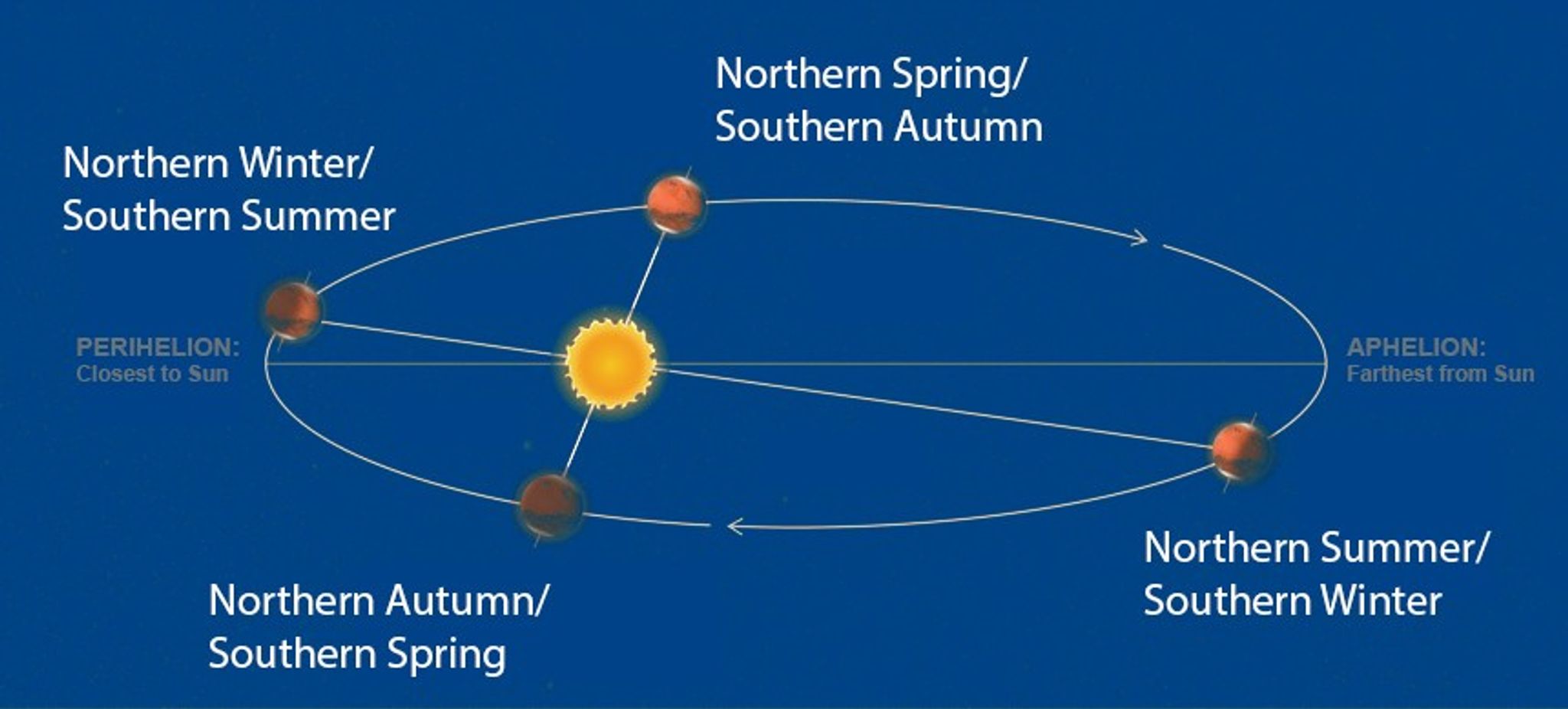
November 12 marked the new year on Mars, counted from trips around the Sun since a dust storm raged across the planet's surface in 1955. Because Mars' orbit is much more elliptical than the Earth's, seasons are more extreme. On top of that, the thin carbon dioxide atmosphere offers little protection from extreme temperature shifts.
While some of the ice coating its north pole is water ice, much of it is carbon dioxide. Even on Earth, carbon dioxide never passes through a liquid state but sublimates directly into gas. Since Mars' weak atmosphere doesn't provide enough pressure to maintain liquid water, that gas doesn't just bubble up through melted ponds, it destabilizes entire glacial structures.
So far, NASA's Mars Reconnaissance Orbiter (MRO) hasn't caught any avalanches mid-fall this year. But in 2015, the MRO snapped a photo of a six-meter cornice in freefall over a scarp. It appears above as our lead image.
Geyers erupt across the Planum Boreum
If sublimated carbon dioxide can't escape through cracks in the ice, it builds up. When the pressure exceeds the weight of the ice, the gas jettisons everything above it and escapes into the atmosphere as a geyser. But the Planum Boreum, or northern polar plain, isn't just covered in ice. The frost is mixed in with sand and dust. That creates dramatic images like this recent one from the MRO, where geysers leave darkened fans across the frosty surface.
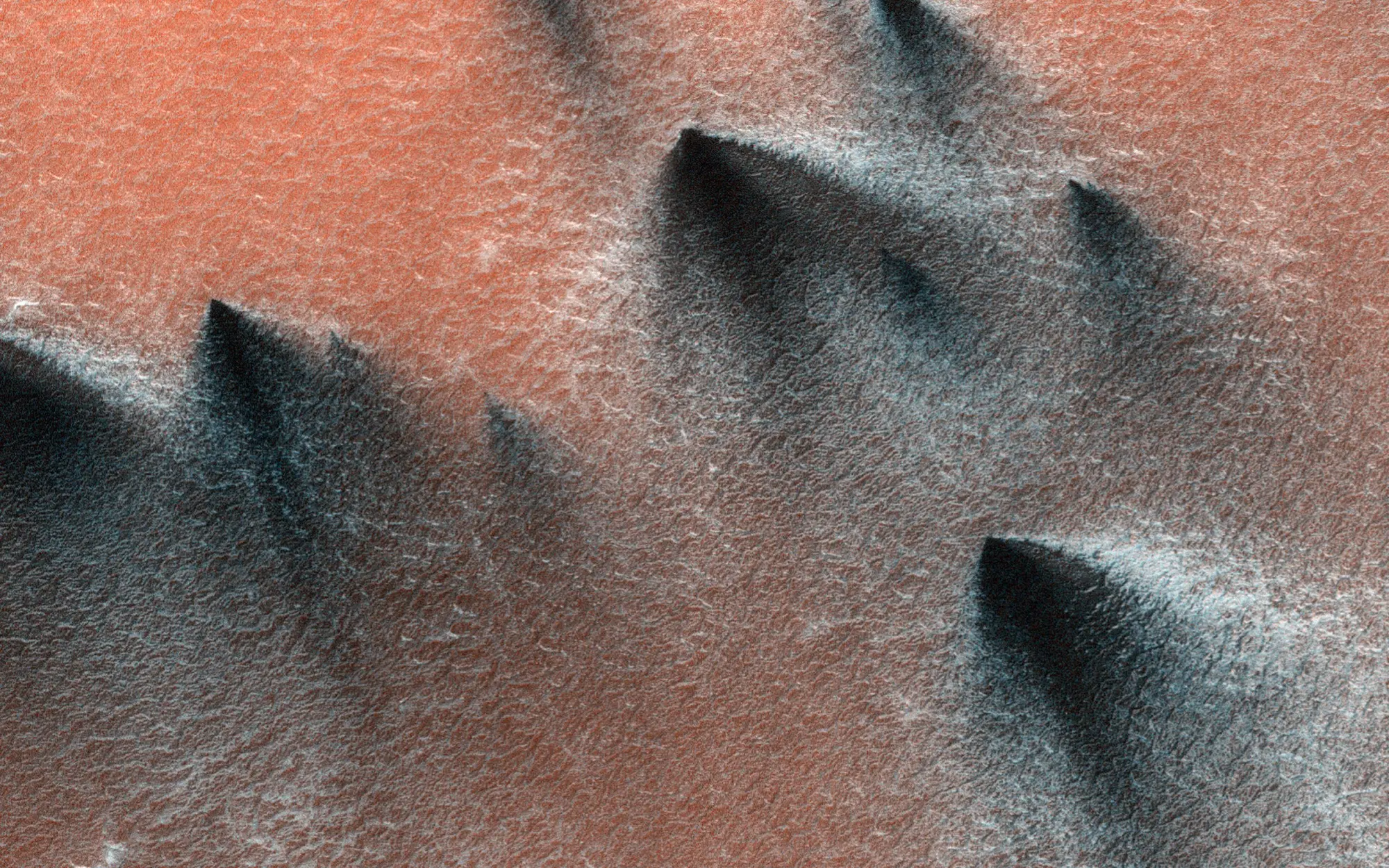
Melting ice reshapes the landscape
In Antarctica, glacial retreat driven by global warming has revealed permanent troughs in the ice. The legacy of long-ago ice erosion, these pale in comparison to the troughs spiraling across the northern ice cap of Mars. Every spring, the sublimated carbon dioxide forms winds, which gain speed as they propel their way down the labyrinthine corridors. They also rocket up in temperature, melting the walls of the troughs a little further each year.
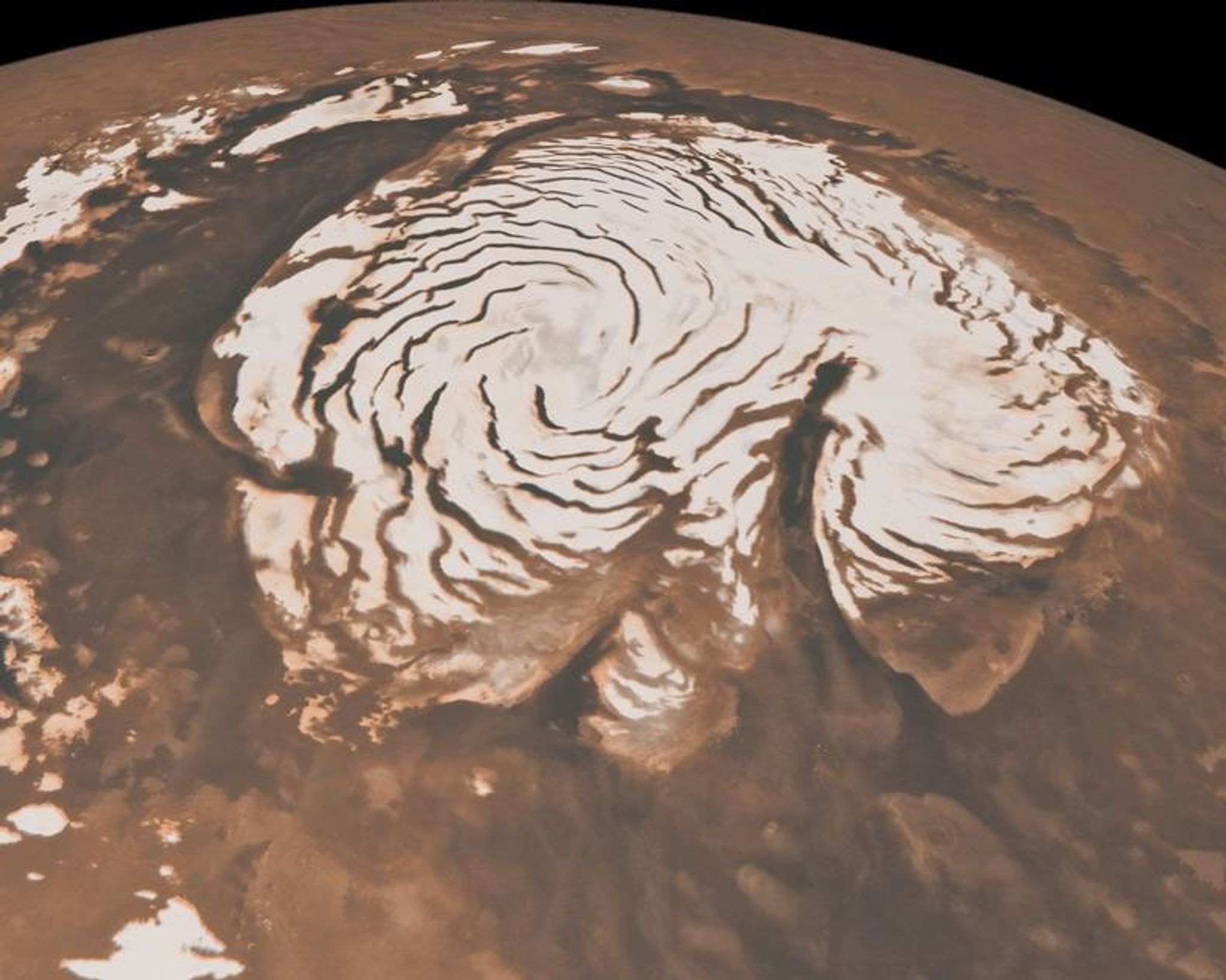
On Earth, winds like these mainly occur as cold air flows down icy slopes, such as in Antarctica and Greenland. They're called katabatic winds. On Mars, they have thousands of kilometers of spiral troughs in which to gather power. They blast the sandy surface of the surrounding plains with enough force to shift entire sand dunes. These dunes are especially vulnerable in the spring because their frost layer has melted, as captured by the MRO on camera.
Come autumn, when the carbon dioxide frost starts to settle on the ice fields once more, the new progress of the glacial canyons and dunes will freeze in place. Mars then waits for the next thaw.
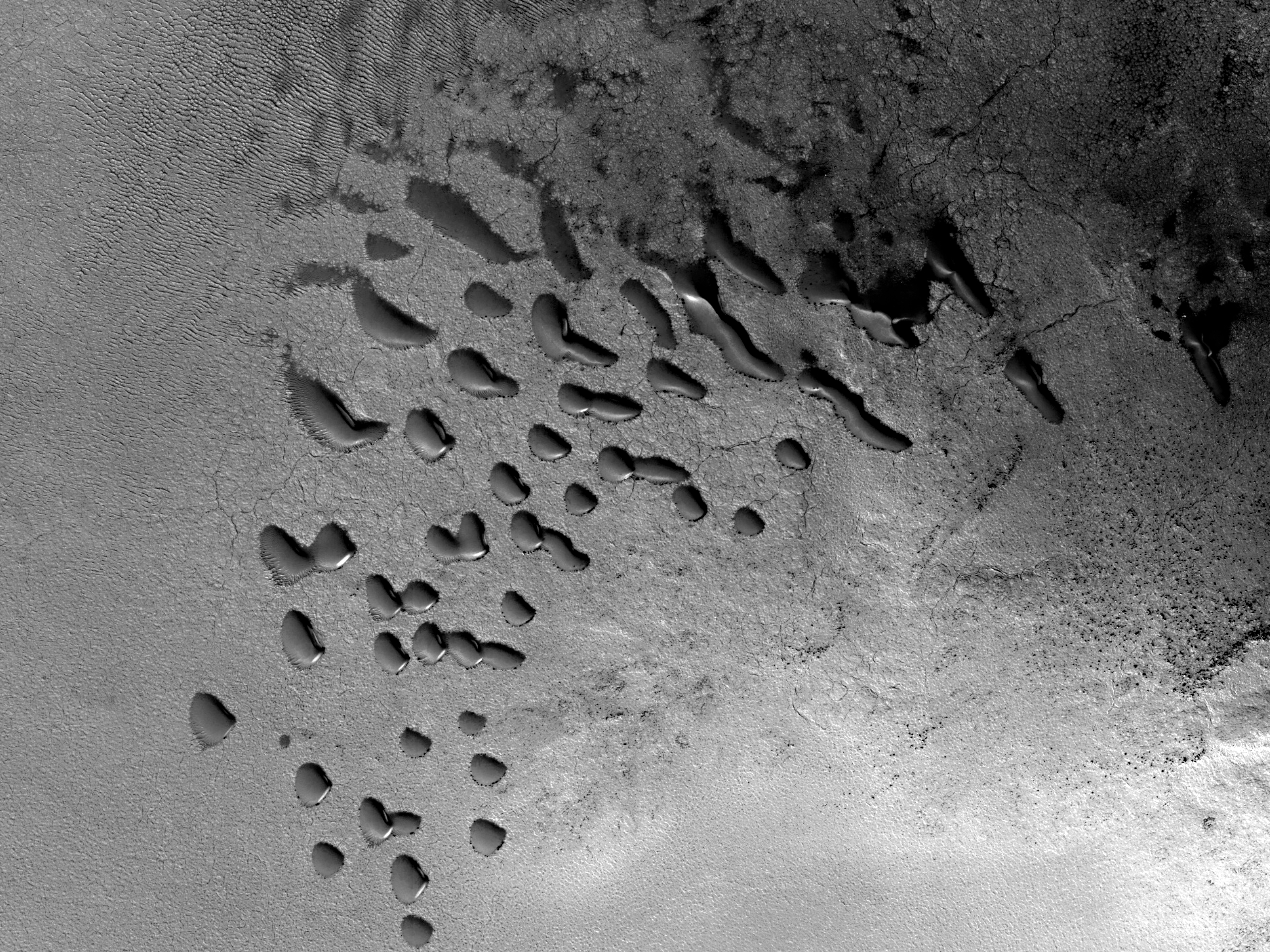
In 1929, Edwin Hubble discovered from observations of distant galaxies that the Universe was expanding. This baffled astronomers and the public alike. Then in 1998, another wrinkle: Two different teams of cosmologists found that not only was it expanding, but that expansion was accelerating. This confused them even more since they couldn't figure out what was driving the acceleration.
They named the mystery component dark energy. Although no one knows what it is, it has some peculiar properties. As far as we know, the density of dark energy is a constant throughout space. That means every cubic meter has the same exact amount of dark energy, and as the universe expands, it creates more. (Don't worry -- total energy is conserved since the expansion of the universe also drives its gravitational energy further into the negatives).
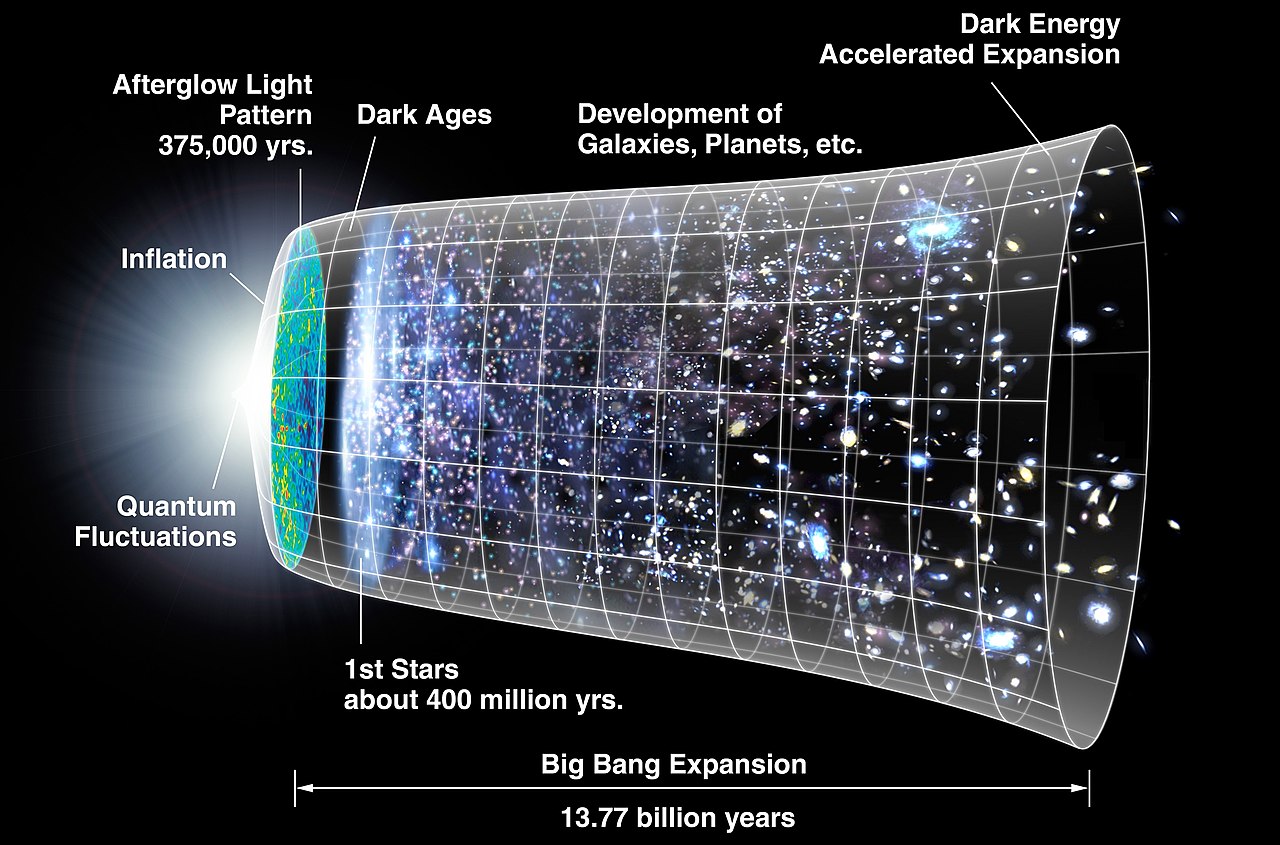
How much will the Universe actually expand?
Our uncertainty about the history and future of dark energy allows for three different fates for the Universe. In a future where dark energy density suddenly increases, the Universe will explosively rip itself apart. If, instead, dark energy density drops, then the Universe will reverse its expansion and bounce back upon itself. But according to all our current knowledge, dark energy density will remain constant. The expansion will continue coasting along with the same acceleration. That's the future we'll explore in this article.
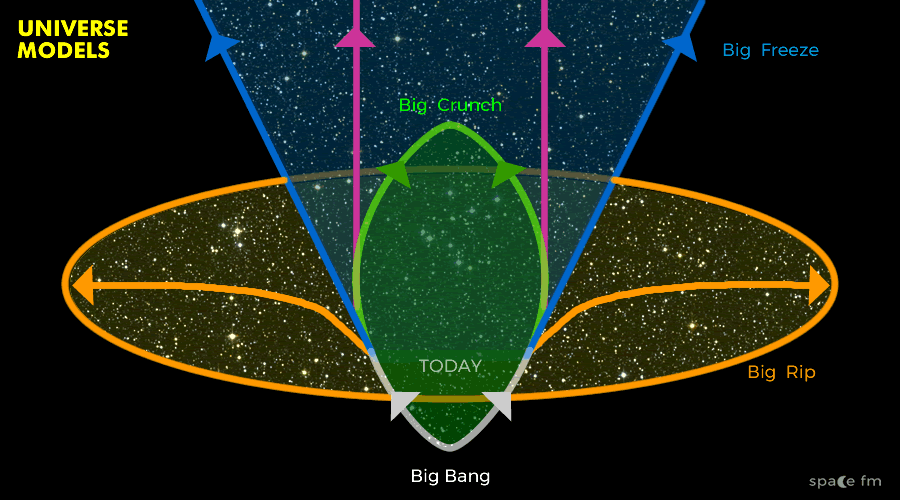
When last we looked at the future of existence, the Sun had just jettisoned most of its matter into space, destroying the planets and leaving behind its molten core. That's eight billion years from now. The solar system is more or less gone. But the galaxy is still there, and it has a lot more in store.
150 billion years from now
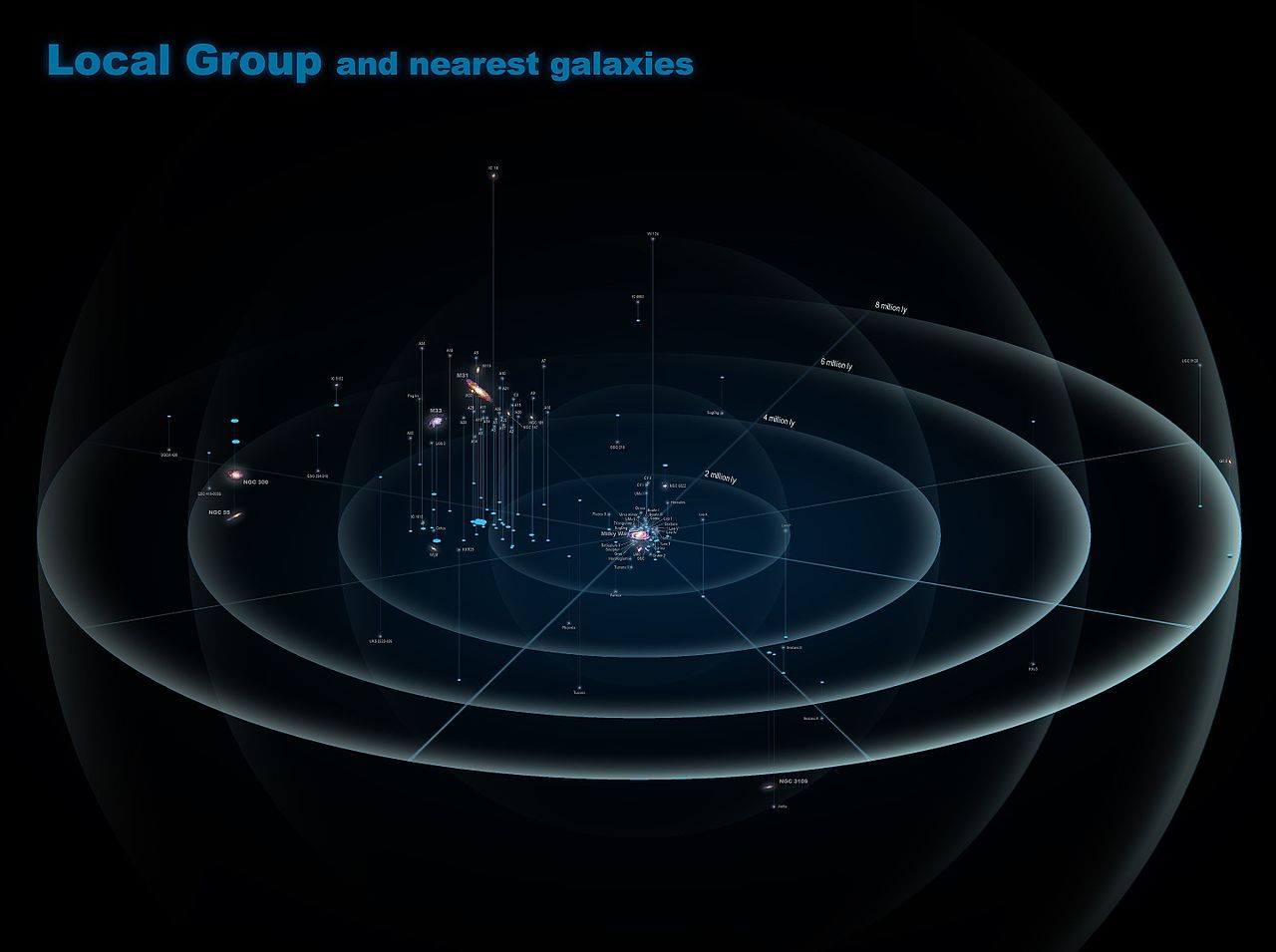
Where 47 galaxies, including the Milky Way, once orbited one another, a monster now sits. The mega-galaxy comprises over one trillion stars. Since massive blue stars die young, most of the survivors are very small and red. Except in a few pockets where merging galaxies compressed and heated interstellar gas, no new stars have been born for eons.
From almost anywhere in the Local Group, all an observer sees above is a milky-white haze clogging the sky. Because the mega-galaxy's stars are small and faint, most of them don't show up as individual pinpricks. Gone are naked-eye constellations, the multicolored nebulae, and the galaxies visible between the stars.
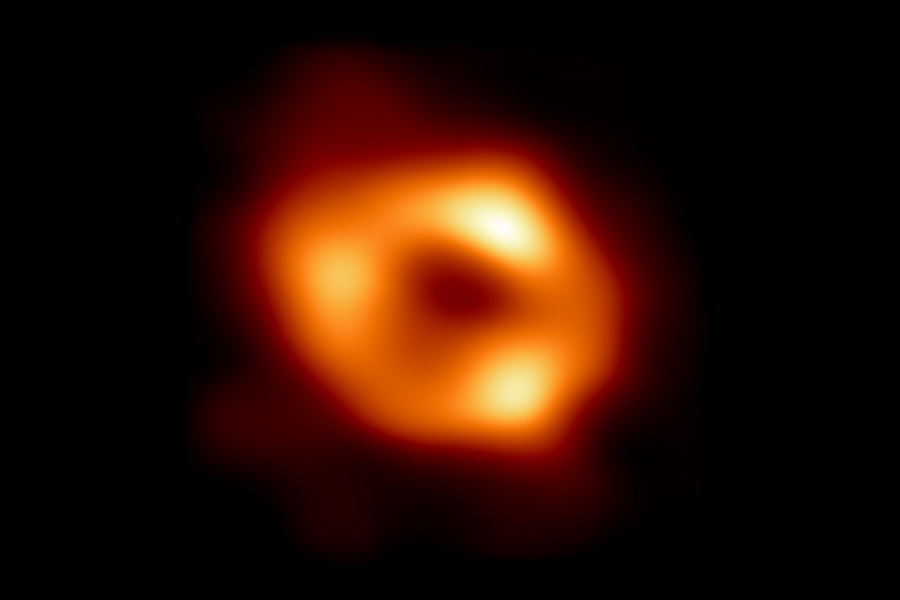
And on the edges of the mega-galaxy, the outside universe is dark. The expansion of space has pulled other galaxies so far away from us that the light from their stars will never reach us. Only the photons of the Cosmic Microwave Background, which have traveled toward us since a time when the Universe was on fire everywhere, reach the Local Group from outside.
1 trillion years from now
An unassuming rocky planet orbits a red dwarf, the smallest and dimmest of all true stars. Perhaps it has intelligent life on it. Perhaps they build a telescope, and look up at the sky.
In one direction, the starry mist of the Local Group mega-galaxy blocks out all. A few nearby points of light stand out of the morass. The people on this planet know that their star is not alone, and they search for life around other stars just as we search today.
In the other direction is blackness. It is absolute. The expansion of space has stretched the wavelengths of Cosmic Microwave Background photons past the size of the observable universe. They wash over the telescopes on that insignificant planet, but they're not really light in the same way that the current of a river is not an ocean wave. They carry no information.

Among the information they don't carry is evidence of the Big Bang. Because the Cosmic Microwave Background is identical in every direction, and light would never have enough time to travel between all of the locations on its surface, all of those locations must once have been very close together.
It's possible that the observers would be able to determine the density of dark energy from the trajectories of stars ejected from the mega-galaxy. If so, they could make the leap to an expanding Universe and the possibility that somewhere out there, farther than they can see, are others like them.
100 trillion years from now
The era of star formation is at an end. There is no longer any gas left between stars to give rise to new ones, and no massive stars to replenish it via explosive supernovae. In fact, there are very few stars at all.
When stars run out of fuel to burn, they form one of three remnants. White dwarfs are the lightest, comprised mostly of helium or carbon and oxygen. Then there are neutron stars, which are so dense that they're able to compress protons and electrons into a crystal lattice made of neutrons. And finally, there are black holes. For the most part, these are the objects which now make up the mega-galaxy.
Every so often in this stellar graveyard, though, something new flickers into life. Floating among their massive counterparts are the ruins of stars that never made it in the first place. More like solitary Jupiters than our Sun, brown dwarfs don't burn hydrogen and are only visible up close. When two of these brown dwarfs collide, they create a real star.
Most of the galaxy is still dead, but not all.
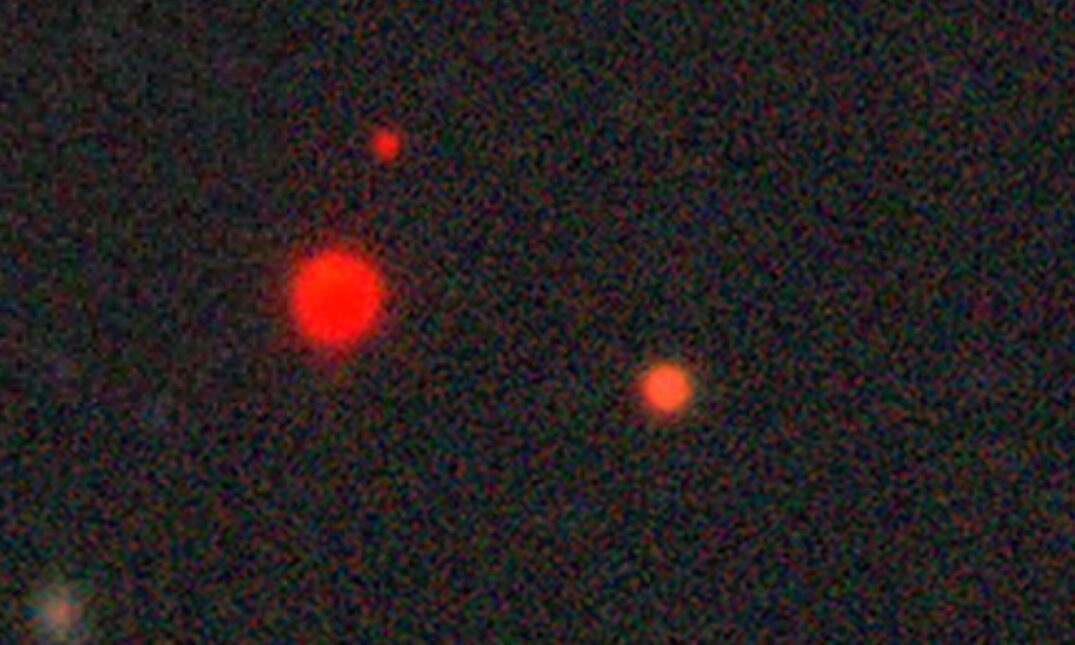
100 sextillion years from now
All galaxies have disintegrated. Sooner or later, their constituent components either ventured too near the central supermassive black hole or rocketed off into space.
Now, a white dwarf sits in a vacuum. It doesn't drift. There is nothing else in its visible universe relative to which it might drift. Dark energy has ripped apart everything not bound by internuclear forces.
If ever this white dwarf had a planet, it absorbed it long ago. Now it sits, and perhaps it spins gently. And, ever so slowly, it evaporates. Its protons may undergo a theorized decay process. If they don't, random quantum flukes allow the structure of the white dwarf to rearrange itself on unimaginably long timescales.
Either way, the white dwarf jettisons photons and other particles. Space expands between them, and they vanish over the horizon of the visible universe.
1 nonillion years from now
The supermassive black hole that used to lurk at the center of the Milky Way is a lot more supermassive now. It has subsumed every other black hole, every brown dwarf, planet, and stellar remnant that didn't escape the mega-galaxy.
Counterintuitively, black holes aren't perfectly cold. They have a faint temperature arising from a bizarre quantum mechanical effect. Pairs of photons pop into and out of existence all the time without anyone noticing, like the background static of existence. Then, a fraction of a second later, they annihilate one another.
Sometimes, virtual photons pop into existence right outside the event horizon of a black hole. Since the photons have slightly different directions, it's possible for one of them to cross the event horizon, never to be seen again. That leaves the other one free to sail off into the wide, wide world.
So black holes emit light, and anything that emits light loses energy. Slowly, very slowly, this unfathomable black hole is evaporating.
10106 years from now
All the black holes are gone, and the universe consists of a very diffuse particle soup. Electrons and photons bubble in a weak gas. Collision by collision, they exchange energy with one another. When two people hold hands, their skin approaches the same temperature. The same is happening for the Universe.
We don't know what that temperature is, and anyway, it's irrelevant. Differences in temperature drive physical processes, like hot steam against cold air in the dry pipe of a train. When everything is the same temperature, nothing will ever happen again.
Two electrons collide, and their energies edge toward one another just a little bit more.
Nowhere and nowhen
The Universe exists. It is made up of photons and electrons and a handful of more obscure particles. All of them have the same energy. Everything is the same in every direction. In many ways, everything has always been the same.
That's because time is defined by the direction of increasing sameness. If you fill a salt shaker with pepper on the top and salt on the bottom and then let it roll down the hill, it will show up at the bottom as a nice salt-and-pepper mix. In this case, gravity speeds up a more universal process. This measurement of sameness is called entropy, and it's always increasing. That's what makes today different from tomorrow.
Now, there is no tomorrow. There's just today, on and on and on.
It came from outer space. That was nothing special: radio telescopes constantly receive signals from astronomical objects as close as our Sun and as far as the fiery edge of the visible Universe. The period of this signal, though, was unusual. Every 2.9 hours, radio waves blasted the strange, spidery antennae of the Murchison Widefield Array in Western Australia for half a minute or so, then cut out.
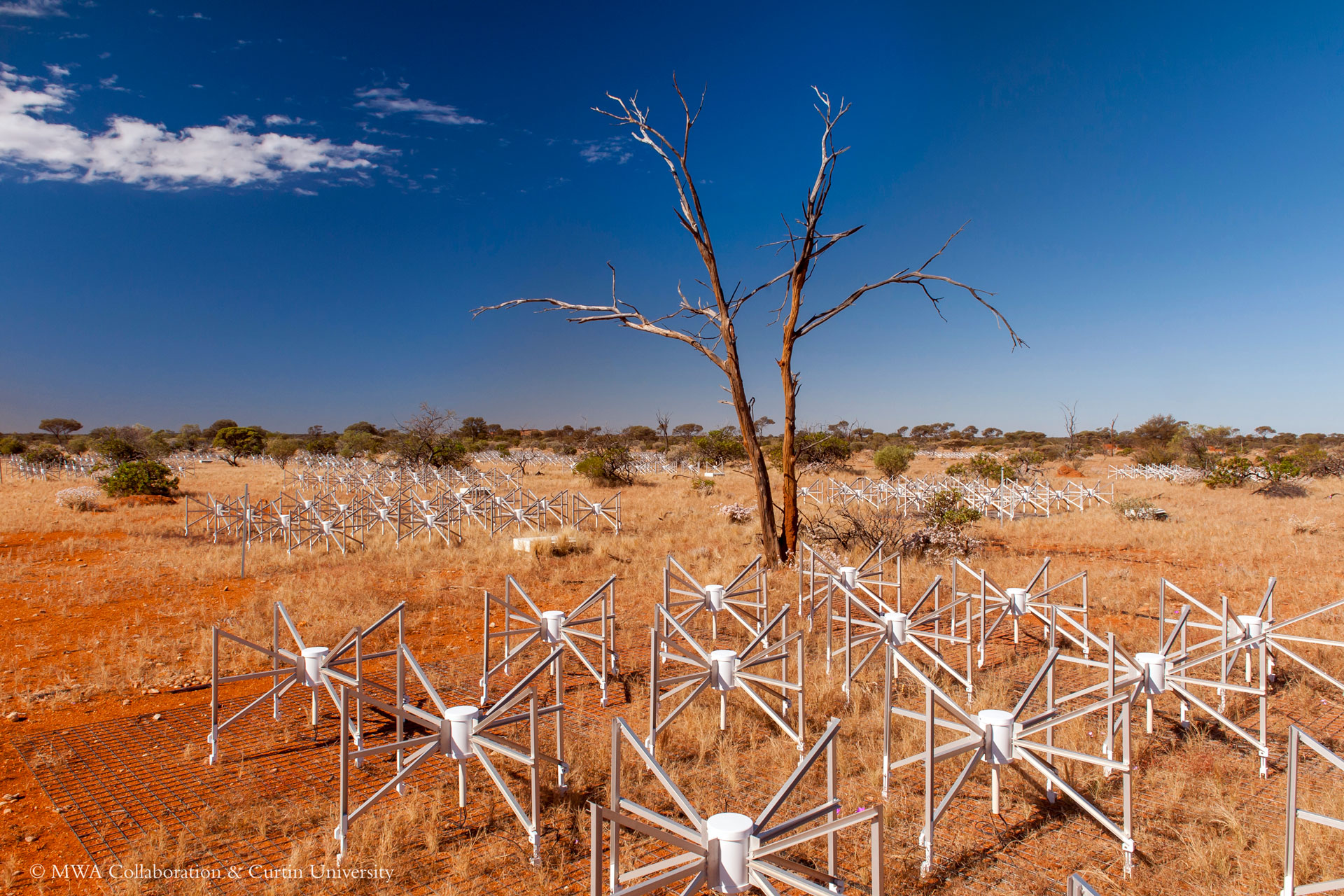
For over a decade, no one noticed. Astronomers studying recurring radio signals were focused almost exclusively on pulsars, the remnants of massive stars whose off-kilter magnetic fields launch radio waves into space every time they spin around. These cosmic lighthouses keep time better than an atomic clock. The fastest of them rotates 716 times every second.
The search for fast pulsars pulled a lot of attention away from their less dramatic siblings. They keep better time than slow pulsars and they're also easier to find. If you observe the sky for 20 minutes, a pulsar with a period of 10 milliseconds will show up 120,000 times in the data. In contrast, the strange 2.9-hour pulse probably wouldn't even show up once.
Over the last few years, though, radio astronomers discovered exactly 10 of these extremely slow signals. The most recent and longest period is the 2.9-hour signal. A team at Perth, Australia's Curtin University, led by Natasha Hurley-Walker, announced its discovery at the beginning of December.
There's only one problem -- it shouldn't exist.
Beyond the death line
When astronomers describe something by how it acts, rather than what it is, that's a sure sign they don't know what they're looking at. Examples include dark matter ("it's matter, but we can't see it"), dark energy ("it's energy, but we can't detect it"), and fast radio bursts ("well, they emit in radio waves, and they really are very fast").
Until this month, Long Period Transients (LPTs) fell into that category. The key feature of an LPT is its period (quite long). That's a problem for our understanding of how periodic radio signals are produced. Pulsars, the rapidly spinning dead stars described above, are the remnants of massive stars that have shed their outer layers in a supernova. But part of their ability to emit radio waves stems from their angular momentum. As they spin, they lose that angular momentum. And when their period becomes too slow, they pop out of existence, never to be seen again.
This is called the pulsar death line: the point beyond which we stop seeing any pulsars. There's a lot we don't understand about it, but one thing we do know is that 2.9 hours is so far beyond the death line that it's practically a zombie. So what was producing these signals? Was it some kind of exotic pulsar? Or something even stranger?
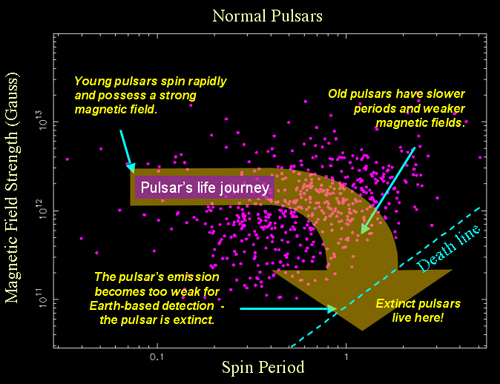
Astronomers get their first clue
The new slow transient discovered by the Curtin team isn't just the longest-period astrophysical radio signal ever discovered, it's also the first one astronomers have pinpointed to a specific star. Bafflingly, that star is an M-dwarf, a little red star less than half as hot as the Sun and only a third of its mass. For an emission as strong as this, that's a bit like arriving at the scene of a murder and finding a toddler holding the knife.
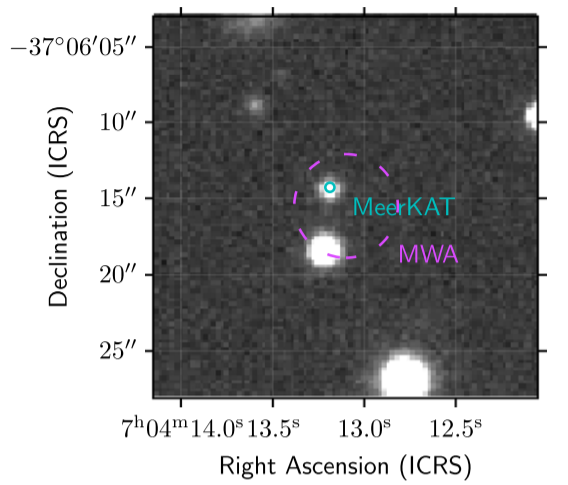
So what's going on? There are two leading theories, and both involve dead stars too faint to show up in images. The first theory is that the M-dwarf is in orbit around a pulsar, and something about the orbit and magnetic field setup is allowing it to emit slowly. This could happen if circumstances were exactly right. It's not very likely.
The second theory is that the M-dwarf orbits a much lighter stellar remnant called a white dwarf. Pulsars are left over from very heavy stars, supported against their own collapse by the pressure of neutrons crammed infinitesimally close together. White dwarfs, in contrast, are the leftover cores from stars like our Sun. They're lighter and much less dense, supported by electron pressure rather than neutrons. They don't do much. They just sit there unless another white dwarf comes too close, in which case they explode violently.
In a few cases, though, white dwarfs can steal material from a companion star and accelerate it in their strong magnetic fields until it whips radio emissions into space. We've seen this happen twice before. In each case, the period is fast, in line with traditional pulsars. But unlike for pulsars, the emission doesn't necessarily derive from the rotation speed of the white dwarf. As far as we know, there is no white dwarf death line.
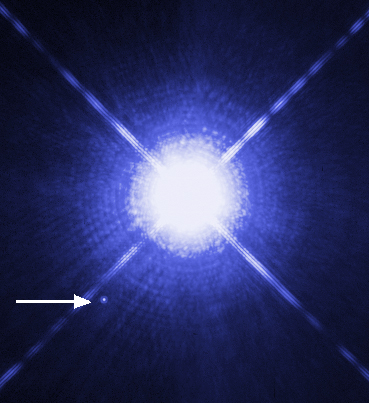
Strange discoveries lead to new physics
There are a lot of open questions in radio astronomy. We barely know how pulsars produce radio waves. We don't even know what kind of objects make the mysterious extragalactic signals known as Fast Radio Bursts. As for a white dwarf emitting like a pulsar, all we can say is it has something to do with strong magnetic fields and the presence of a companion star.
But everything in the universe follows the same laws. The underlying mystery here is not what astrophysical object produces any given radio signal but rather what rules govern how matter emits light in extreme conditions. The more we know about those rules, the faster we'll understand the next strange radio signal that lands on our doorstep. Deciphering long-period transients is a step towards that understanding.
"Up until now, we didn't expect such objects to exist," says Fengqiu Adam Dong, a researcher at the National Radio Astronomy Observatory, who studies slow transients. "Some people think that they could solve other mysteries in astronomy like repeating [Fast Radio Bursts]."
So tune your radio to 600 MHz, and listen for a faint little whistle. If you miss it, don't worry -- it will be back in 2.9 hours.
NASA astronaut Don Pettit's hobby is astrophotography and his images from the International Space Station are always a cut above. He even uses special tools to capture what he sees.
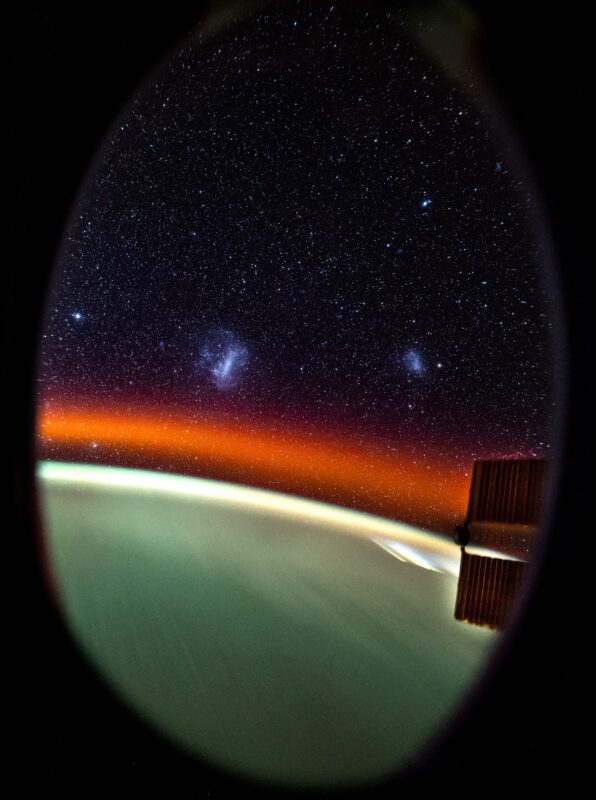
His most recent images show the Large and Small Magellanic Clouds against a backdrop of pinpoint stars. These satellite galaxies orbit the Milky Way and are 200,000 light-years away. Pettit used a homemade equatorial mount. It lets him take long exposures where the stars remain pinpoints rather than streaks, and the foreground is not blurry.
The ISS moves at a staggering 28,000kph, and photographing at that speed is no mean feat. How many good shots have you taken from a moving car? Pettit's mount sits between the camera and tripod and negates the movement of both the ISS and the objects hurtling through space, allowing him to take tack-sharp images.
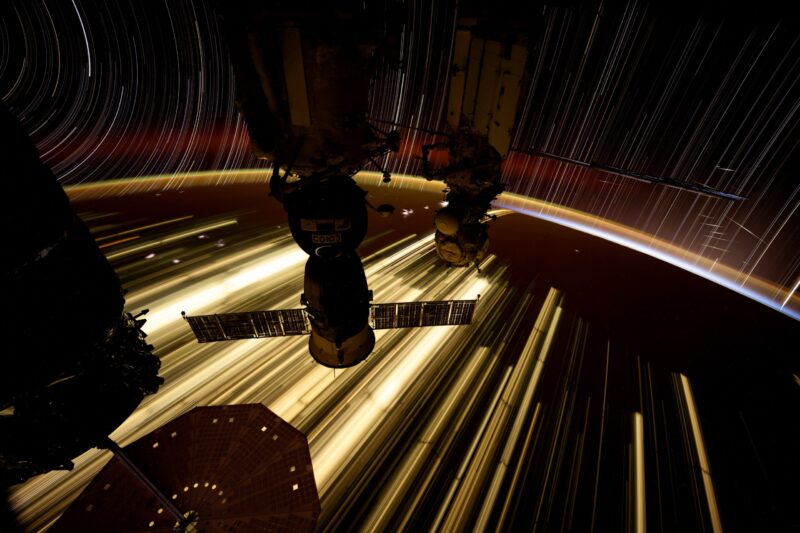
Telling the story
Pettit has always shared his photos with the public over social media. “[Such] images help tell the story to people on Earth who don’t have the opportunity to go into space,” he explained to NASASpaceFlight.
This is Pettit's fourth spaceflight. On each one, he worked to improve his astrophotography skills. The cameras on the ISS are almost never turned off, as you often only have seconds to get a shot. On this flight, new lenses on board the station improved nighttime images, allowing him to take his work to a new level.
Wonky streaks: Starlinks flashing ISS. Compared to the well-defined streaks from star trails, this time exposure shows wonky streaks flashing ISS. These are Starlink satellites reflecting pre-dusk or pre-dawn sunlight off their solar panels. They are only seen from 5 to 18… pic.twitter.com/zObu5c3O85
— Don Pettit (@astro_Pettit) November 15, 2024
The images of the satellite galaxies are not the only epic photos he took from the SpaceX Dragon Spacecraft, docked at the ISS. He photographed some Starlink satellites in an image that he has dubbed “cosmic fireflies.”
He had not intended to photograph the satellites, but they kept showing up in other images, so he decided to document them. Other images show the Tsuchinshan-ATLAS comet and the sixth flight test of the SpaceX Starship Rocket.
At 69, Petit is NASA's oldest active astronaut. He has spent over 370 hours in space. Besides photography, he carries out experiments that range from studying plant growth and fluid physics to Earth observations and creating salt crystals in space.

For decades, many scientists believed that Venus, our closest neighbor, was once more like Earth before it turned into the scorching planet with clouds of sulfuric acid we know today.
A new study has shattered that belief in a kinder, gentler Venus.
Earth and Venus are nearly identical in size and sit relatively close to one another in space. But the planet has come to be known as Earth’s “evil twin.” Swaddled in clouds of acid, with hell-like temperatures of 500°C, it is nothing like our hospitable planet. But many have believed that it may have once had liquid oceans and maybe even life.
A team from the University of Cambridge has studied the composition of the Venusian atmosphere. It turns out Earth's sister planet has always been inhospitable to life. Venus’s atmosphere is just too dry to ever have had enough water to form oceans.
There are two current theories about how Venus evolved. Both are based on climate models. The first suggests that Venus was once cool enough to have water oceans, but that a rapid greenhouse effect turned into its current hellscape. The second is that it has been its current temperature since birth, and that liquid water never existed here.
Instead of looking at climate models, the new research studied Venus’s atmosphere.
To keep a stable atmosphere on Venus, its volcanoes need to spew out the gases that are being broken down and removed from its atmosphere. This happens on Earth, because our volcanoes expel huge quantities of watery steam.
Venus is cloudy but dry
By comparison, volcanic eruptions on Venus are only six percent water. Commented the researchers, “These dry eruptions suggest that Venus’s interior...is also dehydrated.”
Though their study strongly suggests that Venus never held Earth-like life, lead author Tereza Constantinou stressed that other forms of life may exist.
“Any potential life in the Venusian atmosphere would have originated and evolved under entirely different conditions, perhaps adapted to survive in sulfuric acid clouds," she told ScienceAlert.
NASA’s DAVINCI mission intends to complete a series of flybys and send a probe down to ascertain if life does or once existed there. The current launch date is 2030.
The new insight into Venus has repercussions for the search for hospitable planets in our galaxy. Astronomers look for planets within a certain distance of a host star. This is known as the "habitable zone" and is an area where surface temperatures allow liquid water. It now seems that Venus has always been outside the habitable zone. It seems that a planet's distance from its star is not as simple a measuring tool as we've believed.
Earlier this year, the Curiosity Rover accidentally rolled over a rock on Mars. As it cracked open, it revealed yellow crystals of pure sulfur. NASA says it's the strangest find of the entire Curiosity project.
The little rover has explored the Gale Crater since 2012. It has found sulfur several times but always combined with something else. White calcium sulfate, for example, is fairly common in surface cracks. The salts formed when ancient water evaporated. But pure sulfur has never been seen before.
“[It's] like finding an oasis in the desert,” said Curiosity’s project scientist, Ashwin Vasavada of NASA. “It shouldn’t be there, so now we have to explain it. Discovering strange and unexpected things is what makes planetary exploration so exciting.”
Curiosity stumbled across the small rock in the Gediz Vallis channel that winds down Mount Sharp. At first, the rock looked ordinary enough. But when broken open, the distinctive crystals appeared.
Other rocks in the area looked similar to the one that accidentally cracked open. Curiosity rolled over another and drilled into it. Once again, gleaming yellow crystals fell out. It seems that this part of Mars abounds in pure sulfur. An instrument on the rover's arm confirmed the identity of the crystals.
Evidence of past life?
Scientists have always thought that elemental sulfur might exist on Mars, but this is the first time it has been confirmed. How the sulfur crystals relate to other sulfur-containing minerals on the planet remains unclear.
Pure sulfur only forms under specific conditions that have never been associated with this region on Mars.
Sulfur is essential for life. Sulfates are needed to make two amino acids that living things use to form proteins. This is the latest in a string of discoveries that make it more and more plausible that microbial life may have existed on Mars.
The James Webb Telescope — the super-sensitive, tennis-court-sized, space-based imager jointly managed by several international space agencies — continued to deliver gorgeous shots of the cosmos in 2024. From spiraling galaxies to never-before-seen phenomena to clearer glances at old Hubble favorites, the James Webb imagery is a treasure trove for anyone looking to inject a little awe into their lives.
Let's take a look at some James Webb highlights from this year.
Whirlpools and life among the stars
In late January, the James Webb collected this swirling image of spiral galaxy NGC 628. This galaxy in the constellation Pisces is 32 million light-years away. The blue, hazy regions represent densely packed older stars floating among gas and dust, while the galaxy's whirling outer filaments remind many observers of the nautilus-shell shape common here on Earth.
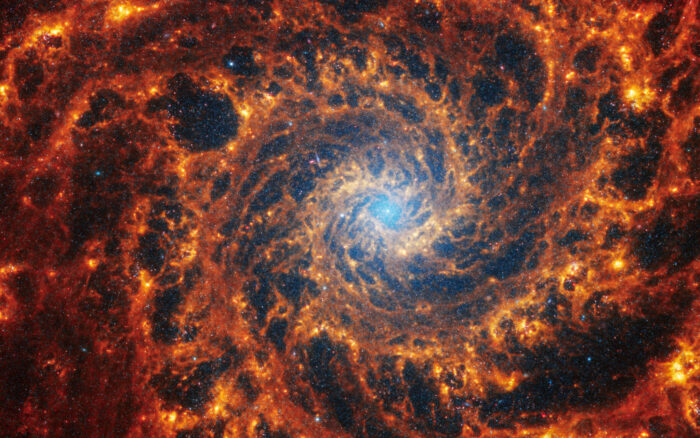
But the James Webb isn't just about making pretty pictures. The telescope's uniquely sensitive equipment is allowing scientists to get closer to finding life on other planets, as this ExplorersWeb story from January explains.
A closer look
The James Webb's biggest "wow" factor is how much more sensitive and clear its telescopic tools are than the Hubble. Take a look at the Webb image below from April, which allowed scientists to get a much closer look at starburst galaxy M82 than previously possible.
The Hubble first observed M82 in 2006, left image. When the James Webb turned its sharp eye at that area, right, scientists gained a much better understanding of the forces at work in the center of the galaxy.
Of particular note are the polycyclic aromatic hydrocarbons, visible as the red filaments in the Webb image. These particles are destroyed at higher temperatures, so when they are visible, they give researchers a window into the complex temperature differentials going on inside M82. It's a lovely image but also a very good example of just how much more fidelity Webb brings to the space imaging game.
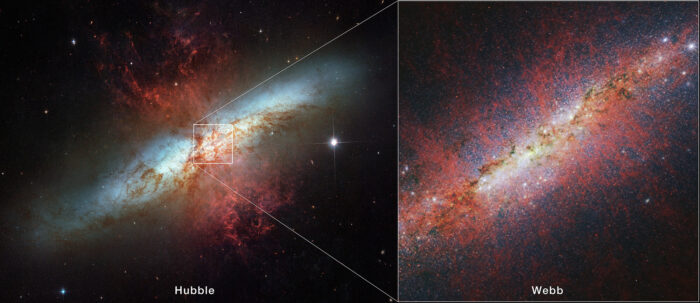
Forecast: unusually high winds
Even a tool as sophisticated as the James Webb can't do it all on its own. For this illuminating image of the Crab Nebula, experts combined X-ray data from the Chandra X-ray Observatory with infrared data from the Webb. Here's the result:
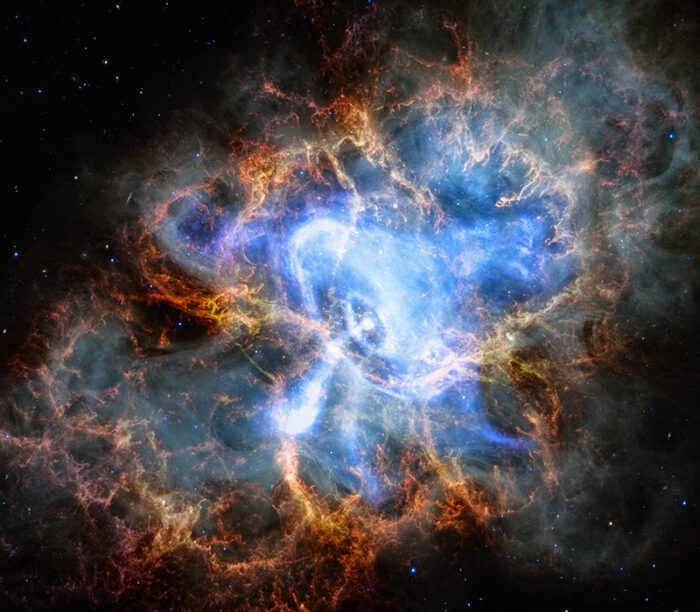
The lovely and turbulent Crab Nebula is the result of a supernova witnessed by Chinese astronomers in 1054 AD. Some 6,500 light-years from Earth, the nebula is anchored by a super-dense neutron star that rotates 30 times per second. The result of all that energy is high-speed winds comprising matter and anti-matter particles that smash into the nebula's gasses, creating the "shock wave" effect visible in the image.
Cradle of stars
Nebulas are uniquely beautiful, but to the scientists who study them, they are about witnessing the birth of stars. This June photo of the Serpens Nebula gave scientists a glimpse at a long-speculated but never-observed phenomenon.
Take a look at those red clumpy smears in the top left corner. See how they are all slanted the same way? The streaks are jets of gas escaping from newborn stars, and they indicate that all those new stars are spinning in the same direction. Scientists have long thought that this is what happened when nearby stars were all born at the same time, but seeing it in action is an exciting first.
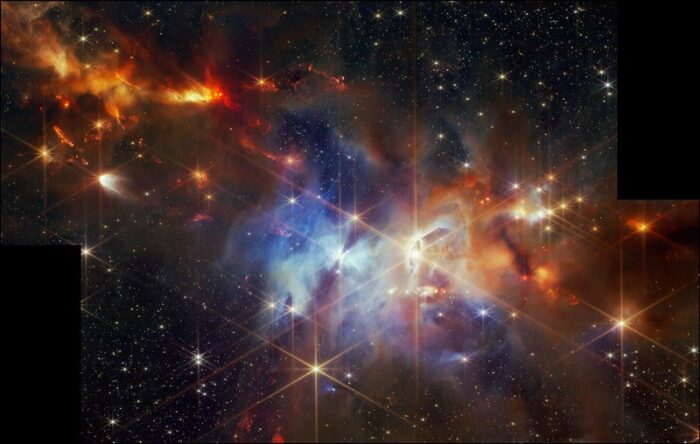
"These aligned, elongated structures are a historical record of the fundamental way that stars are born," Klaus Pontoppidan, principal investigator at the Jet Propulsion Laboratory (JPL), told NASA.
The Pillers of Creation revisited
One of the most famous space images of all time got an update over the summer when the James Webb Telescope and the Chandra X-ray Observatory joined forces once again for a second look at the Pillars of Creation. Hubble first made this iconic shot in 1995, but Webb's contributions bring the clarity to a whole new level.
The Pillars are a region of the Eagle Nebula, a famously beautiful star-forming region 6,500 light-years from Earth. Not much more to say about this one — just sit back and enjoy.
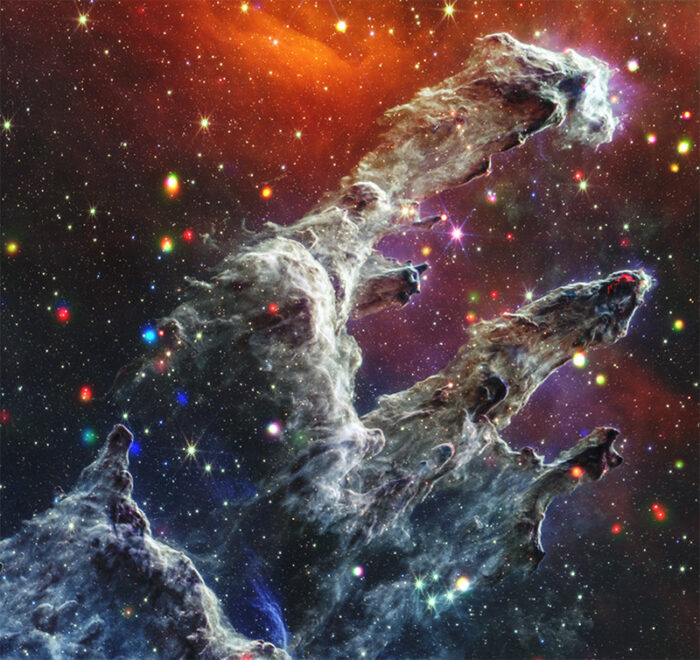
Overlapping galaxies, overlapping telescopes
We saved our favorite for last — an epically wide shot of two galaxies that have been slowly moving past each other for millions upon millions of years. The two galaxies, IC 2163 (small galaxy on the left) and NGC 2207 (larger galaxy on the right), might miss each other. Or they might collide. Scientists aren't sure which. In any case, NASA scientists released this image in October, pointing to the appearance of "spooky eyes" generated by the overlapping galaxies.
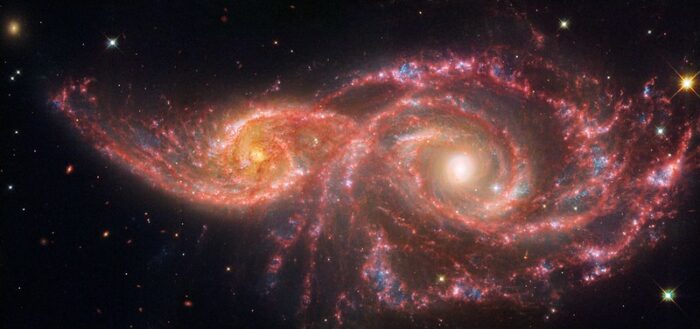
According to NASA, these galaxies are uniquely busy places. They can both generate two dozen Sun-sized stars per Earth year. By contrast, our own Milky Way galaxy only generates two or three in the same time frame.
This image was created by combining data from both Hubble and Webb, which proves that the older telescope still has its place in generating awe-inspiring, scientifically useful imagery.
You can find all of the James Webb Telescope images collected in 2024 on NASA's website.
Turn your attention to the nearby sky: to the 8 planets, 288 moons, and countless smaller rocky objects whose precarious existence began with, depends upon, and may end with the Sun. Last month, we covered the future of life on planet Earth. This month, we'll take a look at what's in store for our little corner of the Milky Way.
Astronomers researching protoplanetary disks around low-mass stars are piecing together an increasingly detailed portrait of how stellar systems like ours formed. Interstellar space is filled with clouds of gas and dust, and one of these clouds eventually collapsed into our solar system. The bulk of the matter formed the Sun. The rest, spread out into a disk as the young Sun rotated, eventually coalesced into the many objects that make up our solar system.
That's old news. In the same way that looking at baby stellar systems tells us where we came from, looking at dying ones tells us where we're going. So here are scientists' best predictions for the future of our solar system.
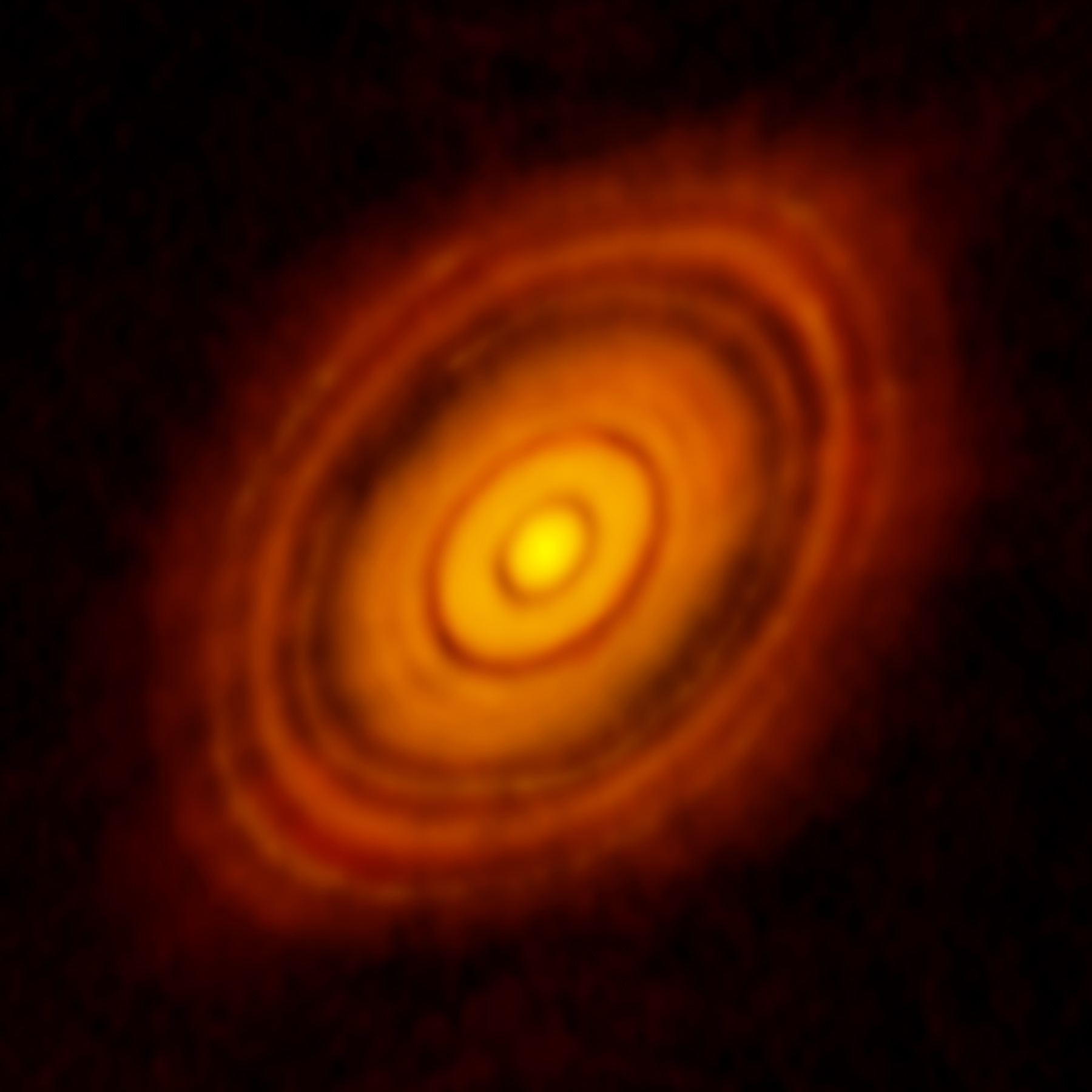
Planum Boreum, Mars, 36,000 years from now
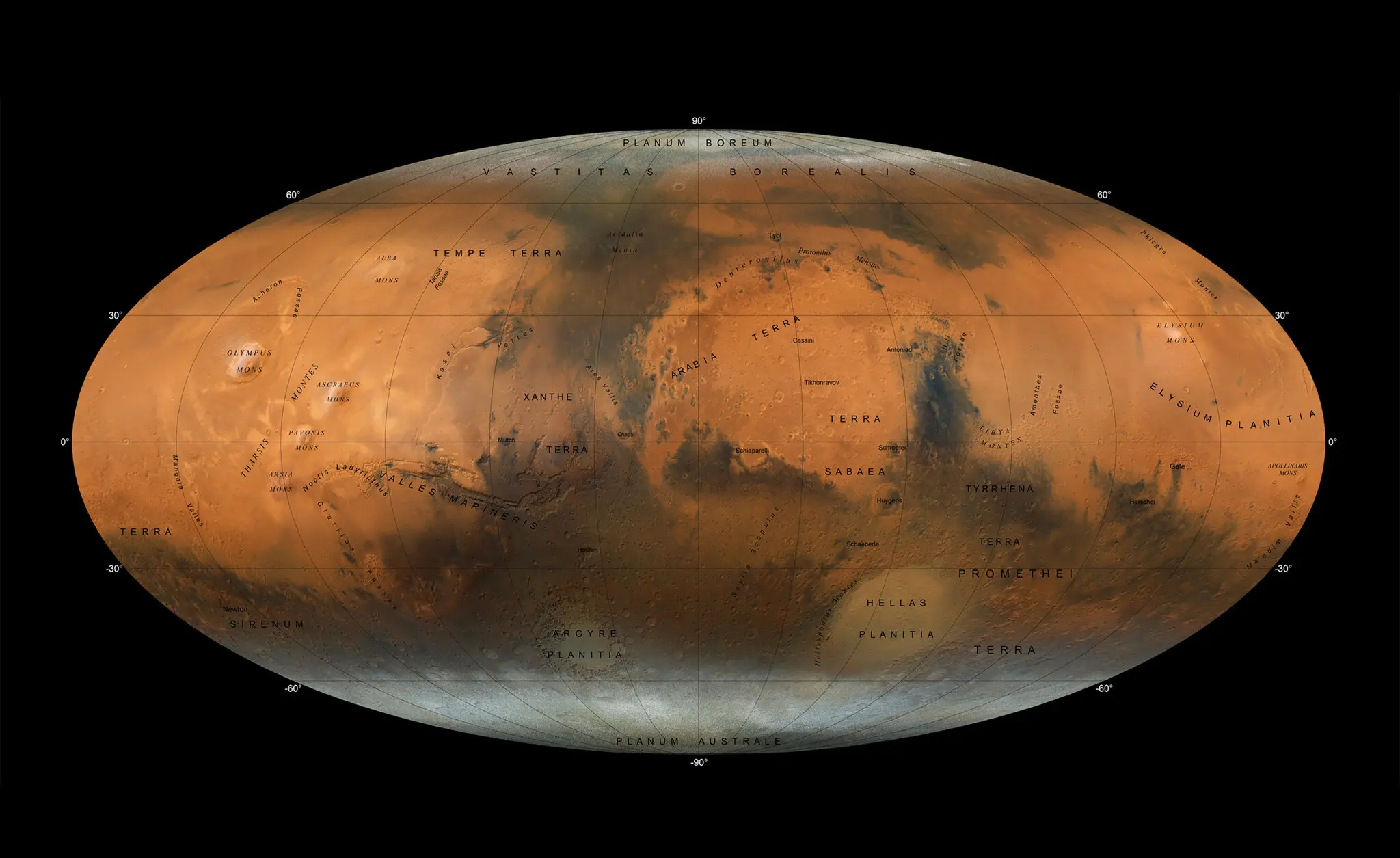
It's 36,000 years in the future, and there's something new in the sky. Human eyes can't quite see it. It twinkles just beyond the boundary of naked-eye vision. But for any hand-held amateur telescopes set up at the Martian north pole, the little red star Ross 248 flickers like an ember.
Or at least it does between breaks in the clouds. In the morning, those clouds are mostly ice crystals, dissolving into a humid mist in the afternoon. For the last 10,000 years, the clouds on Mars have been thicker, and atmospheric humidity has been higher than in the 50,000 years before.
That's because the temperature in Mars' northern polar desert, Planum Boreum, is about 10˚C higher than in the 21st century. Climate change has come for Mars' glaciers; it is not manmade but brought on by the wobble in the axis of Mars' rotation. Planum Boreum gets more sunlight now, and its melting ice caps have supercharged the atmosphere with humidity.
But Ross 248's changing brightness isn't just because of the waves of mist wafting in front of it. The surface of the star itself writhes in storms, and sunspots often dim it. Now, anything in the Solar System has a front-row view of its stellar activity: Ross 248 has supplanted Proxima Centauri as the closest star in the sky. It now sits a mere three light-years away. If any planets orbited Ross 248, and anything on them could communicate, their radio transmissions would receive a response from us in only six years.
However, according to all available evidence, Ross 248 has no planets.
Cresdemona, Uranus orbital system, 1 million years from now
Cresdemona is a new moon. Irregular and patchy, it orbits Uranus at about 50,000km. Most of its surface is water ice, but there's enough mixed-in rock that when its parent moons, Cressida and Desdemona, collided, they didn't shatter but combined into the nascent moonlet Cresdemona, probably no more than tens of kilometers across, encircled by shards of ice.
Meanwhile, another one of Uranus's 28 moons, Juliet, carbon-rich and petite, tries in vain to escape the new moonlet. Soon, the two moons' paths will cross, slamming heavy carbonaceous rocks into the icy surface of Cresdemona.
The resulting moon, Cressida-Desdemona-Juliet, will hurtle off into the future.
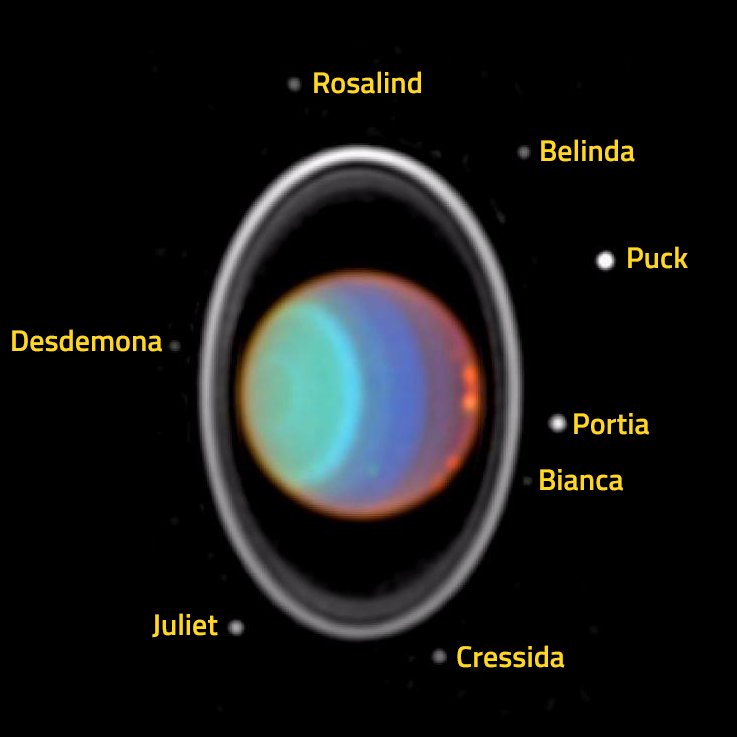
Neptune, 3.6 billion years from now
Over on Neptune, the moon Triton has strayed into more dangerous territory than just the path of its siblings. Its orbit has decayed past the planet's Roche limit. Beyond this point, Neptune's gravity is so immense and Triton sufficiently large that the difference in gravitational force on the near and far parts of the moon literally tears it apart.
The tidal forces ripping into Triton also heat it, and its icy surface sends out trails of steam that demarcate its descent toward the ocean world below. Then there's the core. Neptune wrenches chunks of rock off the surface of Triton piece by piece and flings them into orbit, where they eventually coalesce into a ring.
A few of them careen down toward Neptune. They pass through the strongest winds in the solar system, buffeted along at 2,000kph. When they finally make it through Neptune's atmosphere, it's possible they hit molten oceans of water and methane, kept liquid by the unimaginable pressure above. If so, the remnants of Triton sink without a trace.

Atacama Desert, the Earth, 5 billion years from now
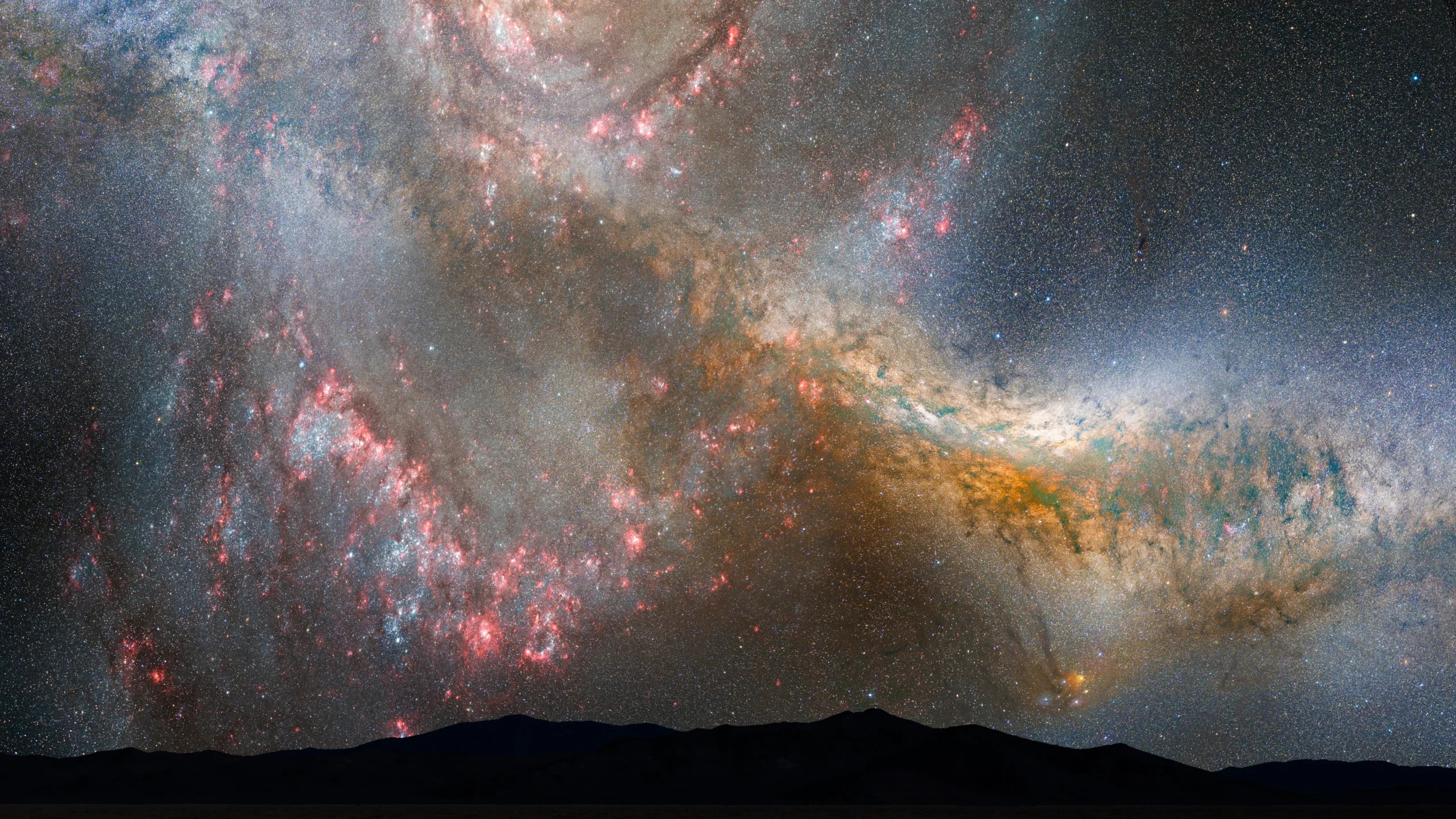
The Milky Way is no more. The Andromeda galaxy has collided with the Milky Way. Where familiar stars once stood, alien worlds now throng.
Over the last billion years, the force of the colliding galaxies condensed interstellar gas and dust at breakneck speed. New stars formed, lighting up the sky with red flecks like burning coal. Now, 5 billion years after the 21st century, young stars are still visible in some parts of the sky. For the most part, however, a monotonous smog stretches across the horizon.
Smog, perhaps, implies gas. That's not the case for Milkomeda. What looks like a fine morning mist is actually made up of an uncountable number of stars, so far-reaching and dense that only a rare few individuals poke out of the crowd. The space in between has very little gas and dust left. All of it was used to form the last generation of stars.
For anything living in our Solar System, the sky is no longer a place of infinite galaxies just like us. We cannot see anything past the dense gauze of our own galaxy's stars.
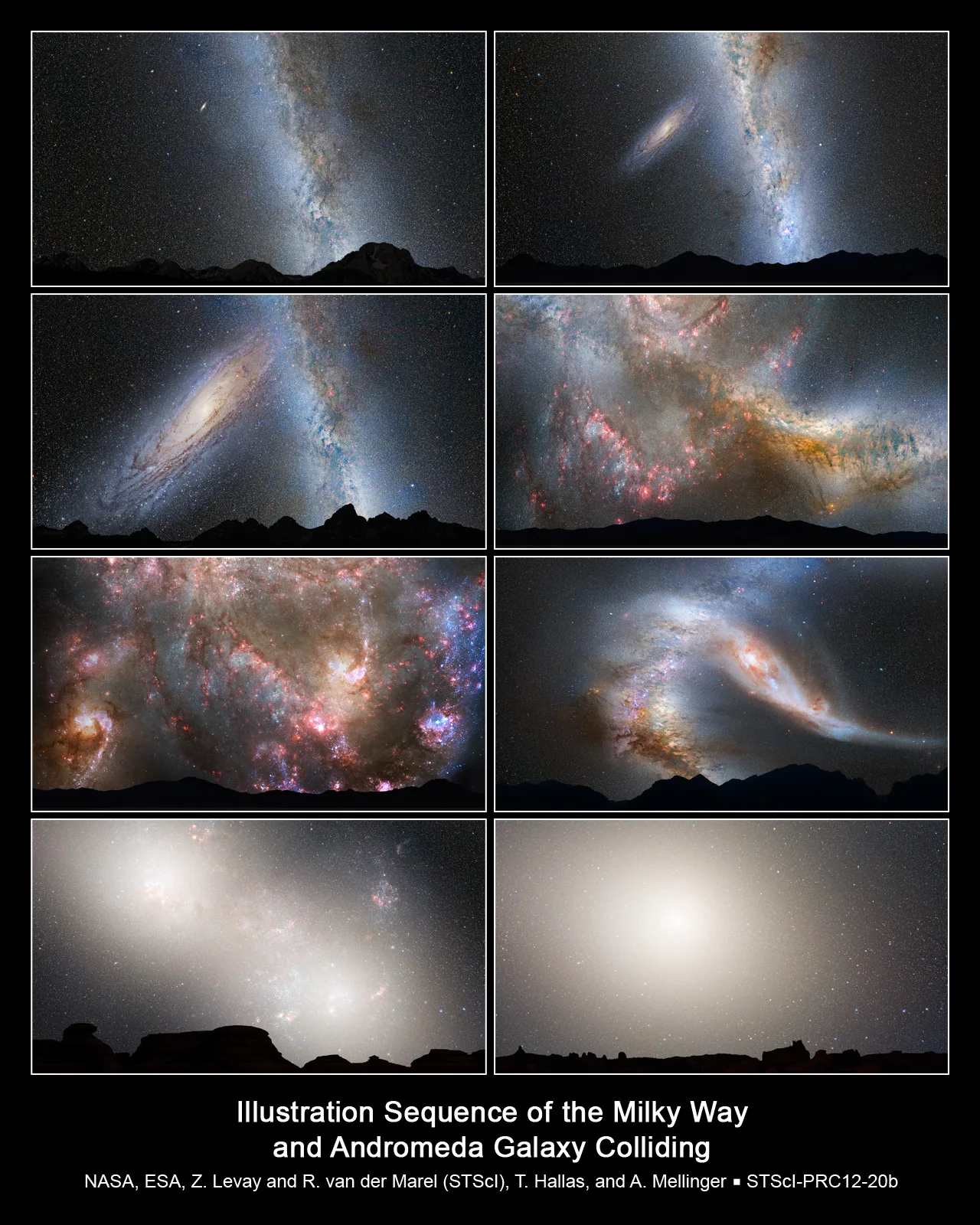
Somewhere in the nearby galaxy, 5.4 billion years from now
An unremarkable little star has just become remarkable. For billions of years, Sol has burned steadily, visible with the naked human eye up to 56 light-years away. It was faint and yellow. Now, practically overnight in astronomical terms, it has lit up like a strobe. It glows about 100-1,000 times brighter than before and has a deep red color.
That's because the Sun has finally left the Main Sequence, that part of a star's lifetime where its structure is supported by fusing hydrogen into helium deep within its core. Now it's run out of hydrogen. With nothing to push back against gravity, its core begins to collapse.
Suddenly, two new sources of energy become accessible. Within the core, helium reserves wait to be fused into carbon and oxygen. Outside the core, there's still plenty of hydrogen.
Neither energy source used to be accessible for burning. Before, the Sun's gravity was only strong enough to fuse hydrogen in the very core. As soon as it reached the burning point of hydrogen, it stopped collapsing. It didn't reach temperatures high enough to burn either helium in the core or hydrogen in the outer layers.
Now, as the core collapses on itself, it keeps collapsing until temperatures rocket high enough to burn helium. They also reach a shell of hydrogen in the outer layers of the star. Buoyed by this new source of energy much closer to the surface, the Sun expands. Its luminosity rockets up, and suddenly it's visible to the naked eye within 500 light-years.

Titan, 7 billion years from now
One billion years ago, the Sun's dramatic increase in brightness raised temperatures on the surface of Mars to those of the 21st century Earth. Constantly buffeted by high-velocity winds from the dying Sun, it's unlikely Mars could have retained any liquid water on its surface. Still, if any life did crawl from its ancient river valleys, it's now long gone. The rapidly expanding Sun is scorching the inner planets, disrupting their orbits. Soon, it will engulf them.
But in the outer reaches of the solar system, on Saturn's moon Titan, conditions are ripe for a few determined cells to spring into existence. Not to be confused with Neptune's moon Triton, Titan has long been a candidate for extraterrestrial life. In the 21st century, Titan's surface teemed with lakes and rivers of liquid methane. Instead of rock beneath, though, the crust was made of thick ice. Beneath that ice cover lurked sub-surface water oceans.
Now the expanding Sun has melted Titan's ice, drenching its surface with oceans of water and ammonia. The astronomers who first predicted this called it a "primordial gazpacho" -- choppy, slower-moving than the volatile chemistry of the early Earth, but still with the potential for forming life.
Any life that forms has a few hundred million years before Titan, too, is burned to a crisp.

Pluto, 8 billion years from now
Pluto, barren and distant, orbits a kaleidoscopic nest of gas. The inner planets that once sat comfortably within the Sun's habitable zone are gone, burned up as the Sun expanded to 256 times its original radius. Then the Sun, too, disappeared.
It's still there, nearly unrecognizable. At the center of the expanding ring of gas ejected from its outer layers sits a little star called a white dwarf. The only thing holding it up against gravity is the pressure of electrons being forced too close together. Imagine trying to condense an entire elephant into the size of a matchbox, and you have an idea of how dense matter has to be before electron degeneracy pressure kicks in.
In this case, most of the mass of the Sun now occupies an object about the size of the dead Earth. The rest, jettisoned into space, forms a ring-like structure called a planetary nebula.
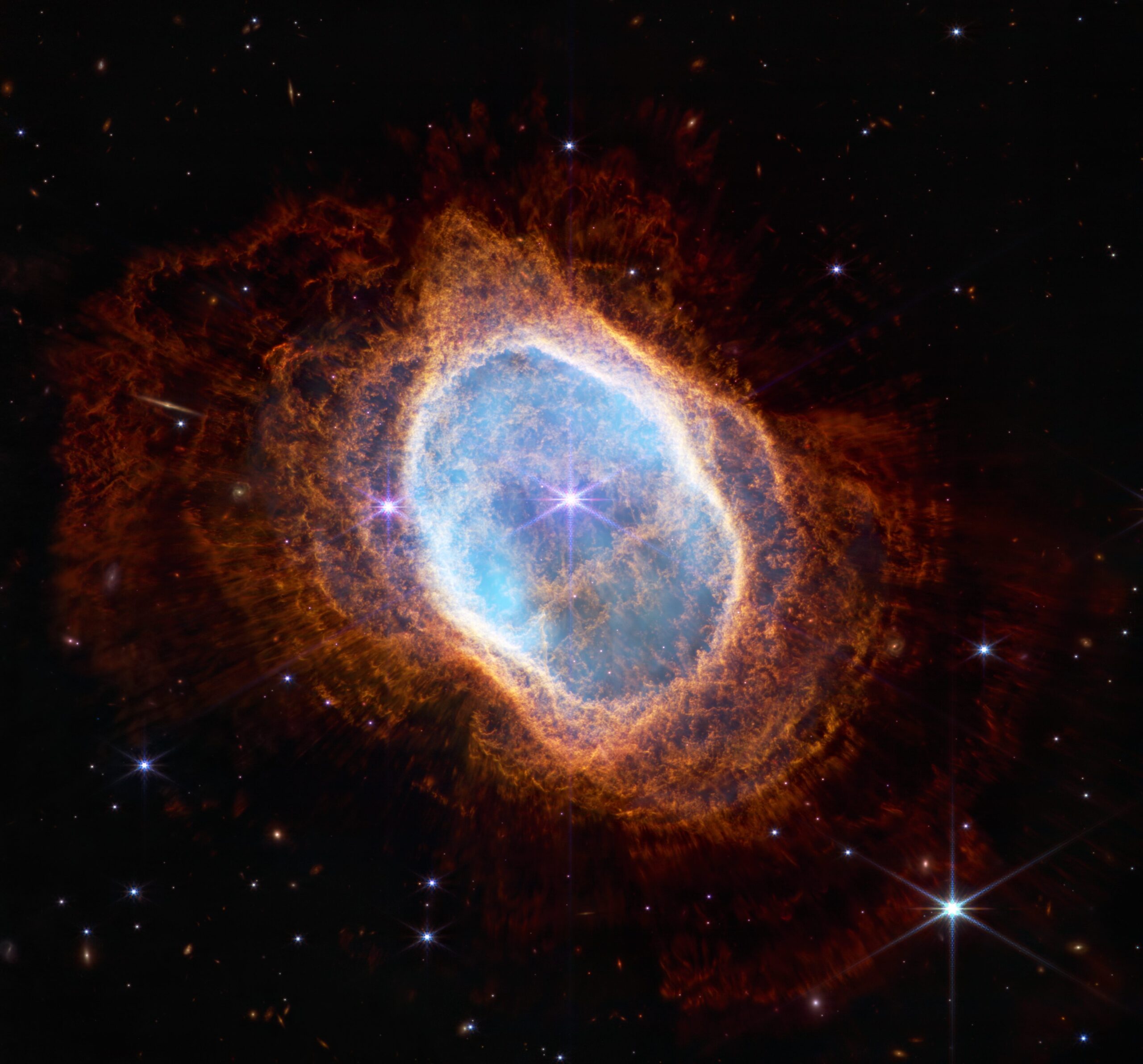
Out at the edges of this structure sits Pluto. It's a far cry from the ice-coated dwarf planet it used to be. The Sun stopped short of evaporating it entirely, but all the water and ammonia ice on its surface boiled away. All that's left is a rocky core, more like Mercury than an ice world.
Pluto drifts on, orbiting a dead star. It isn't going anywhere.
With one astronaut hospitalized after a delayed return and another's weight loss the subject of tabloid speculation, it's been a busy month for NASA public relations. In June, a series of issues with Boeing's Starliner rocket stranded two astronauts on the International Space Station until February of 2025 at the earliest. Likewise, a four-person crew intended to return to Earth in August only made it back in late October.
Upon returning, one of the four was hospitalized overnight. Many articles over the last few weeks have suggested that NASA is hiding debilitating health issues in its astronauts. Medical privacy protocols keep their health secret, fueling these rumors.
Which of the four returned astronauts was hospitalized? What for? And has Suni Williams, one of the two astronauts stuck on the ISS until February, lost a concerning amount of weight?
Although neither Williams nor the hospitalized astronaut has caught a mysterious alien disease, there's a dash of reality in every conspiracy. Being in space changes your body -- often drastically. So let's take a look at the very real medical effects of life in the void.
Welcome to zero gravity
Humans evolved in a ridiculously specific niche. We need temperatures between about -30 to +50 °C, oxygen levels between 15% and 20%, and protection from all radiation more energetic than the near-UV. In the grand scheme of the universe, we're spoiled rotten.
And for as long as humans have been humans, we've been putting ourselves in environments we didn't evolve to survive. Space wastes no time in letting us know we don't belong. As soon as astronauts leave Earth, they lose the gravitational tug on their inner ear that tells their brain how to balance.
The effect is like motion sickness, when the body starts moving in ways the mind doesn't anticipate. That's why carsickness tends to be worse in the back seat, where the headrest in front appears stationary. The contrast is even more drastic on the ISS. The eyes tell the brain it's standing still, while the inner ear insists it's in free fall.
"Space sickness" isn't a new problem. In fact, Gherman Titov, the second man ever in space, threw up inside his shuttle.

Puffy faces and lazy hearts
Right as a new astronaut adjusts to the sensation of falling, the face begins to swell. Human circulatory systems are designed to constantly fight gravity. On the surface of the Earth, the heart fights hard just to keep blood flowing, and even then, blood naturally congregates in the lower extremities.
When gravity vanishes, blood distributes evenly throughout the body. The face swells. Unlike space sickness, which tends to abate after a few days, astronauts' faces stay swollen throughout the mission.
But there are deeper effects than just cosmetic. The heart deteriorates rapidly in zero gravity. All of a sudden, the force it spends its existence opposing disappears. It gets lazy. In space, the blood practically pumps itself.
Heartbeats become irregular. When the heart does beat, it contracts with less strength. And at the cellular level, mitochondria swell and break up while proteins fragment. Genes related to heart disease start to activate.
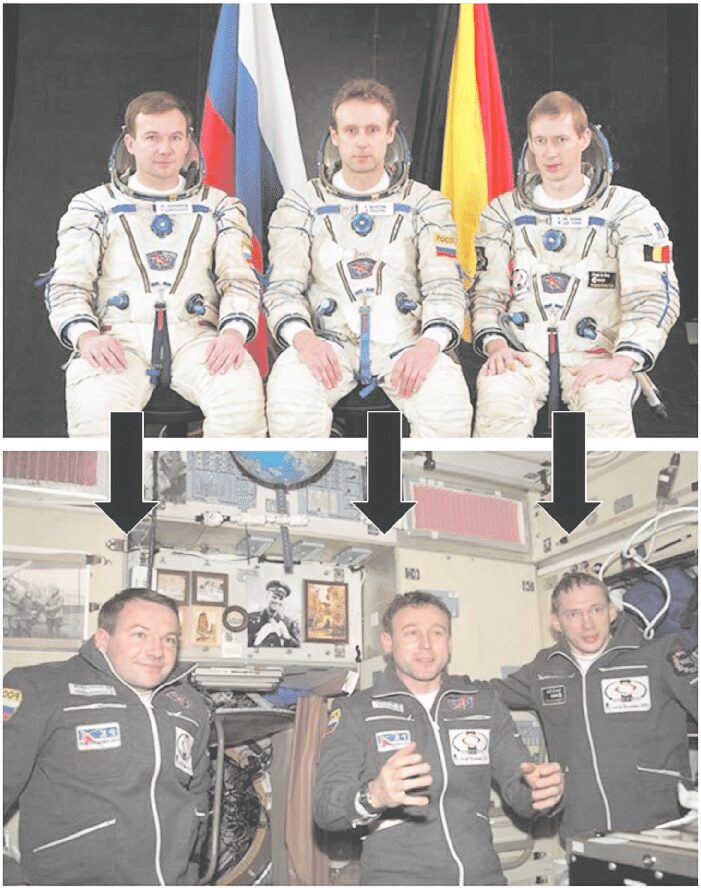
Chicken legs
Down at the other end of the body, the legs are in limbo. Less oxygenated as blood strays up to the face, they are also freed from having to support the body. That's why astronauts work out for two hours a day, trying to keep the legs and lower back active enough to prevent injury upon returning to Earth.
Even with the exercise, astronauts face nearly a three times higher chance of a herniated disk after their stay in space. That's when the cartilage inside the spinal column squeezes out between vertebrae, often pinching nerves.
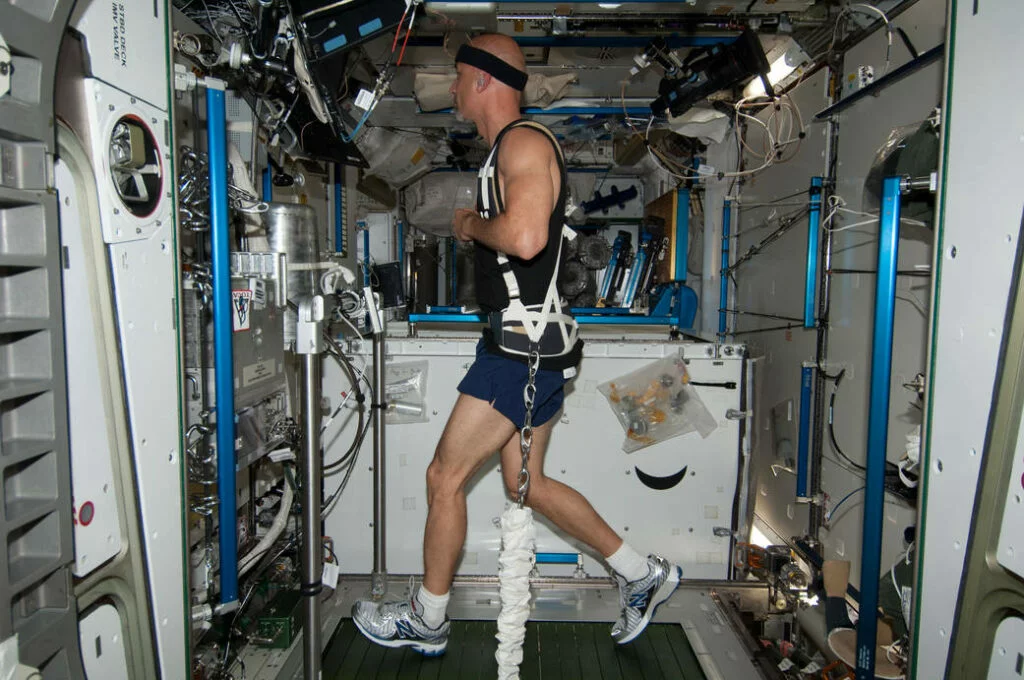
Cosmic radiation spells cellular trouble
The atmosphere on Earth does more than set the climate and provide breathable air. It also shields us from the majority of high-energy radiation that can ionize our cells, leaving us vulnerable to genetic glitches like cancer.
In space, there's no such protection. Even in the thin upper layers of the atmosphere, airplane flight crews suffer 24% higher rates of cancer than the general public. Although scientists haven't quite whittled down all the possible factors that could contribute to this, the dominant theory is cosmic radiation. (Frequent flyers, fear not -- you have to fly daily for this statistic to apply.)
If tracing the effects of energetic photons on flight crews is hard, it's even harder on astronauts, a population numbering not even 700. That's nowhere near enough for a statistically sound health study. But some odd patterns are starting to emerge at the genetic level.
Researchers found that even after a nine-minute stay in space, the DNA called telomeres, which protect the ends of chromosomes, had stretched on all members of the SpaceX civilian mission Inspiration4. Likewise, a study comparing astronaut Scott Kelly to his identical twin and fellow astronaut Mark Kelly (now a senator of Arizona) found his telomeres stretched in space and snapped back to normal on the ground, slightly shorter. Since telomeres generally shorten with age, it's not clear what effect this stretching and reversal has on long-term health.
What's driving this strange chromosome behavior? It could be microgravity, but the authors of the study on the Kelly twins suspect that radiation damage is at play.
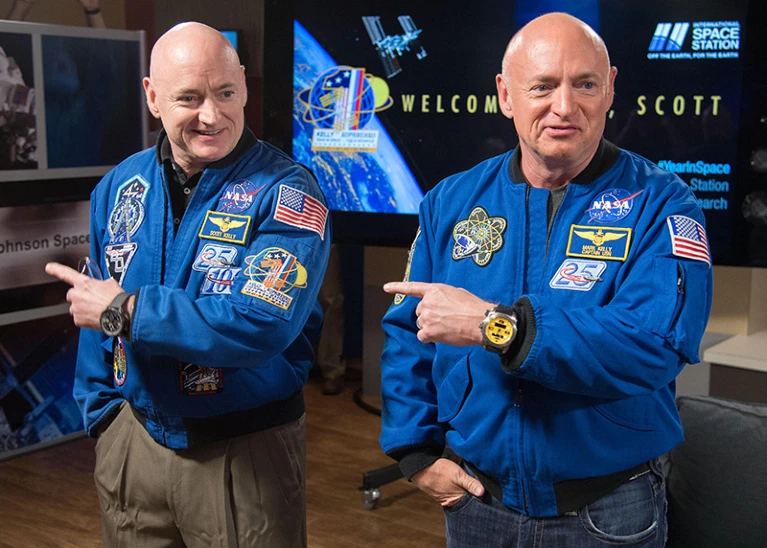
We don't know what we don't know
As of right now, limited datasets and confounding factors paint a muddy picture of the long-term impacts of space travel. Even when space agencies gather information for the protection of astronauts, they often have to keep it secret to comply with medical privacy laws. The study of the Kelly twins, for instance, may never have its full results released while the subjects are alive.
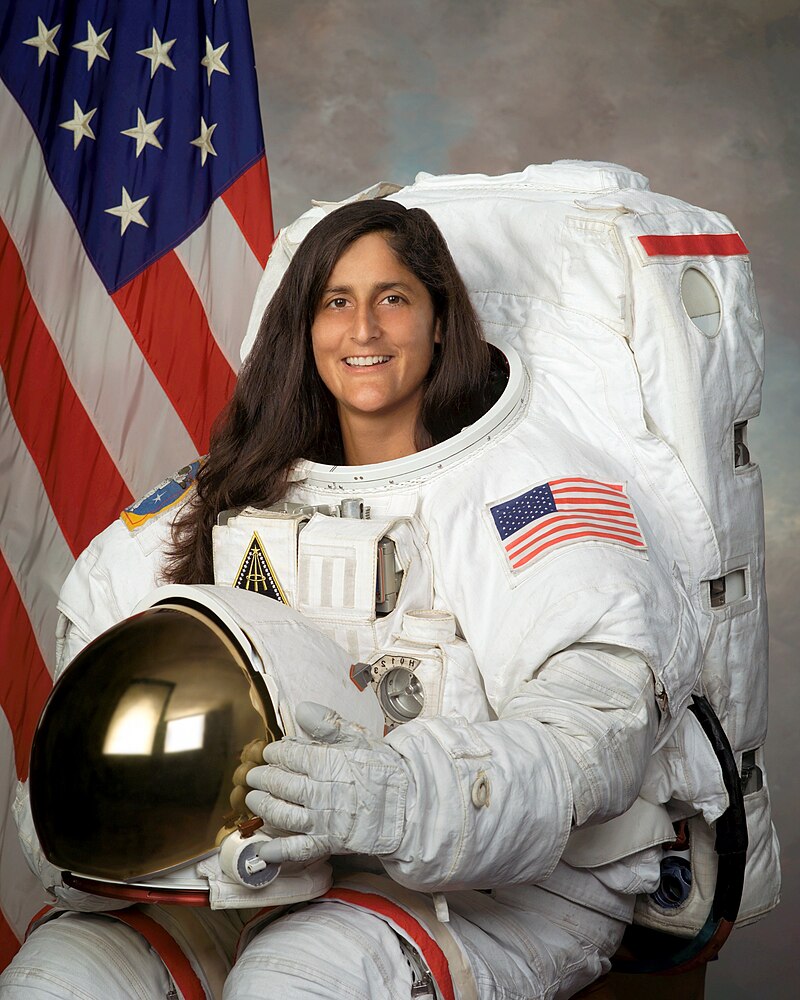
Medical privacy
As for Suni Williams and the mysteriously hospitalized astronaut, NASA is clear on the matter. The secrecy is due to medical privacy, and everyone is fine. The four crew members who returned in October are fine, Suni Williams is fine, and everyone else on the ISS is fine.
Given that the hospitalized astronaut was discharged after only one night, there's no reason to suspect deception beyond the requirements of medical practice. One of the returned astronauts, Michael Barratt, promised the public will know what happened one day.
“In the fullness of time, we will allow this to come out and document it,” he told The New York Times. “For now, medical privacy is very important to us.”
The internet obsesses over an astronaut's weight
Meanwhile, Suni Williams has spent the last few days reassuring people that she's healthy. After NASA released a series of photos including her, online commenters and tabloids fixated on her looks. Multiple pieces quoted unverified sources, purporting to be from within NASA, who claimed she had lost a concerning amount of weight.
The woman herself, however, states that her weight is the same, although her body has changed in outer space. Her workout regime on the ISS, she says, has made her butt bigger.
Suni Williams is 59 years old -- 17 years older than the average for female astronauts. Between societal prejudices against older women, odd angles in photographs (see the pizza-making photo below, where the camera distorts the proportions of both people in frame), the propensity of the press to obsess over women's bodies, and the simple fact that peoples' appearances often change considerably since Wikipedia photos taken 20 years before, there are a lot of mundane reasons why the buzz around Williams is based in nothing.

It's easy to imagine the sort of things that might have sent an astronaut to the hospital after landing. Tachycardia or severe dizziness could both ensue from a weakened heart. Legs could tremble after so many months in space. Or perhaps nausea sets in as the world doesn't move like the mind expects it to. For the first time in a long while, the inexorable force of gravity drags the inner ear back down to Earth.
Major elections take place on Tuesday here in the U.S., and the Presidential race, in particular, will be decided by razor-thin margins in a handful of battleground states. So, in a democratic country where every vote counts, how do people without their feet on Terra Firma make their voices heard?
NASA astronauts aboard the International Space Station (ISS) face this issue every time a general election rolls around. Luckily, it's not as thorny a problem as you'd think. It all comes down to the same technology that makes communication with space-bound astronauts possible in the first place.
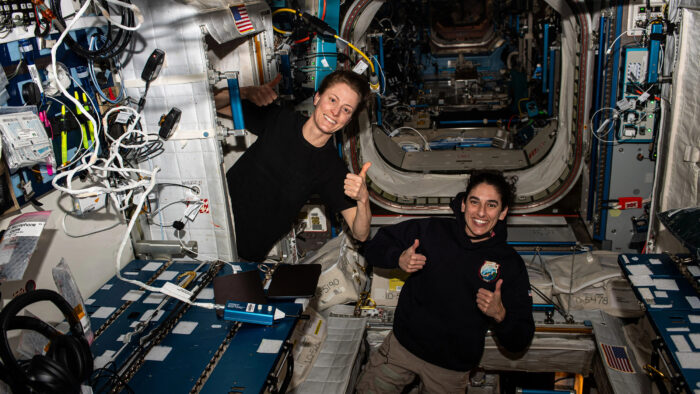
According to NASA, the process starts at home. Just like any other American voter wanting to cast an absentee ballot, astronauts fill out a Federal Post Card Application. With absentee voter status approved, the astronauts download an electronic ballot while floating in zero-G.
Encrypted process
Then NASA's Space Communication and Navigation (SCaN) system sends the information through data relay satellites to a ground antenna in Las Cruces, New Mexico. From there, the vote is transmitted to the county clerk in the astronaut's home state. The entire process is encrypted from end to end. Only the astronaut and the clerk know how the vote was cast.
That may sound like a complex chain of events, but thanks to the physics of space travel, it's considerably faster, cheaper, and less complex than shipping paper ballots on an 800km trip to the ISS and back.
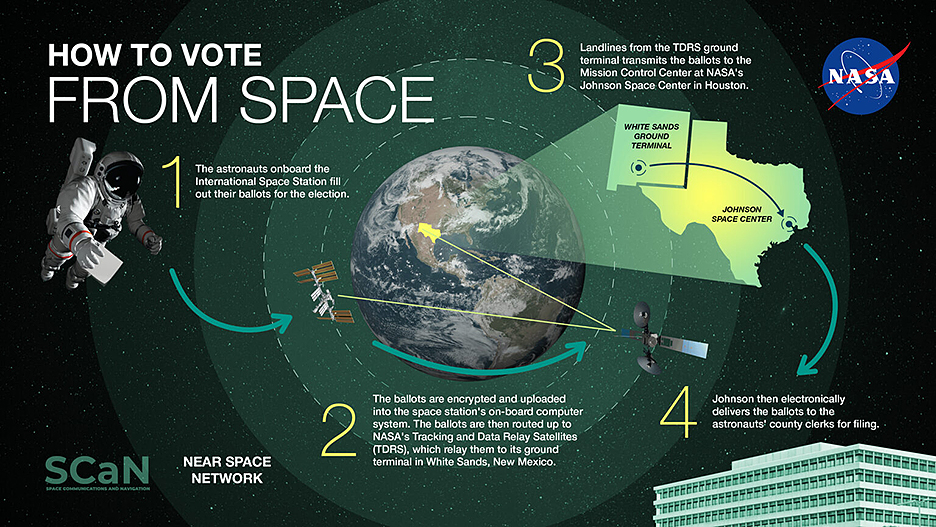
The system has been in place since 1997 when Texas (a state many astronauts call home, thanks to NASA's heavy presence there) passed legislation allowing for electronic voting. The bill was largely the result of astronaut John Blaha's desire to vote in the 1996 general election from the Russian Mir Space Station. He didn't get his wish in time, but after the legislation passed, astronaut David Wolf was able to vote in Houston, Texas' 1997 local elections.
Two-time space voter
Kate Rubins is the only astronaut to vote from space twice, in the 2016 and 2020 general elections. Hopefully, given NASA's increased commitment to human space travel, she won't be the last.
As for American citizens wanting to vote from far-flung places like Antarctica? Surprisingly, it's back to good old-fashioned paper ballots in most cases. Just like with astronauts, if you're going to be on an Antarctic base during voting season, you need to think ahead and request a vote-by-mail ballot. Once that's done, the process is simple and reliable. As this blogger points out, flat mail is reasonably consistent in Antarctica. He even received election fliers from various campaigns!
About 41,000 years ago, the Earth's magnetic field suddenly flipped. Positive became negative, and negative became positive. Using data from the European Space Agency, geoscientists have now created a soundscape of the cataclysmic event. The eerie, alien-like track resembles creaking wood and falling rocks in an echo chamber.
The Earth's core generates the magnetic field around our planet, forming a protective cocoon around us. It allows life to thrive on Earth in a way that is not possible on neighboring planets.
During what was called the Laschamp event, this magnetic shield weakened to just five percent of its current strength. As a result, ionizing radiation from the sun bombarded the Earth, and planetary chaos ensued. It triggered mass extinctions, electrical storms, solar winds, climate change, and even changes in ancient human behavior.
Geological evidence of the event first turned up in the French Massif Central, leaving signatures in the Laschamp lava flows. Elsewhere, levels of the beryllium-10 isotope skyrocketed. Preserved kauri trees in New Zealand show spikes of atmospheric radiocarbon.
Researchers believe that it took 250 years for the magnetic field to flip. It stayed that way for 400 years before reverting back to its current position. Four centuries seems long to us, but “in terms of geological time, that is very fast,” explained Norbert Nowaczyk of the German Research Center for Geosciences.
The Earth's magnetic field has flipped several times over the millennia. Researchers are not sure why it happens. There seems to be no pattern to how often this occurs.
The magnetic field itself is in near-constant motion. Since it was first precisely located by polar explorer Sir James Clark Ross in 1831, the Magnetic North Pole’s position has gradually drifted north-northwest by more than 1,000km, and its forward speed has increased from about 16km per year to about 55km per year, says NASA.
Projects such as the European Space Agency's Swarm mission use satellites to measure magnetic signals around the Earth. This would warn us of any imminent magnetic field flip. Researchers do not think this will happen again for thousands of years. Still, they are keeping an eye on an area known as the "South Atlantic Anomaly," a region where the magnetic field is weaker than anywhere else on Earth.
For decades, the disappearance of dinosaurs has been tied to the Chicxulub asteroid, whose crater lies partly beneath Mexico'x Yucatan Peninsula. But new research has revealed that there were at least two dinosaur-killing asteroids. The impact crater of the second one lies unseen, 300m under the floor of the Atlantic Ocean.

Discovered in 2022, the Nadir crater lies off the coast of Guinea, West Africa. The 400m-wide asteroid created a crater 8.5km in diameter. The exact timing of the impact is unknown, although it struck at the end of the Cretaceous period, around the same time as the asteroid that created the 200km-wide Chicxulub crater. Though the Nadir crater is much smaller, the space rock that made it still slammed into the Earth at 72,000kph.
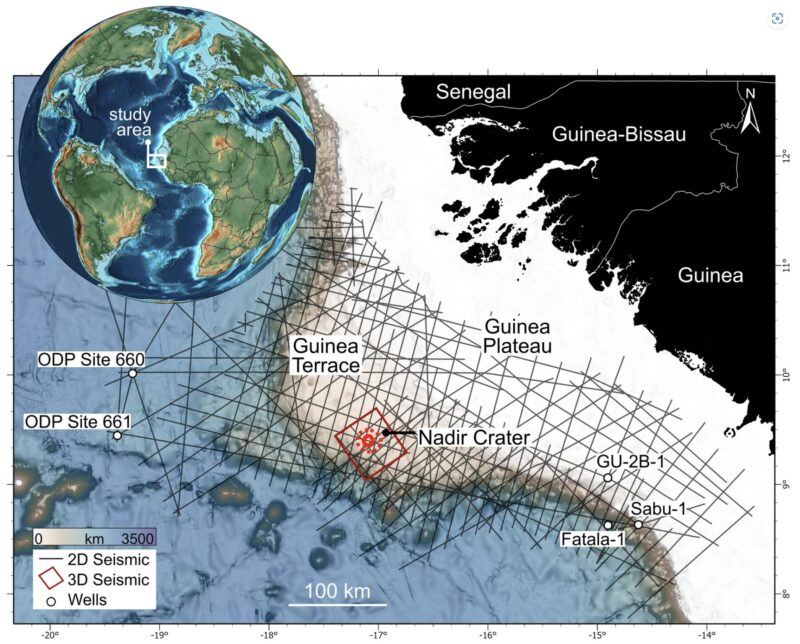
From new images of the crater, researchers have been able to piece together what happened in the minutes after impact. The asteroid hit with such force that it triggered a series of events that likely added to the dinosaur's mass extinction event. The initial impact liquified underwater sediments, causing faults in the seabed, landslides that extended far beyond the edge of the crater, and a huge 800m-high tsunami to tear across the Atlantic Ocean.
Uisden Nicholson discovered the Nadir crater in 2022. He was studying seismic data from the Atlantic Ocean off West Africa when he stumbled across it. He always thought an asteroid had created the crater, but now he had seismic data to prove it.
“There are around 20 confirmed marine craters worldwide, and none of them has been captured in anything close to this level of detail," Nicholson commented. "It’s exquisite.”

Like an ultrasound
He compared the new and improved imaging to that of a pregnancy ultrasound:
A few generations ago, the ultrasound showed a grainy blob. Now you can see the baby’s features in 3D, in incredible detail, including all the internal organs. We’ve gone from 2D, fuzzy imaging to amazing high-resolution imaging of the Nadir Crater. The new images paint a picture of the catastrophic event.
The advanced imaging also lets us examine other impact events in more detail and consider how they might have affected Earth's evolution.
"Most craters on the surface of the Earth have eroded over time, but we can use seismic data and drill cores to look at what is going on underneath them," said co-author Veronica Bray. "Some craters on other planets are in almost pristine condition but we can only see the surface layer. This new seismic imaging allows researchers to look at the surface and everything underneath it. It’s a startlingly good look at an impact crater.”
Two Russian cosmonauts have returned to Earth after spending a record-breaking 374 days on the International Space Station. Even more impressively, one of them -- 60-year-old Oleg Kononenko -- is now the person with the most-ever time in space.
Kononenko has spent a staggering 1,111 days in orbit over five missions, beginning in 2008. Gennady Padalka set the previous record in 2015 with 878 days over five missions.
During his more than three years in space, Kononenko orbited the Earth 17,800 times and completed seven spacewalks. He is responsible for 1.5% of the time spent in space by all astronauts since the first human space flight in 1961.
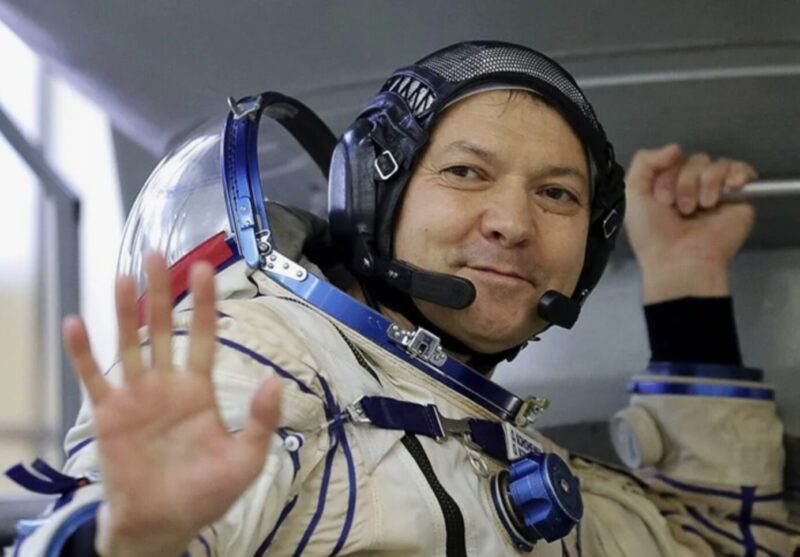
Second home
Kononenko and Russian partner Nikolai Chub left the ISS and landed in Kazakhstan after 3.5 hours aboard the Soyuz MS-25 capsule in the company of NASA astronaut Tracey Caldwell Dyson. Commented Kononenko, "Thanks to all my crewmates for your friendship...Right now, I am leaving my second home."
“Oleg, we'll miss your hundreds of stories around the dinner table," said NASA's Sunita Williams, who took over command of the ISS from Kononenko.
Achieving the most time in space was never Kononenko's goal. When he first set the new record for non-cumulative days in February, he insisted, “I fly into space to do my favorite thing, not to set records. I’ve...aspired to become a cosmonaut since I was a child.”
It is unknown whether he will ever set foot in space again. He has not commented on retiring but previously said that with each trip, the preparations get harder and that taking part in the missions becomes ever more complicated.
It is unlikely that anyone will break his record in the near future. NASA tends to run shorter missions than Roscomos, so it's harder for American astronauts to rack up that long in space. There is also now limited time available on the ISS before it is deorbited in 2030.
Russia's Sergey Prokopyev has the next most time in space -- 567 total days. To break Kononenko's record, he will have to do so on both the ISS and China’s Tiangong Space Station. Russia will withdraw from the ISS in 2025.
On Sept. 29, the Earth will temporarily get a second moon. A small asteroid will be pulled into orbit before being released from our planet's gravitational pull.
NASA’s Asteroid Terrestrial-Impact Last Alert System (ATLAS) spotted the little asteroid on Aug. 7. At just 10m wide, the asteroid pales in compared to our moon, which is 3,474km in diameter. Because of its tiny size, we cannot see it with the naked eye or a regular telescope.
A visitor from the Arjuna belt
Christened 2024 PT5, the space rock comes from the Arjuna asteroid belt. From its trajectory, astronomers figured out when it would enter and leave our gravitational field.
"The object that is going to pay us a visit belongs to the Arjuna asteroid belt, a secondary asteroid belt made of space rocks that follow orbits very similar to that of Earth at an average distance to the sun of about 150 million kilometers," Carlos de la Funta, lead author of the new study said.
The asteroid's trajectory is bringing it close to Earth, within 4.5 million kilometers. For an asteroid, it is moving pretty slowly, at 3,450kmph. This slow speed means Earth’s gravitational field will pull it temporarily into orbit.
"Under these conditions, the geocentric energy of the object may grow negative, and the object may become a temporary moon of Earth...starting next week and for about two months," Funta explained.
A brief visit
The asteroid is "not going to complete a full revolution of our planet, it's just going to have its orbit altered, just twisted slightly by our planet, and then it'll continue on its merry way," astronomer Jennifer Millard, who was not involved in the new study, told the BBC. Then, gravitational disturbances from the sun will trigger the asteroid to catapult from its journey around Earth, flinging it back into the Arjuna asteroid belt.
This is not the first time we have had a mini-moon circling Earth. Astronomers have spotted a few, and researchers believe that many others have gone unnoticed.
Astronomers have spotted two giant plasma jets streaming from a supermassive black hole in a distant galaxy. At a mind-bending 23 million light-years long, they are the longest plasma jets on record.
140 galaxies long
The statistics are hard to fathom. The jets are blasting out of a black hole that sits 7.4 billion light years away. Each jet covers a distance equivalent to 140 Milky Way galaxies, and they are forcing researchers to rethink what they know about black holes.
Each light year is the equivalent of 5.8 trillion years, meaning these jets are far older than scientists expected. Researchers have named the jets Porphyrion after a giant in Greek mythology. They date to when the universe was 6.3 billion years old, less than half its current age.
Porphyrion's jets are huge streams of charged ions and particles with a power that is equivalent to trillions of suns. The magnetic fields around the black holes are responsible for their incredible speed. Porphyrion is so large and old that astronomers think it, and other jets like it, likely played a role in the formation of the universe.
"Astronomers believe that galaxies and their central black holes co-evolve, and one key aspect of this is that jets can spread huge amounts of energy that affect the growth of their host galaxies and other galaxies near them. This discovery shows that their effects can extend much farther than we thought,” study co-author George Djorgovski commented.
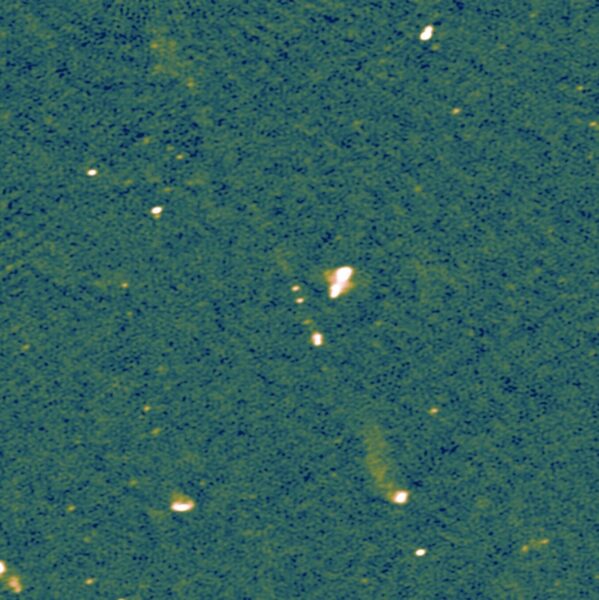
One of 10,000 jet systems discovered
Researchers discovered the jet system during a survey using Europe’s Low Frequency Array Radio Telescope (LOFAR). They were amazed to find that it uncovered over 10,000 jet systems. Porphyrion was the largest in the group. Researchers knew that such giant structures existed, but never in this quantity.
"Usually when we get a new observational capability, such as LOFAR's combination of wide field of view and very high sensitivity to extended structures, we find something new. But it was still very exciting to see so many of these objects emerging,” says co-author Martin Hardcastle.
Originally, the team was not looking for black hole jets. They were using LOFAR to look at the wispy filaments that crisscross the huge expanses between galaxies. Whilst analyzing the images, Aivin Gast noticed the first pair of jets.
It was quite the catch, Gast wasn’t even studying astronomy at the time. His degree was in archaeology and ancient history. He had offered to help friends look through the radio images. It was Gast who suggested the ancient Greek-inspired name.
Once the team saw a few of the jets, they began to actively look for them. They eventually found thousands.
Supermassive black holes sit in the middle of large galaxies. When the black holes are active, their gravitational force heats the surrounding area. The released energy takes the form of jets.
“We are learning that giant jets might be an age-old phenomenon. We now know they have existed for most of the universe’s life. Our LOFAR survey only covered 15% of the sky. Most of these giant jets are likely difficult to spot, so we believe there are many more of these behemoths out there,” lead author Martin Oei told CNN.
It's a bad month for any malicious asteroids out there. On Sept. 4, an observer at the Catalina Sky Survey spotted an asteroid bound for the Philippines eight hours before it disintegrated in the sky. Eight hours' notice would be enough to evacuate inhabitants in the case of a city-killer asteroid. People: one, asteroids: nil.
Then, on September 23, experimental physicists at Sandia National Laboratories in New Mexico showed that X-rays resulting from a nuclear blast could be enough to send even a planet-killing asteroid running in the other direction. To do so, they invented a new experimental technique. Now, scientists can test this kind of deflection without ever having to go to space.

The threat of large asteroids
There are currently no asteroids on a collision orbit that are big enough to alter the global climate, much less wipe out humanity. Still, it's always possible that an interstellar visitor such as 'Oumuamua could pick our tiny blue dot as its new home, much to our detriment.
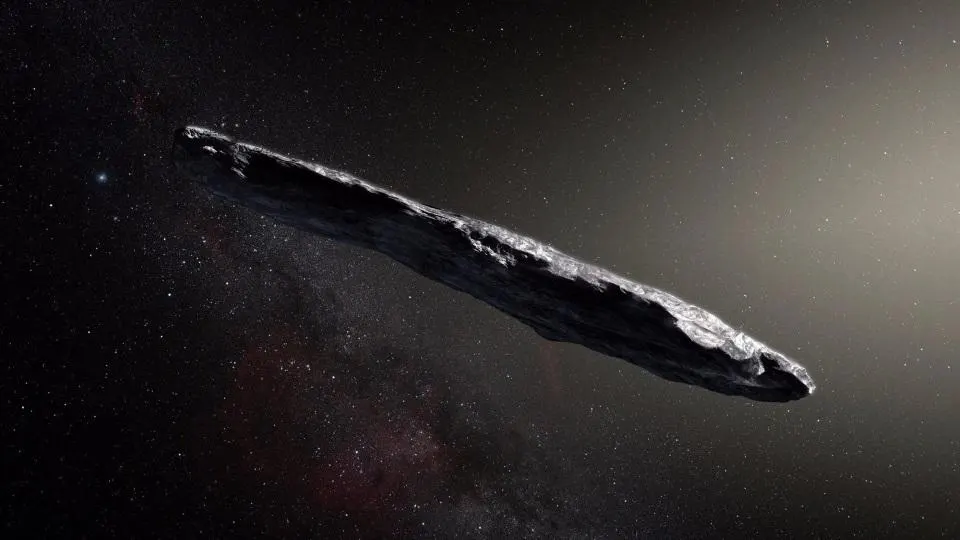
We know from the Double Asteroid Redirection Test that a rocket can deflect an asteroid from its path by hitting it at high velocity. But for some time, scientists have predicted that only a nuclear blast would be sufficient to deflect a kilometer-sized asteroid. Computer simulations agree that it will work. Figuring out how to test it in a lab has been a lot harder.
Nuclear blast deflection
Discussions of nuclear blast deflection tend to center on the shock wave from the explosion changing the orbit of an asteroid. Nathan Moore and his team at Sandia National Laboratories focused on a different tool in the nuclear explosion arsenal.
Nuclear blasts release large quantities of X-rays. These energetic photons dissociate (the process of breaking up a compound into simpler constituents) the surface of the asteroid itself, leaving behind a gas that expands in every direction, including toward the rest of the asteroid. The initial shock wave is comprised of lighter gases, but this slower explosion would be made up of heavy, metallic particles. If the initial shock wave is a swarm of flies hitting a car windshield at high speed, the secondary X-ray explosion is a wall of geese. They might move slower, but they're going to do a lot more.
But testing this concept in space is prohibitively expensive. Worse, if we wait until a hazardous asteroid is already heading toward us, we run the risk of fracturing it into still-dangerous pieces without deflecting it. That means we need to imitate outer space conditions in labs on Earth. But how can we create a target that's free to move without friction?
X-ray scissors and a machine called Z
Nestled in the foothills of Albuquerque, New Mexico sits a machine called Z. It is the most powerful electromagnetic pulse generator in the world. By firing it at argon gas, the Sandia team created a plasma in less than a millionth of a second, which released a bubble of X-rays at their asteroid sample.
When it came to mimicking the conditions of outer space, the team had to get creative. The tool they call "X-ray scissors" in their paper may conjure images of mind-bending microscopic technologies such as quantum optical scissors, but these scissors are refreshingly simple. Two pieces of minuscule metallic foil sit at the heart of the new experiment. From them, the team suspended their fake asteroid samples made of silica and quartz. When the X-rays hit the asteroid sample, they dissociate the foil as well. For just a shred of a second, the sample hangs suspended in space, unaffected by the drag of anything around it, pummeled by X-rays.
The team found that in that short time, the asteroid samples accelerated to about 70 meters per second. Through calculations, they showed that a stronger X-ray blast from a real nuclear explosion could deflect asteroids multiple kilometers across, the kind that wiped out the dinosaurs.
Best of all, the team's X-ray scissors will allow ground-based testing on all kinds of asteroid materials. If an asteroid suddenly heads our way, we'll have the technology and the practice to deflect it without shattering it.
Very little information is available about the various spy satellites orbiting our planet. But some of them have been caught on camera. Amateur astronomer Felix Schofbanker spent months tracking them down.
Governments use various classified spacecraft to intercept radio transmissions, detect missiles, scan Earth, and look in detail at areas of interest to the owners. The mystery of spy satellites attracts people like Shofbanker, who try to catch photos of them.
"My images have revealed a few things that either were not known or only speculated before," Schofbanker told Space.
The Austrian believes he has captured images of a fleet of US-government spy satellites known as Future Imagery Architecture (FIA) Radars, as well as some KH-11 satellites.

Undeclared capabilities
The FIA Radar, often known as Topaz, is a series of five satellites. Made by Boeing, they take high-definition imagery of Earth and can be used by operators to track targets or keep an eye on foreign powers. The U.S. launched the first Topaz satellite in 2010, the last in 2018. They have never declared the full capabilities of the group of satellites, but we know that Topaz 1 contains a nuclear power system, an altitude control system, and a cylindrical monocoque aluminum structure.
Schofbank could not work out which of the five satellites he saw.
"From my images, I conclude that these satellites have a parabolic mesh antenna, that is roughly 12m in diameter, and two solar panels with a roughly 10m wingspan. There is another bright object between the solar panels that I interpret as an up-and-downlink antenna, though this also might be something else," Schofbank said.
Like Hubble, but facing Earth
The KH-11 satellites convert light into electronic signals and can identify objects on Earth that are just three inches long.
"They are somewhat similar to the Hubble Space Telescope, but optimized to look down to Earth, instead of studying space," Schofbanker said.

The first KH-11 launched in 1976. At the time they were a breakthrough, allowing for intelligence services to use satellite captured imagery in real time. Before this, there was a delay of days or weeks.
Though the original KH-11 is no longer in orbit, four others remain.
"They launched the oldest one currently up there in 2005. It is a third-generation KH-11 with the name USA 186. The next two are called USA 224 and USA 245. These are the fourth generation [models] from 2011 and 2013. The newest one is a fifth-generation spacecraft from 2021 and is called USA 314," Schofbanker explained.
The U.S. has had spy satellites since 1960. At the time they were primarily used to photograph the Soviet Union and China. They were successful in capturing imagery of Soviet medium, intermediate, and intercontinental ballistic missile launching facilities. Now the U.S. has launched over 200 spy-satellites into space.
The Earth: a ringed planet, much like Saturn, surrounded by a hula hoop of asteroids. The summit of Mount Everest: a tropical, vibrant paradise replete with frolicking shellfish and warm waters encouraging plentiful life.
At least, that's how it was 465 million years ago in the middle of a period in Earth's history called the Ordovician. Then, the rocks that now make up the top of Everest sat at the bottom of a shallow sea.
Five hundred million years ago at the dawn of the Ordovician, vertebrates had just developed. By the time it drew to a close around 440 million years ago, plants had crept out of the ocean and spread across land for the first time, blanketing the world in green.
The Earth's rings are a new addition to this picture, proposed in Earth and Planetary Science Letters by paleo-geologists from the University of Monash in Australia.

Meteor rain that lasted 40 million years

Somewhere in the middle of the Ordovician Period, meteors pounded the surface of the young Earth at a rate unprecedented since the Solar System's formation four billion years before.
It's hard to overstate how dramatic the Ordovician meteor event would have been if anything lived long enough to notice the change. Nothing did. Geologically short events are long enough for living things to evolve, go extinct, and still have time left over. A hypothetically immortal trilobite, however, would have noticed the average number of meteors hitting the warm waters of the Paleo-Tethys Ocean increasing by 100 or even 1,000 times, for 40 million years or so.
We know this because meteorites are rich in minerals like olivine. Olivine occurs far more in asteroids than on Earth. We find astonishing amounts of these minerals, and even some surviving impact craters, in rock from the middle of the Ordovician.
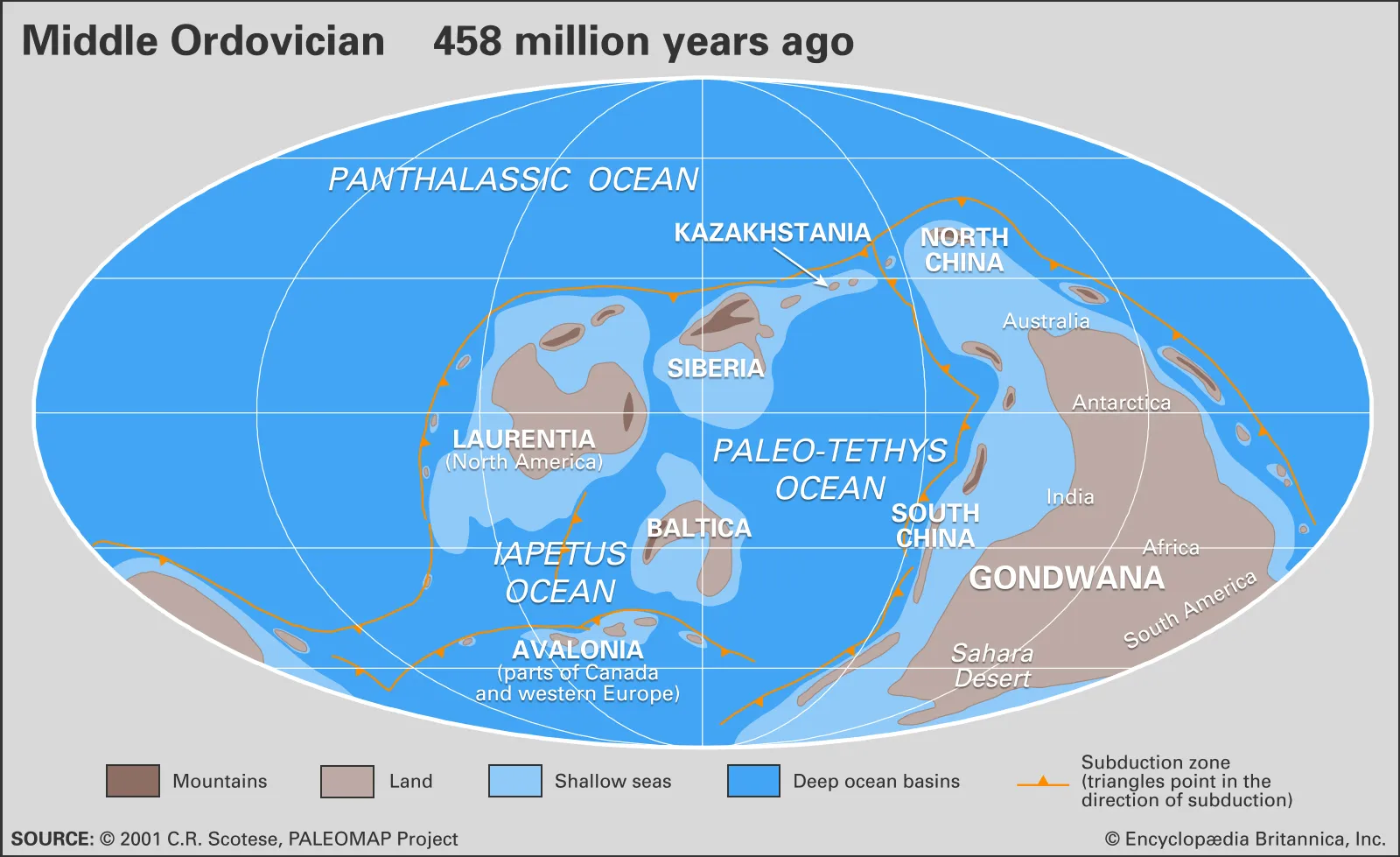
A new picture of the paleo-sky
In their new paper, the University of Monash team worked out what the latitudes of the 21 impact craters still visible from the Ordovician meteor event would have been 465 million years ago. They found that not one veered from the equator by more than 30°. Something must have forced meteors to fall around the equator.

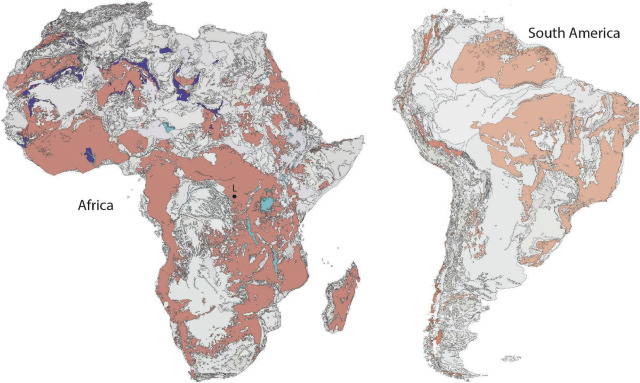
The team calculated the probability that meteors from the Asteroid Belt would randomly fall in this region and found that it was one in 400 million. Instead, they propose that a massive object on its way from the Asteroid Belt passed into the Earth's zone of influence. The Earth's gravity then tore it apart and bound the remnants in a tight orbit, forming a ring like the ones observed on all the outer planets, including Saturn.
With a ring of asteroids circling the Earth at its equator, it would only have been a matter of time before they all fell to the ground. A matter of 40 million years.
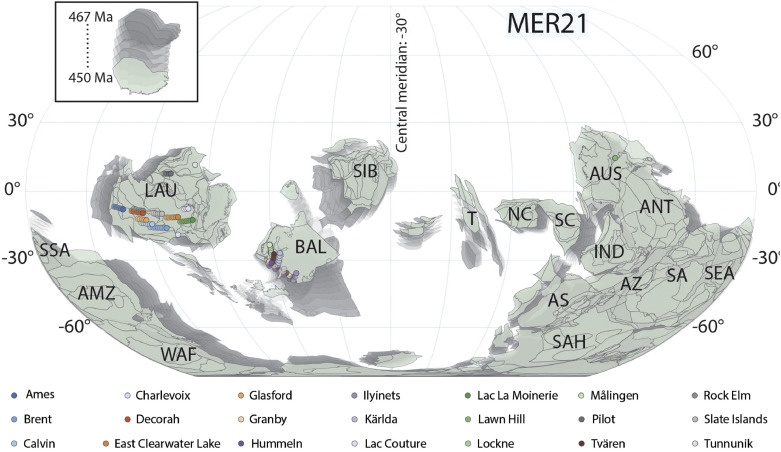
The icehouse world
In the late Ordovician, winter crept in. This wasn't a seasonal winter, but a winter no creature would outlive: the onset of an icehouse world.
The Earth goes through cycles of hot and cold. Hot periods, when the earth is known as a greenhouse world, boast luscious jungles at the North and South poles. The cold icehouse periods feature poles capped in ice sheets. We've been in an icehouse period for the last 34 million years, and we aren't due to leave it for millions of years more. That timeline drove climatologists to investigate why our ice caps are melting.
For most of the Ordovician, plants thrived in Antarctica. That changed when the temperature dropped by 8°C and ice crept over the poles. Winters got colder and summers hotter. And yet there was more than ten times as much carbon dioxide in the atmosphere as there is today, puzzling paleo-climatologists. Carbon dioxide retains heat. So how did the temperature in the southern hemisphere drop so suddenly?
The team from the University of Monash propose that the Earth's rings shaded the southern hemisphere from the Sun, while redirecting more sunlight toward the northern hemisphere. As the debris in the ring finally fell to the ground or escaped the Earth's gravity, the normal influx of sunlight returned and the poles turned green once more.
The ring was gone, and the Ordovician ended.
Joel Lapointe was scouring the Cote-Nord region of Quebec for potential camping spots when he saw something unusual. There appeared to be a 15km wide circle surrounding Marsal Lake. Intrigued by the shape and symmetry of the peculiar formation, Lapointe contacted geophysicist Pierre Rochette. Rochette was immediately interested and put together a team to examine the site more closely.
"Looking at the topography, it’s very suggestive of impact," Rochette told CBC. If they are correct it will be the first crater discovery since 2013. The satellite images suggest a 200-300m difference in altitude between the rim and base of the circular site.
Canada, a crater hotspot
We have only found 200 craters globally and 31 of them are in Canada.
"It’s quite easy with Google Earth to find structures that are circular or semi-circular in origin. Nine times out of 10 they’re not [craters]," Earth sciences professor, Gordon Osinski explained.
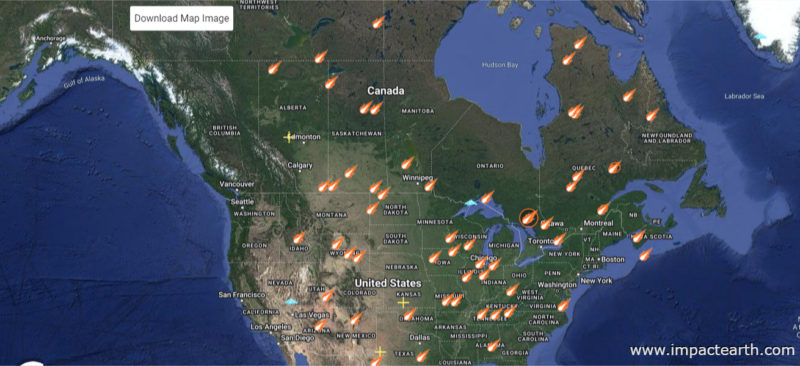
Despite the odds, the team is confident their investigation will prove this is an impact site. They are analyzing the first samples from the site and have already discovered that some contain the mineral zircon. Zircon forms after major impact events.
Rochette believes a meteorite may have formed the ring of small mountains surrounding Marsel Lake.
Shatter cones are the key
"Based on the already available preliminary evidence, Lake Marsal seems to be a serious candidate to become the 11th confirmed impact structure from Quebec," researchers wrote in an analysis presented at the 86th Annual Meeting of the Meteoritical Society 2024.
The key to proving this site is the real deal is shatter cones. These are fractures that form in the bedrock beneath meteorite impact craters. "Those are essentially unequivocal evidence of meteorite impact," Osinski said.
The team hopes to visit the site in 2025 and carry out more tests. If it is an impact site then the next step will be figuring out when the meteorite struck Earth.
"That's the wonderful thing about impact craters. We get to have this link between Earth and the outside universe," researcher Tara Hayden wrote.
Asteroid hunter Jacqueline Fazekas started the evening of Sept. 4, 2024, much like she spends half of every lunar month: seated in front of the computer monitor at Mt. Lemmon Observatory near Tucson, Arizona. She cycled the telescope between different sections of the sky, looking for any dots in motion.
Fazekas had noticed moving objects before and sent them to the Minor Planet Center for follow-up, as per protocol. The faint smudge she noticed on Sept. 4 seemed to shift position across four exposures, so she sent its coordinates to the Minor Planet Center and continued her sky scans.
In the past, objects Fazekas submitted occasionally came back with a NASA hazard assessment estimating a 0.01% or 0.02% chance of hitting the Earth. This time was different. When NASA’s program released an alert for her little moving dot, the collision probability was 25%.

Observers around the world jumped to observe the asteroid, christened 2024 RW1. By midnight in Arizona, new data increased the probability of impact to 100%. As night crept into morning, planetary scientists had narrowed the location of impact to the island of Luzon in the Philippines, and the time to just after noon.
They identified something else as well. Though 2024 RW1 might be shocking in its sudden appearance, it wasn't dangerous. Only one meter in diameter, it would probably burn up on entry. Sure enough, at 12:40 pm local time, that's exactly what it did in the sky over Luzon, in the Philippines.
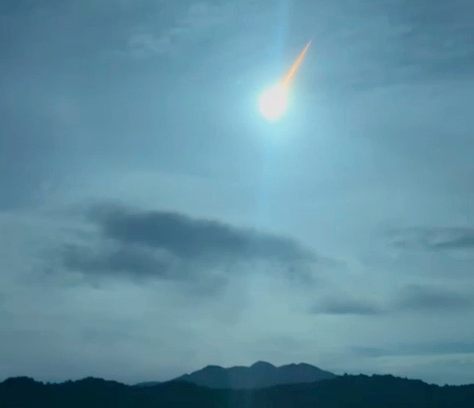
The way of the dinosaurs

Around 66 million years ago, an asteroid the size of San Francisco slammed into the warm, shallow waters off the coast of what is now southern Mexico. The impact melted the crust into magma and threw it high into the air. Beads of glass rained down across North America, and that was only the beginning of the world's problems. Tsunamis spread across the ocean and drowned the land while subterranean fires cast the Earth into ash-shrouded darkness. Three-quarters of fauna and flora went extinct.
This was the Creteaceous-Paleogene extinction event, the doorway between the reign of the dinosaurs and the reign of mammals. The Earth bears scars of this trauma. A thin band of iridium-rich rock sits sandwiched between the sedimentary remnants of the Cretaceous period, the final age of the dinosaurs, and the Paleogene Period, when mammals began to emerge as the dominant large animals.
When physicist Luis Alvarez and his team discovered the Cretaceous-Paleogene iridium boundary in 1980, their conclusion that an iridium-rich asteroid had hit the Earth and caused the extinction of the dinosaurs was far from certain. It wasn't until 1991 that evidence of the buried Chicxulub crater in southern Mexico catapulted the asteroid theory from the geological fringes to public school curricula.
You, me, and the apocalypse
The discoveries of the Cretaceous-Paleogene iridium boundary and the Chicxulub crater awoke scientists to the threat of impact events, but not politicians. With perfect timing, comet Shoemaker-Levy 9 arrived.
Its discoverers -- Carolyn Shoemaker, Eugene Shoemaker, and David Levy -- immediately knew it was strange. In a note to the International Astronomical Union summarizing their observations, astronomer Brian Marsden wrote that the comet was "most unusual in that it appeared as a dense, linear bar about one inch long and oriented roughly east-west." And almost as an afterthought: "The comet is located some four degrees from Jupiter, and the motion suggests that it may be near Jupiter's distance."

In fact, it wasn't merely near Jupiter's distance, but on a collision course. By the time the Shoemakers and Levy found it, the force of Jupiter's gravity had shredded it into twenty-one pieces, many larger than a kilometer across.
Astronomers watched with bated breath, hoping to see not only how violently the impact would affect Jupiter, but also clouds of ejecta that could give them a glimpse of inner atmospheric chemistry. They got everything they wanted and more. Meanwhile, the public got its first vision of what impactors could do to planets.
The scars of Shoemaker-Levy 9 outshone the Great Red Spot, Jupiter's famous cyclone region. Alongside the freckled impact zones that remained visible for months, the gas giant's atmosphere rocketed to 30,000°C, hotter than the temperature of its core. On Earth, governments around the world decided to pour a lot more money into Near Earth Object (NEO) detection.
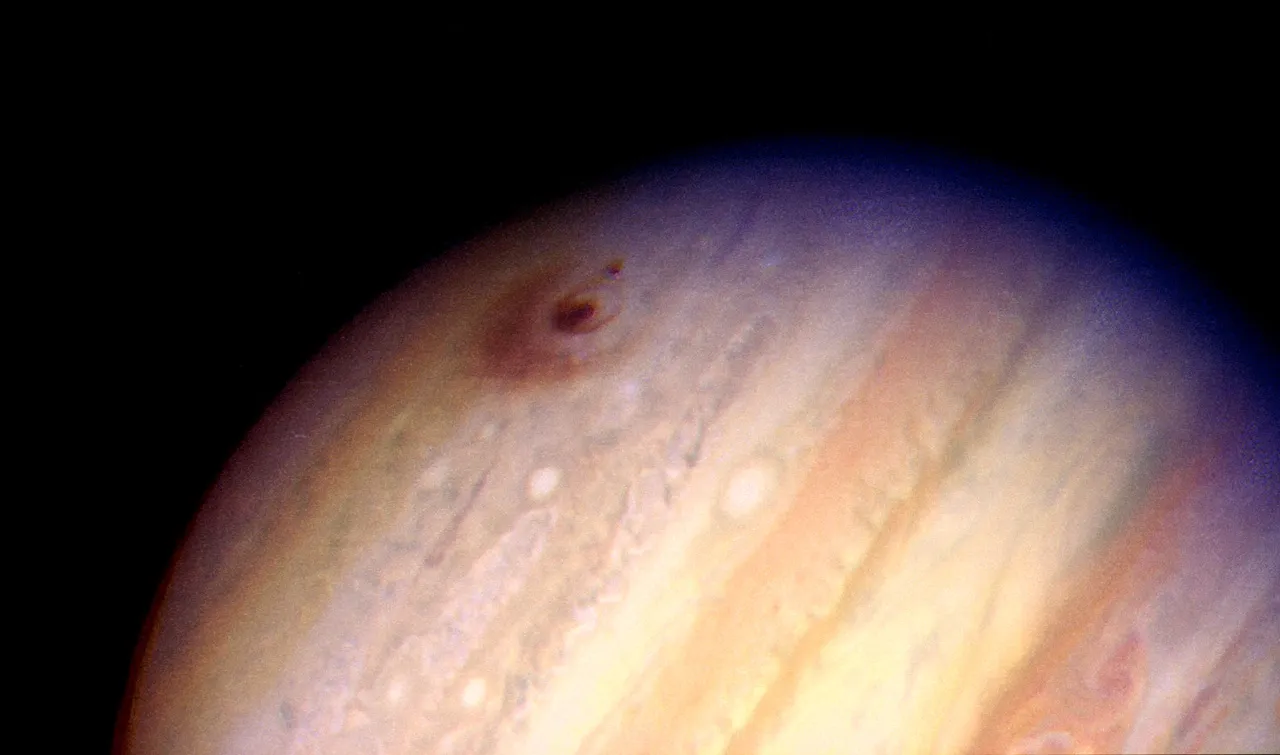
So how can humans tackle the awesome task of preventing mass extinction by asteroid? What does that work look like today, thirty years after the events that kick-started it? And what sort of person takes it on for a living?
Meet the asteroid hunters
This takes us back to people like Jacqueline Fazekas, the observer at the Catalina Sky Survey (CSS) who discovered asteroid 2024 RW1. Fazekas was only the ninth person to detect an asteroid before impact, and the first woman. Two years out of her undergraduate degree in astrophysics and space physics, her enthusiasm shines through when she describes her work. But it's not just the observing she loves, she's a regular tour guide at the Mt. Lemmon Sky Center, and is working towards a PhD in curriculum design and teaching.
"I want people to realize that anyone can do these things," Fazekas says of her historic discovery.
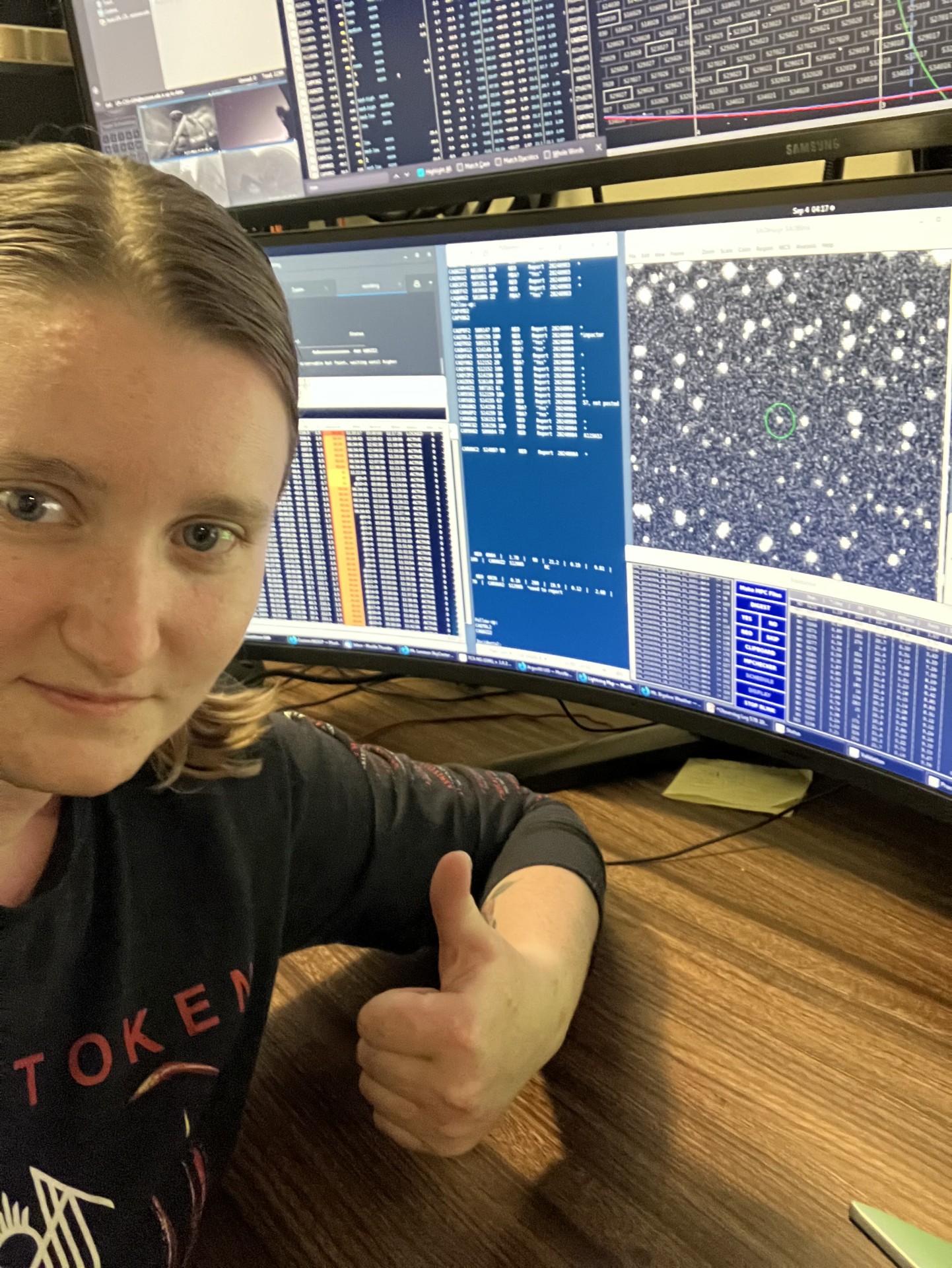
Anyone she inspires to get involved with NEO tracking will be joining a winning team. Of those nine asteroids detected before impact, over half hit in the 2020s, meaning our detection protocols are improving at breakneck speed.
That statistic is thanks to programs like CSS and its colleagues such as PanSTARRS in Hawaii, the Zwicky Transient Facility in California, and Tomo-e Gozen in Japan. Every night, observers around the world monitor scans like the ones in which Fazekas discovered 2024 RW1. Through their work, we now know the location and orbits of almost all massive, extinction-level asteroids. None of them are on a collision course.
The threat of mid-size asteroids
The asteroids that worry Carson Fuls, director of CSS, are medium-sized ones of about 120 meters across. These asteroids could destroy cities, but their size makes them hard to detect.
"There could be an object that we either don't see because it comes from the direction of the Sun...or we see it and we only have a day or two to do anything, in which case [governments] would try to evacuate people," Fuls said.
Fuls started at CSS as an observer like Fazekas. Over the years, he started working more on the engineering side, before deciding to pursue a Master's degree in Planetary Science at the University of Arizona. Right as he was set to start his graduate studies, the then-director of CSS announced his retirement. Fuls turned in an application as his successor and got the job.
Now a second-year PhD student, he juggles running CSS with scientific research on asteroids. Many people in his department find the combination bemusing, but his eclectic mix of work extends into CSS too. As director, he sets the direction of one of the most successful planetary defense programs on Earth. This week, though, he's trying to rent a porta-potty for observers while one of the sites is under renovation.
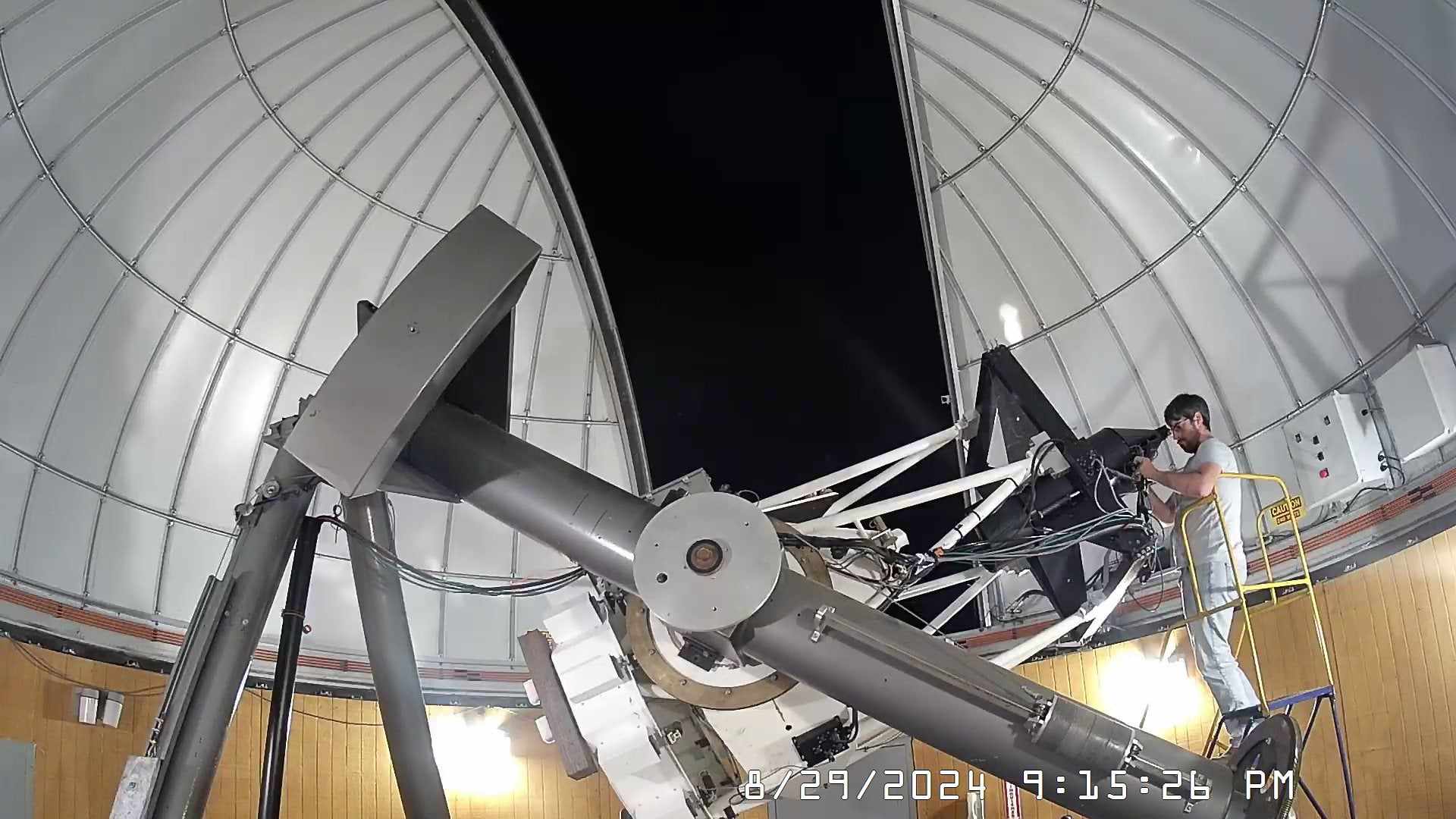
The biggest modern asteroid impact
The closest we've come to Fuls' nightmare scenario was in 2013 when a 20m asteroid exploded in the sky above the Russian city of Chelyabinsk. The resultant shock wave hospitalized 112 people but, astoundingly, killed no one.
Russia has a thriving illegal industry of car accident fraud, and many people set up dashboard cameras to prove their innocence if they become victims. No one knew the Chelyabinsk meteor was coming, but everyone's camera was rolling. That made the Chelyabinsk meteor one of the most well-recorded surprise astronomical events ever.

Astronomers didn't see the Chelyabinsk meteor beforehand because it arrived from the direction of the Sun. Asteroids don't radiate optical light, so we can only see them if they reflect sunlight. The Chelyabinsk meteor was silhouetted, not highlighted.
Although its unexpected explosion was violent, it happened high up in the atmosphere, sheltering the city below from the worst of the blast. A 120m asteroid would have made it to the ground, wiping out Chelyabinsk.
The chances of such an event get slimmer every day. Fuls estimates astronomers have located about 50% of the asteroids of that size. He wants to push that statistic past 90%, which he thinks can happen soon.
A new generation of powerful telescopes will soon be coming online, in particular the Legacy Survey of Space and Time (LSST) and NEO Surveyor. Based in Chile and scheduled to start in 2025, LSST will increase the number of known asteroids by a factor of 10 to 100. NEO Surveyor, meanwhile, will sit in outer space and watch for asteroids coming from the Sun's direction, filling in our last major blind spot. NASA forecasts NEO Surveyor's launch for 2027.
Soccer balls and cement
Once Fazekas and her colleagues have found an asteroid, they hand it off to people like Eileen Ryan. Asteroid orbits are complicated and long-term collision predictions require long-term observations. It's Ryan's job to watch asteroids until she's figured out where they're going and what they might do.
Ryan was the only woman in her graduating class of Rutgers physics majors. She didn't care. She wanted to study the solar system. After early research on planetary atmospheres, she began a PhD in the same asteroid mecca where Carson Fuls is currently a student: the Lunar and Planetary Lab at the University of Arizona. To supplement her classes, she signed on to help a researcher explore the effects of violent asteroid impact.
Her first assignment was simple: make a model asteroid. Ryan bought soccer balls, cut the tops off, and filled them with cement. Before long she was trekking to the vertical gun range at NASA Ames and firing her cement soccer balls at the ground in a vacuum tube. From there, she moved to computer simulations.
Stalking asteroids
In 2004, New Mexico Tech hired Ryan to build a 2.4m telescope at Magdalena Ridge Observatory. The build team consisted of four people. Ryan brought on her particle physicist husband, as well as a construction technician and an engineer.
At the time, there were no telescopes that could detect mid-size asteroids. When Ryan used hers to track an asteroid too faint for anyone else to observe, NASA agreed to fund the telescope's upkeep.
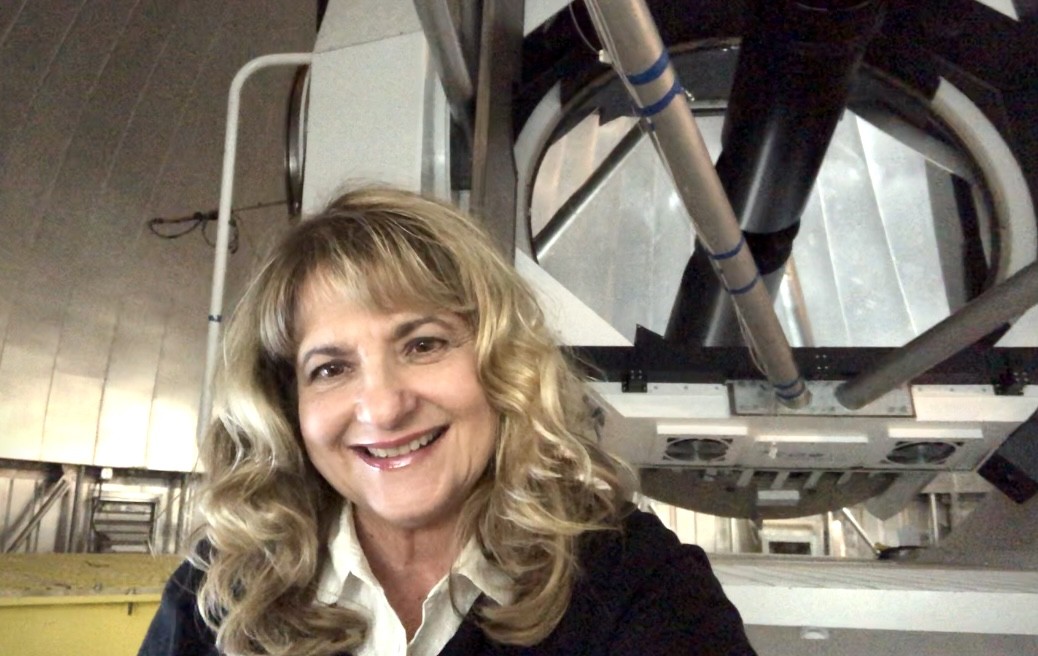
Now Ryan works in the middle ground of hazardous asteroid mitigation. She still runs lab impact experiments and computer simulations but also directs asteroid follow-up. Occasionally, asteroids bump into each other or other objects in the Solar System. Their orbit diverges. Once-harmless asteroids can enter a collision course overnight, and Ryan's there to find out when this happens.
On Sept. 26, 2022, a dense object slammed into the asteroid Dimorphos at 6 kilometers per second. Ryan and her team at Magdalena Ridge Observatory were watching. But this wasn't an ordinary orbital follow-up and the colliding object wasn't another piece of space debris. It was a 600kg chunk of metal, and NASA had sent it.
The eye of a needle
Like a sized-up version of Eileen Ryan’s soccer ball impacts, the Double Asteroid Redirection Test, or DART, was an outer space lab experiment. The idea: If a murderous asteroid is hurtling towards us, can we nudge it out of the way with a rocket? And what would happen to it afterward?
The DART spacecraft targeted an asteroid orbiting another, much larger asteroid. This makes follow-up easier since a small change in motion from a rocket impact is more noticeable in a very short orbit than a long one around the Sun. Dimorphos, DART's 270m target, orbits the much larger Didymos at 11km from Earth. But to even hit Dimorphos in the first place would take a Robin Hood shot. It occupies one-millionth of a degree in the night sky, the same size as an atom at arm's length.
One cloudy afternoon in my senior year of undergraduate astrophysics studies, I and the rest of my class sat and watched Dimorphos jitter forward on the projector screen. As the DART spacecraft and its camera sped toward the asteroid, the image reloaded every second to show a view closer by 6km. We held our breath in those last moments. When the final image came through, only a sliver at the top showed the gravelly surface of the asteroid.
The rest of the image was red. The DART spacecraft had struck Dimorphos, destroying itself before it could transmit the rest of the data.
NASA had threaded the eye of a needle and hit an asteroid 11 million kilometers from home.

Bullseye
Andy Rivkin, one of the DART investigation leads, pushed to stream the spacecraft's approach live even though it might miss.
"It was much more powerful streaming it," he says. Not only to take the general public along for the ride but also "to have the immediate results of people around the world with their telescopes seeing this crazy stuff happening."
Sure enough, Dimorphos brightened like a strobe right after DART hit it. Its shape changed, flattened like a piece of clay flung at a wall. And most importantly, teams including Ryan's confirmed that its orbit around Didymos is now 33 minutes and 15 seconds shorter.

While Rivkin's days used to be devoted to DART, including writing its official song, he now has a new baby: the European Space Agency's mission Hera. Set to launch in October 2024, Hera will head straight to Dimorphos to collect close-up data on its new orbit. This data will shape our playbook on how to redirect a potential asteroid away from the Earth.
Don't panic

"[Planetary defense] is kind of like smoke detectors in a house," Rivkin says, after listing reasons that asteroids are cool and not just scary (they're pieces of the nascent solar system that didn't make it into planets. We will probably walk on them one day, and -- despite ethical concerns -- we might even be able to mine them for precious metals). "The payoff of knowing is really high."
Carson Fuls agrees with both the enthusiasm and the optimism. "Asteroids are the only things out in space that you can actually hold in your hand," he says, referring to meteorite fragments. And being hit by an asteroid is "the one natural disaster we can prevent."
I ask Rivkin how he feels about asteroid apocalypse media. With a breath of laughter, he tells me he still hasn't been able to watch Don't Look Up. "It sounds like a three-hour-long stress dream for me."
But apocalyptic stories of a civilization-ending asteroid are rapidly becoming as obsolete as Star Trek's flip phone communicators. DART showed us that we can nudge large asteroids off their collision course. As our detection protocols improve over the next decade, even the sneakiest mid-size asteroids will arrive with several days' evacuation time. That's no different from a wildfire.
"We have the technology to avert [asteroid] disaster," says Ryan. "We still do not have the technology to stop a hurricane or an earthquake. We can't stop a forest fire. But we can stop an asteroid impact. We are not going to be the dinosaurs."

